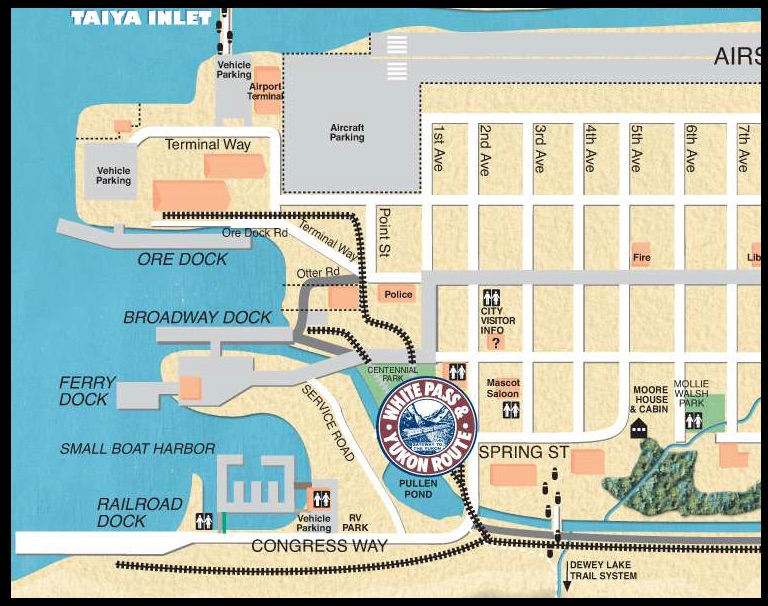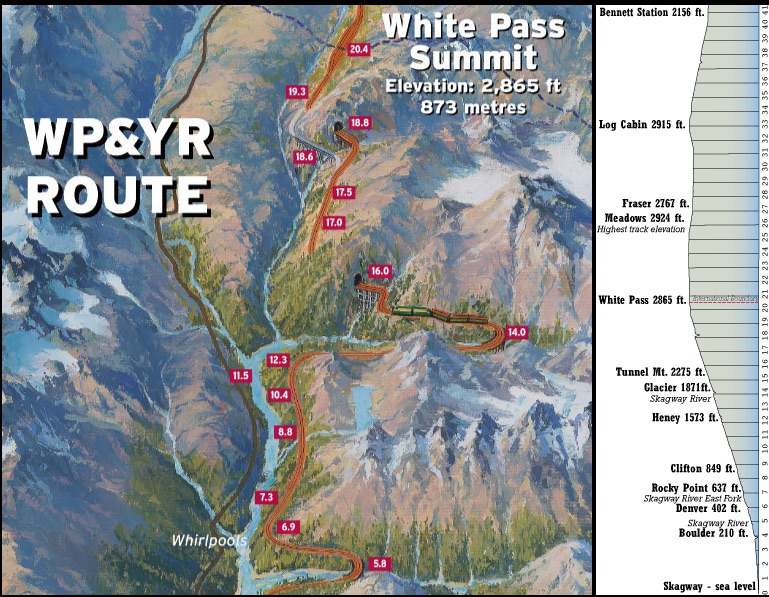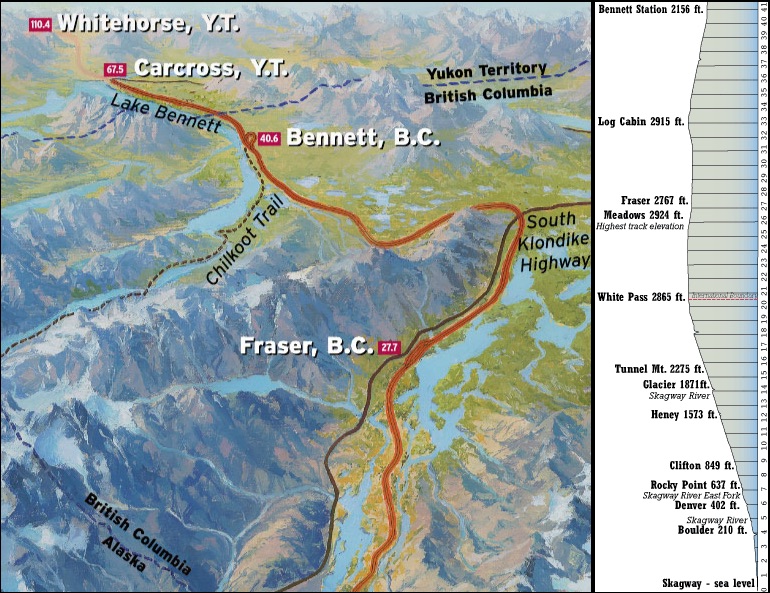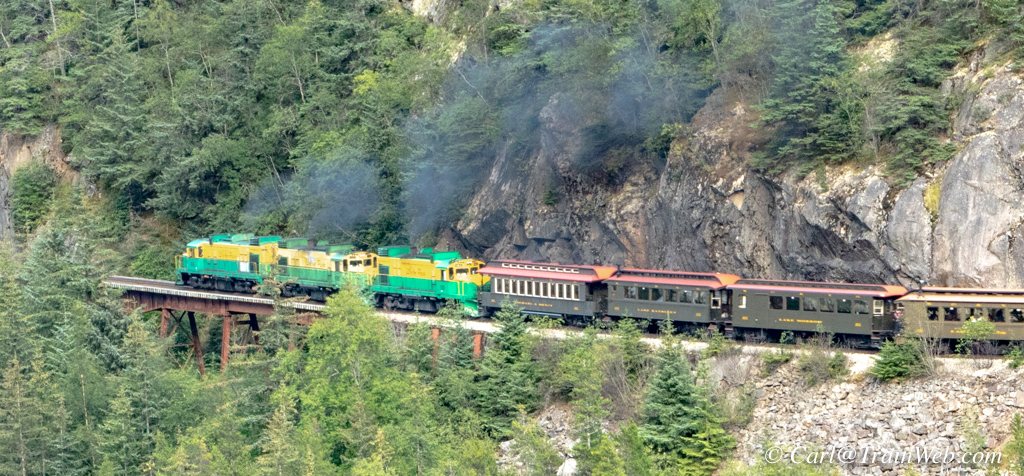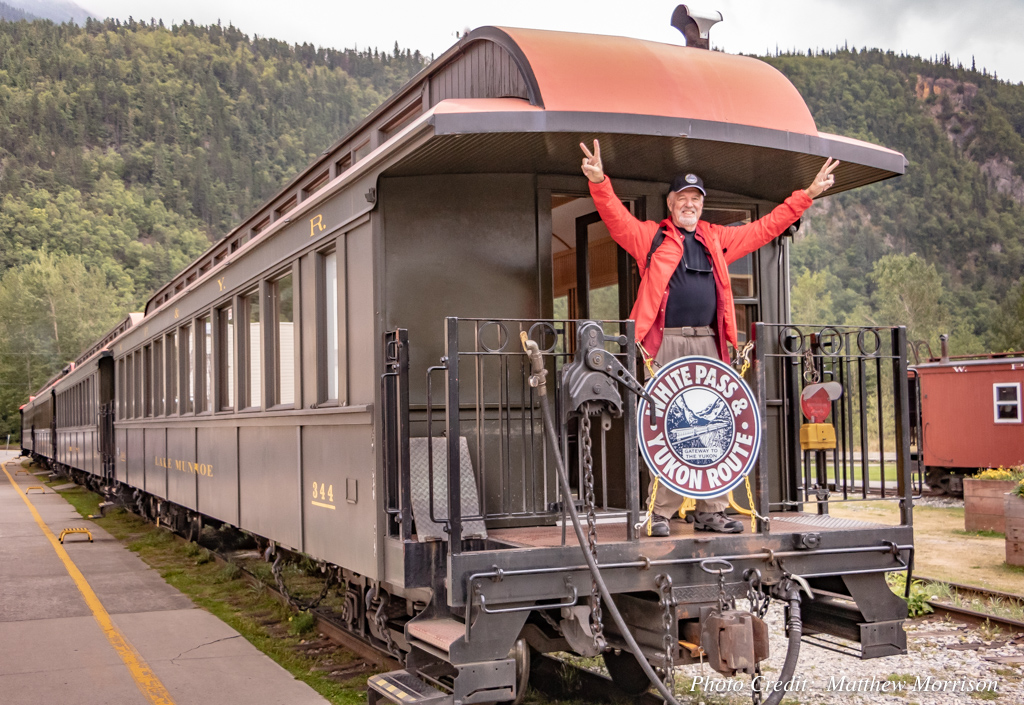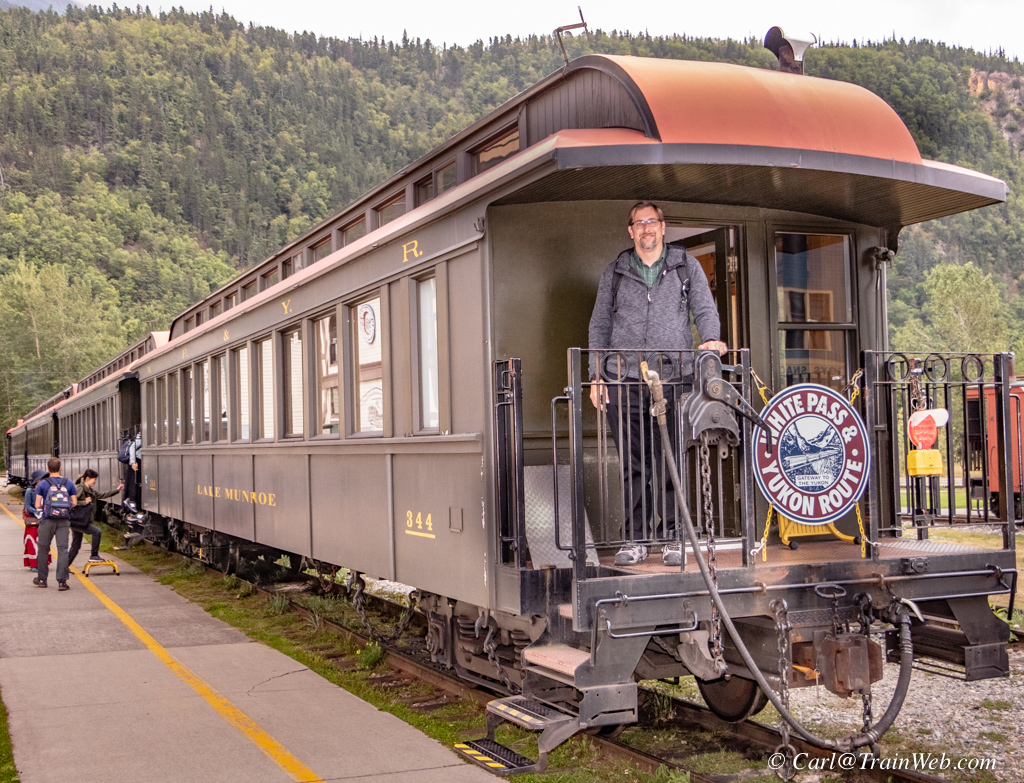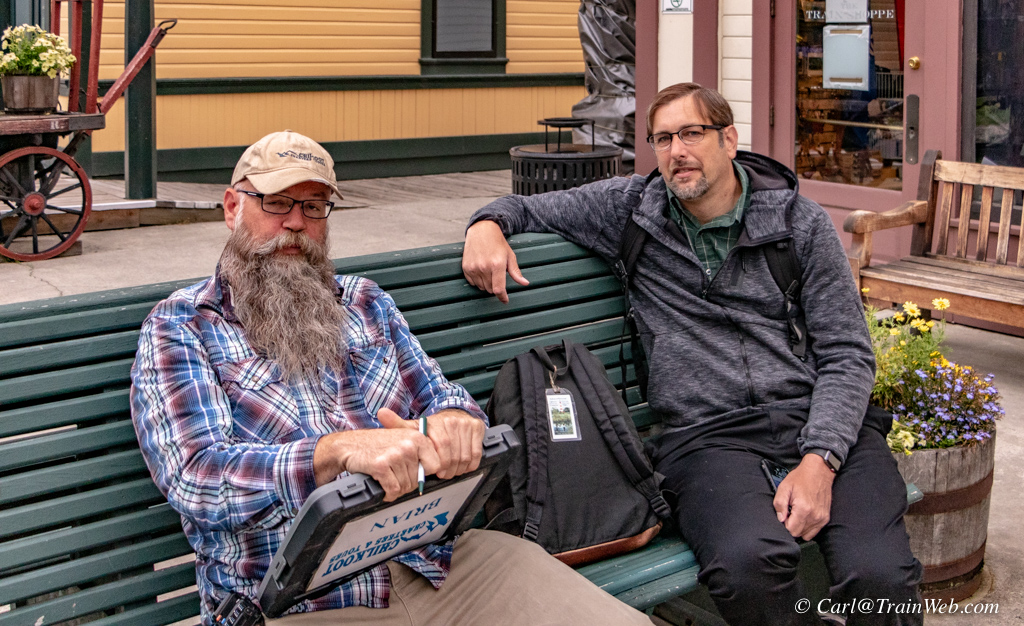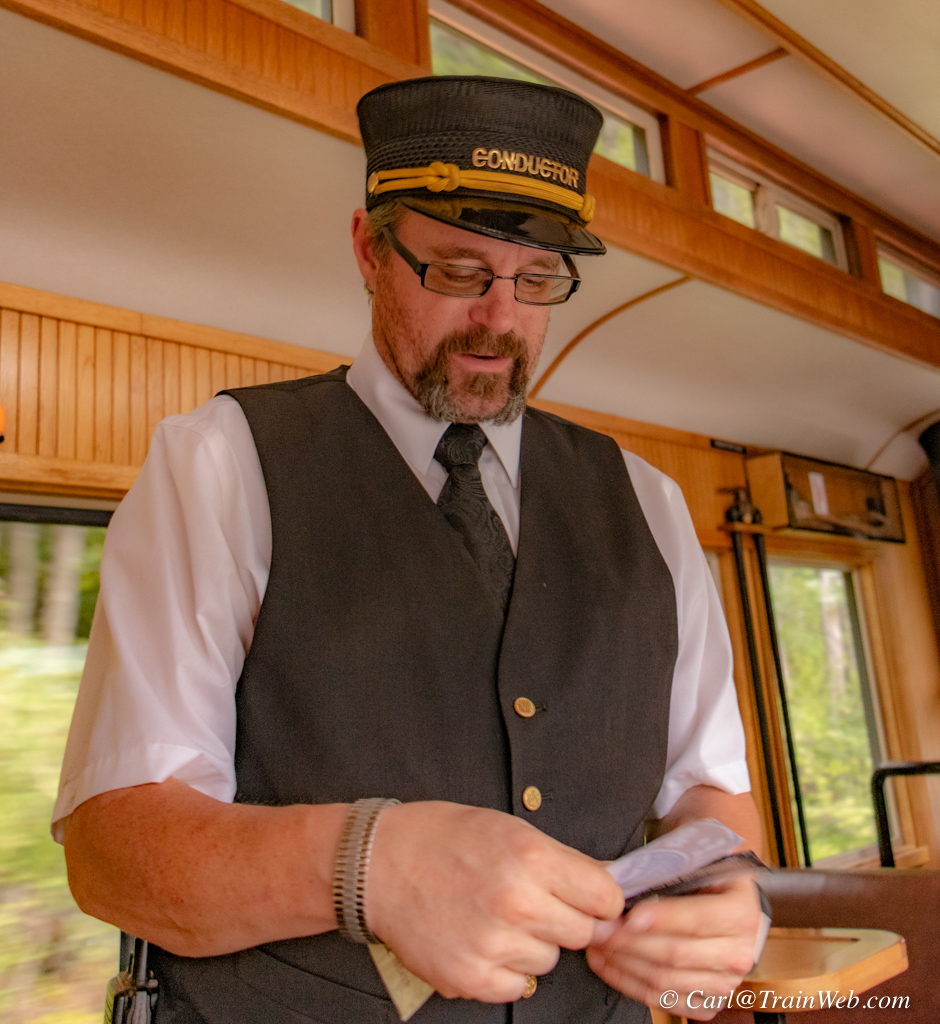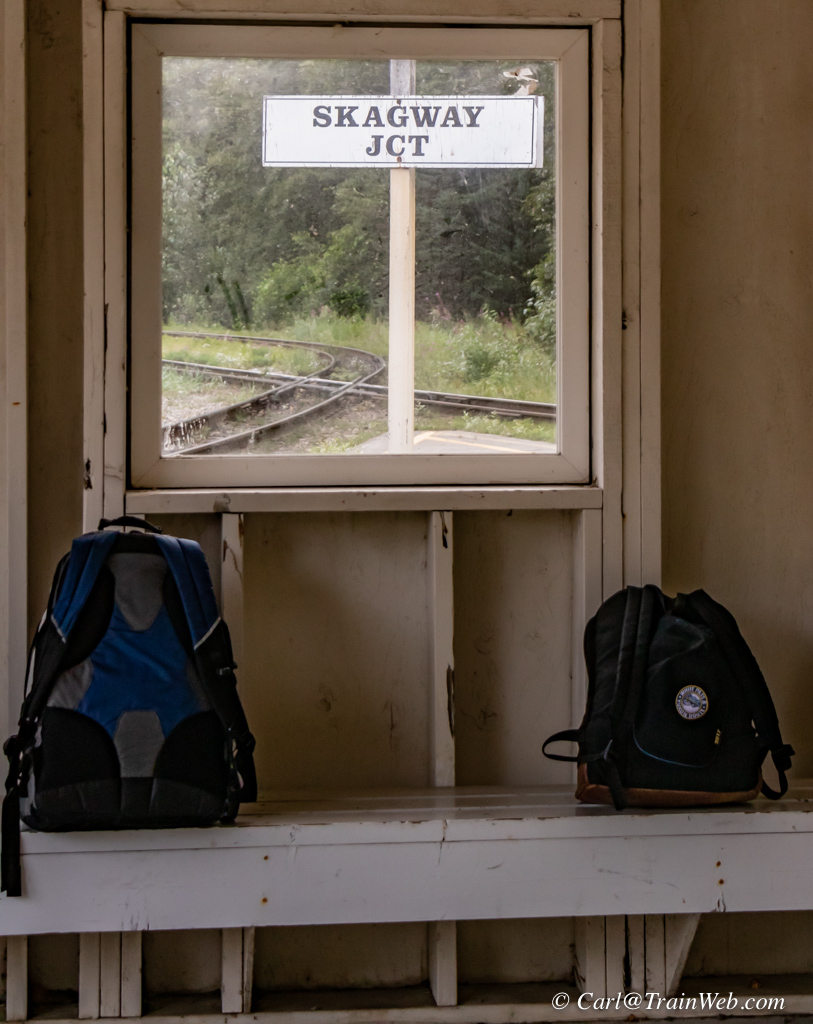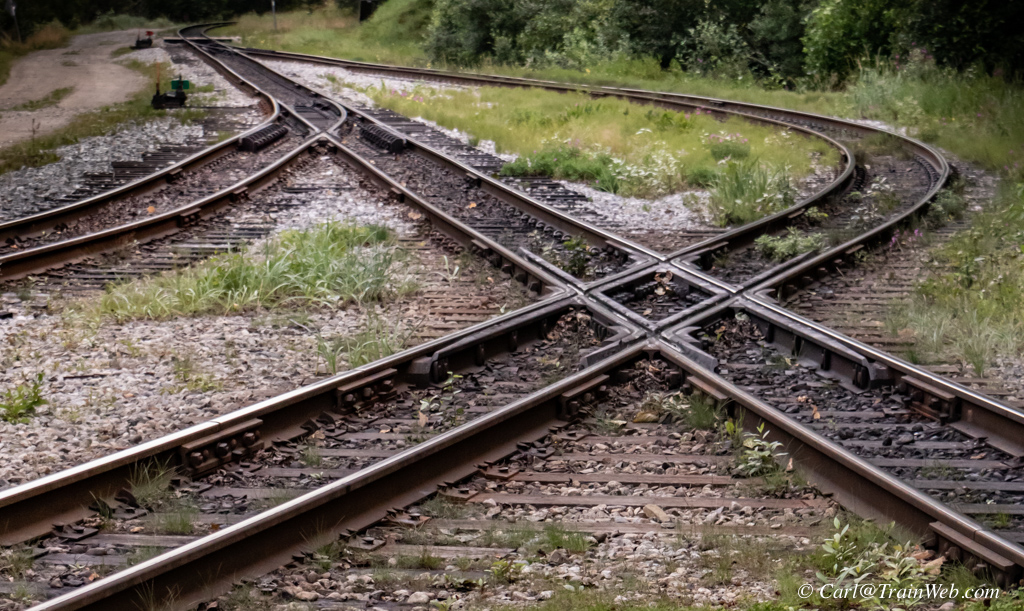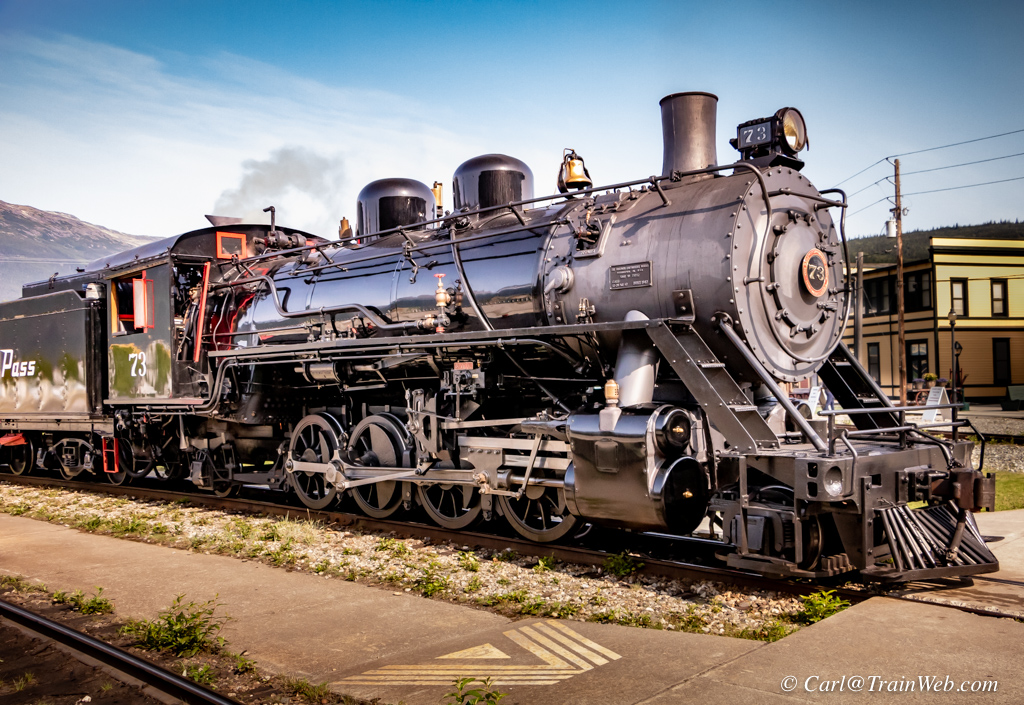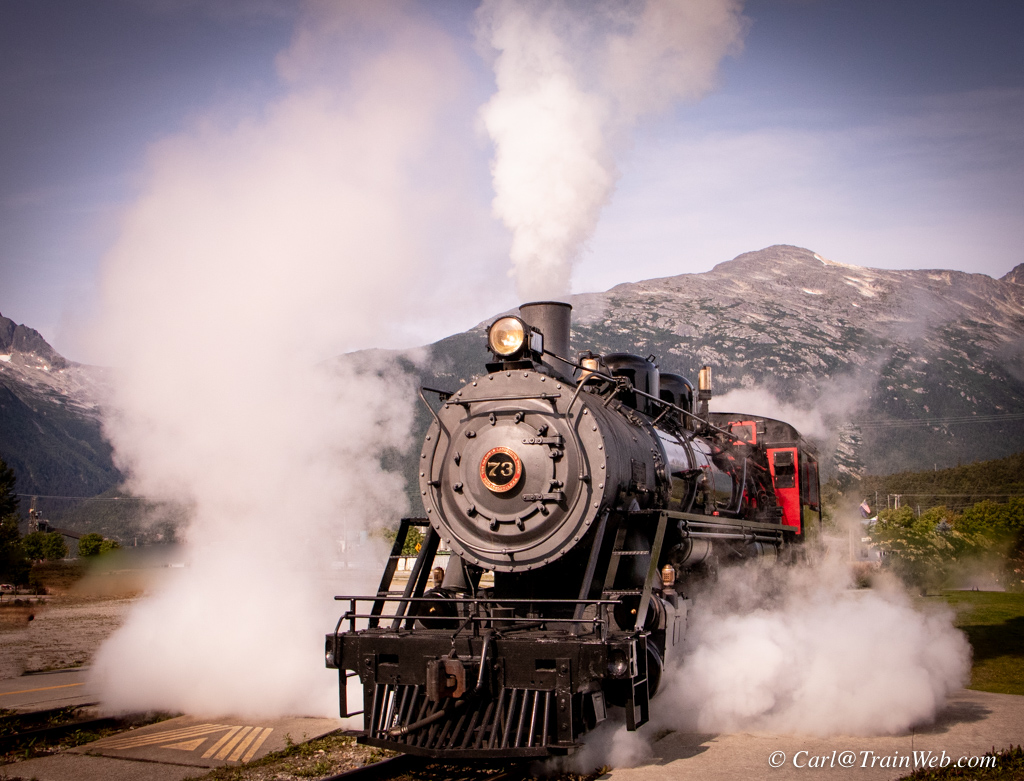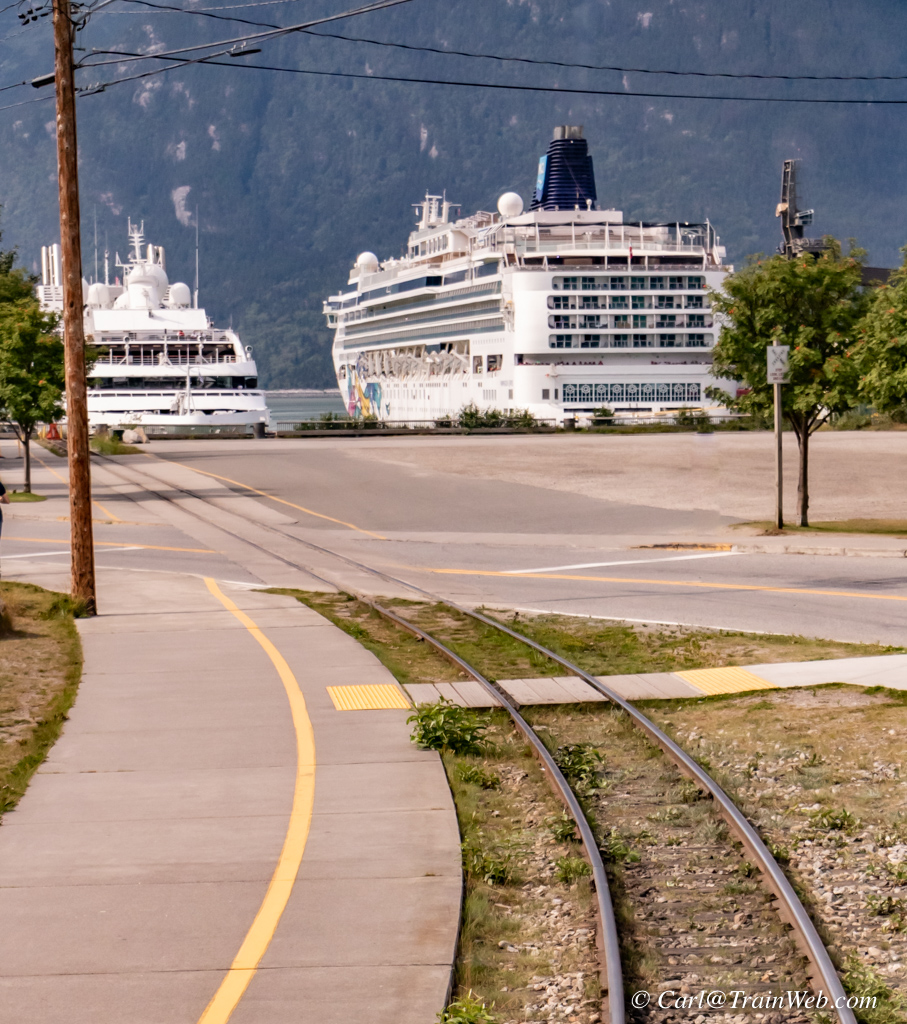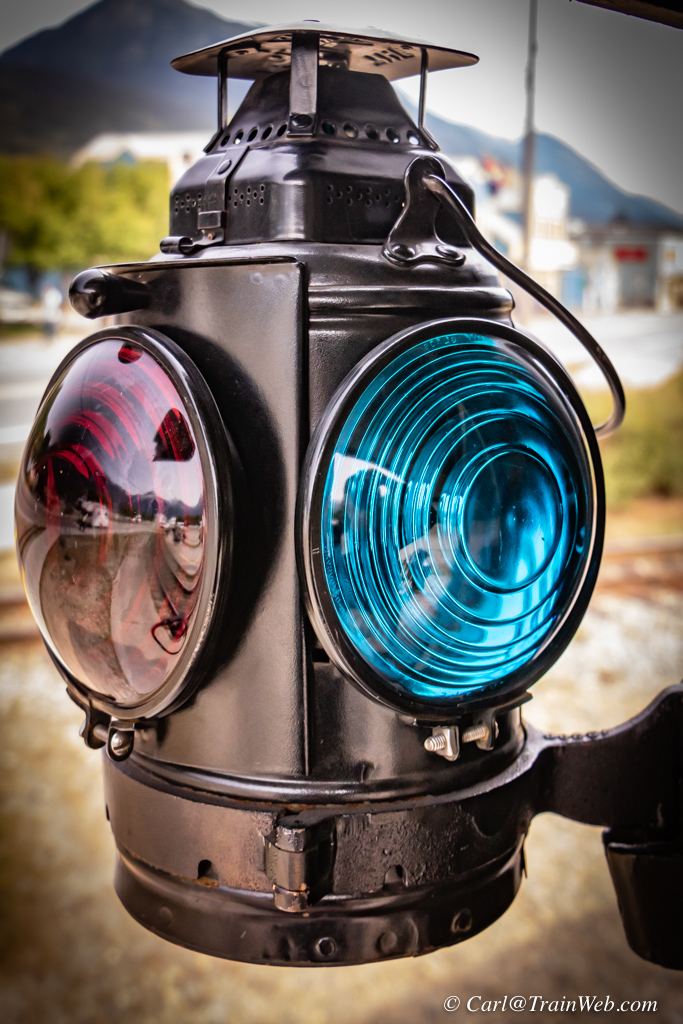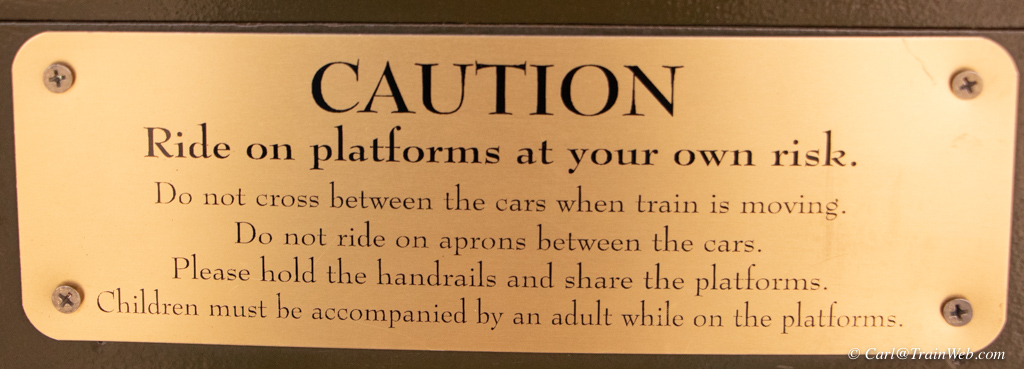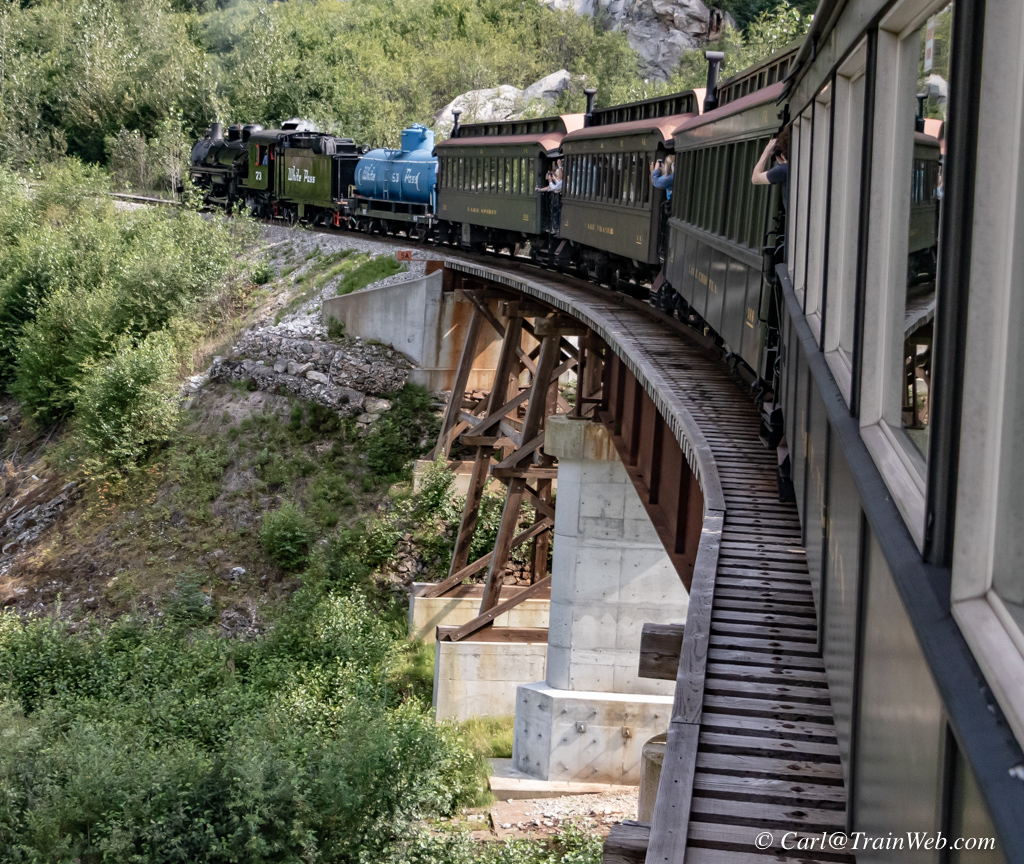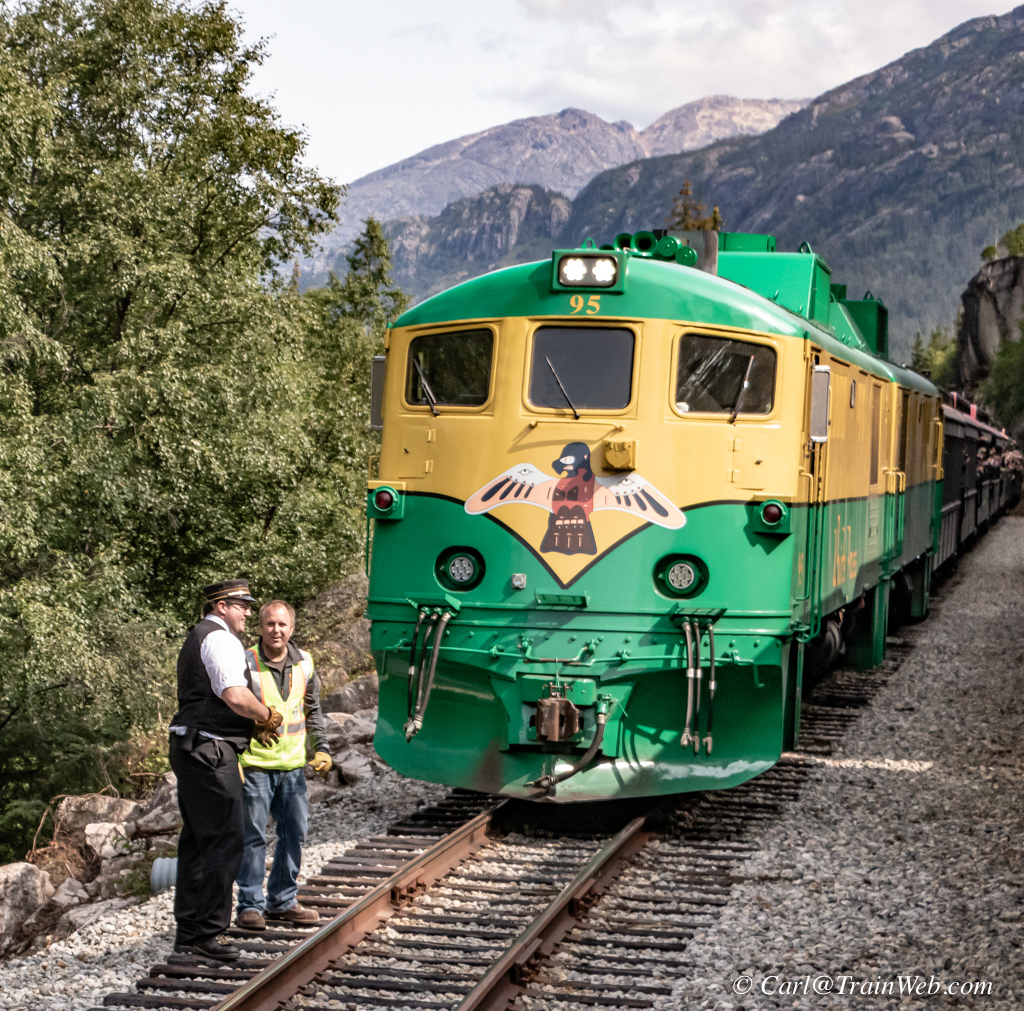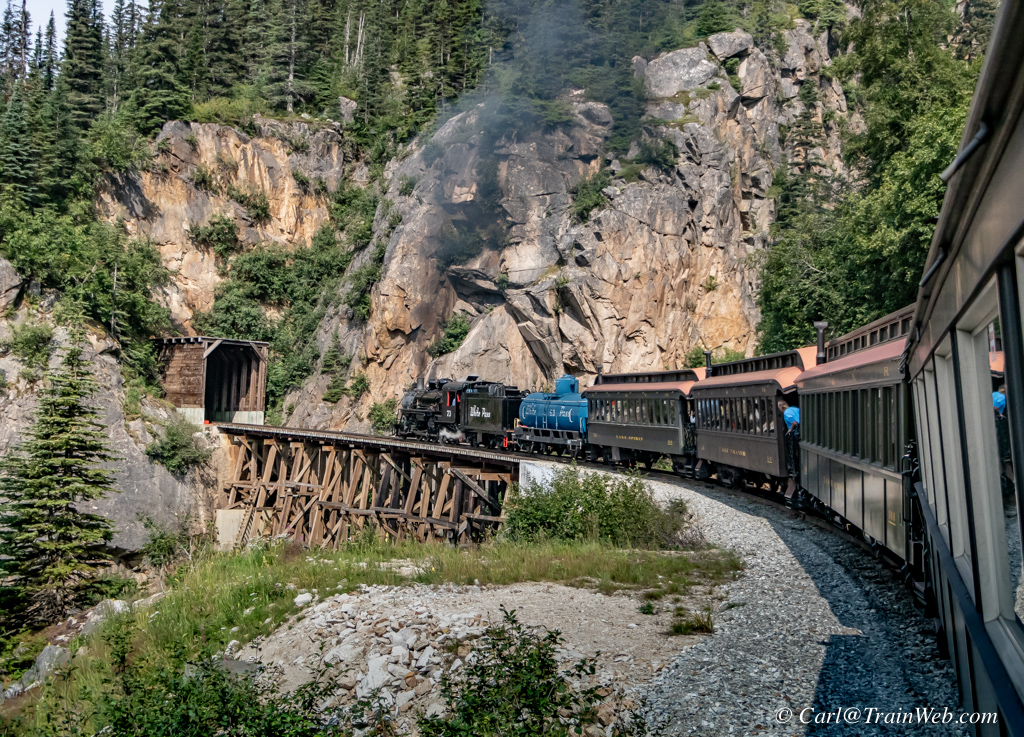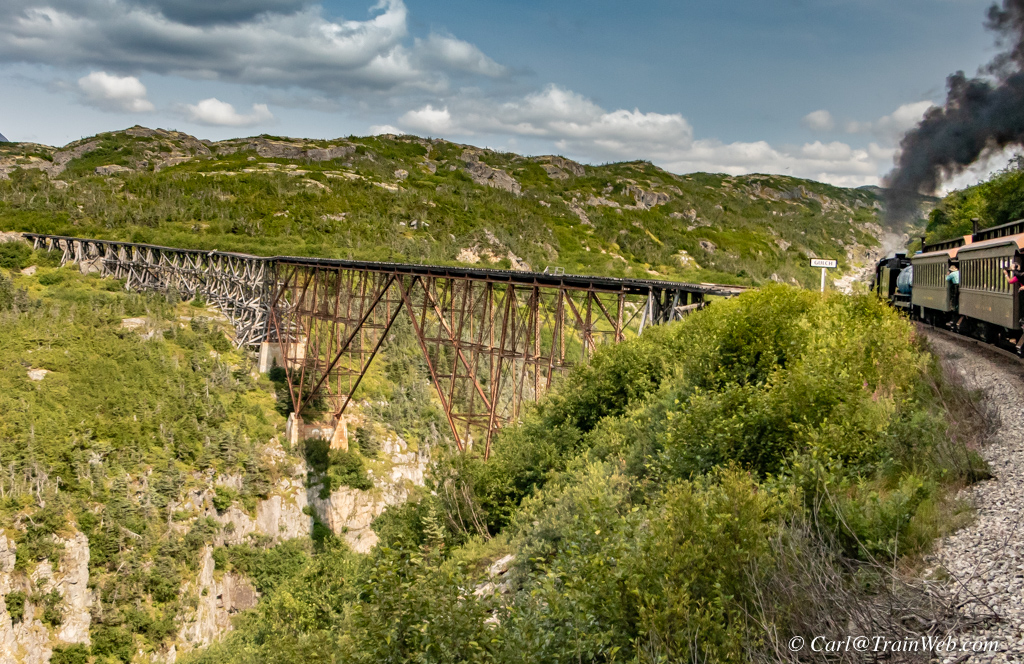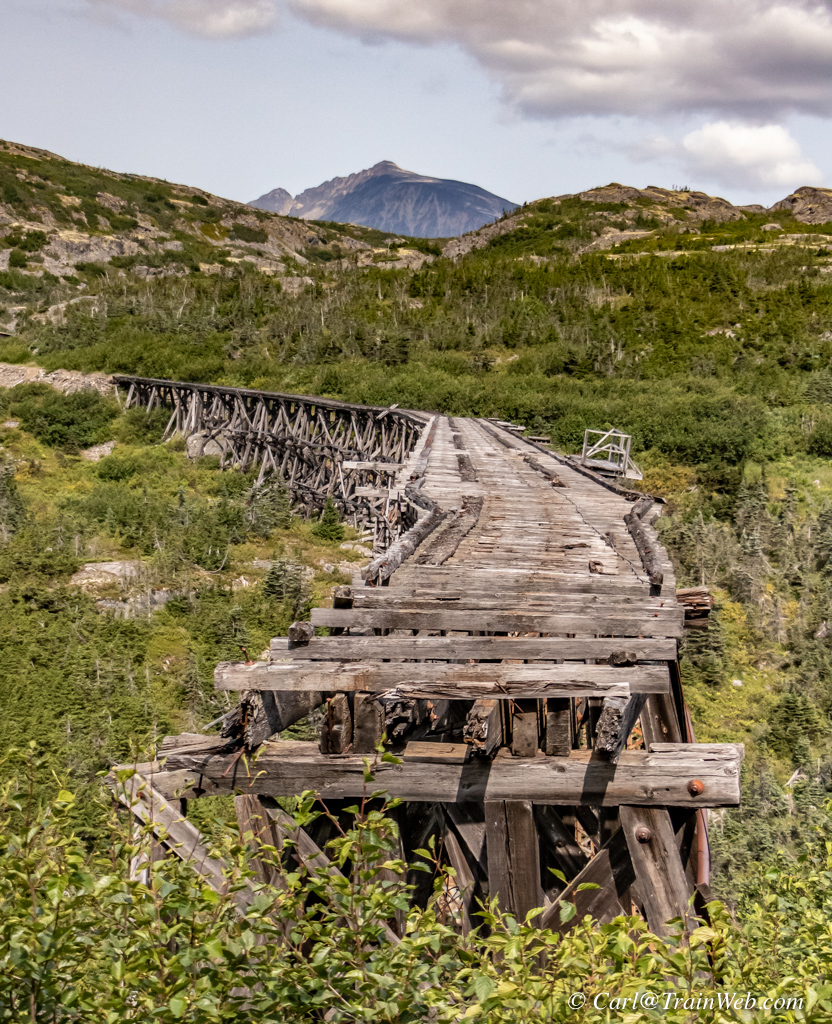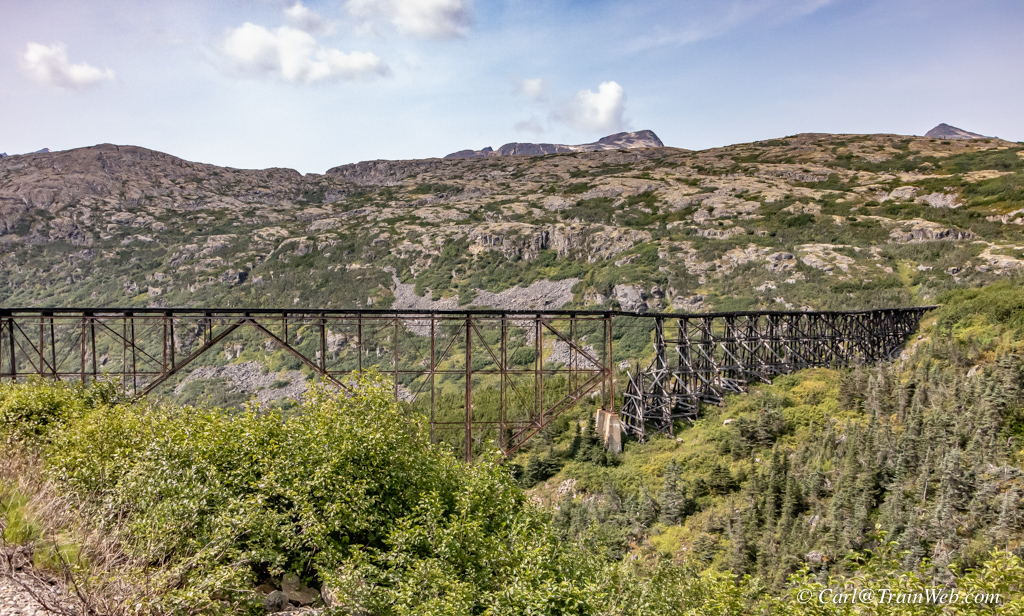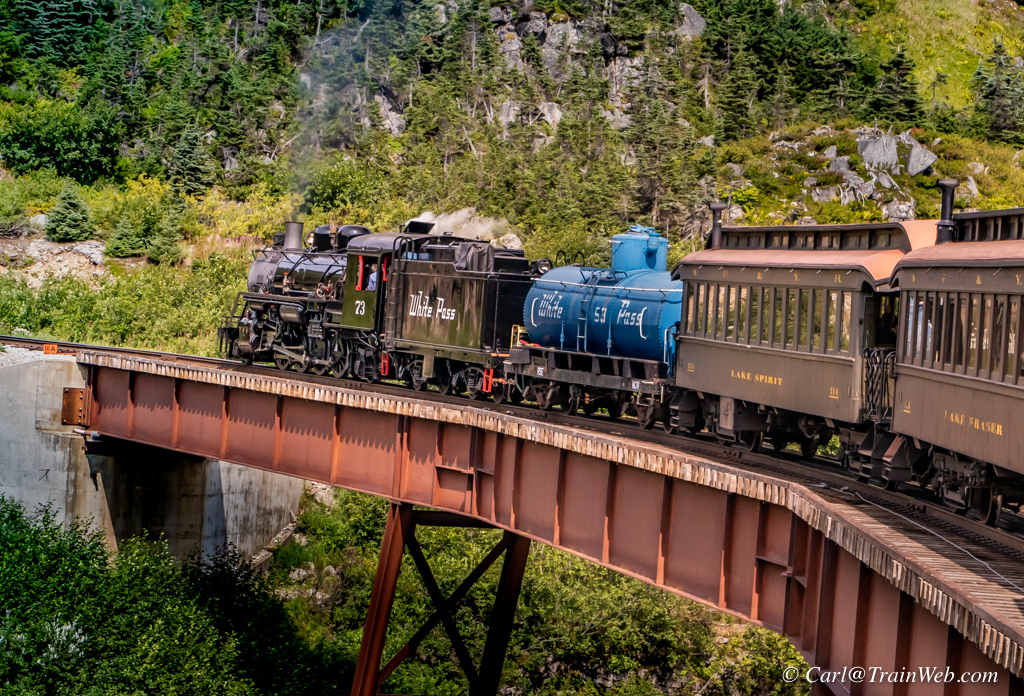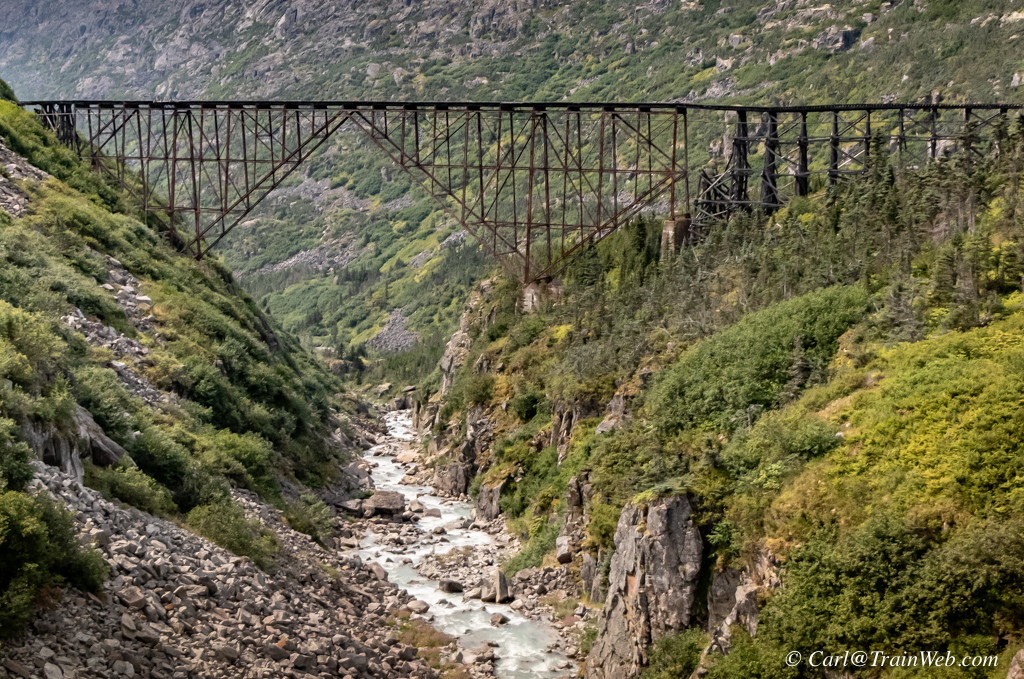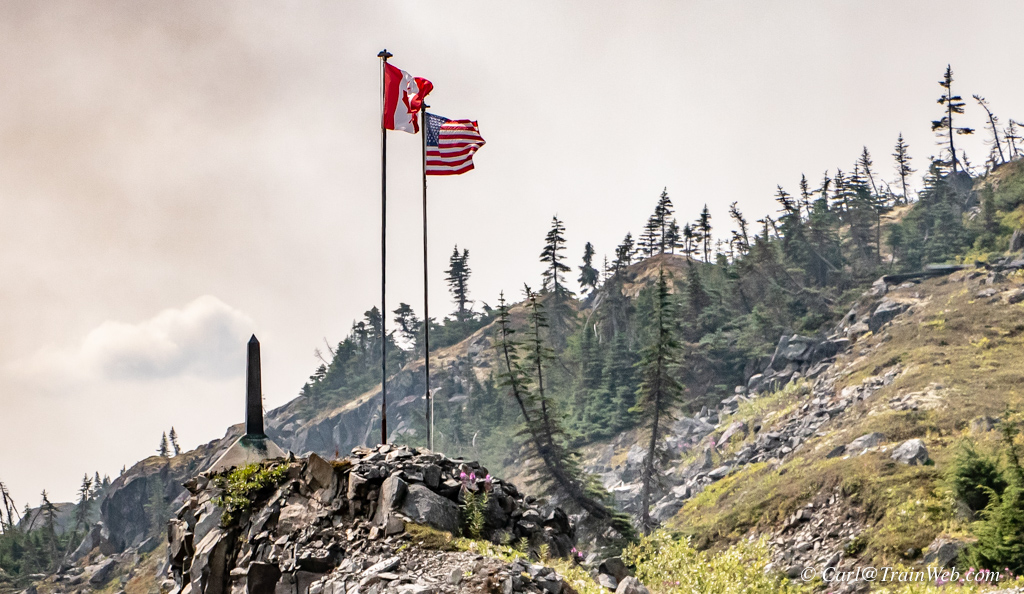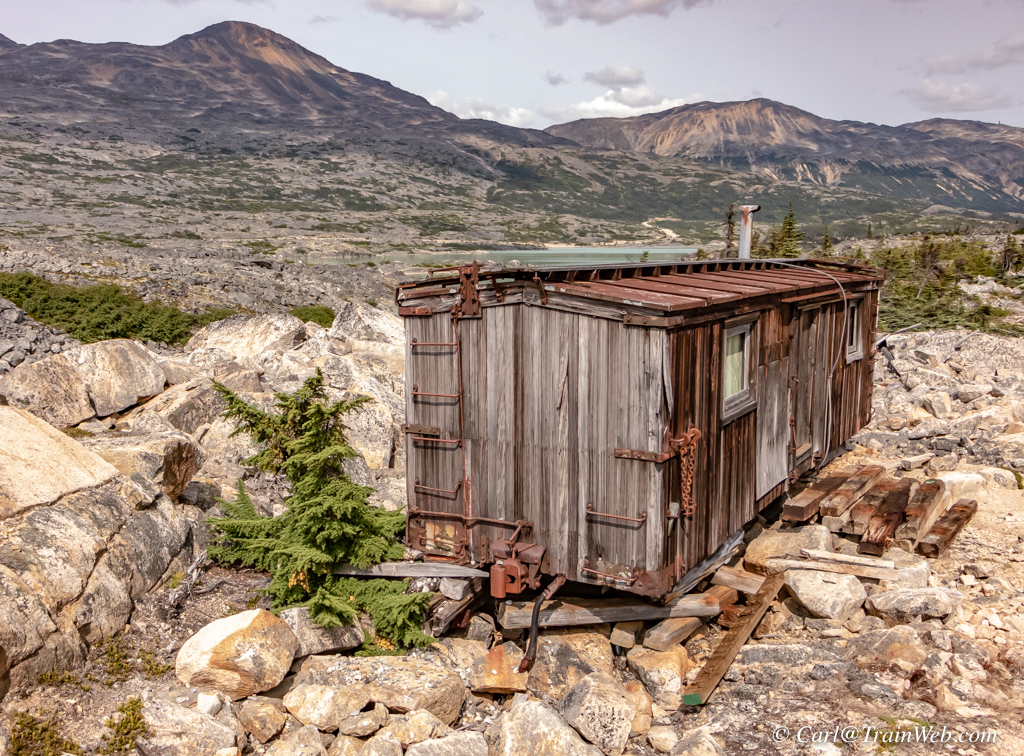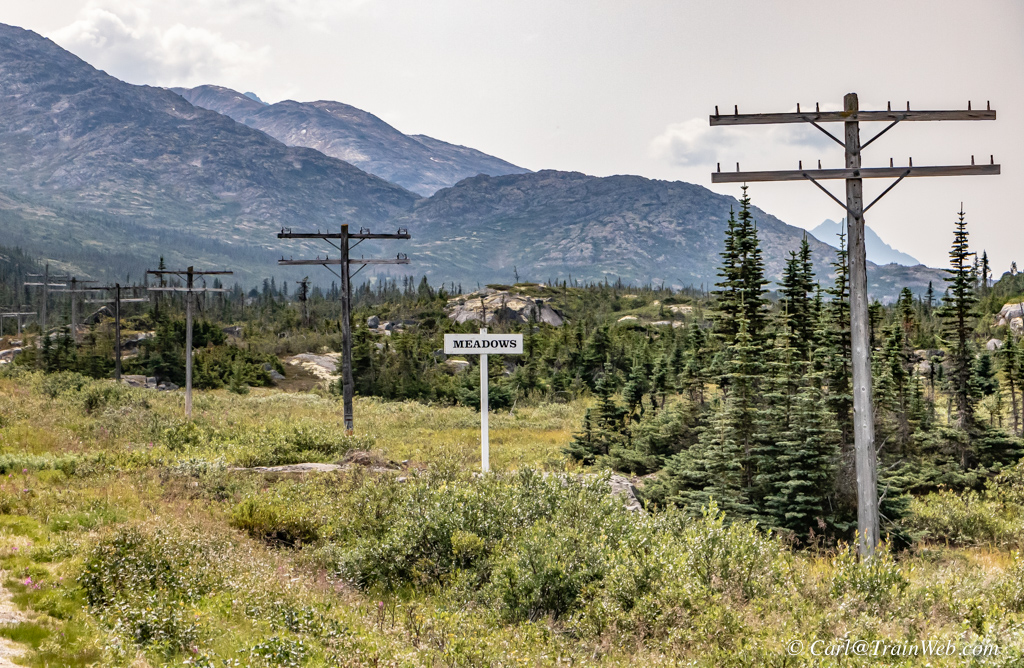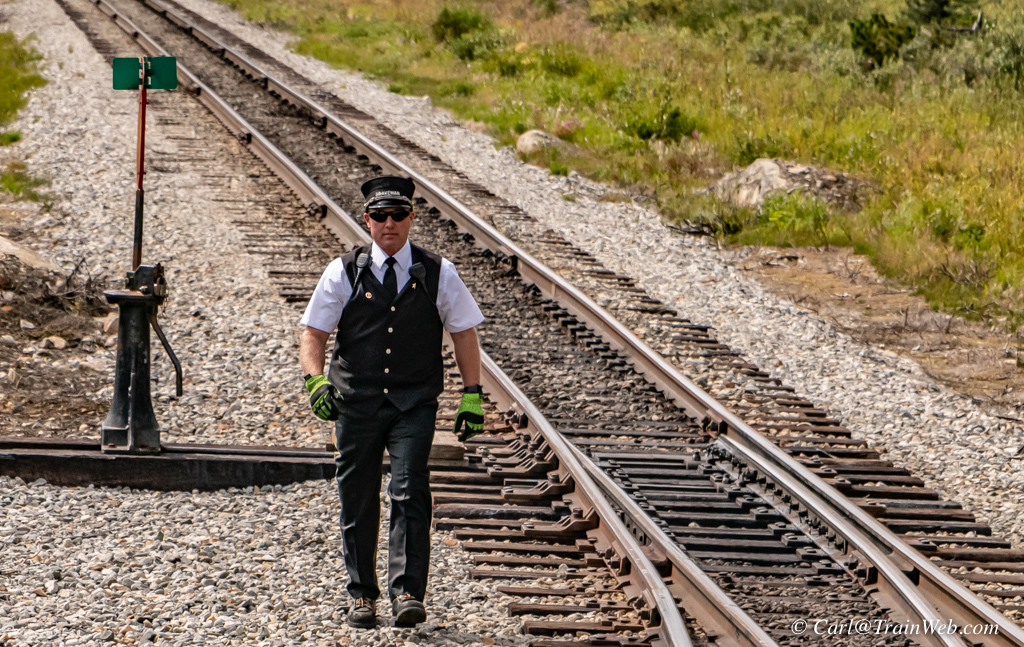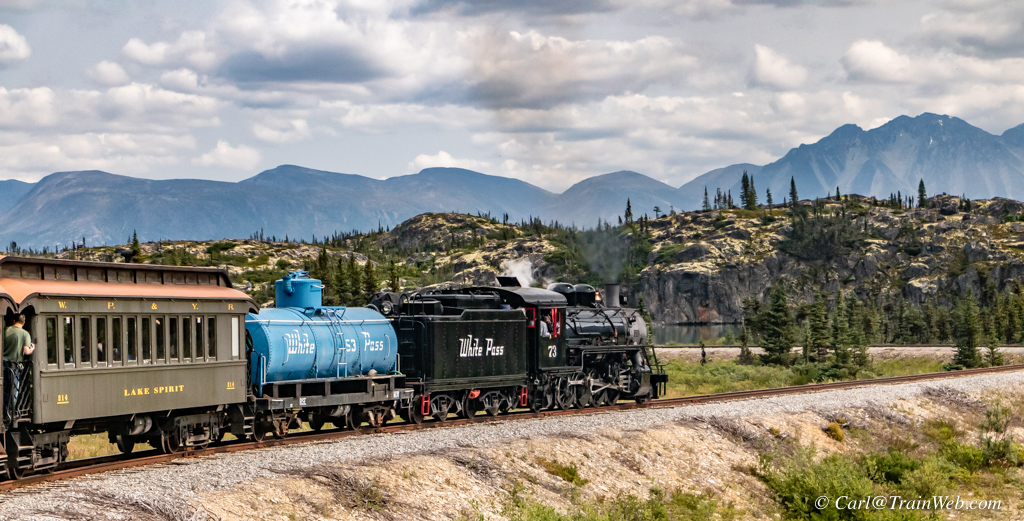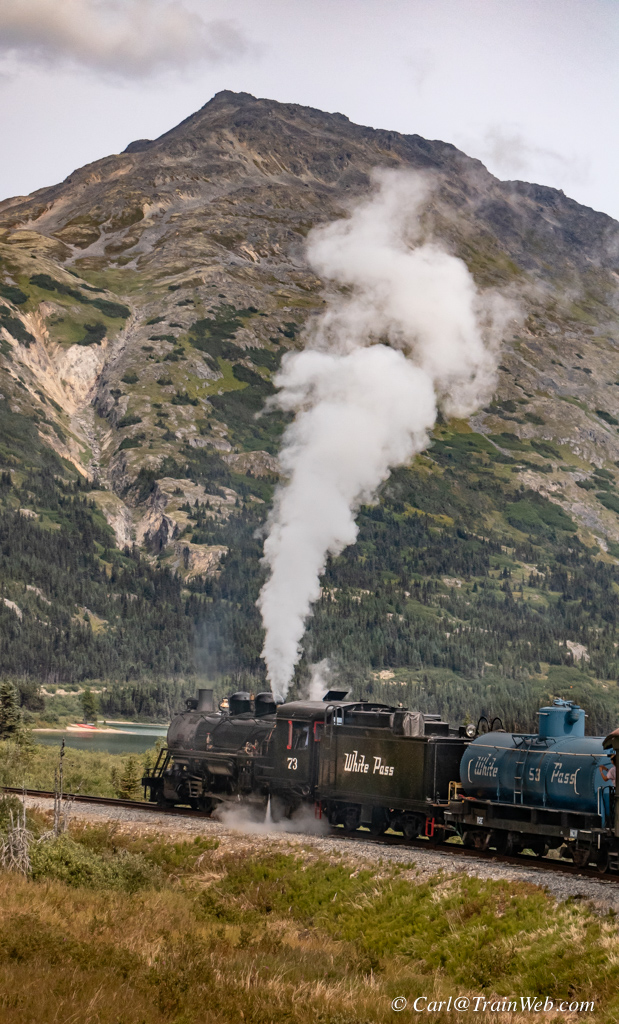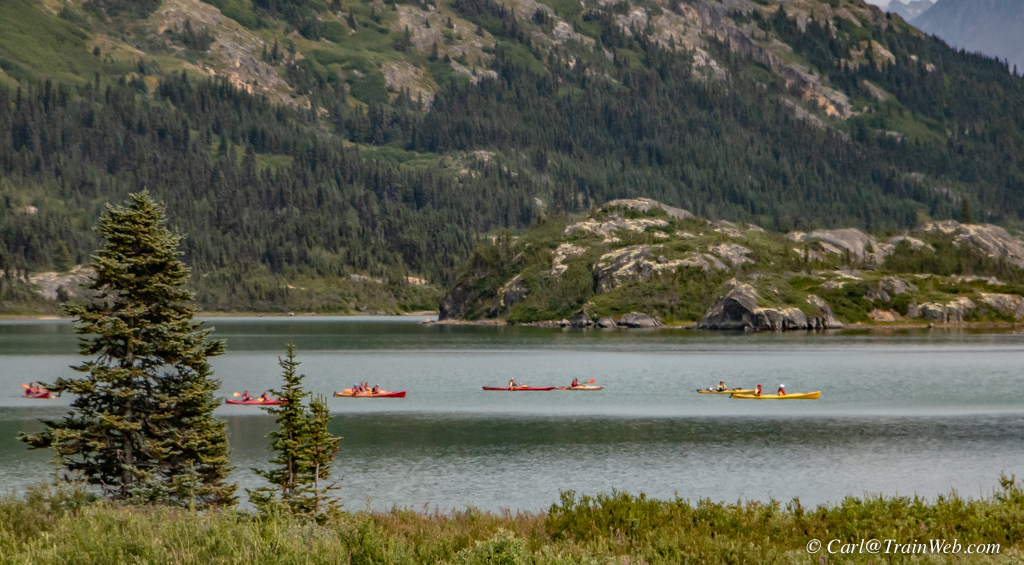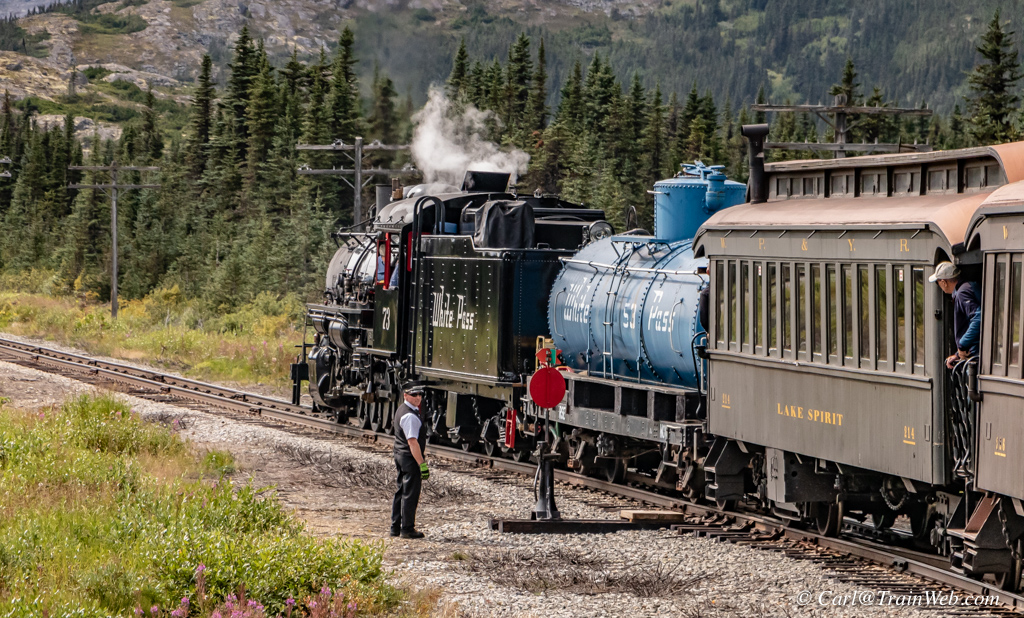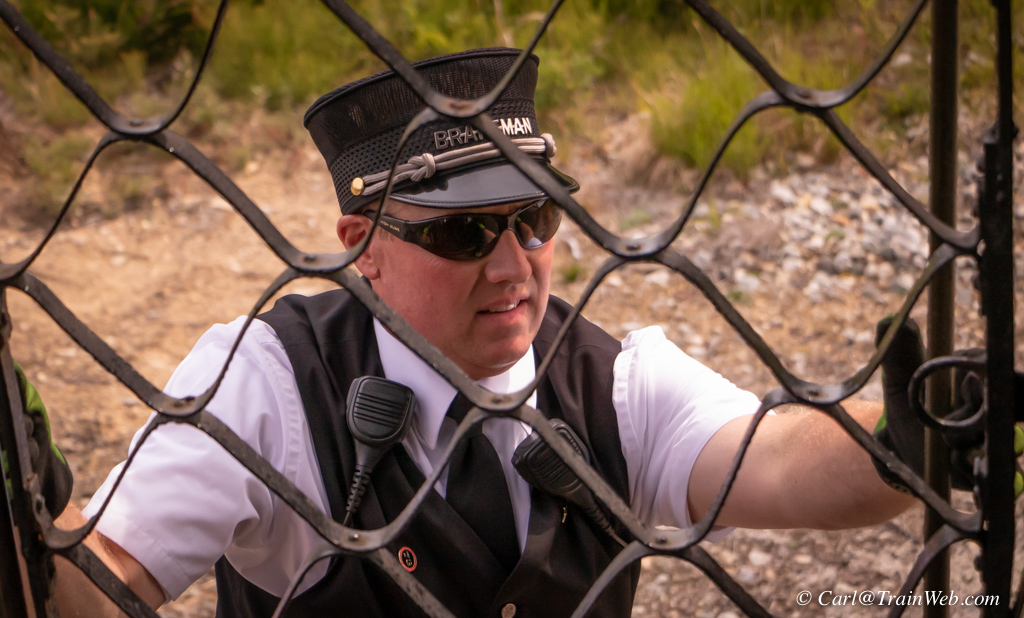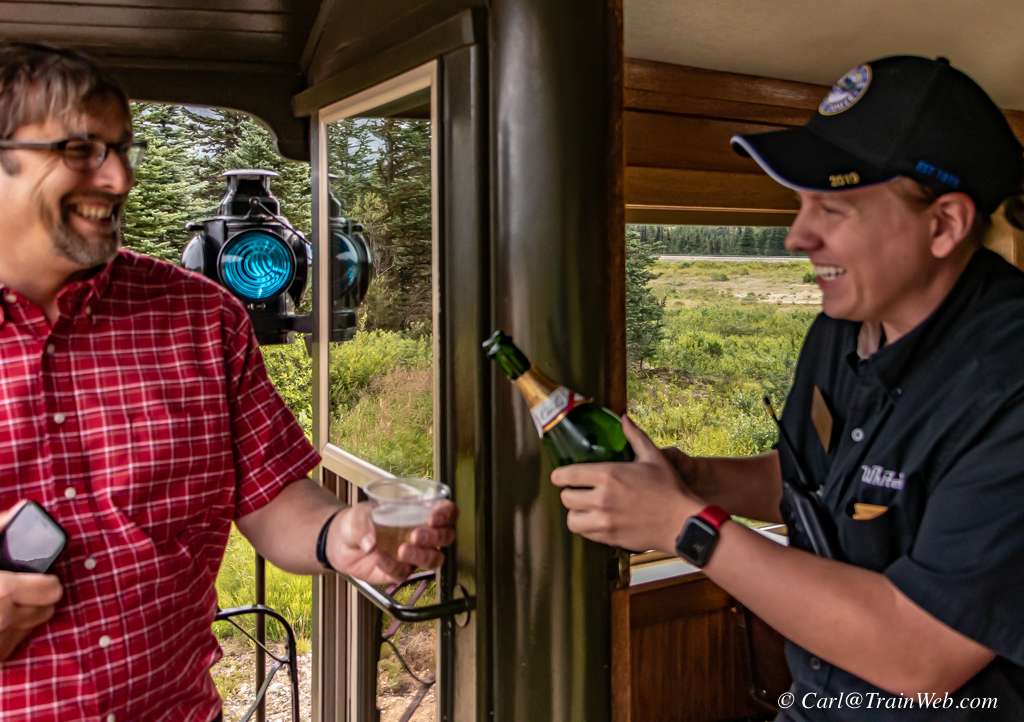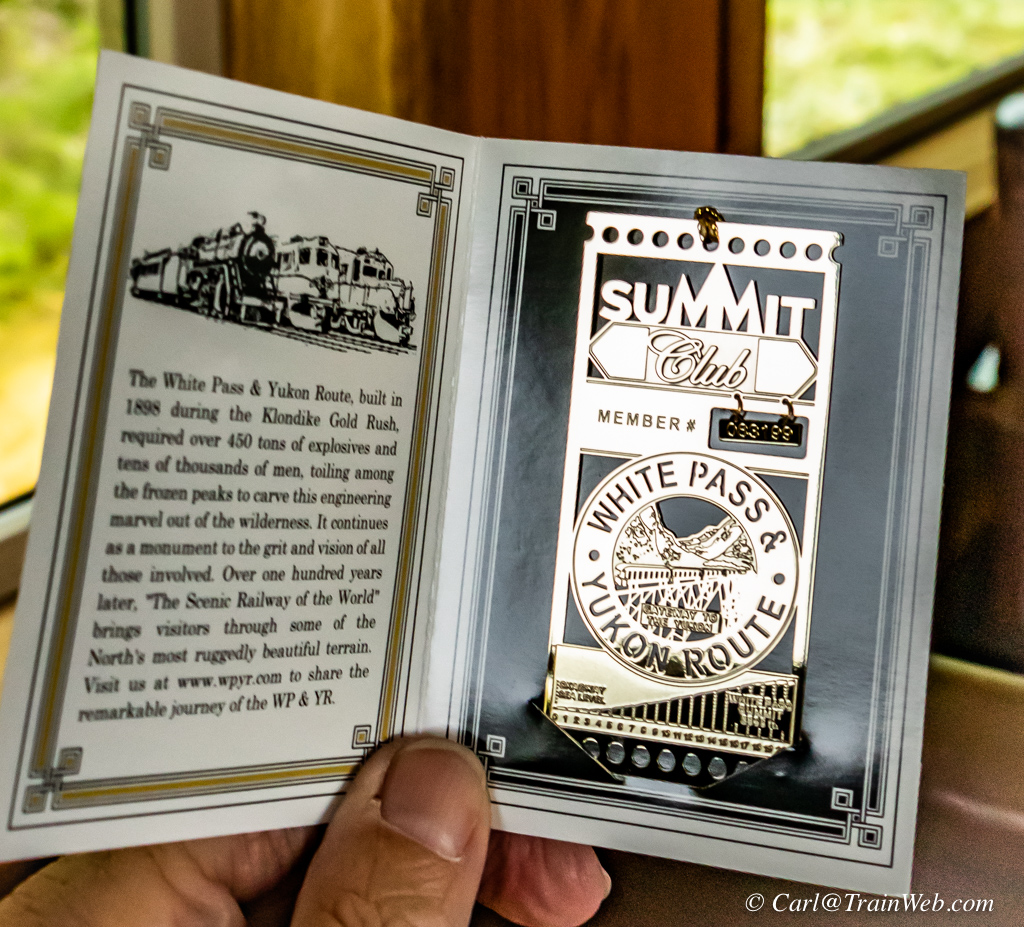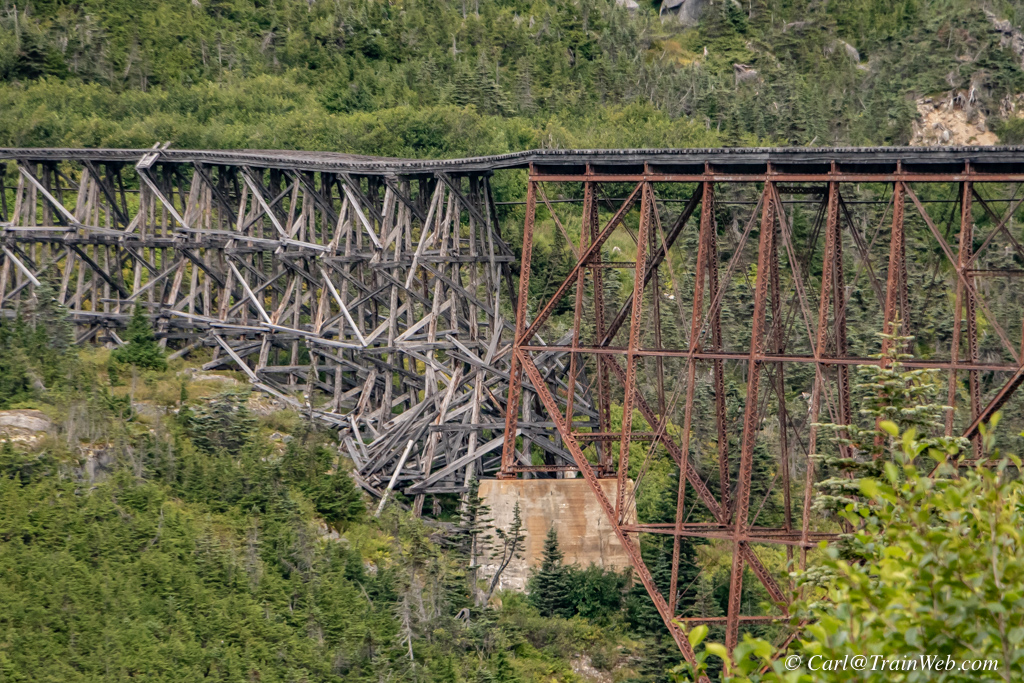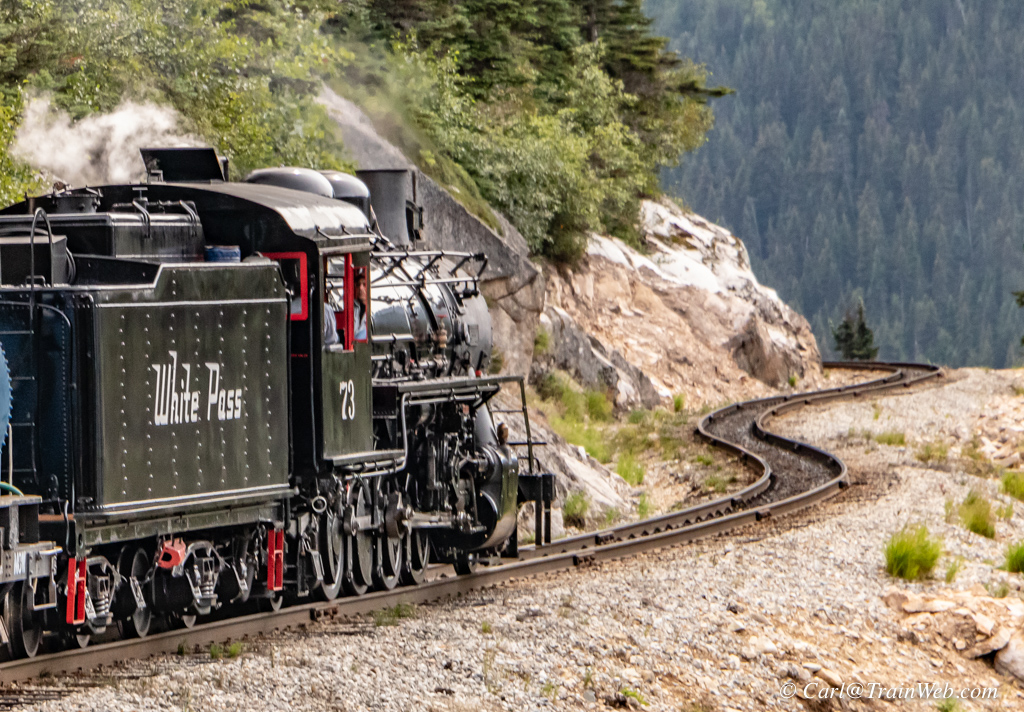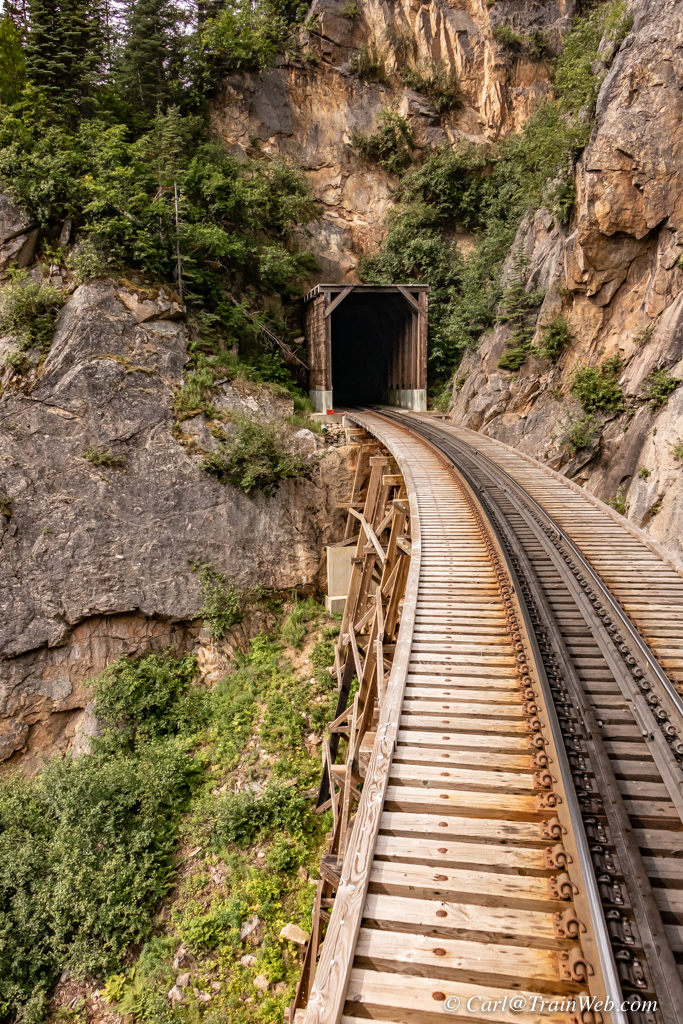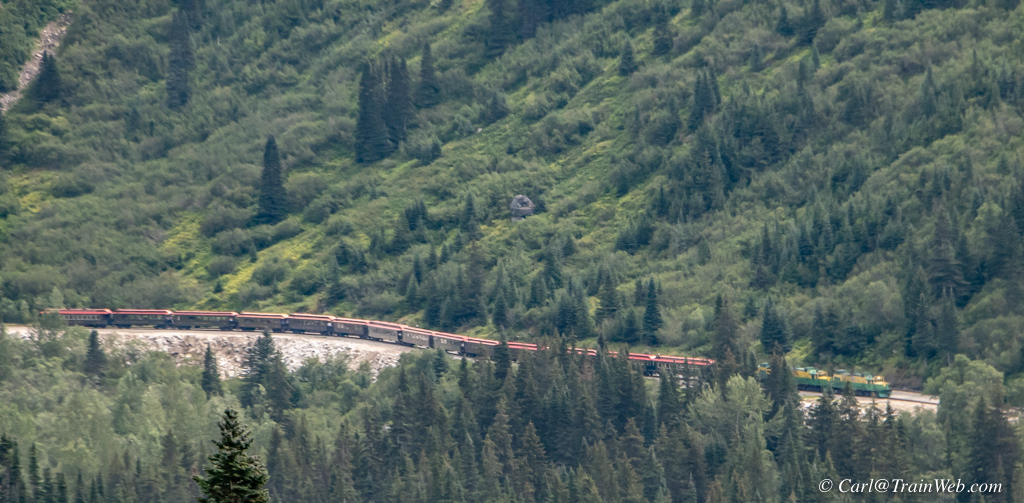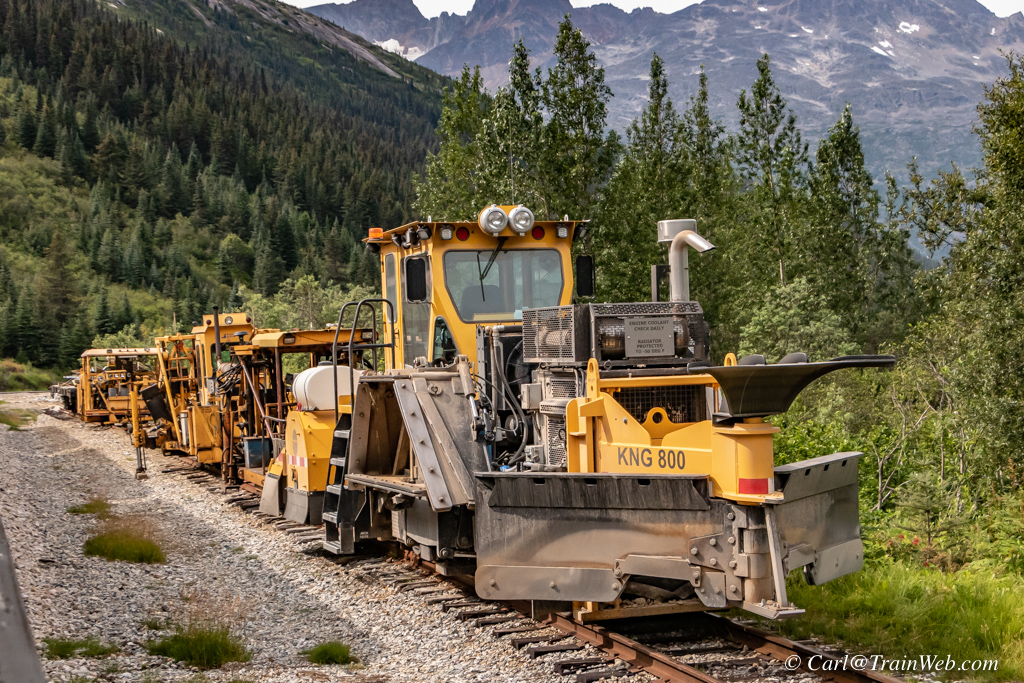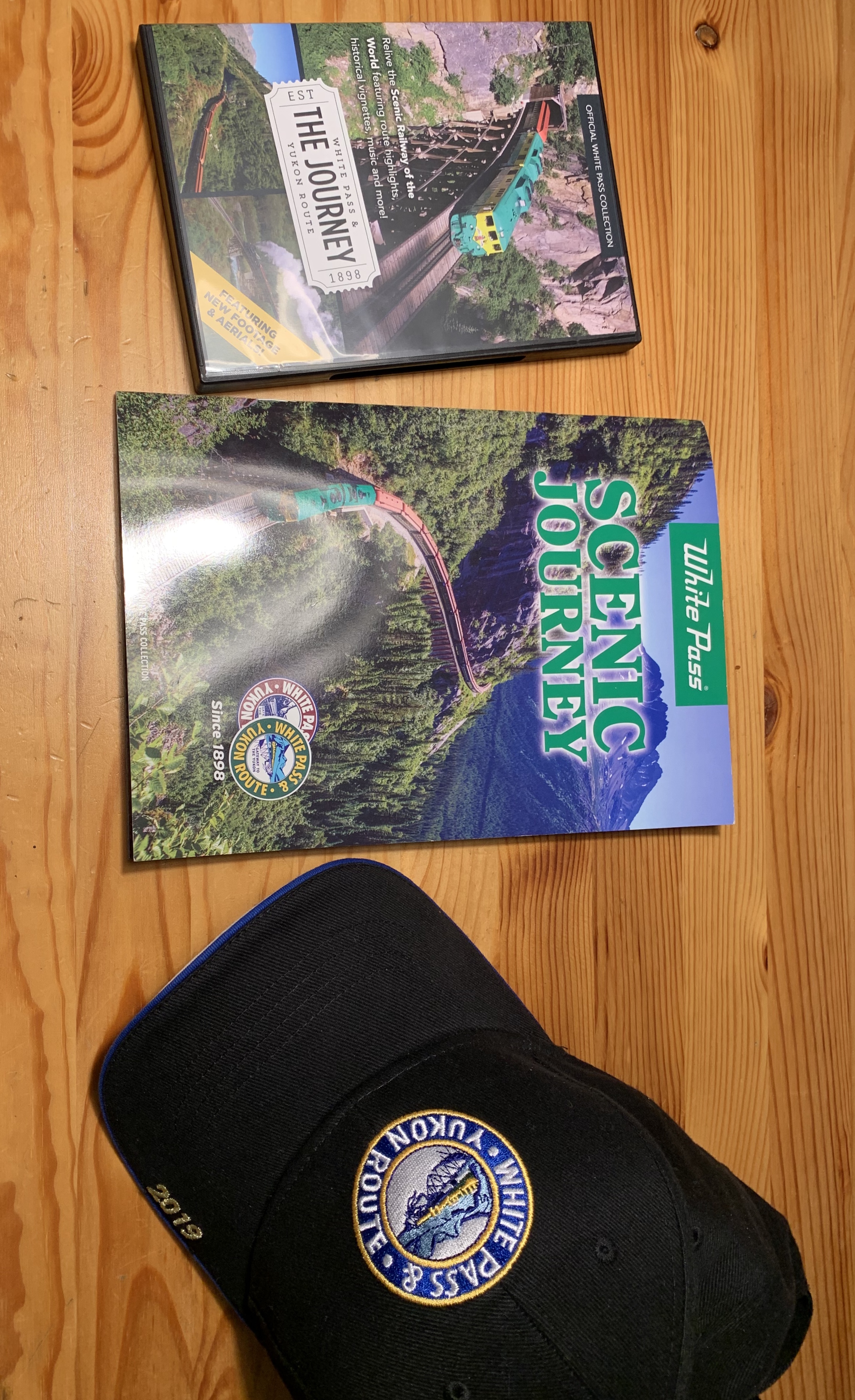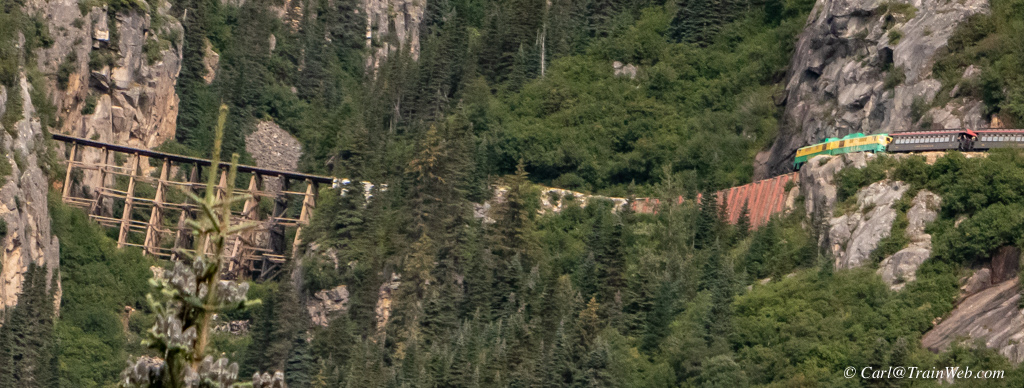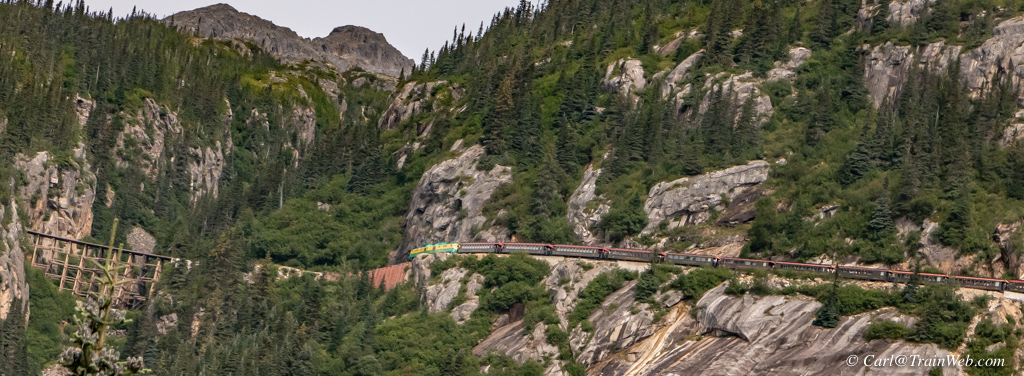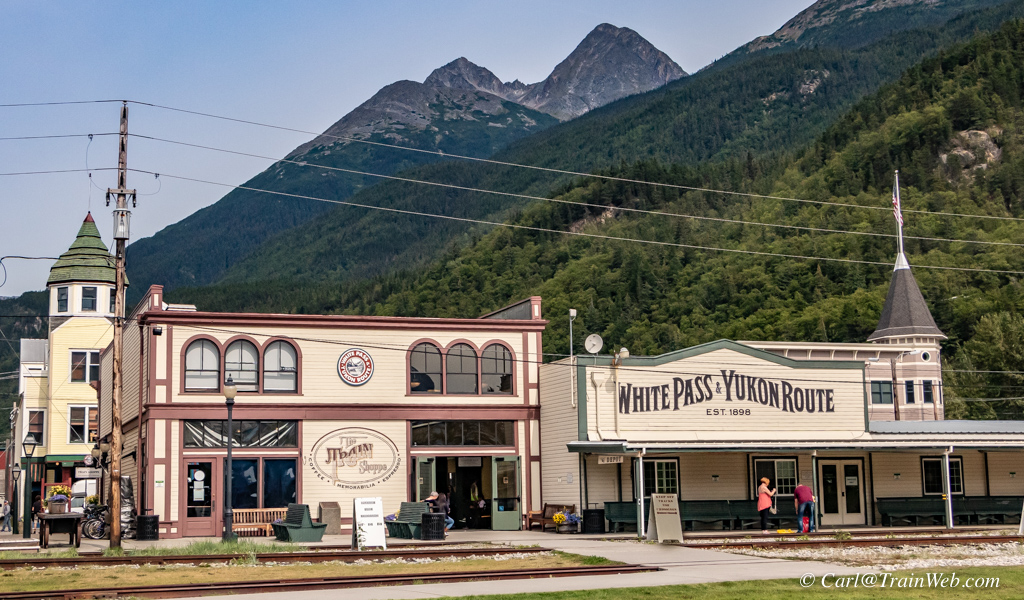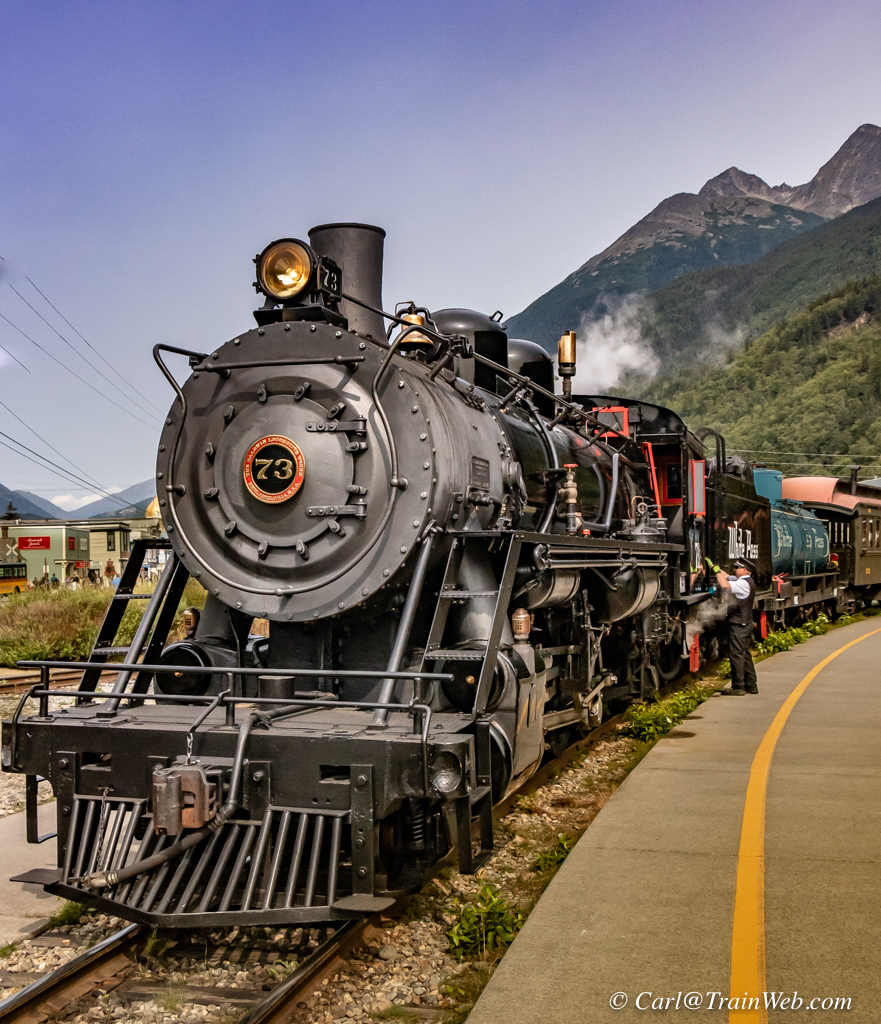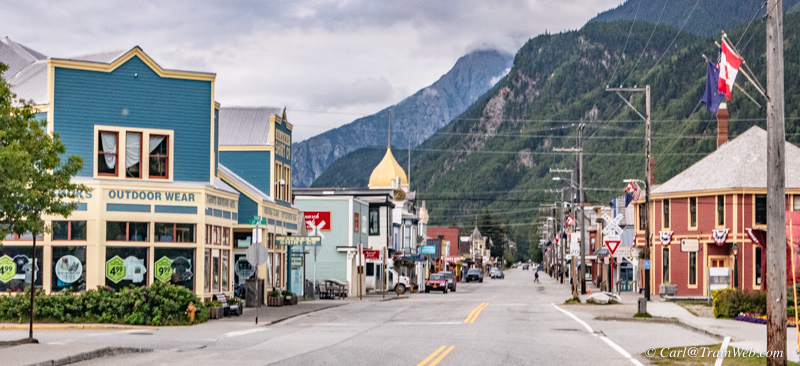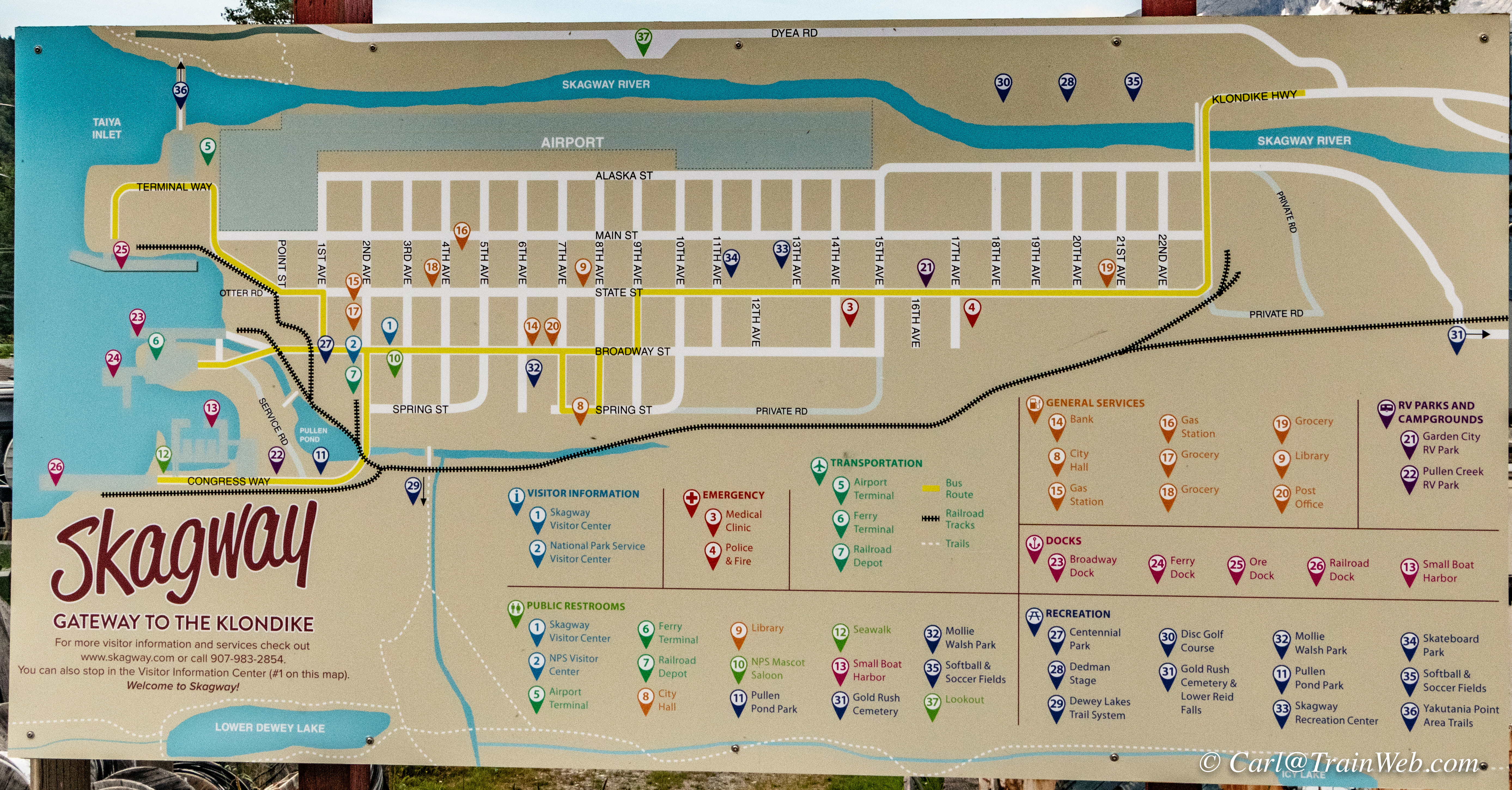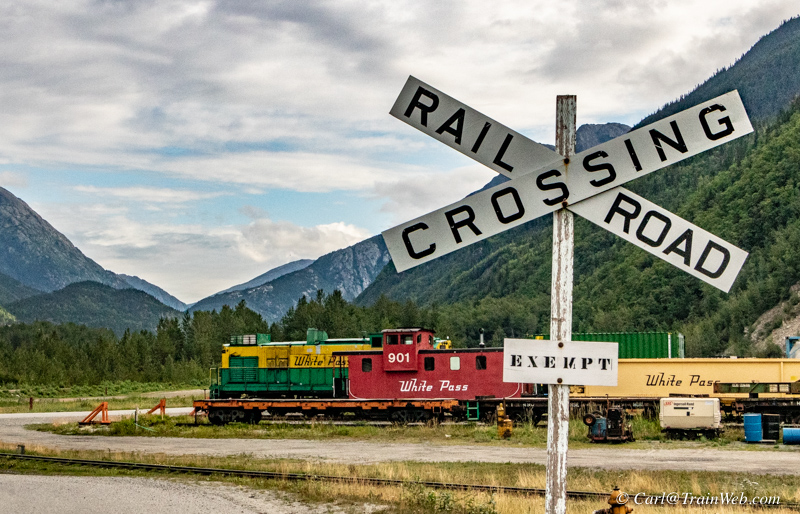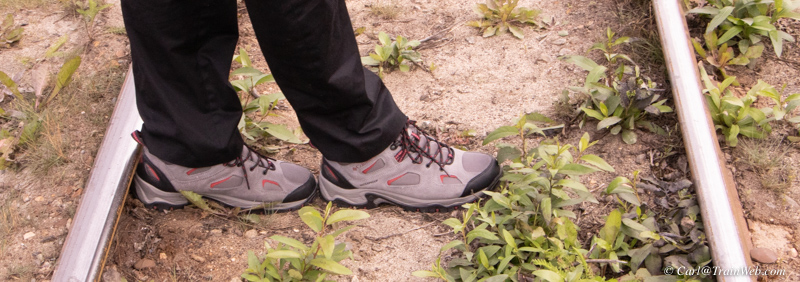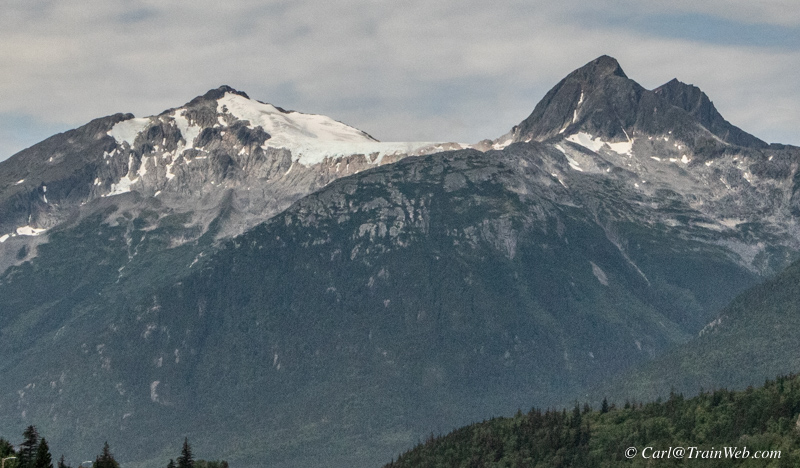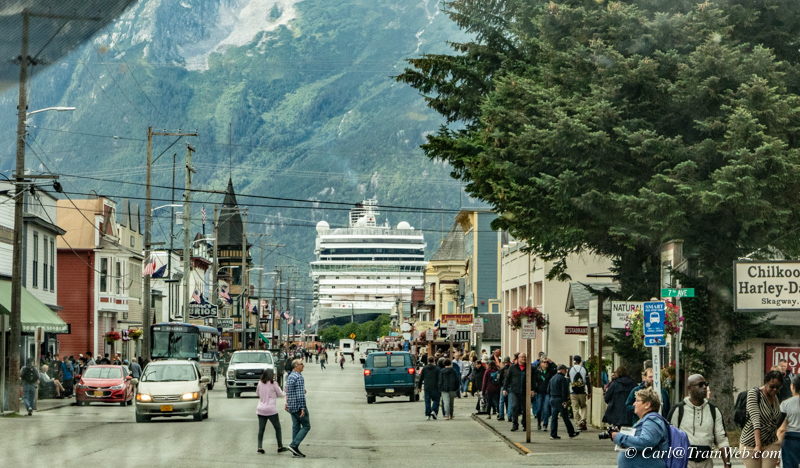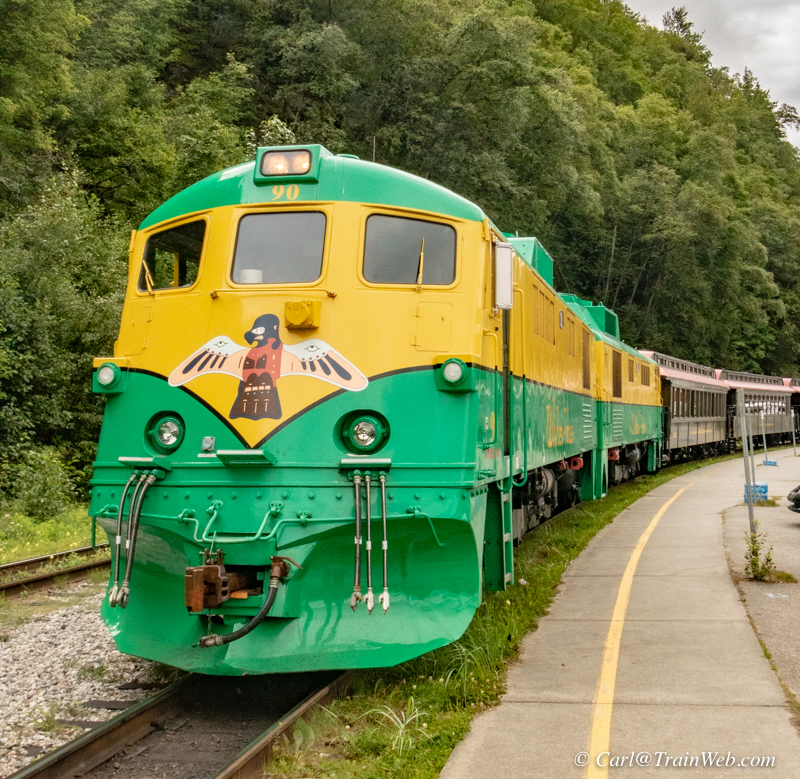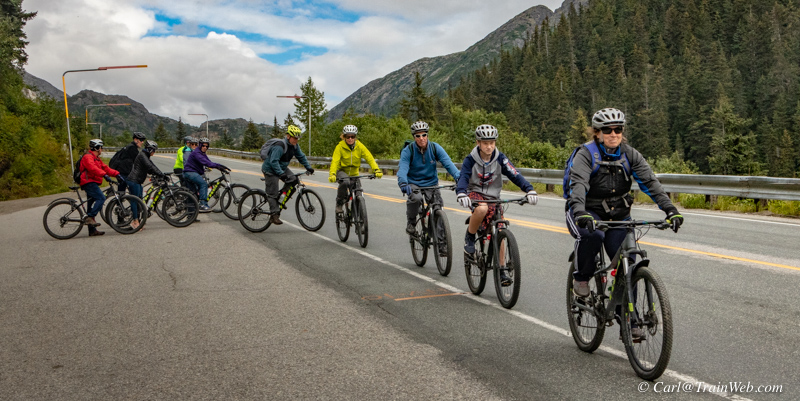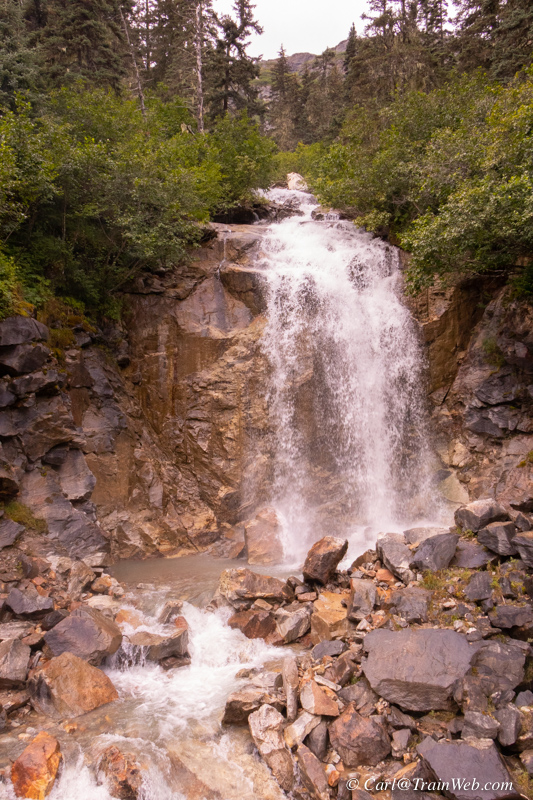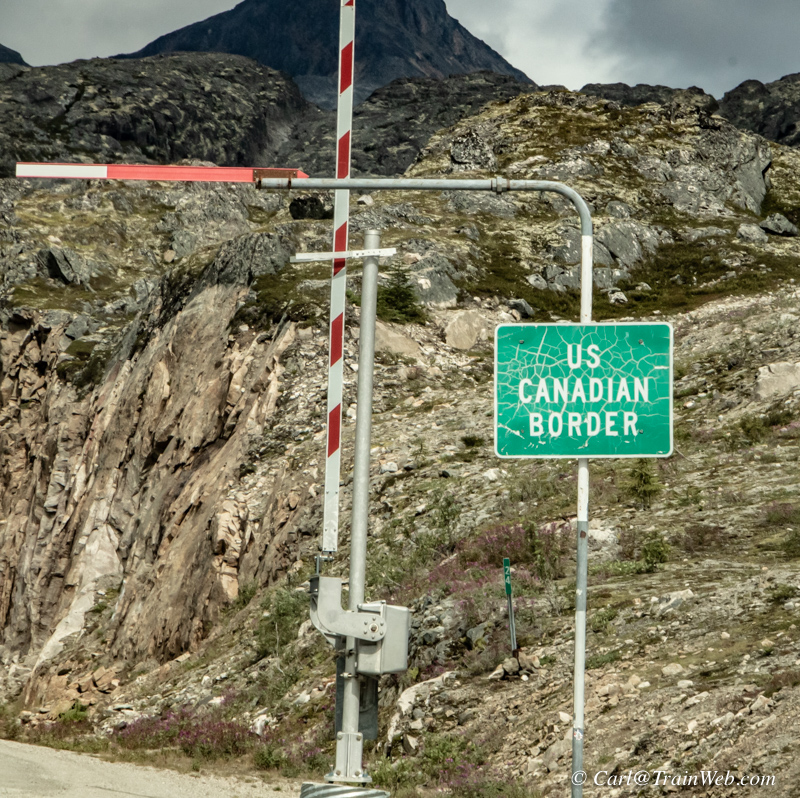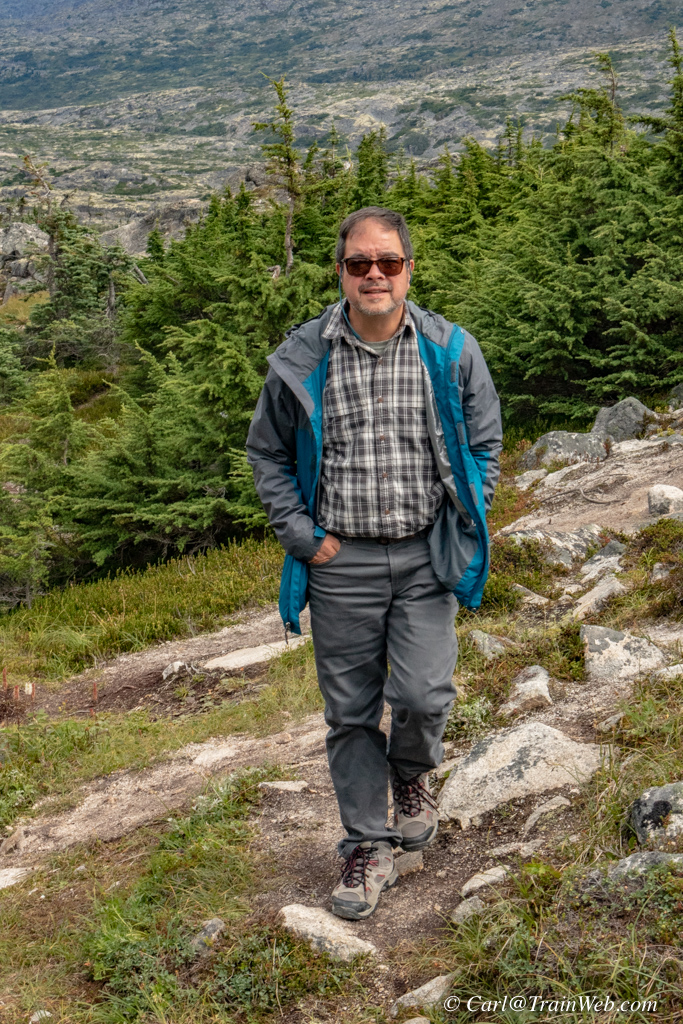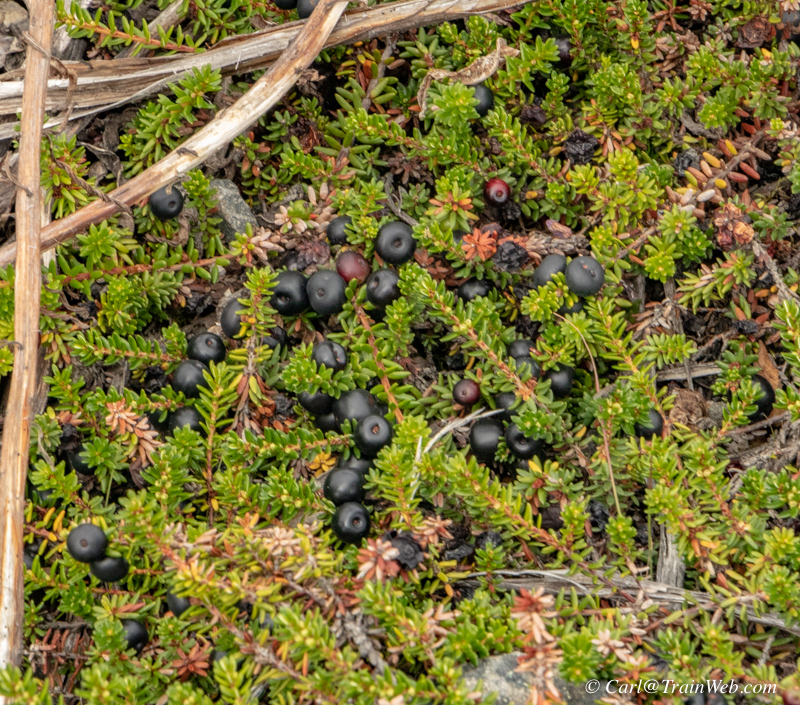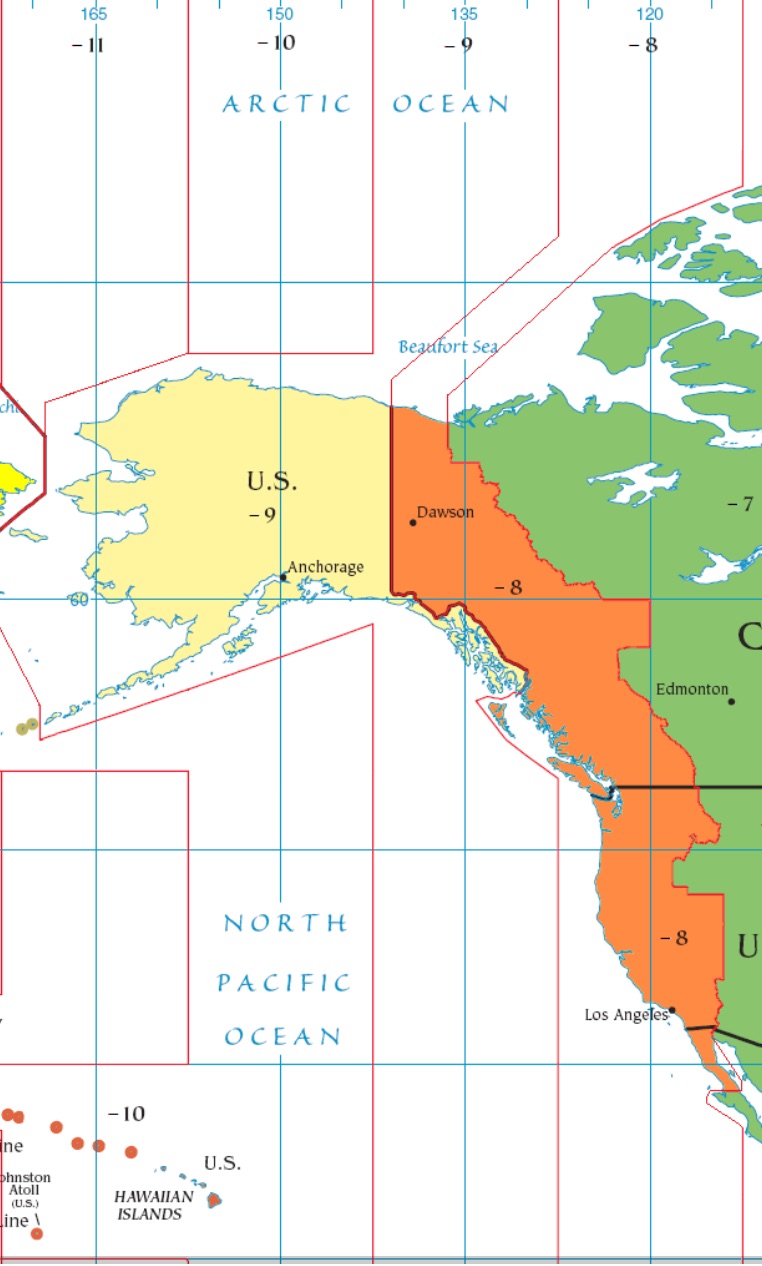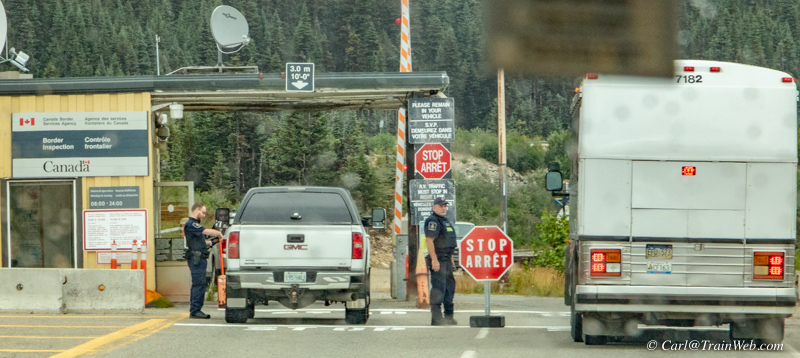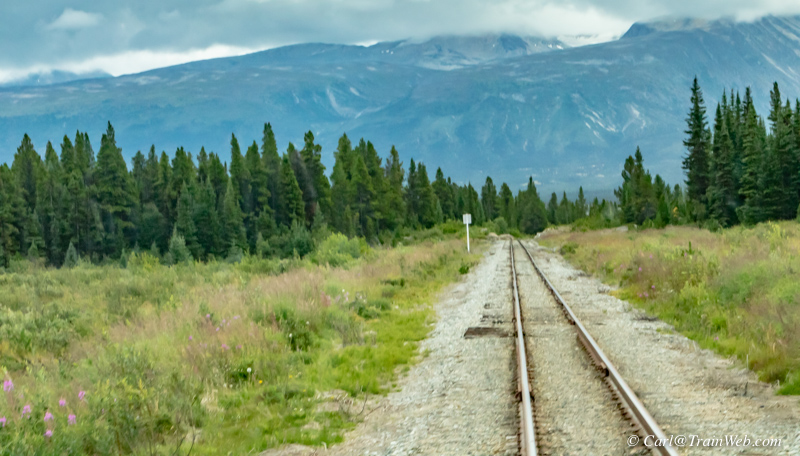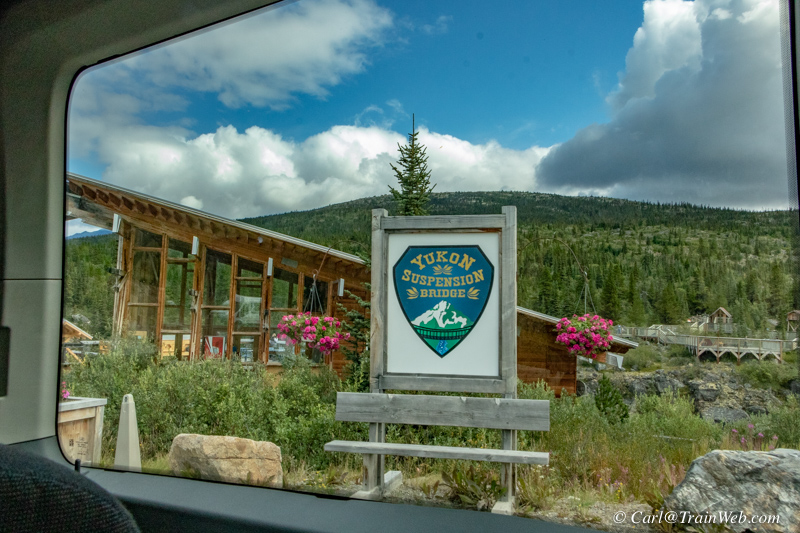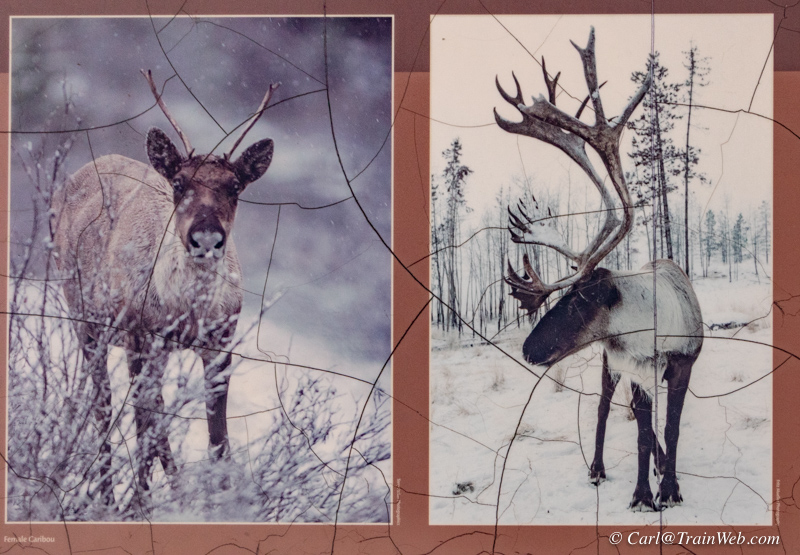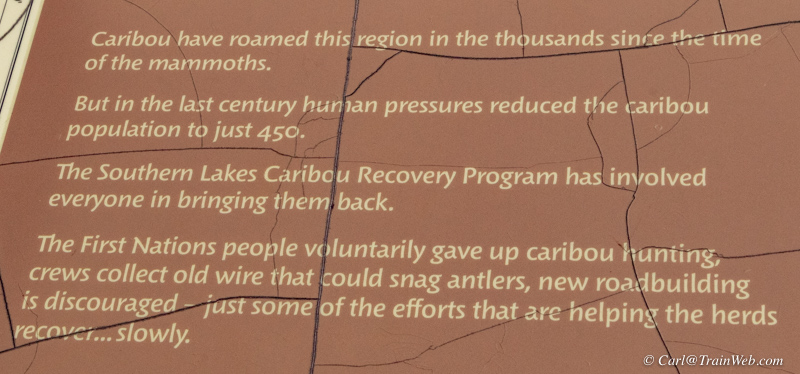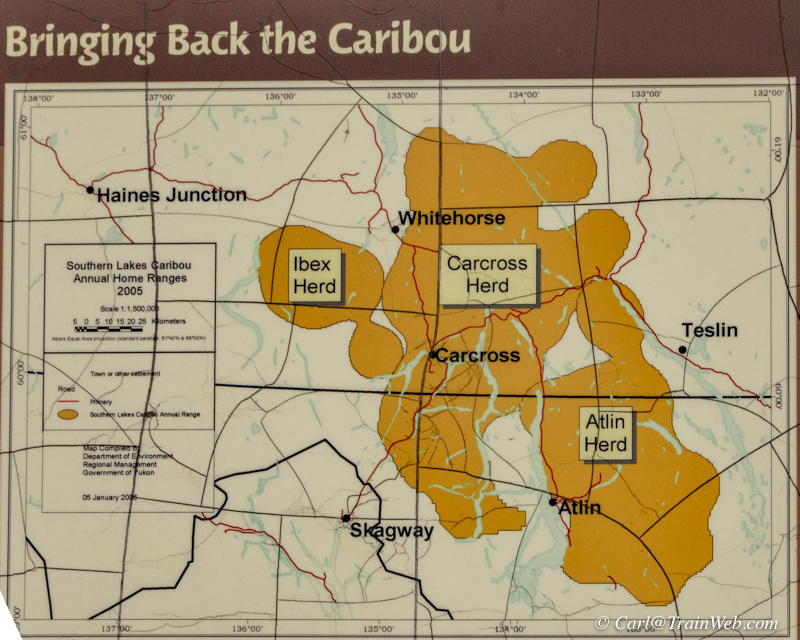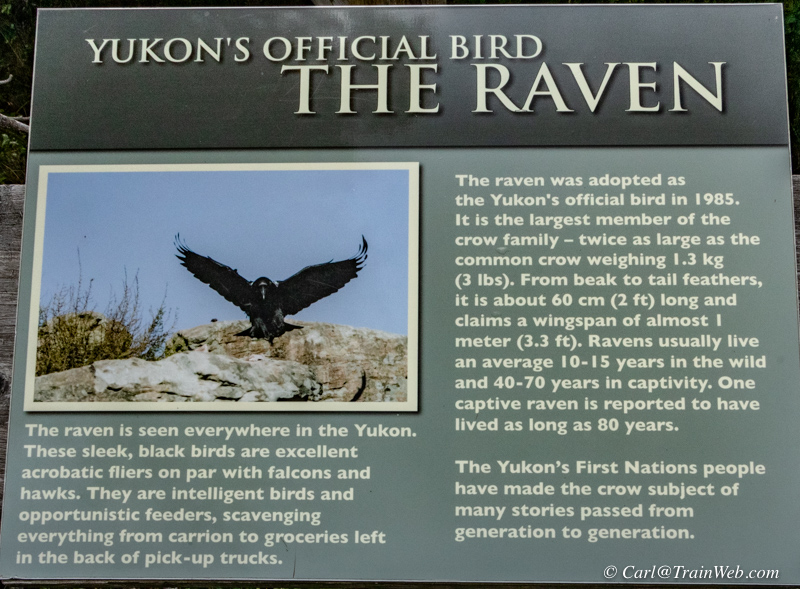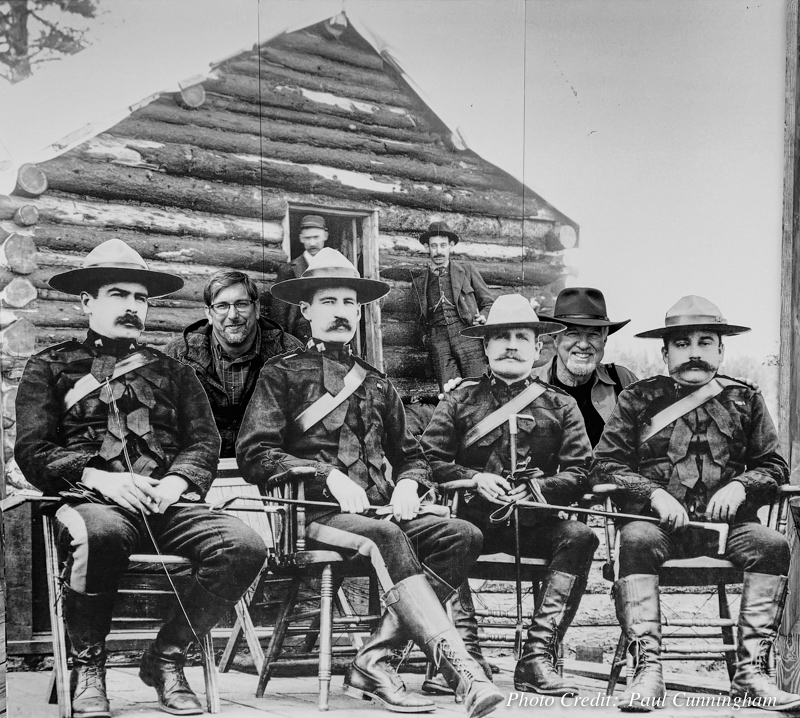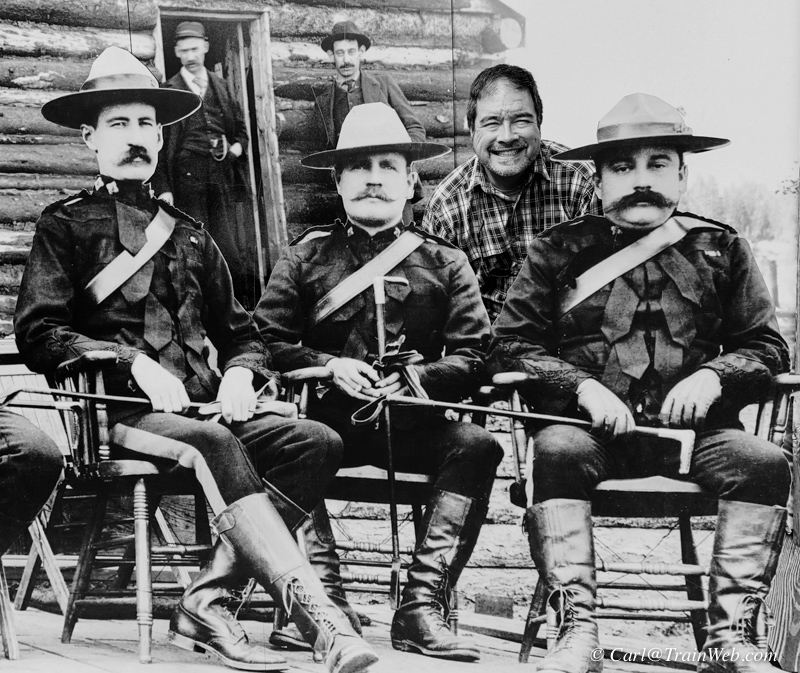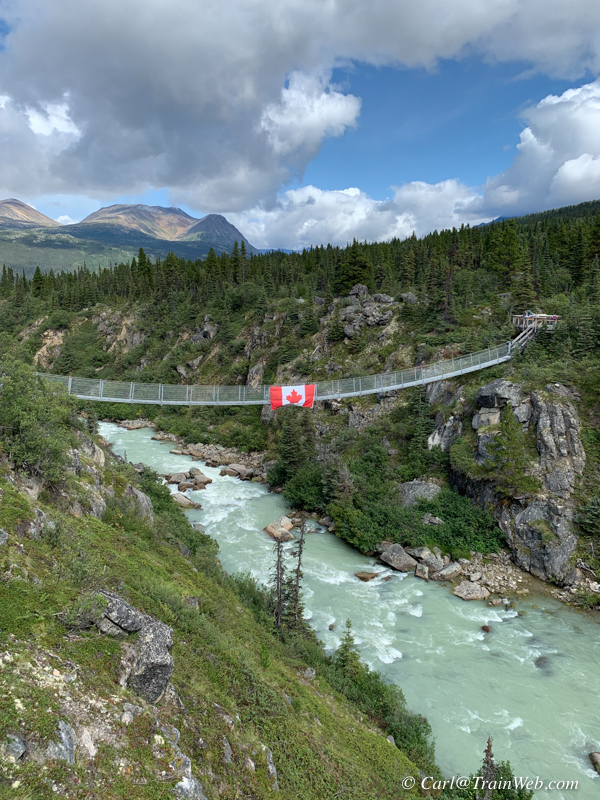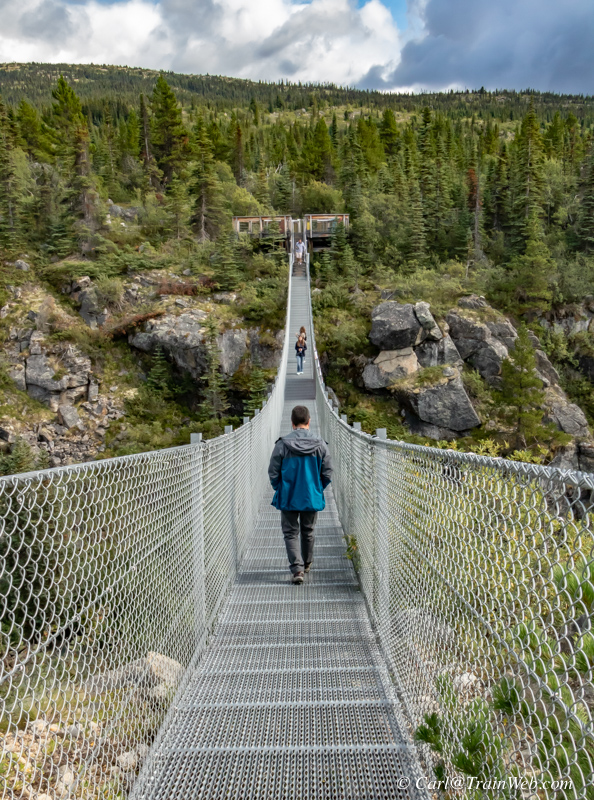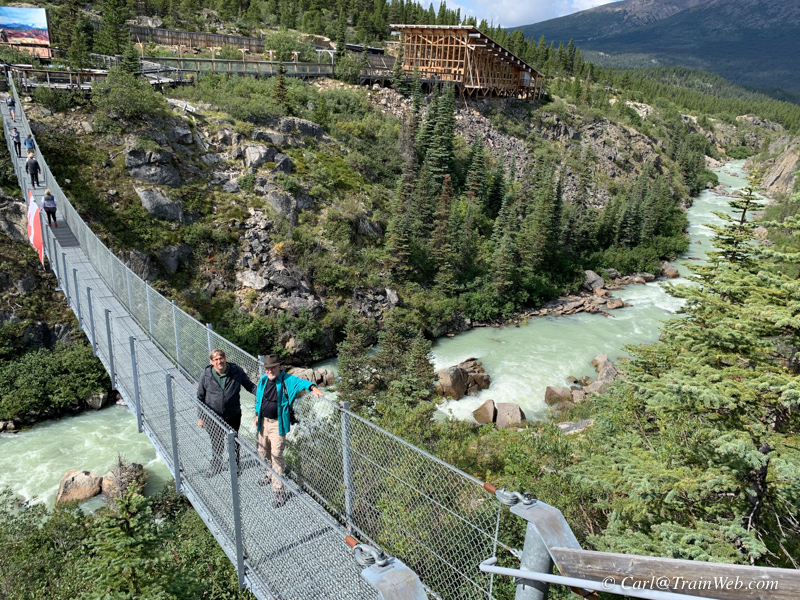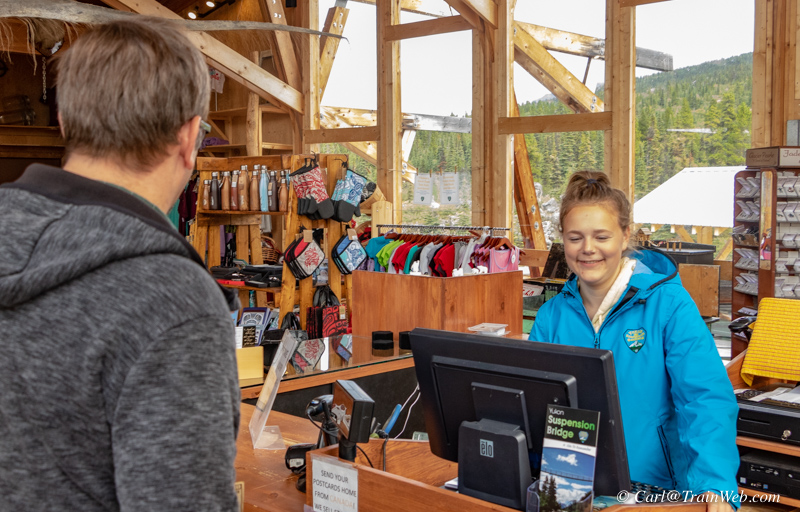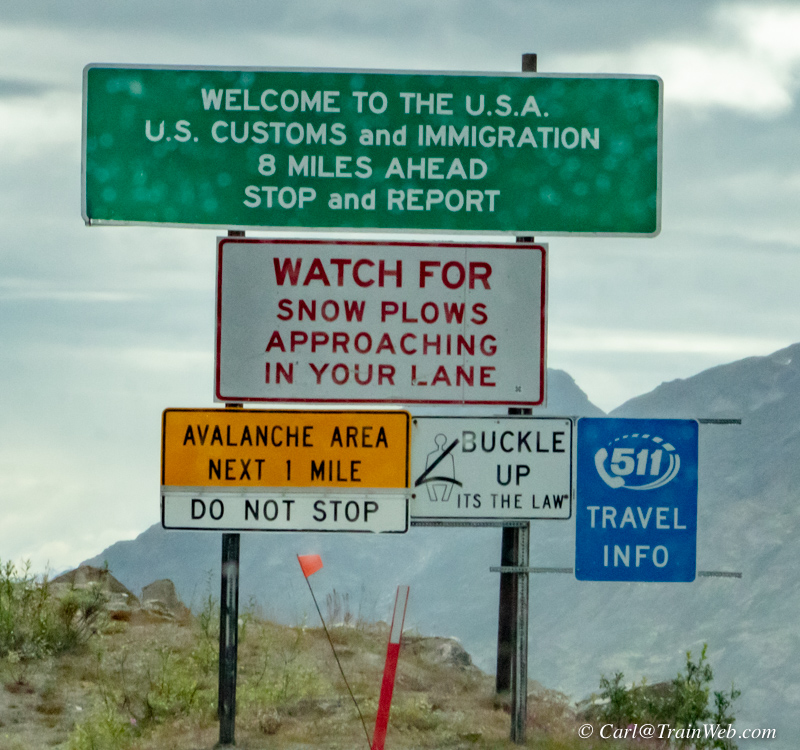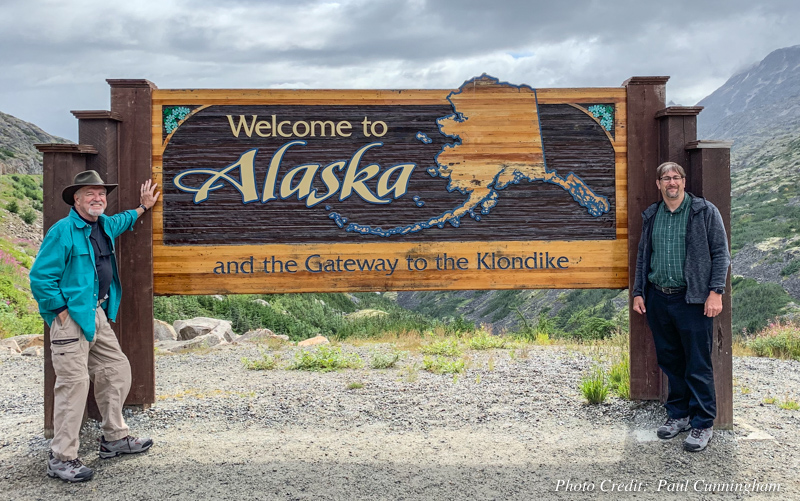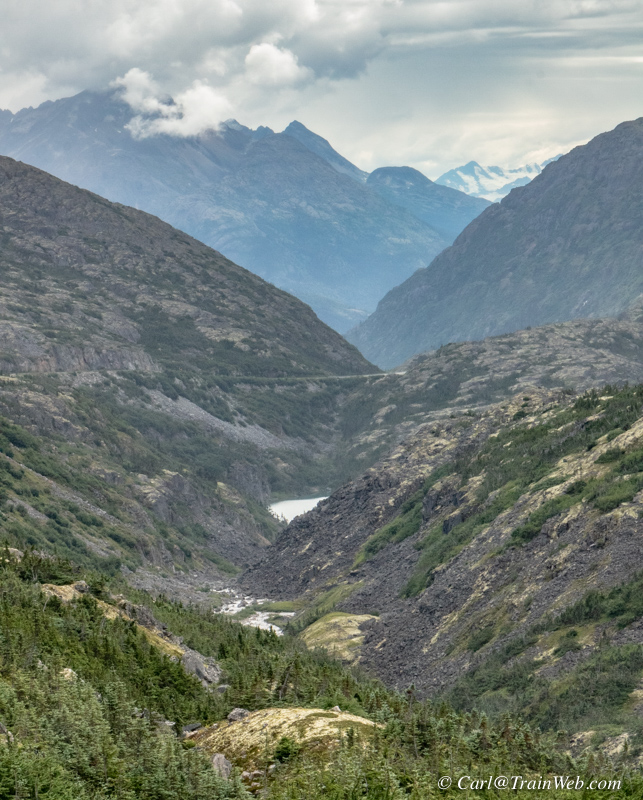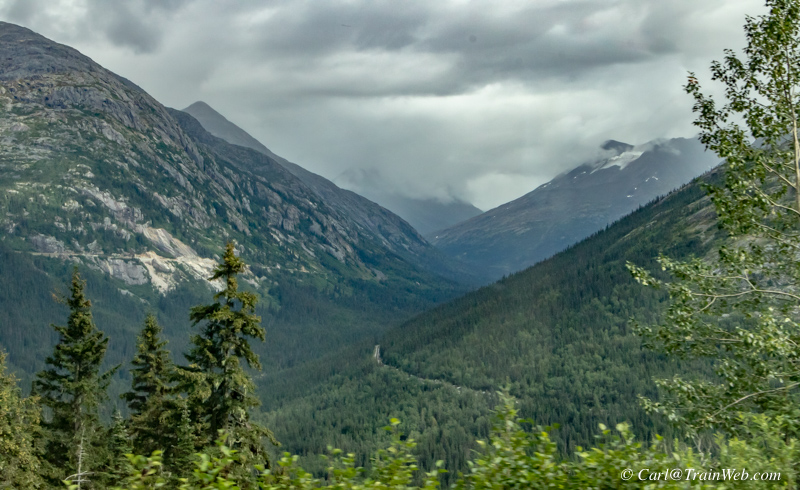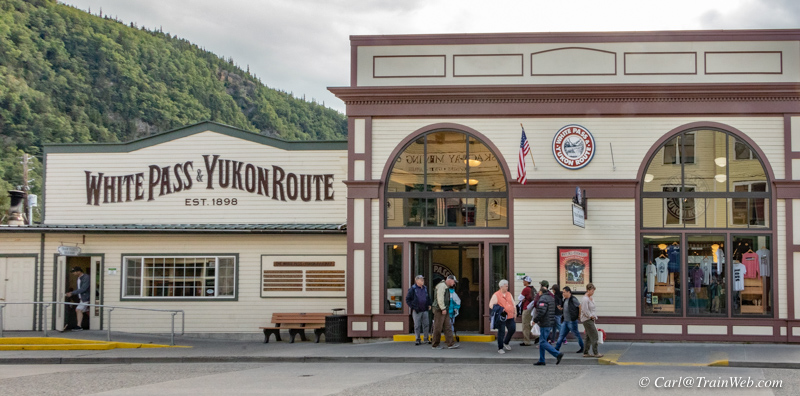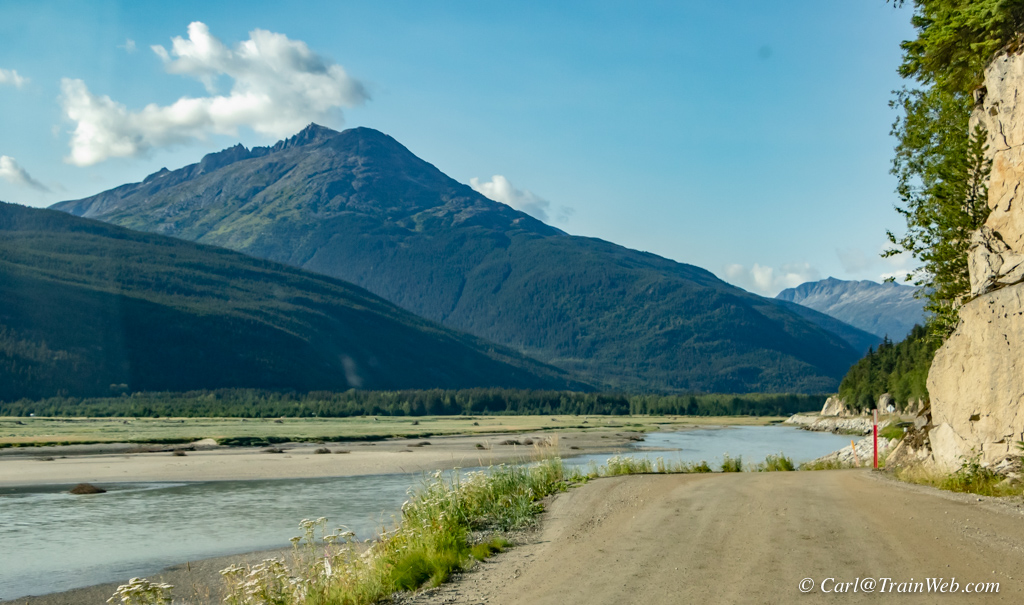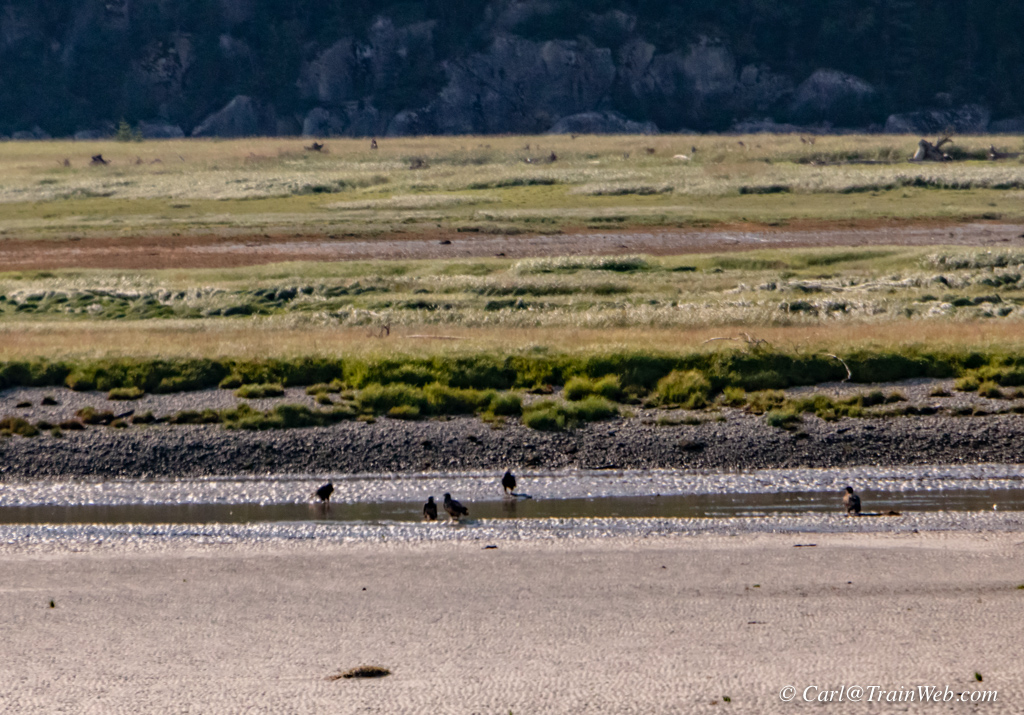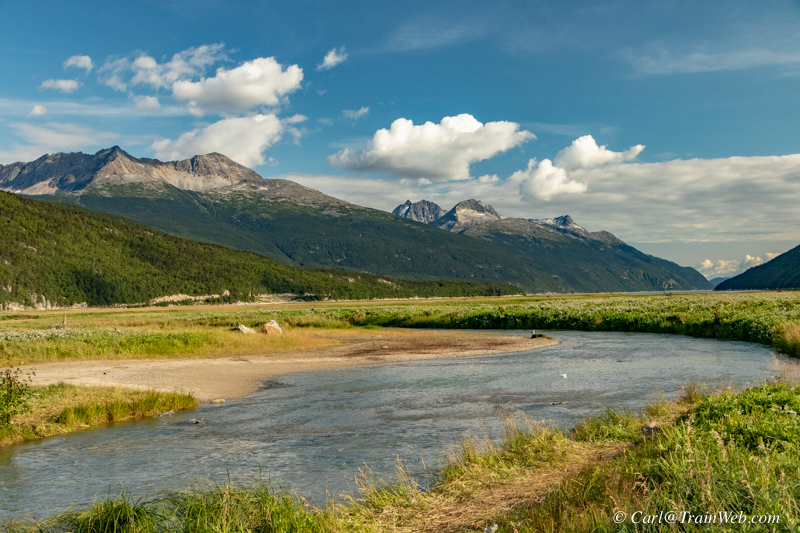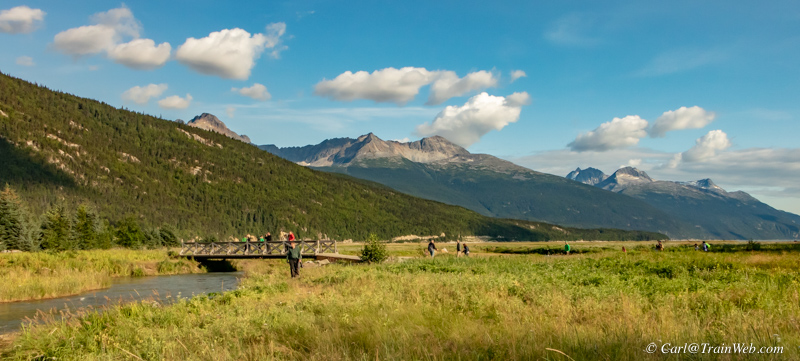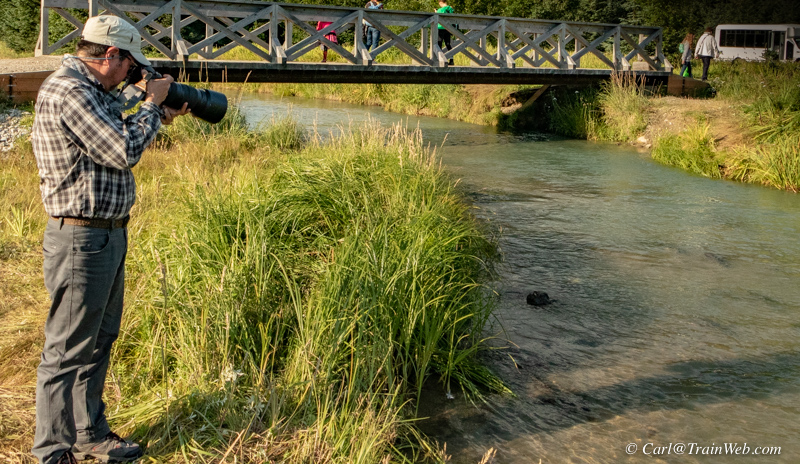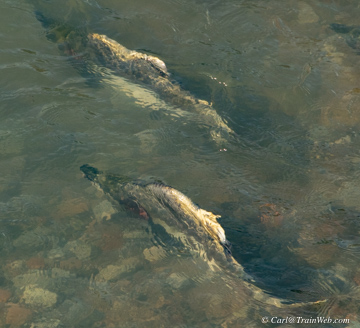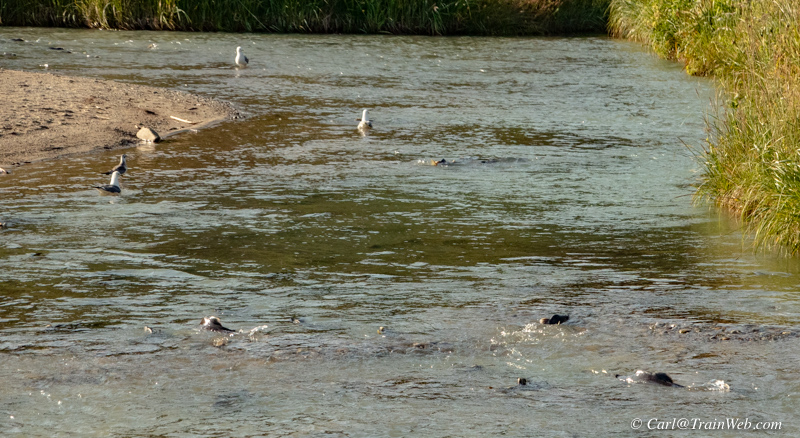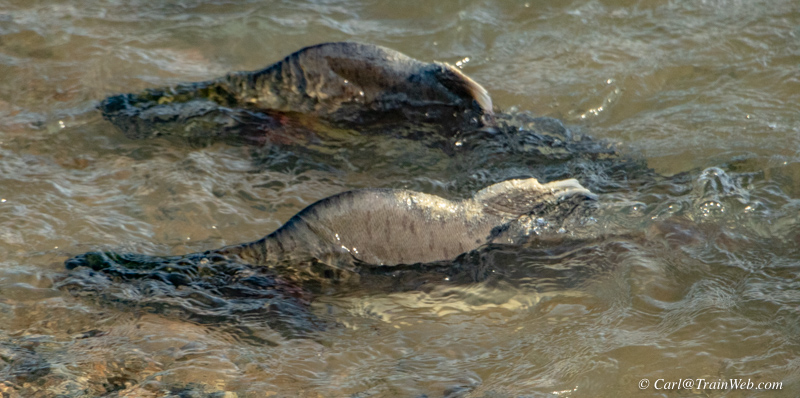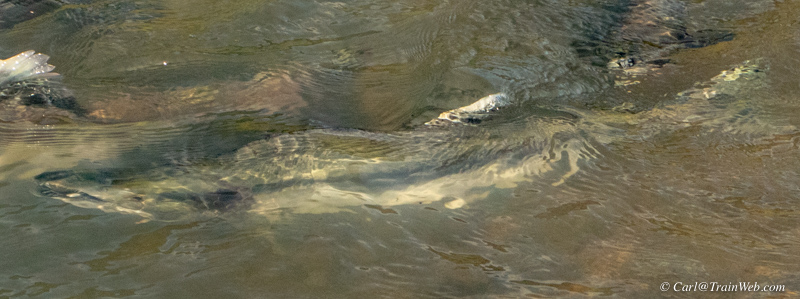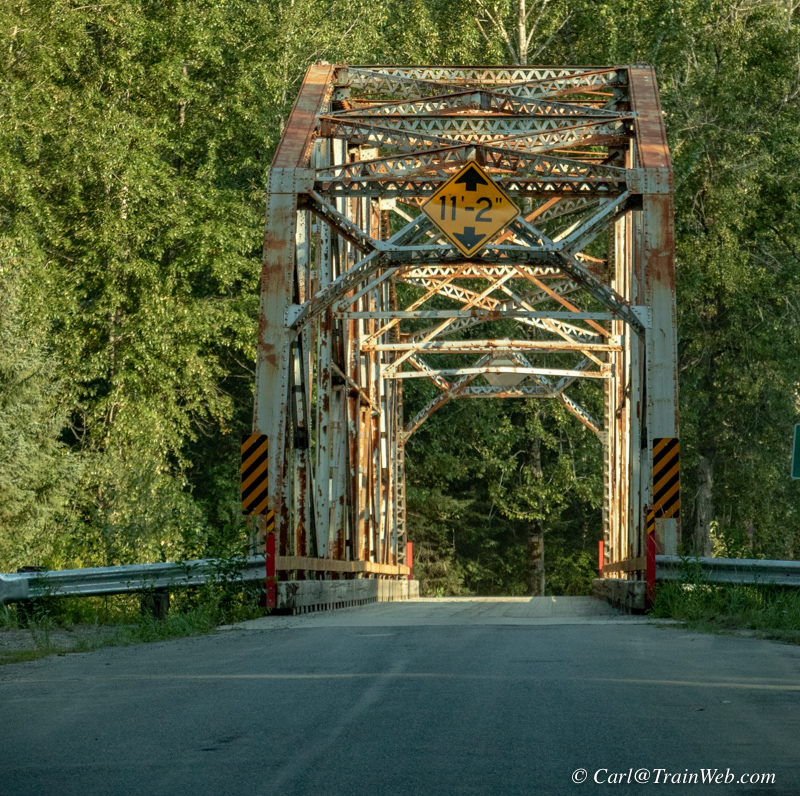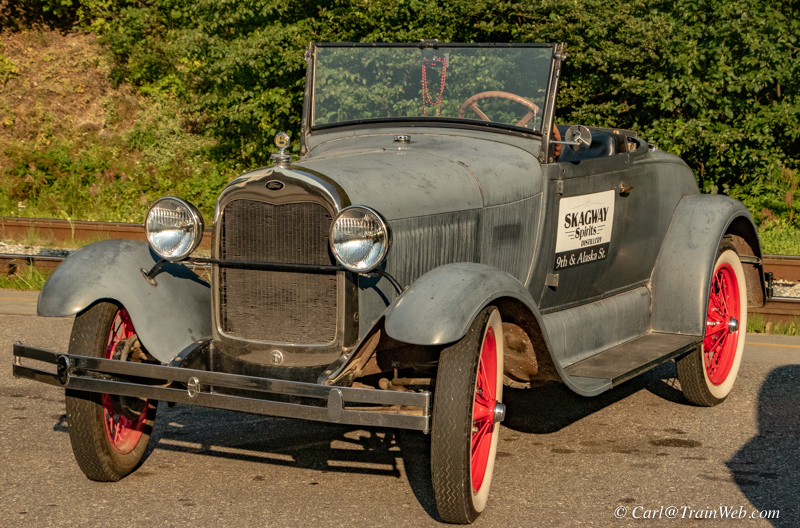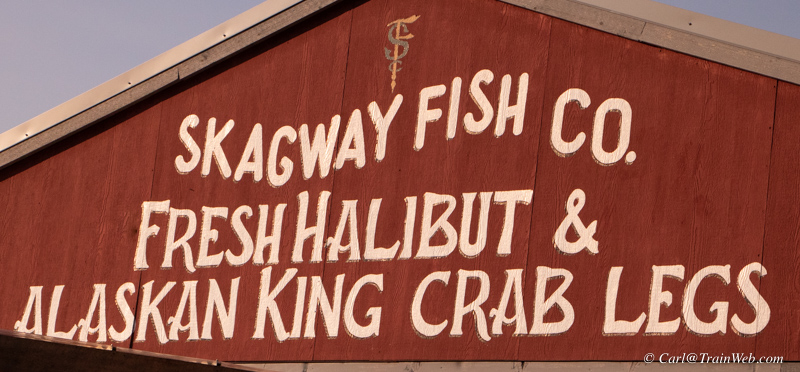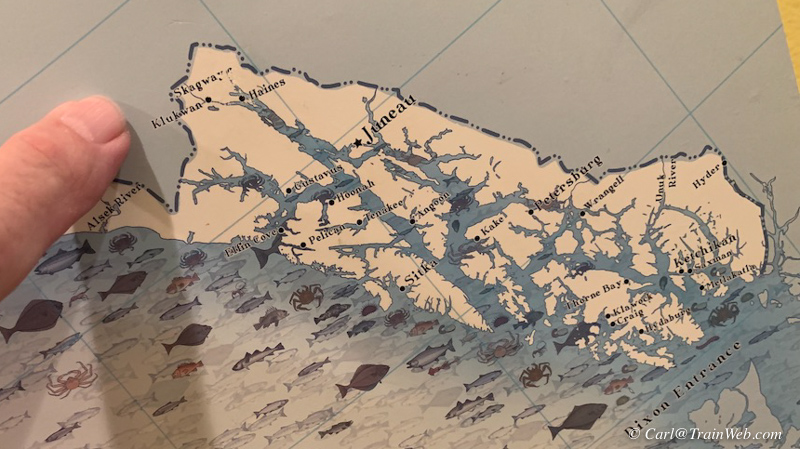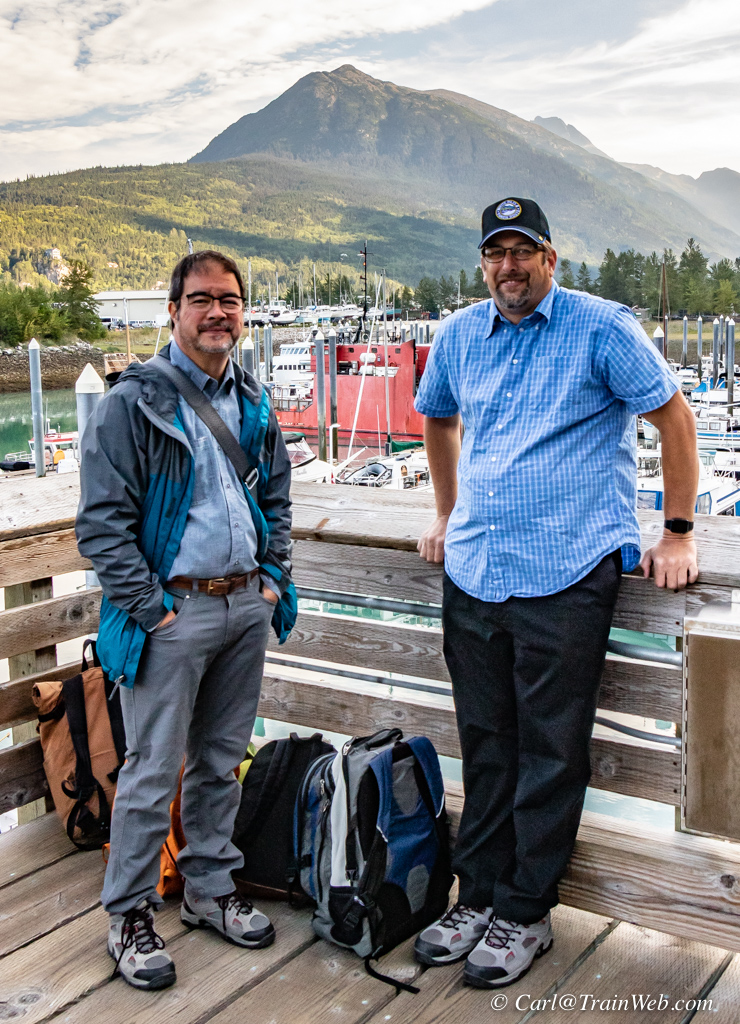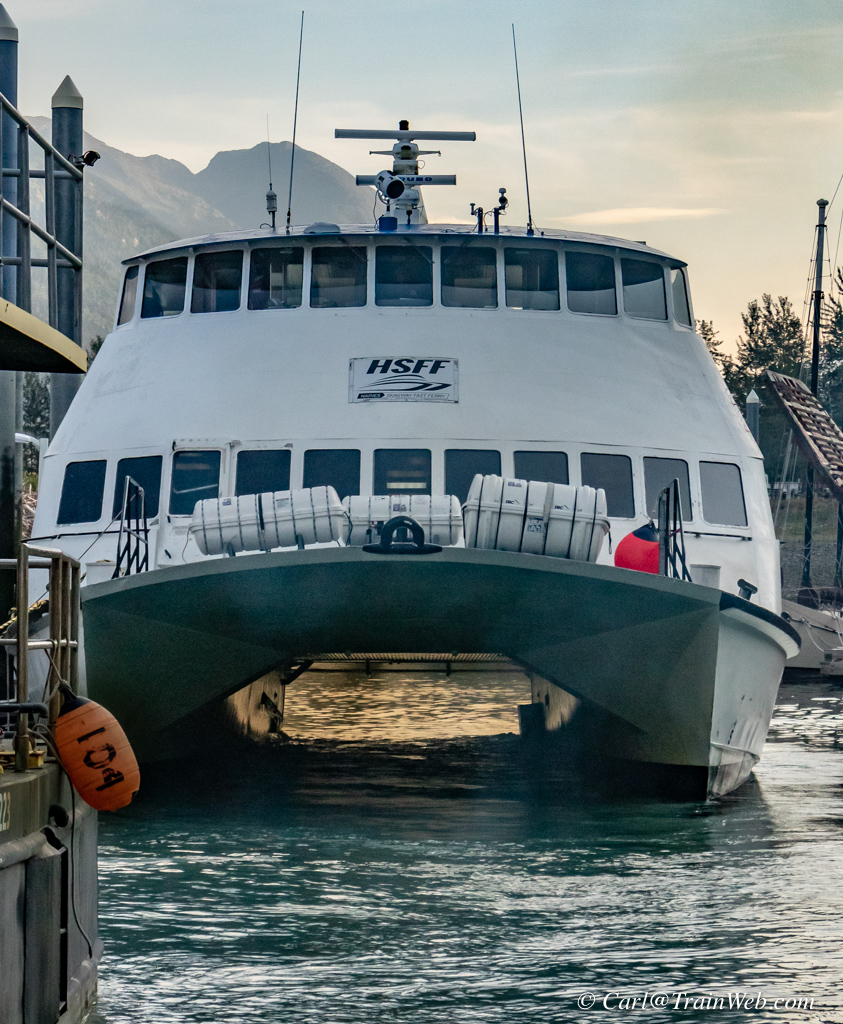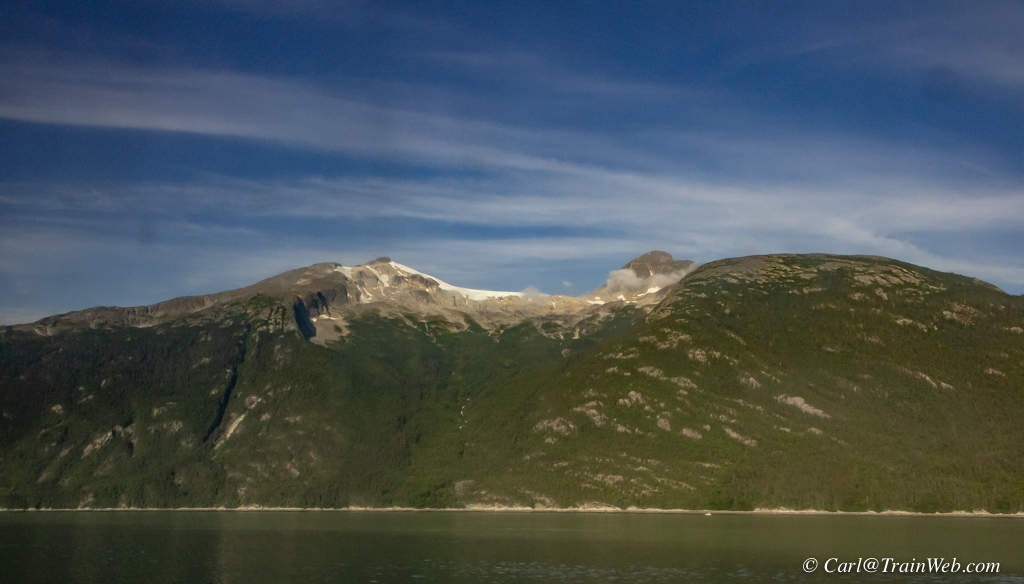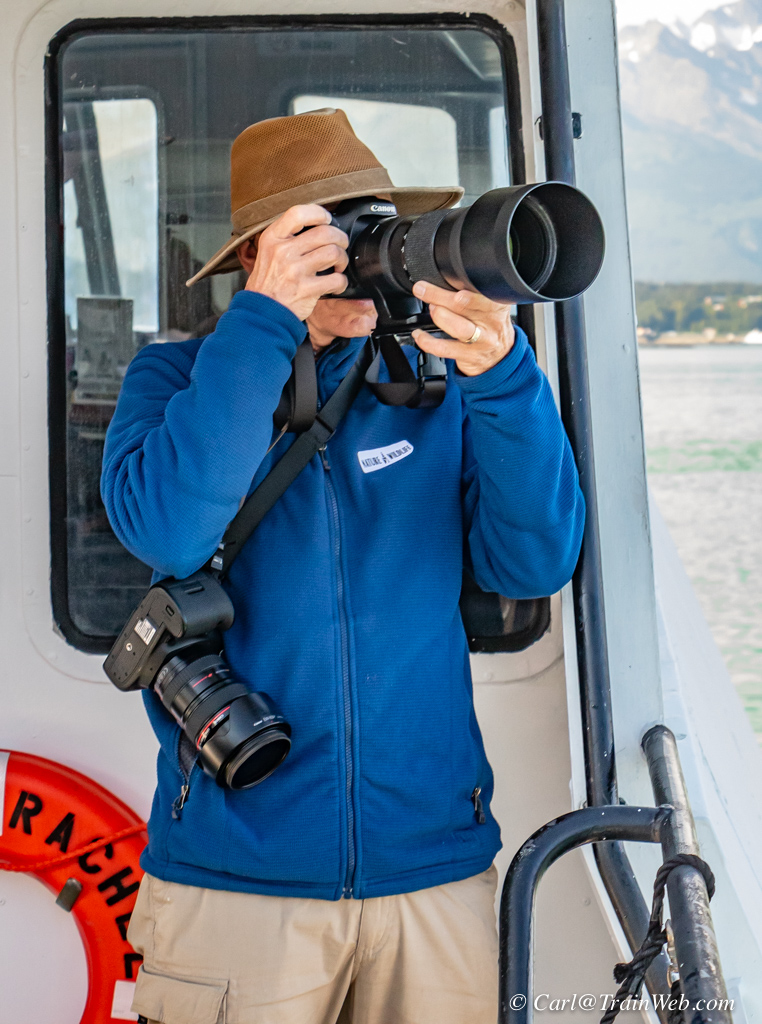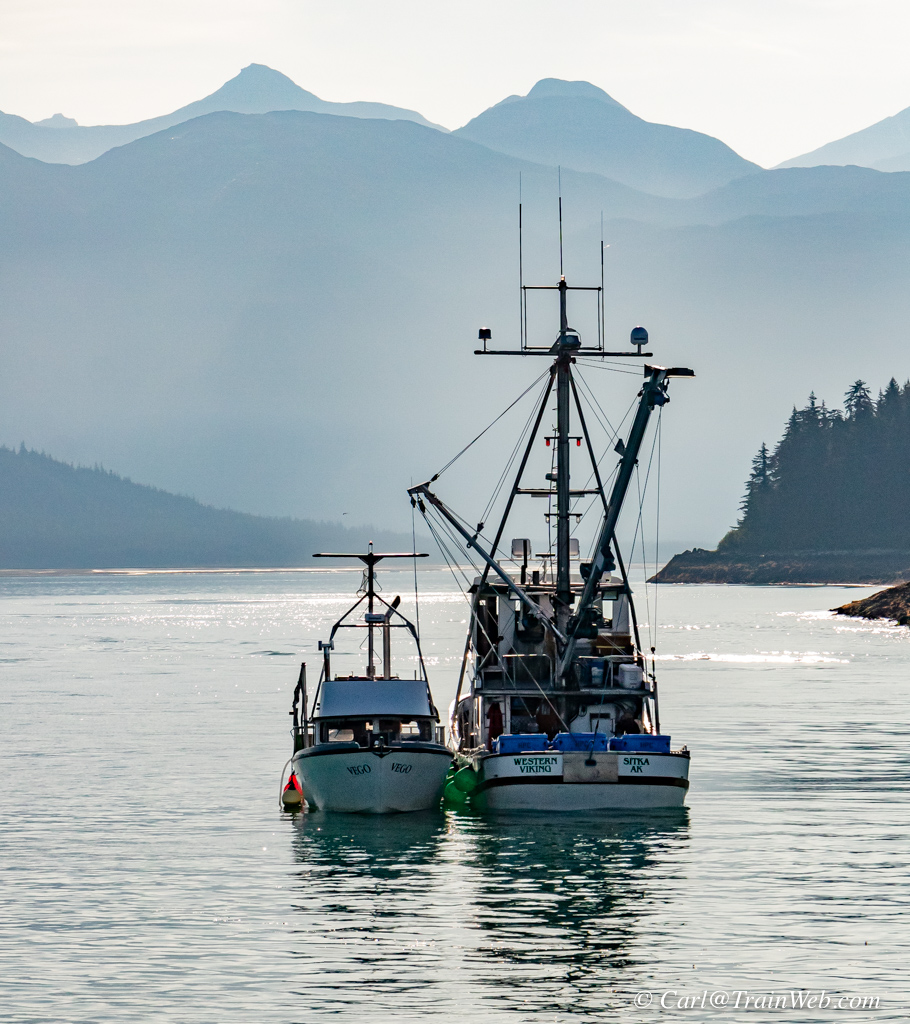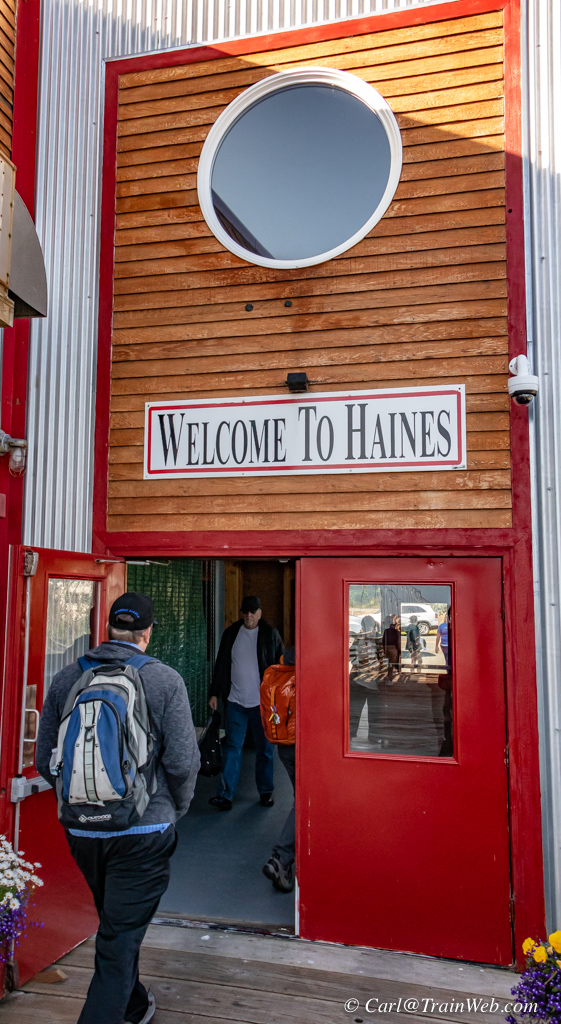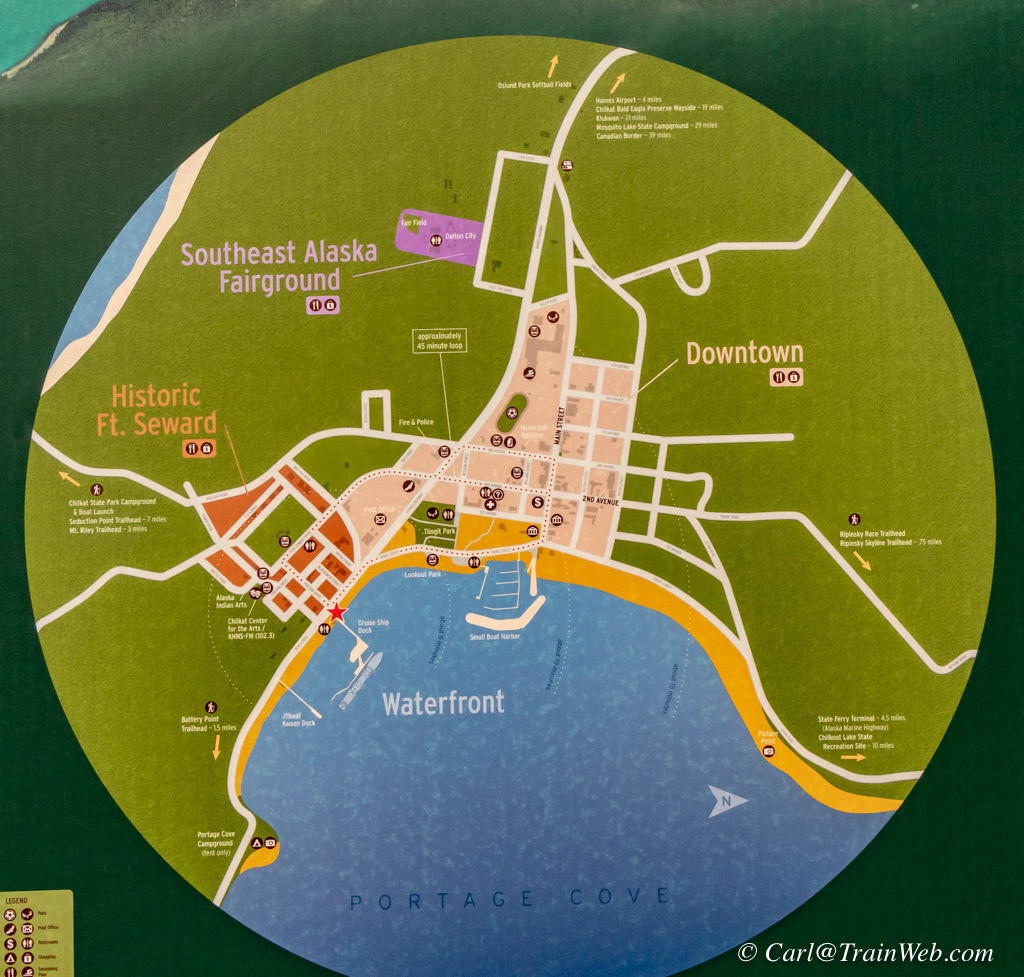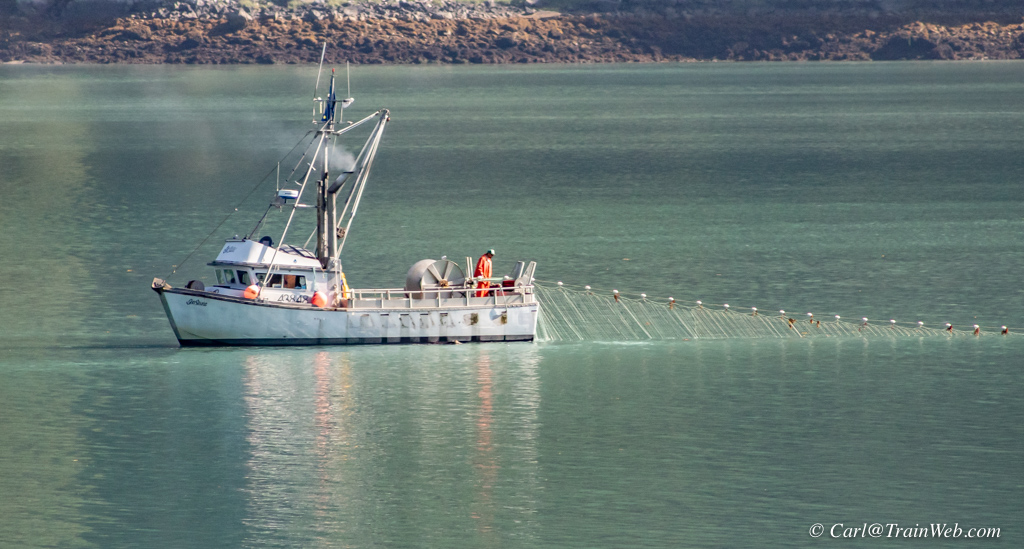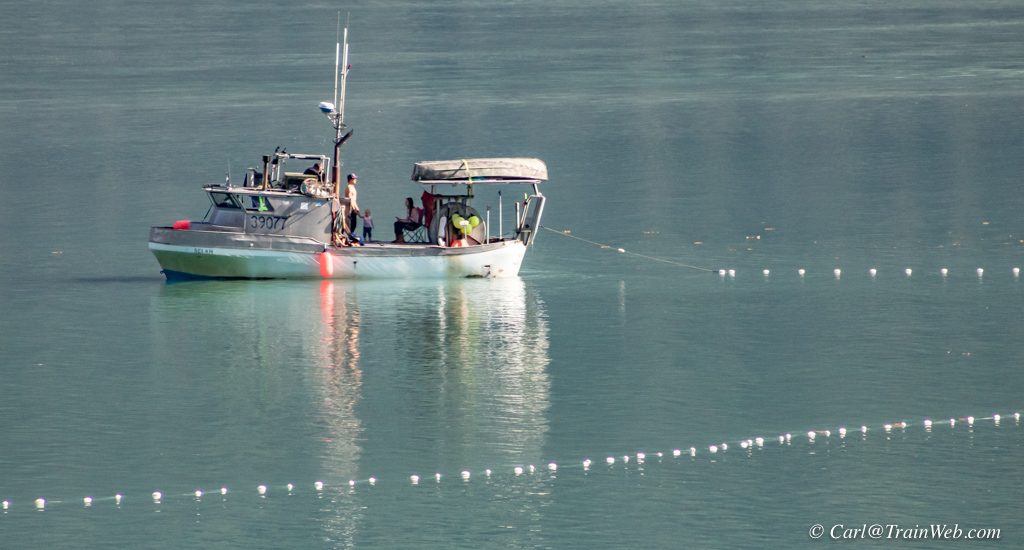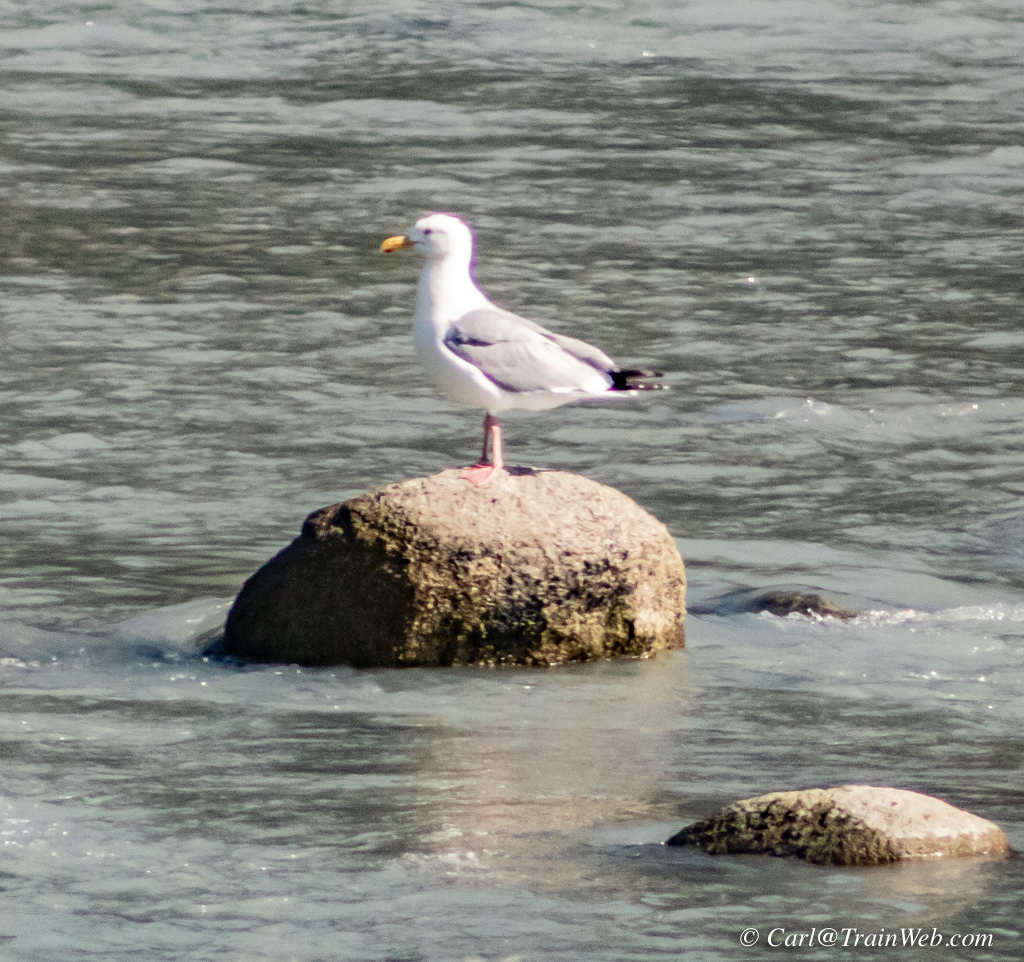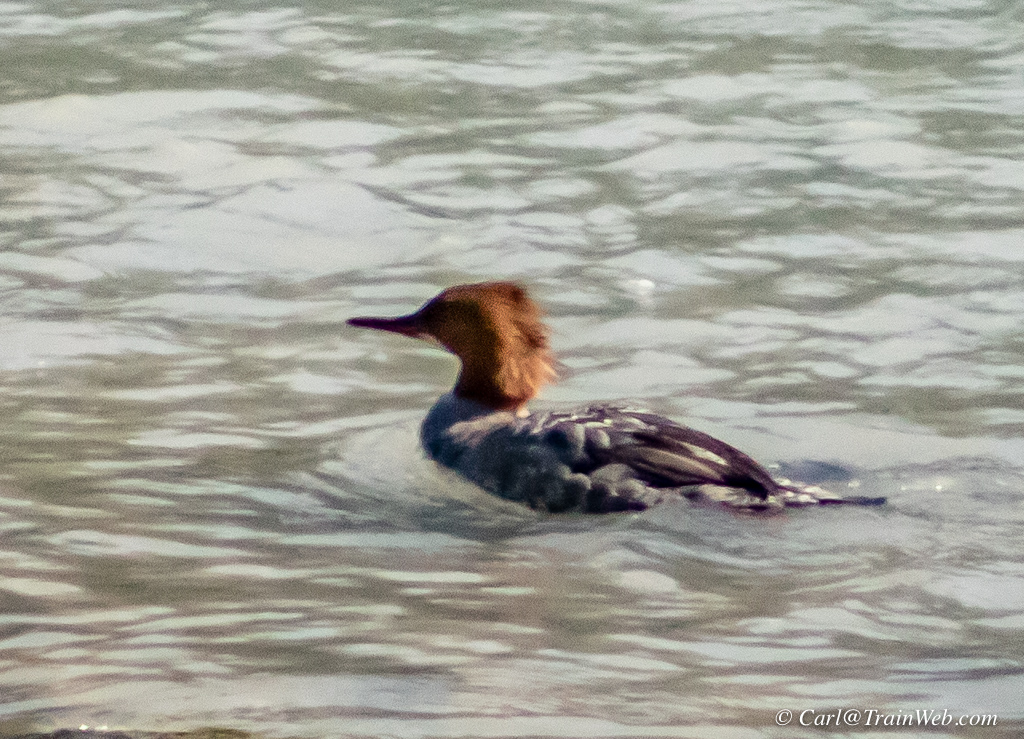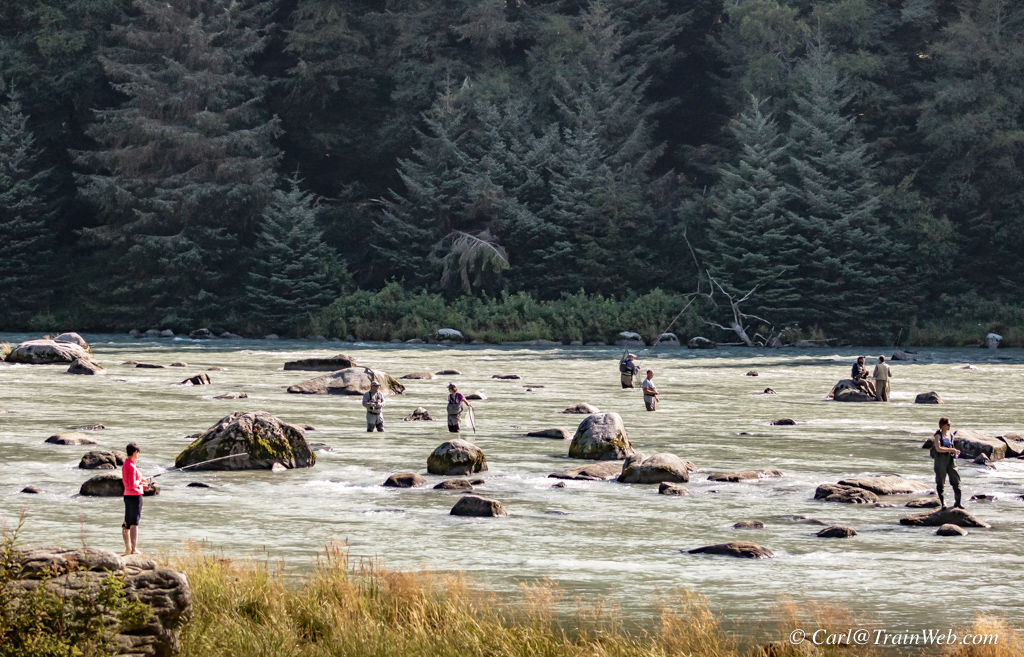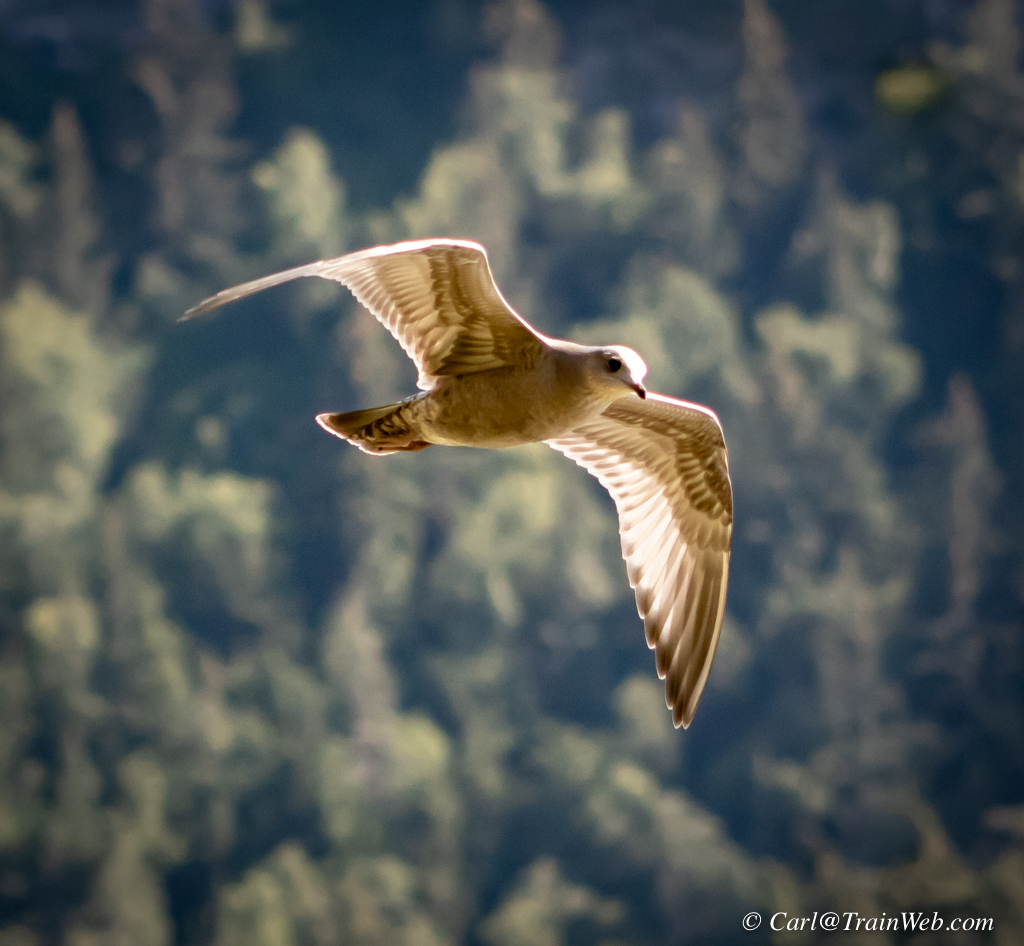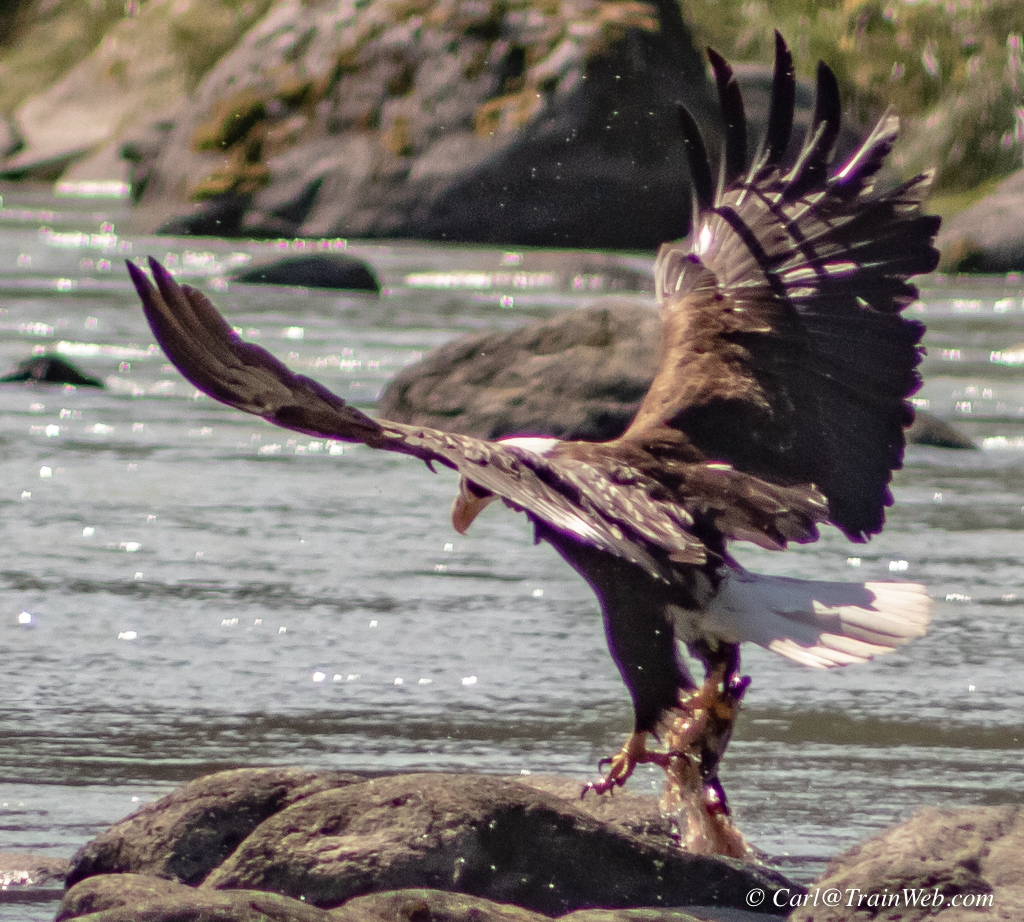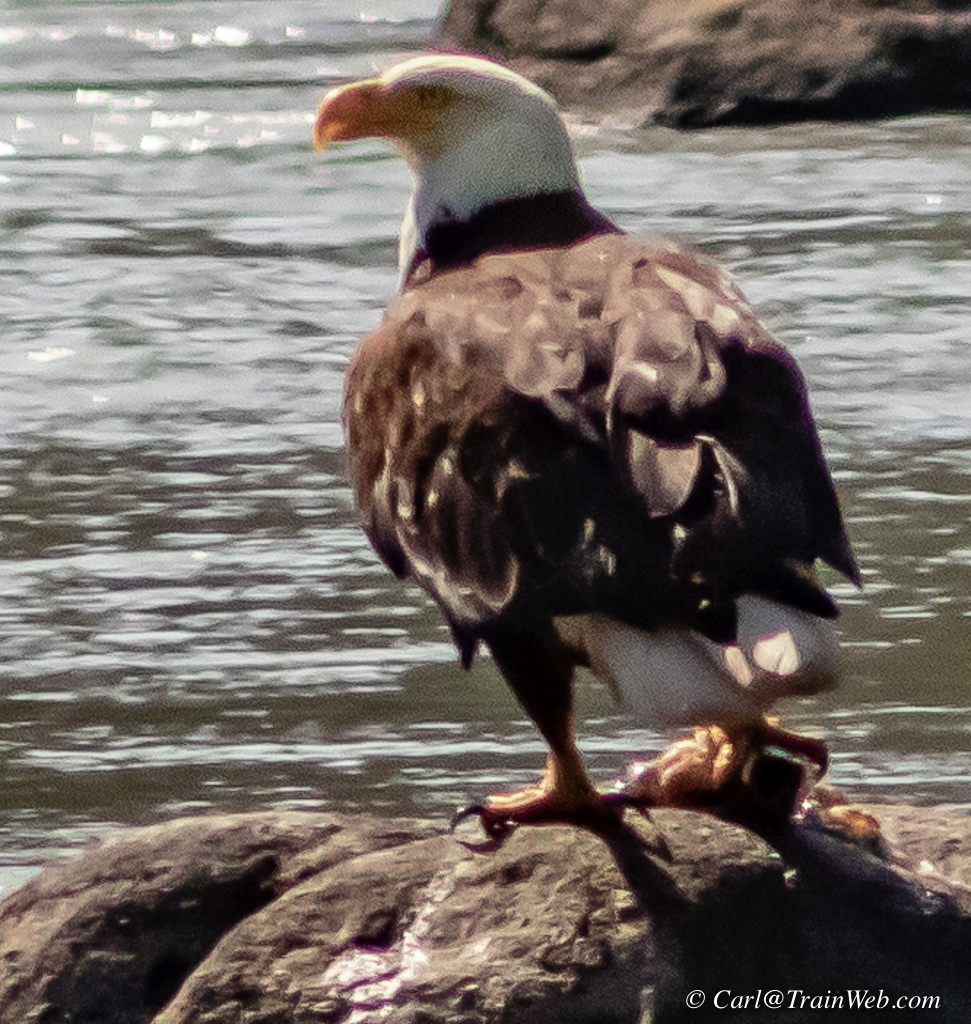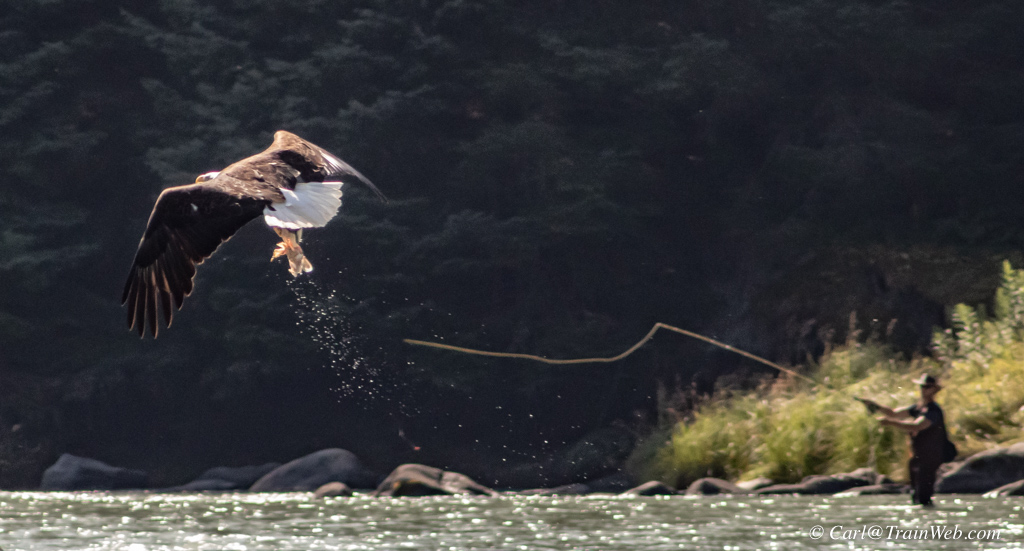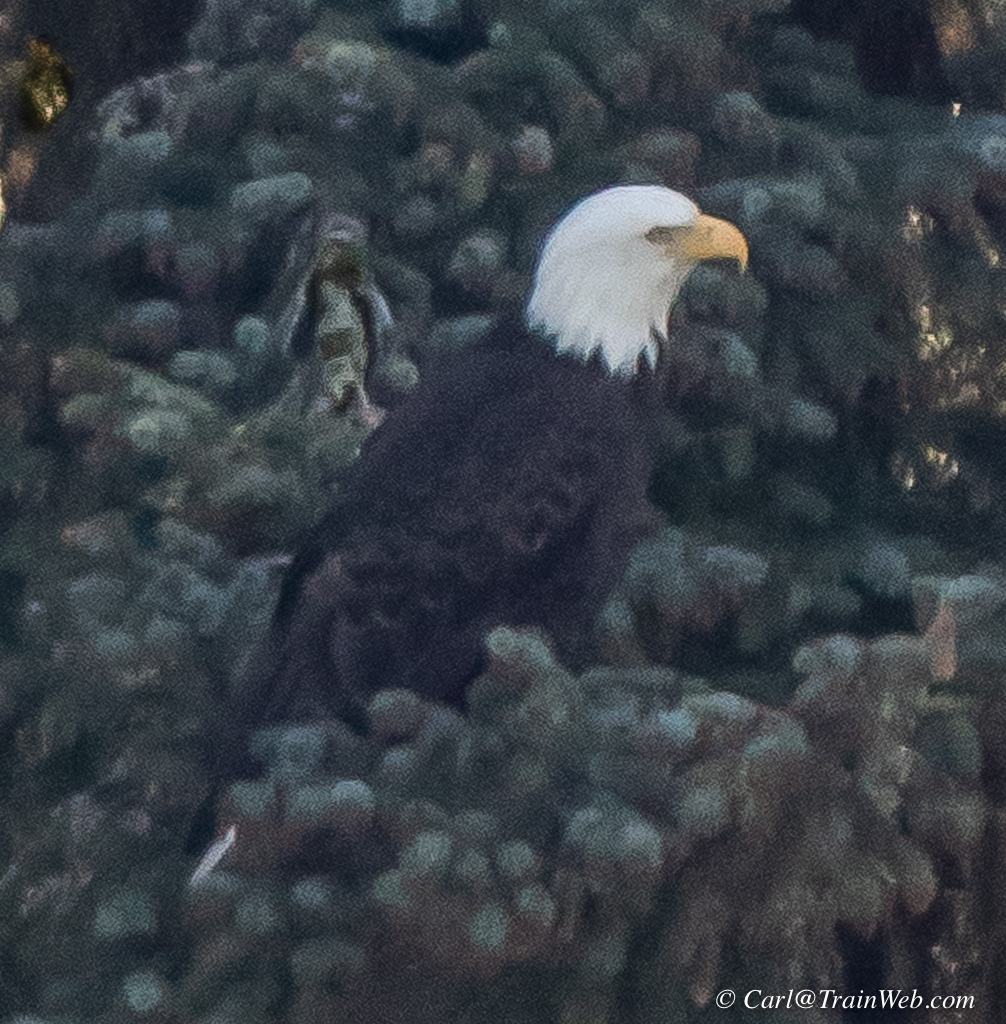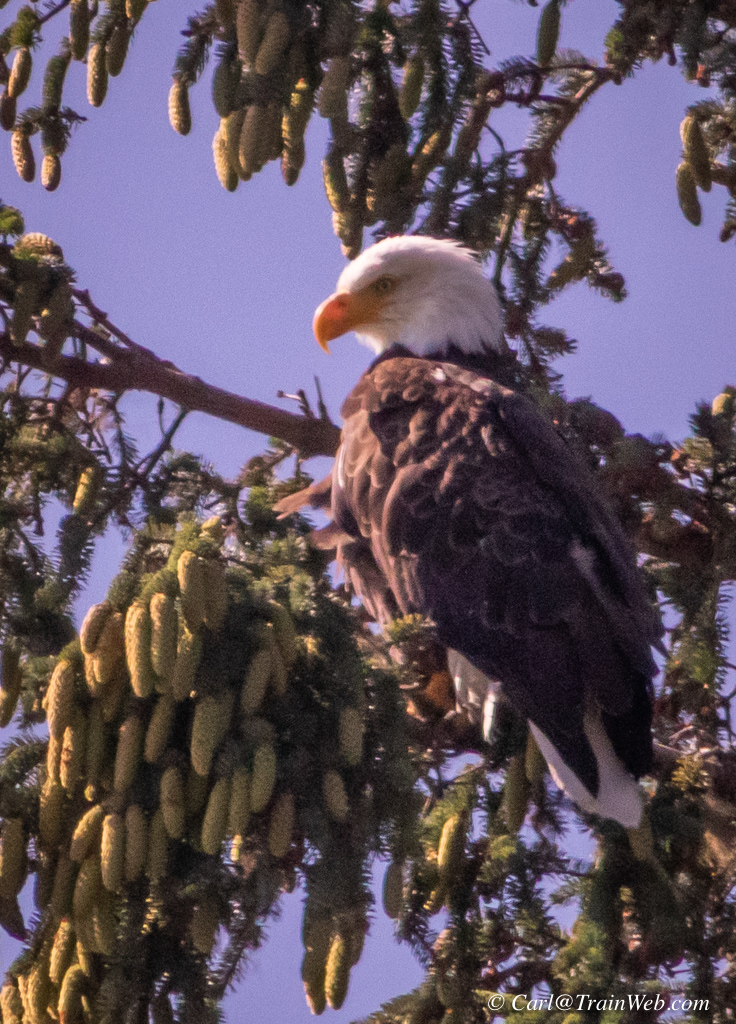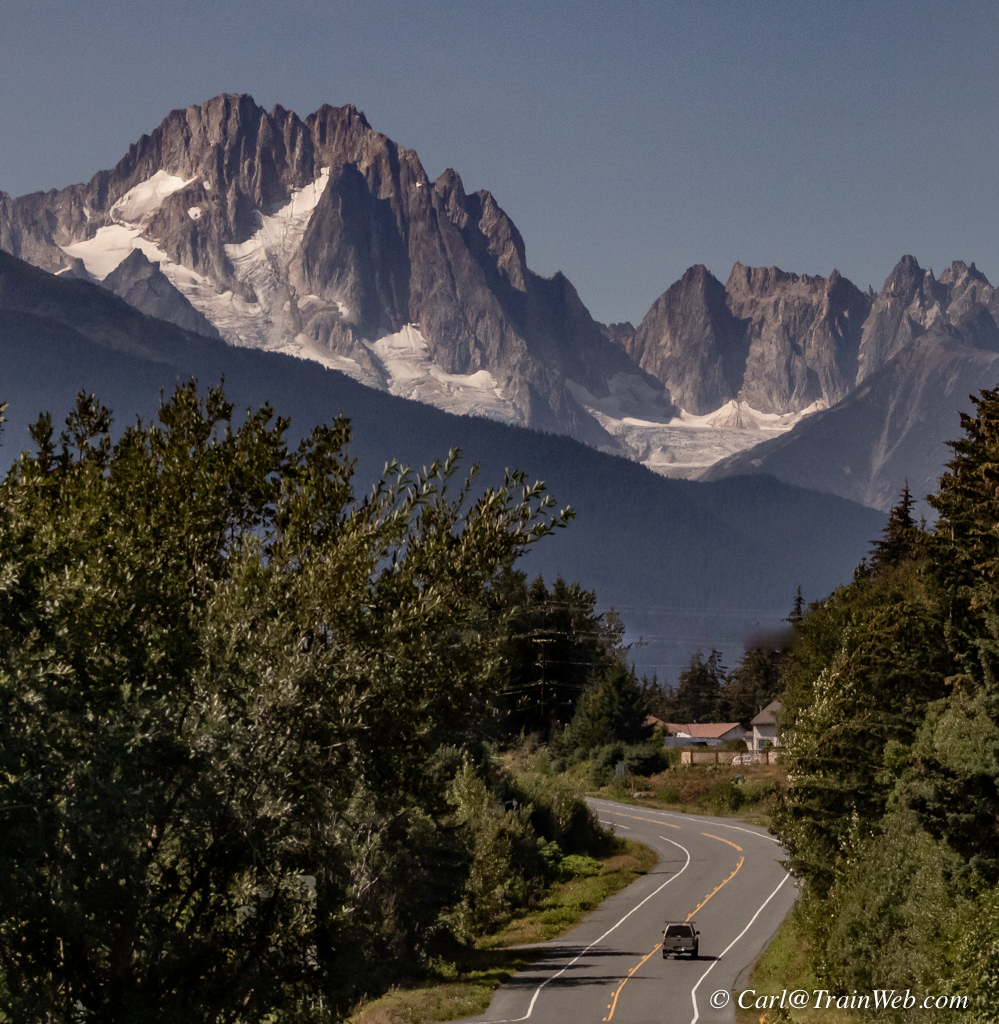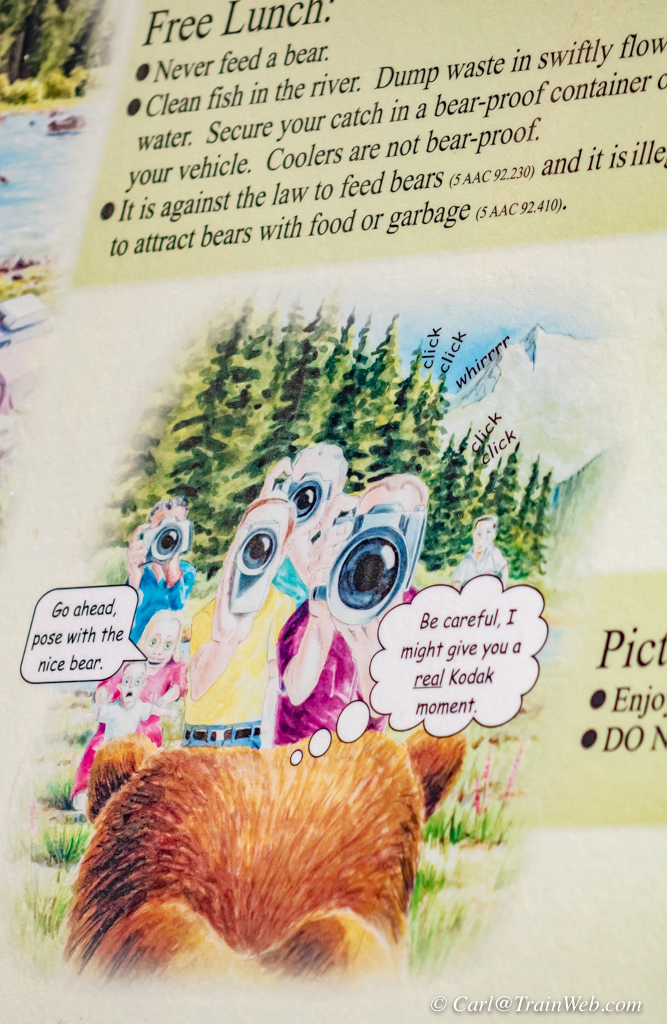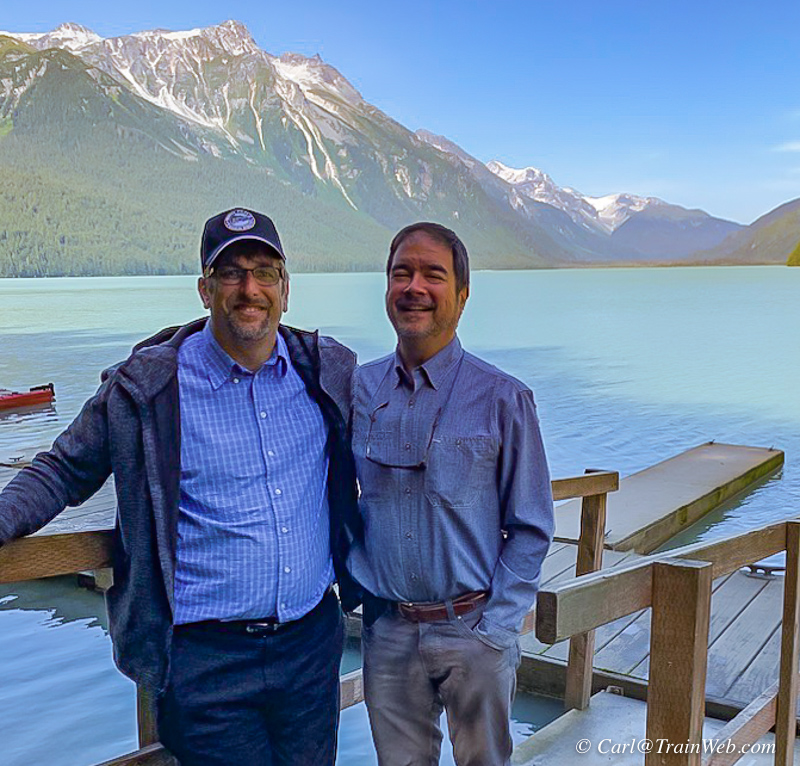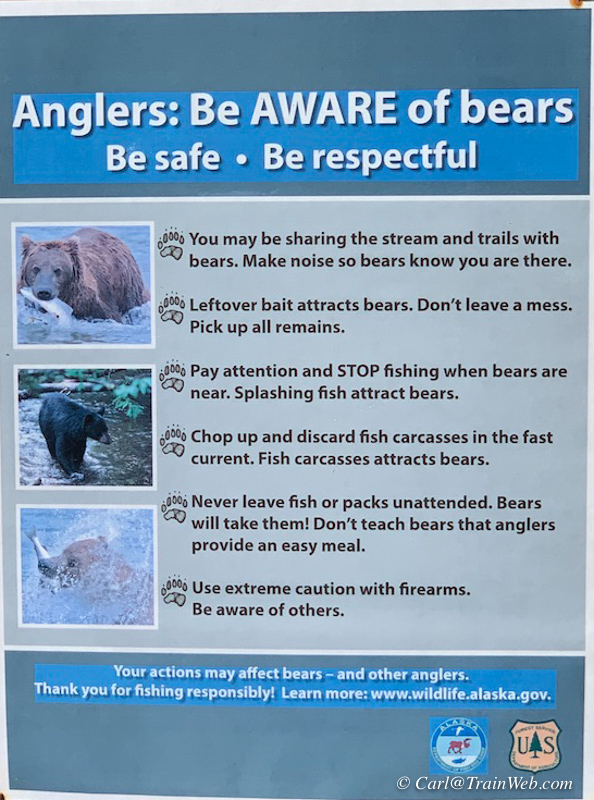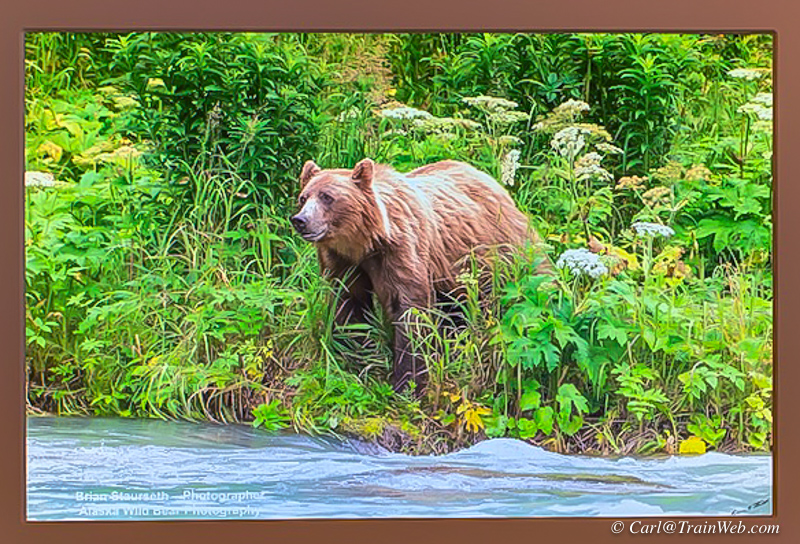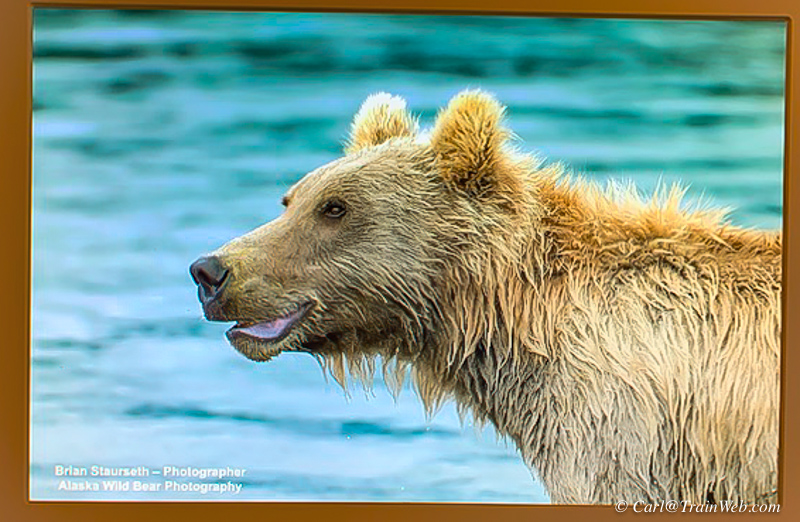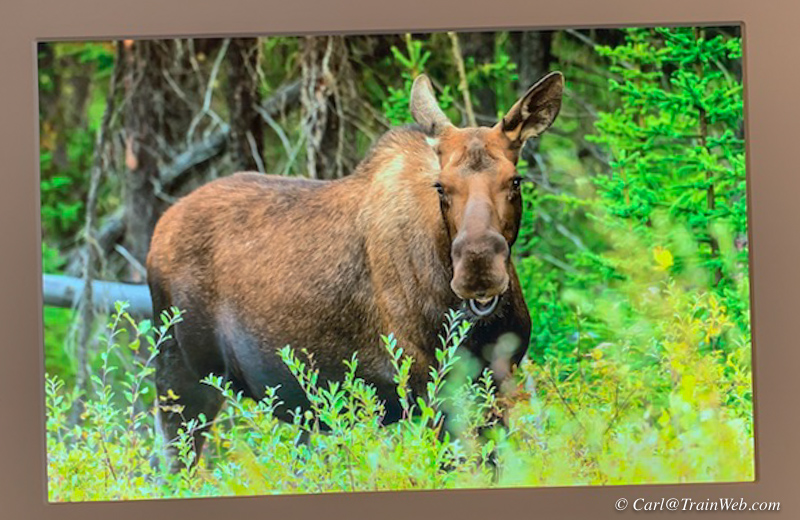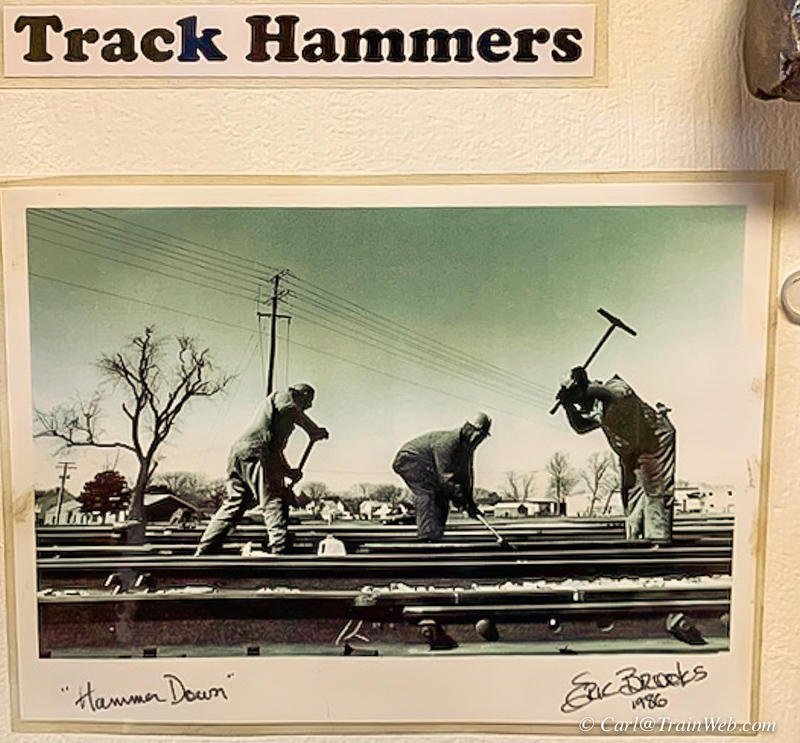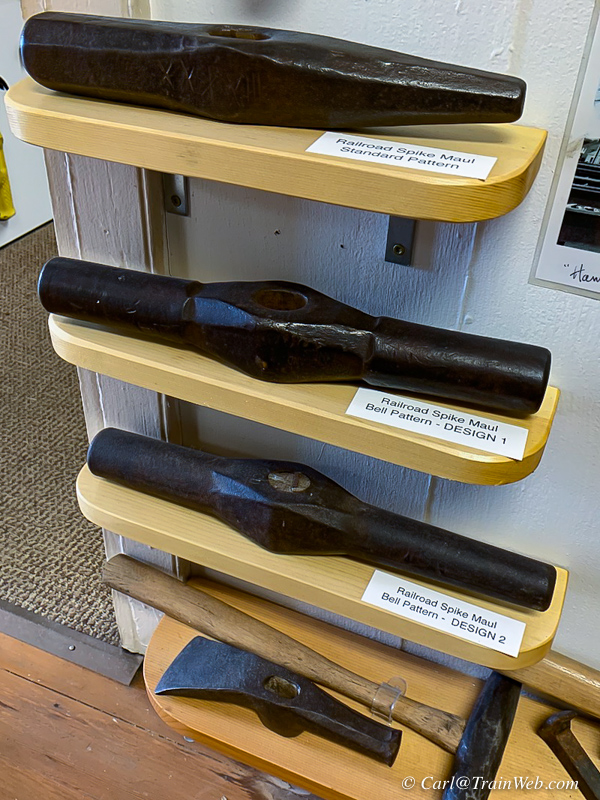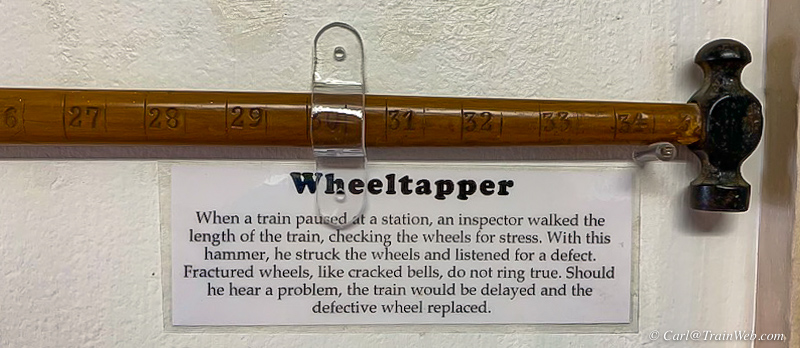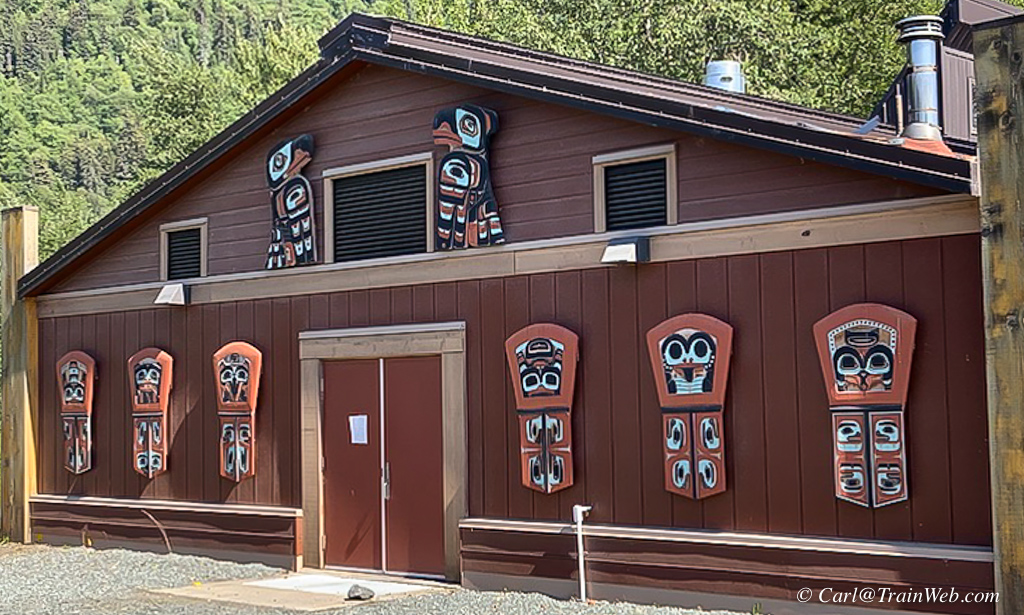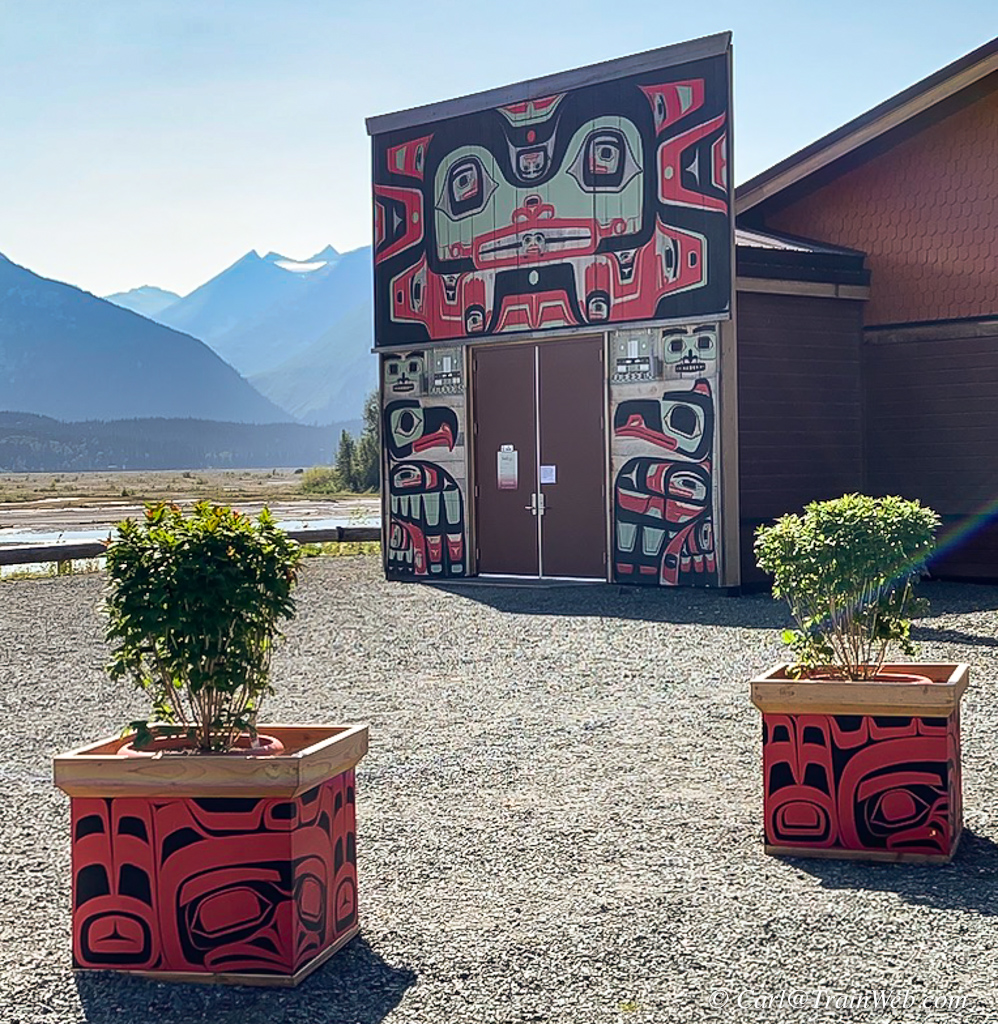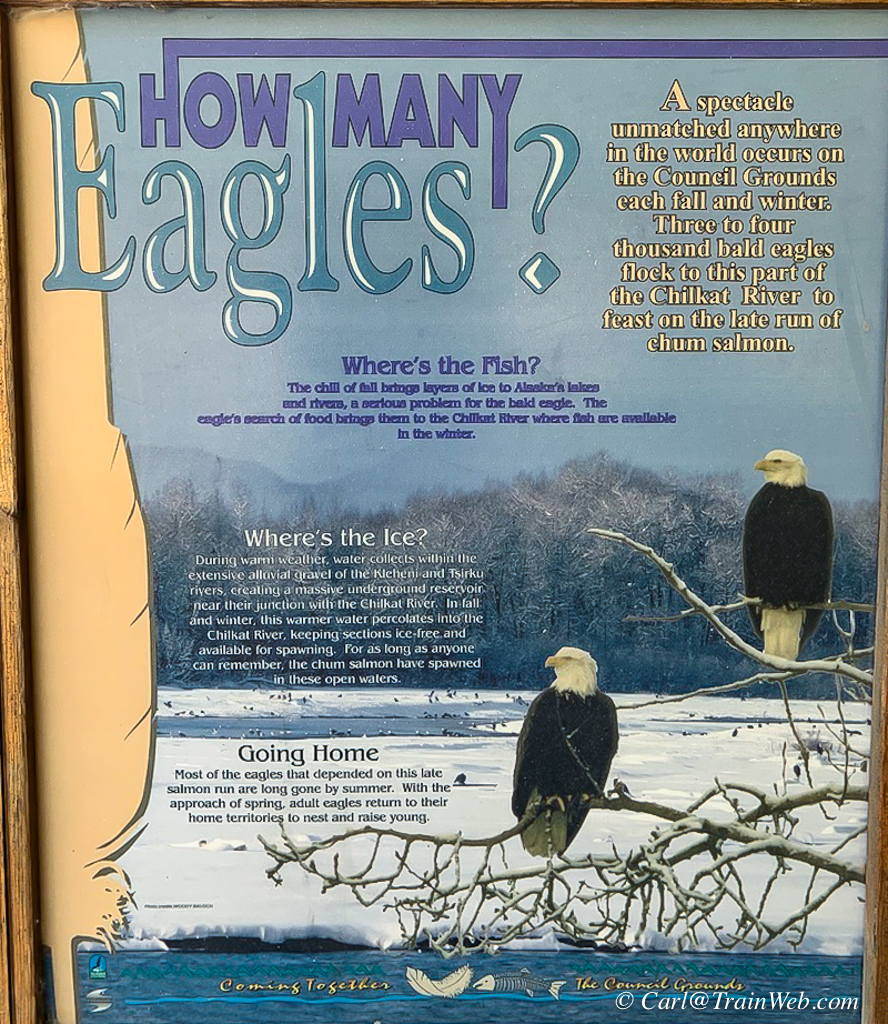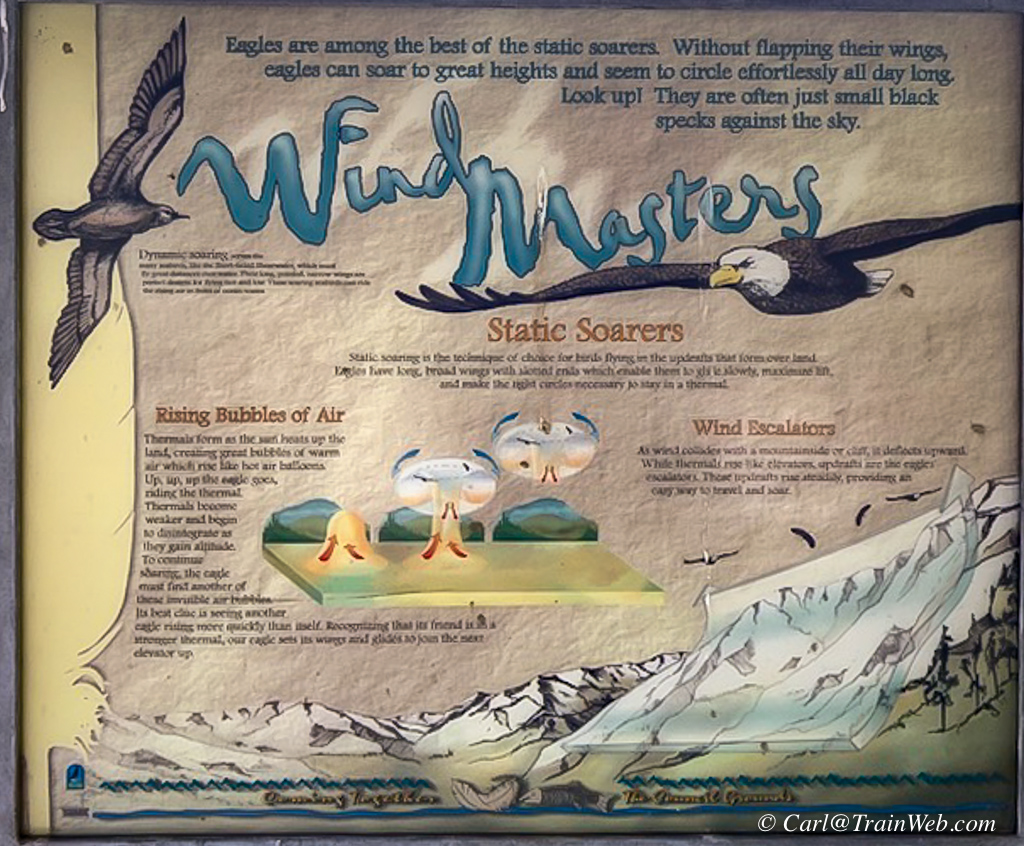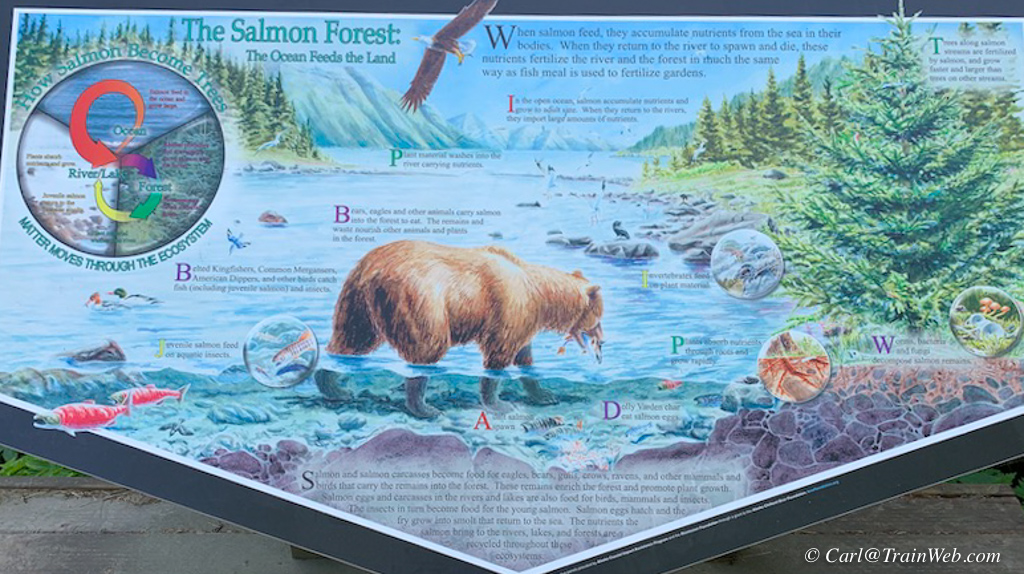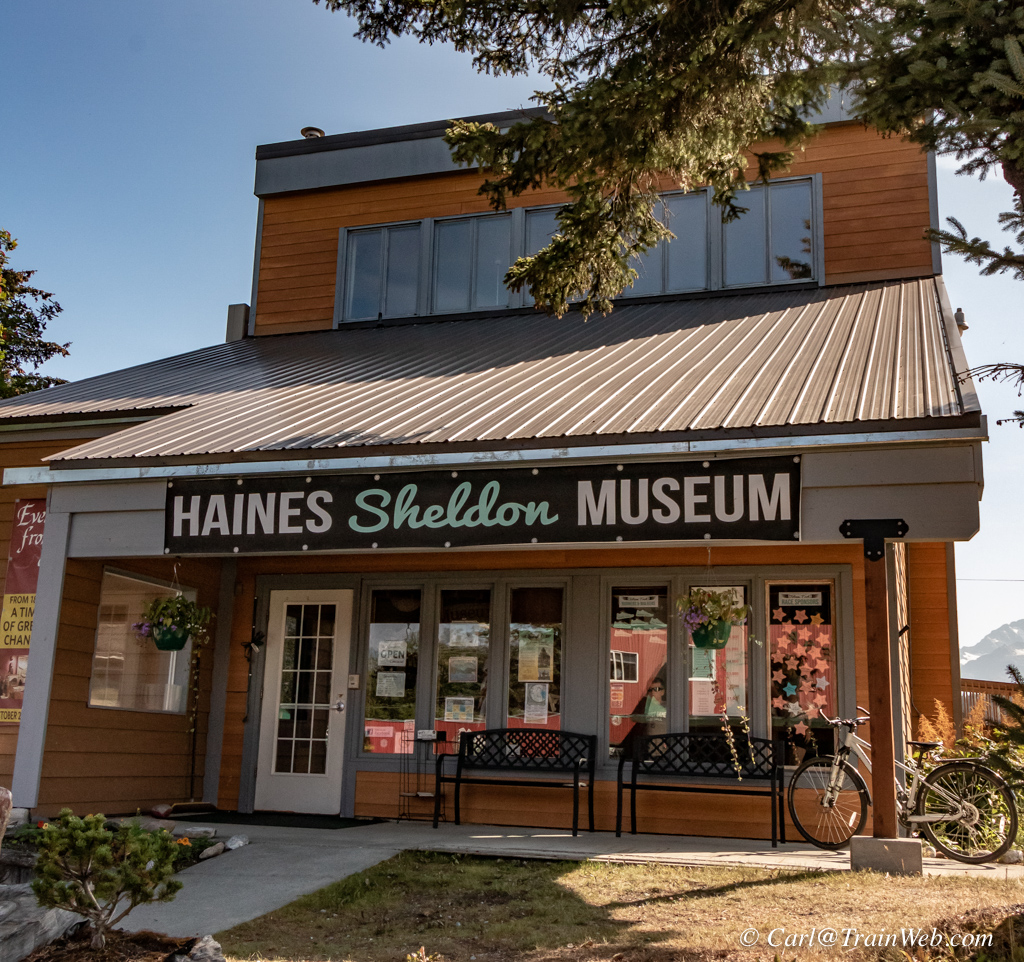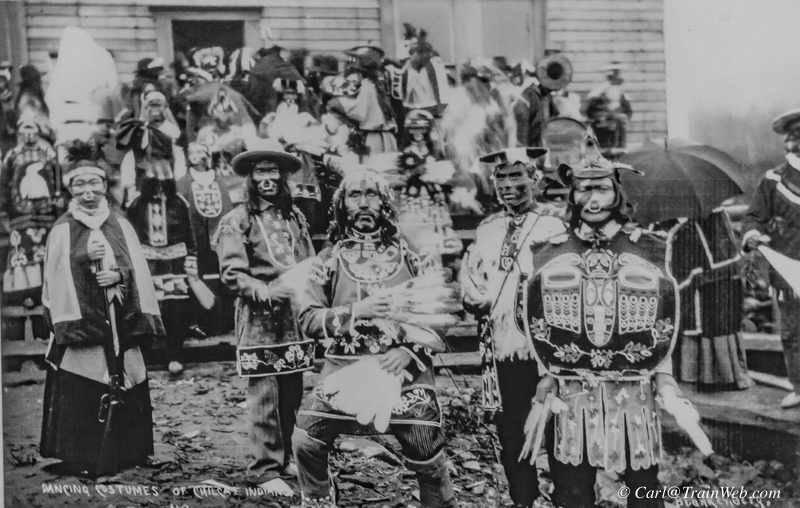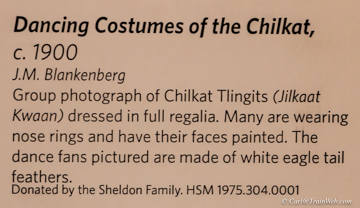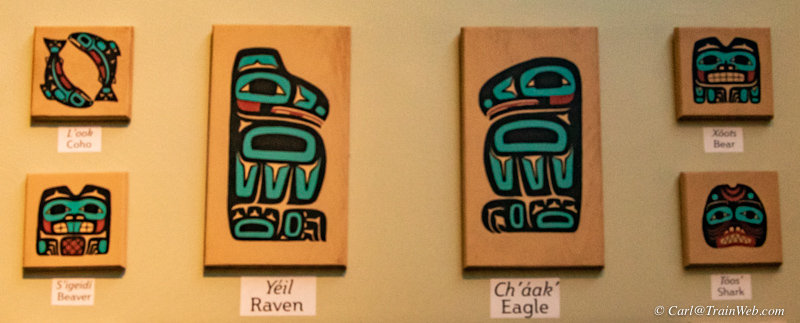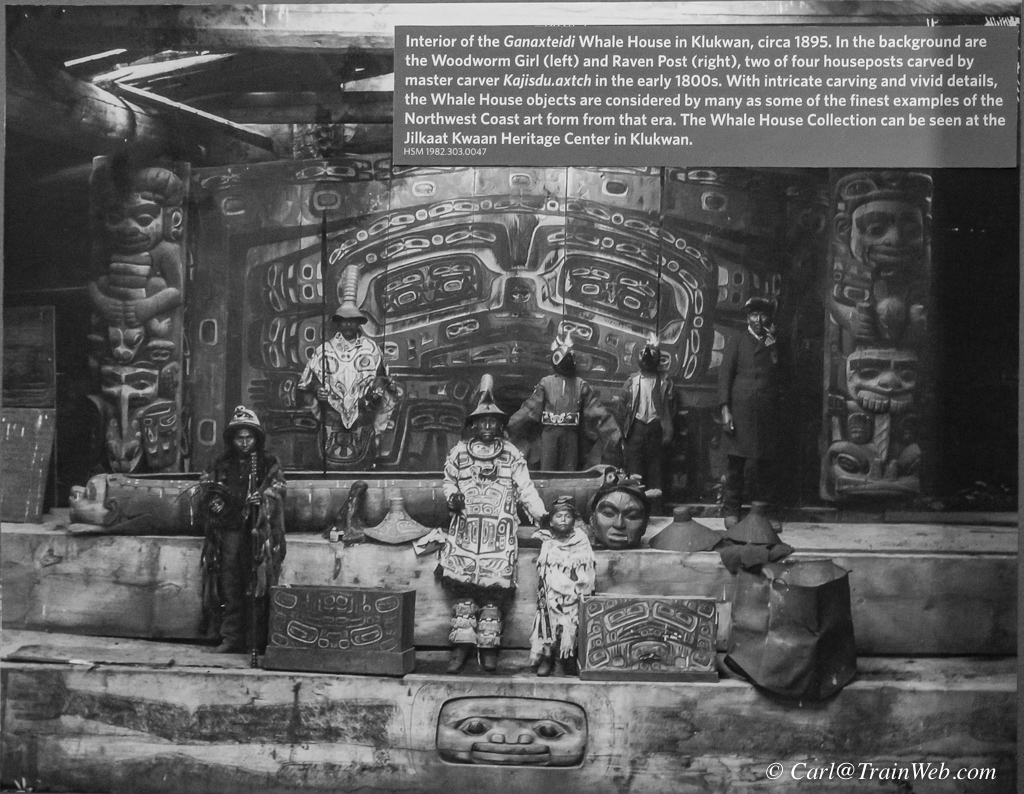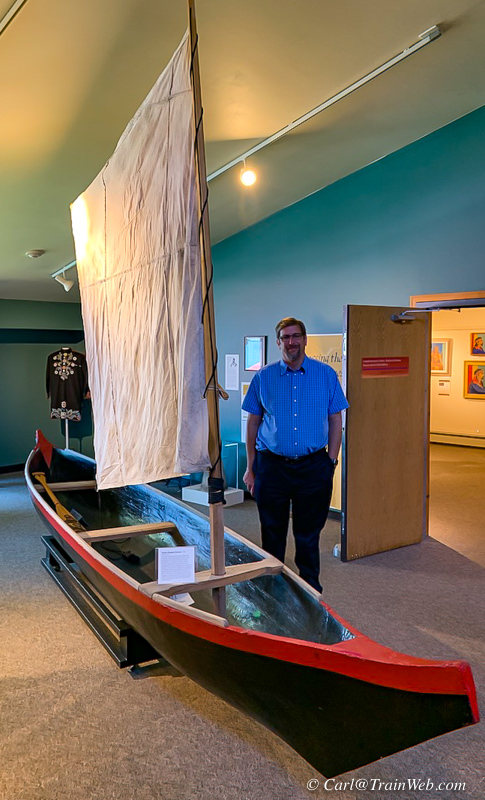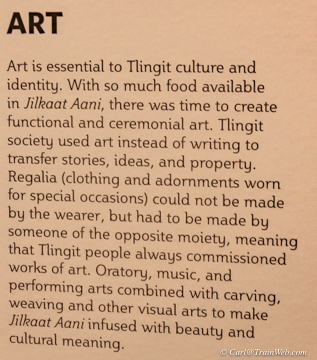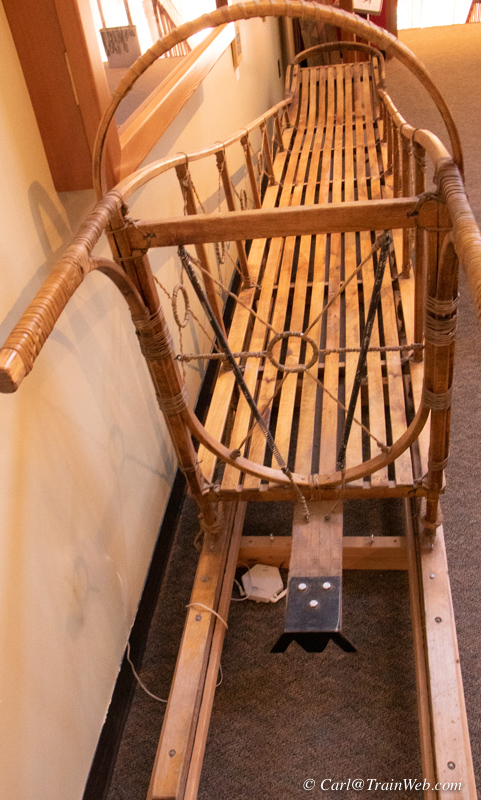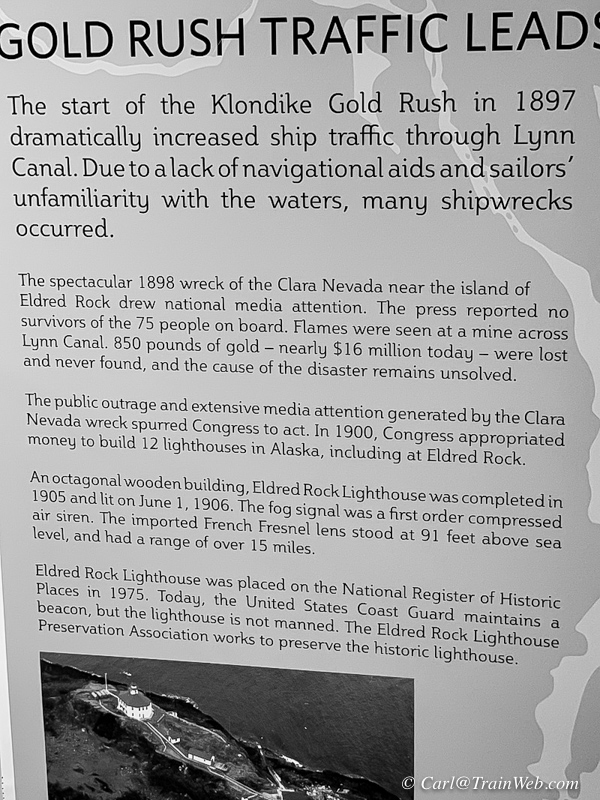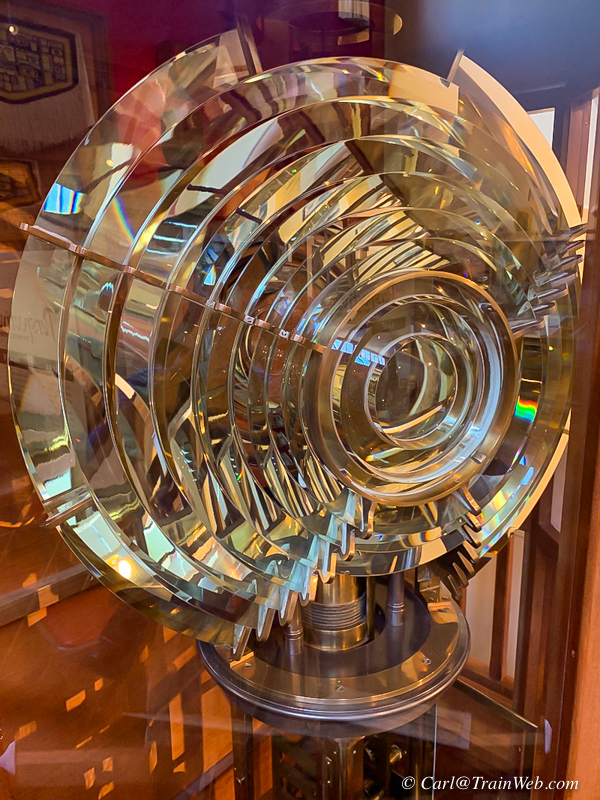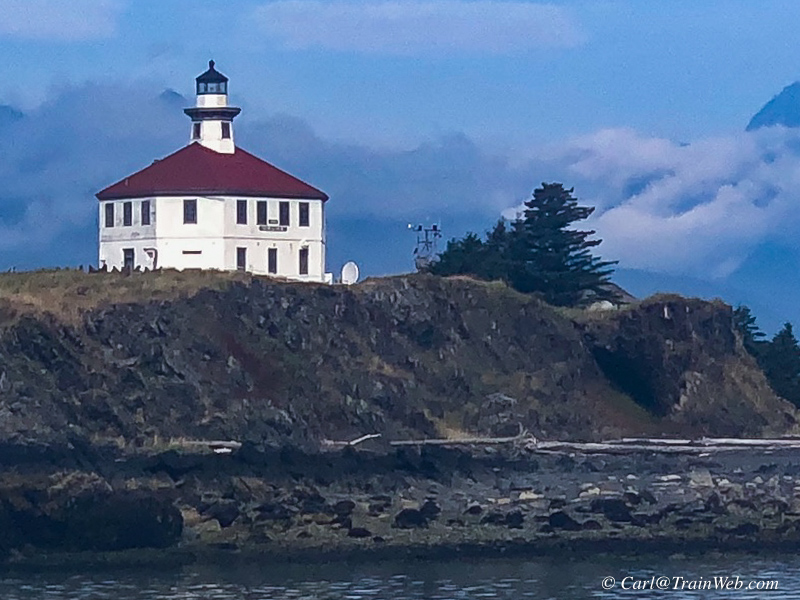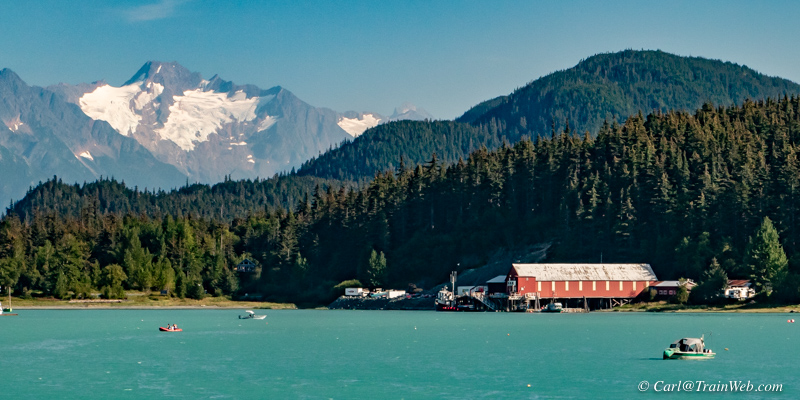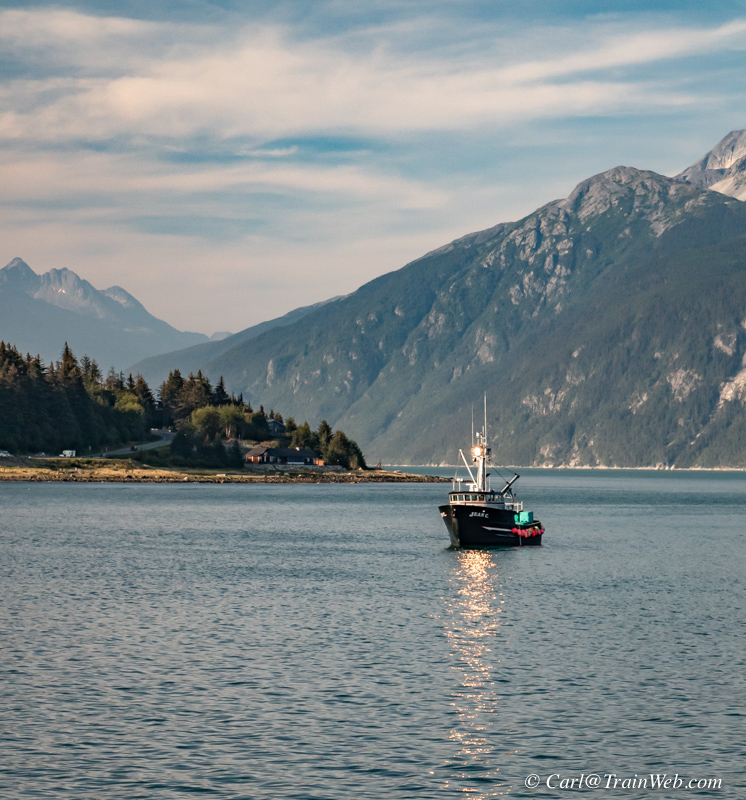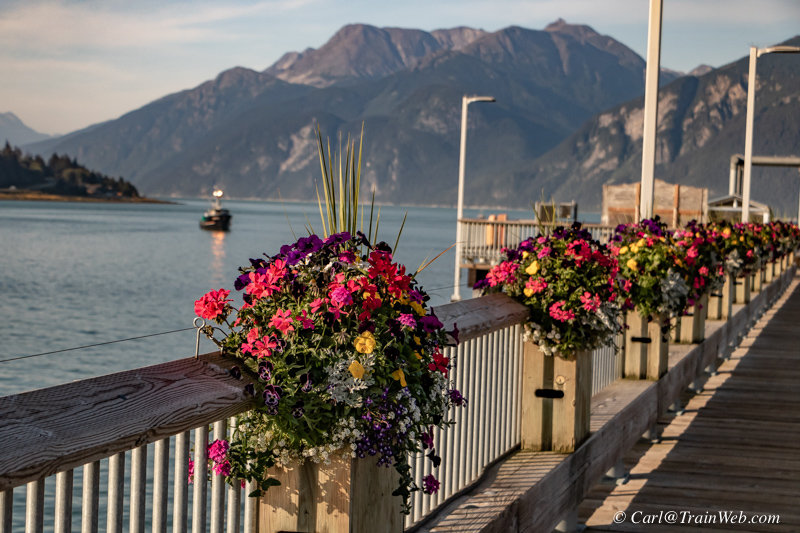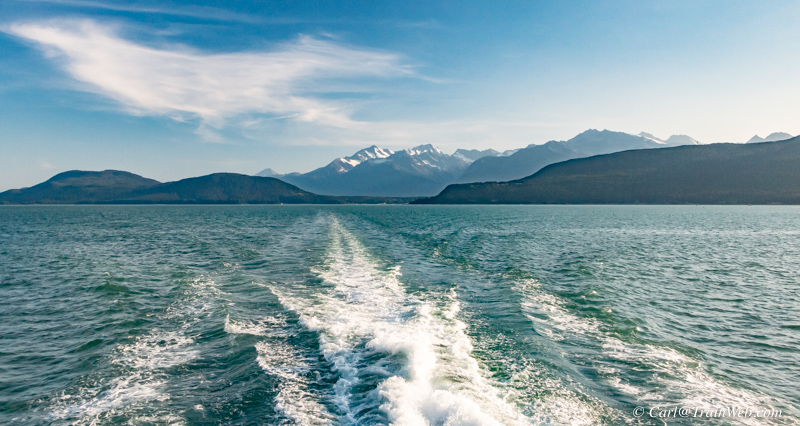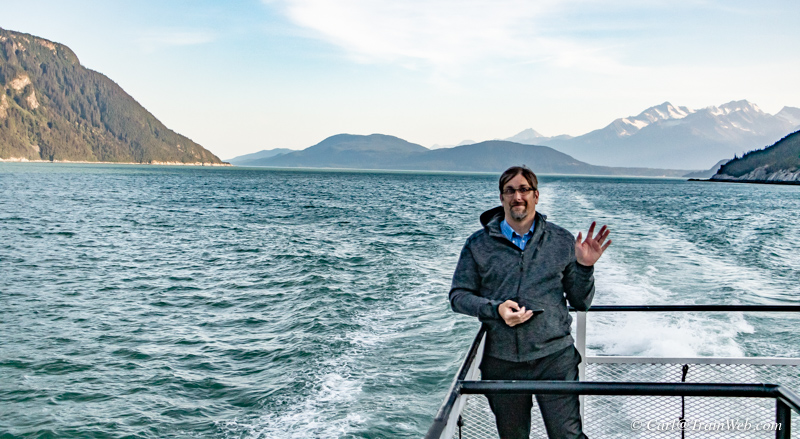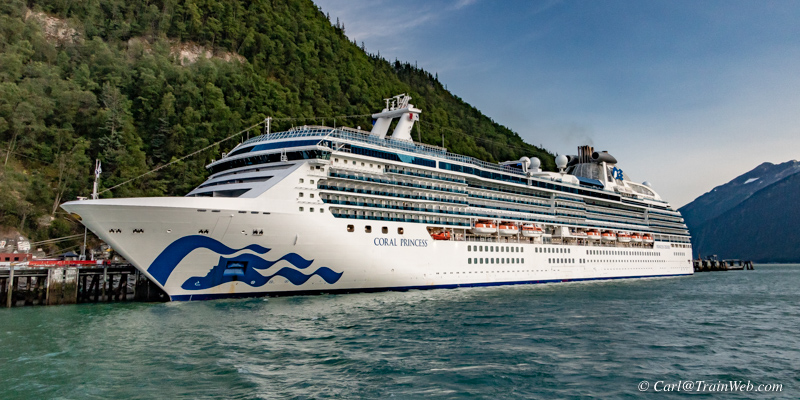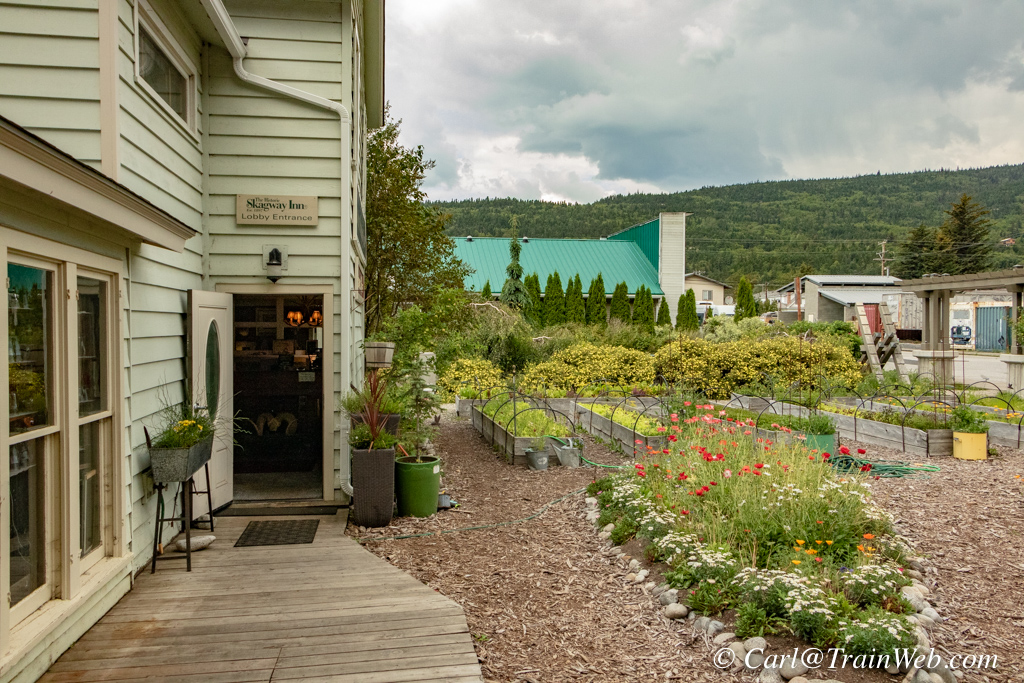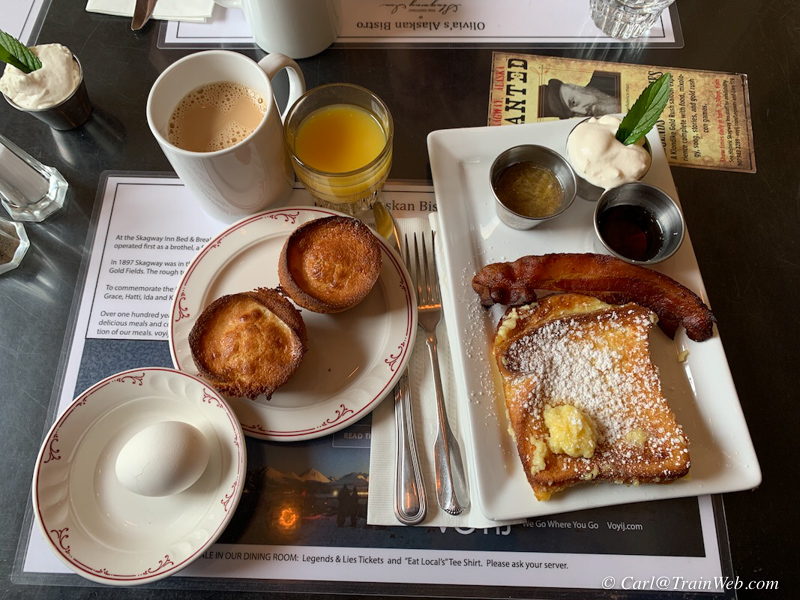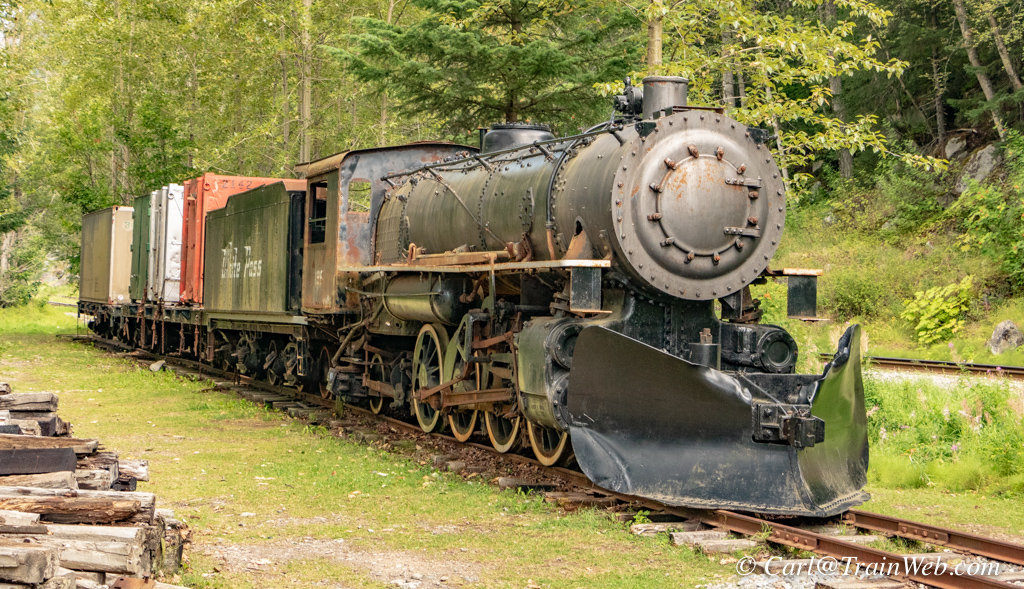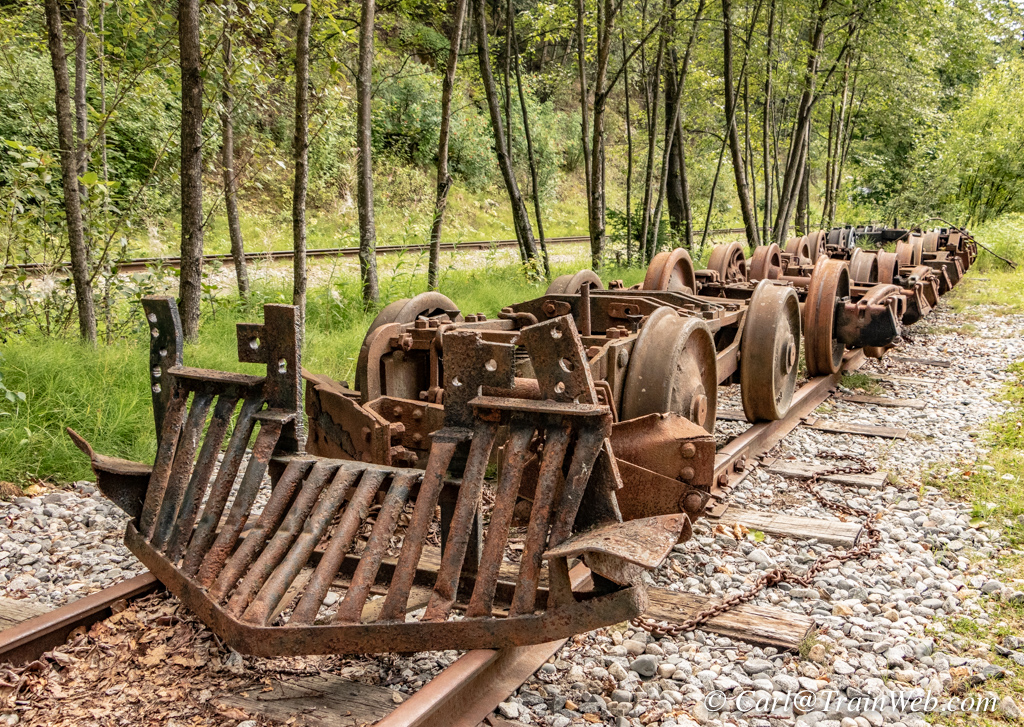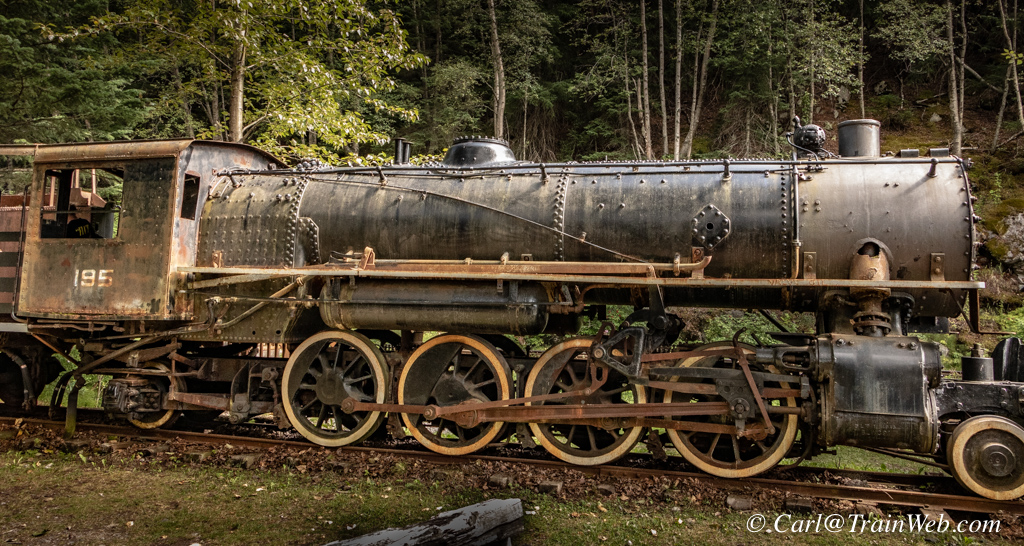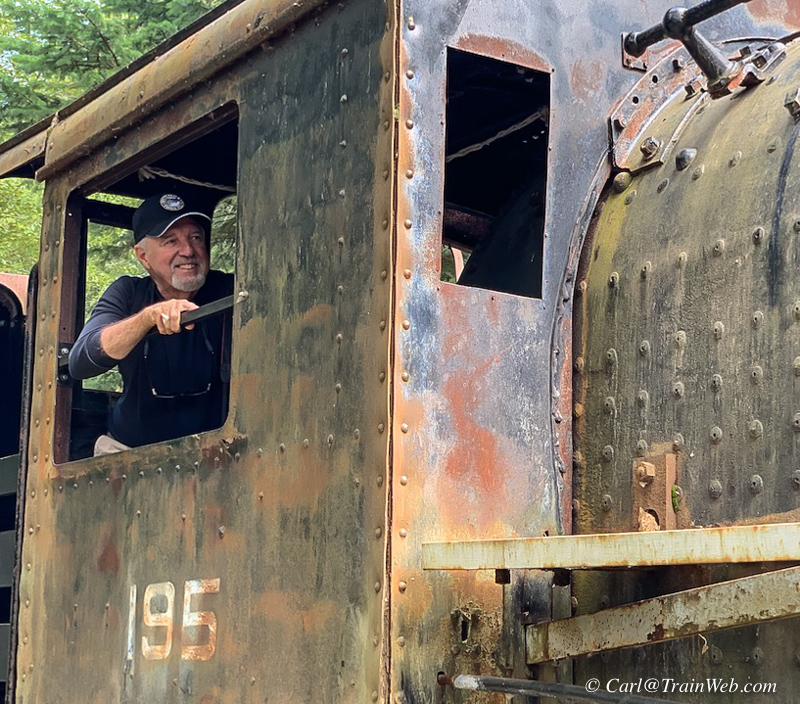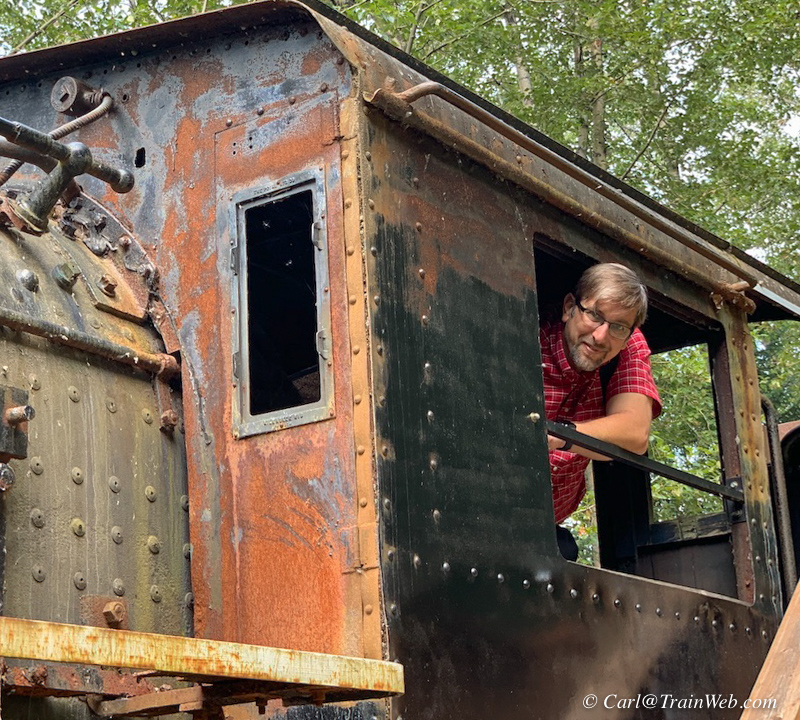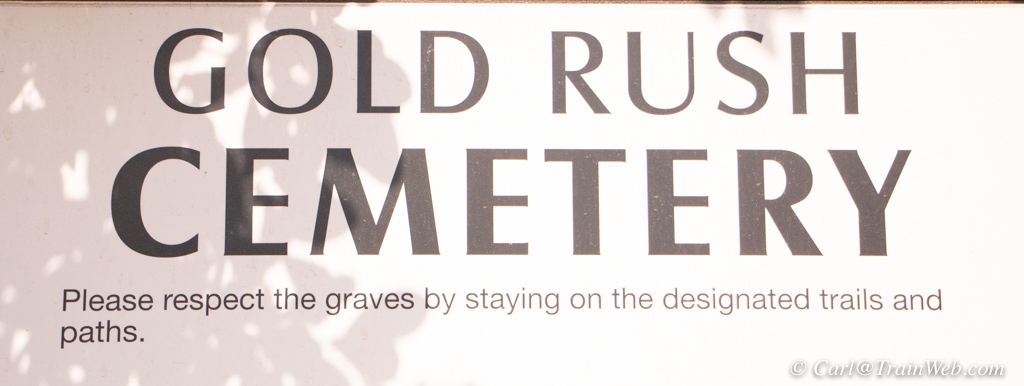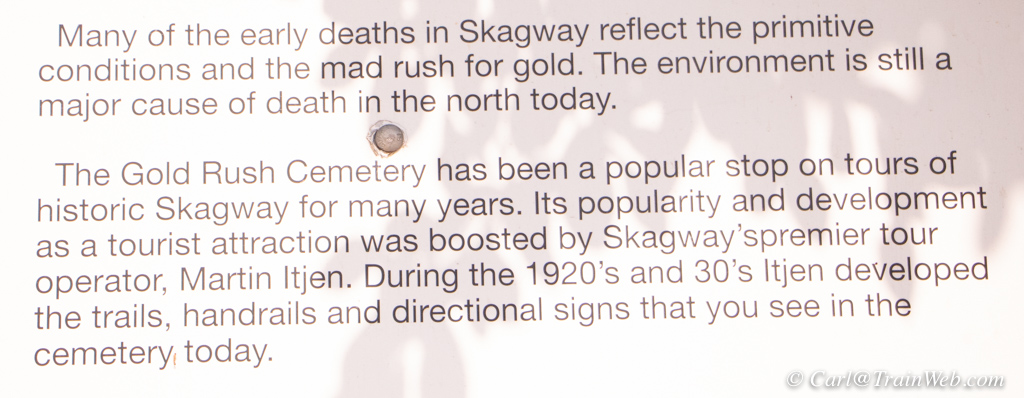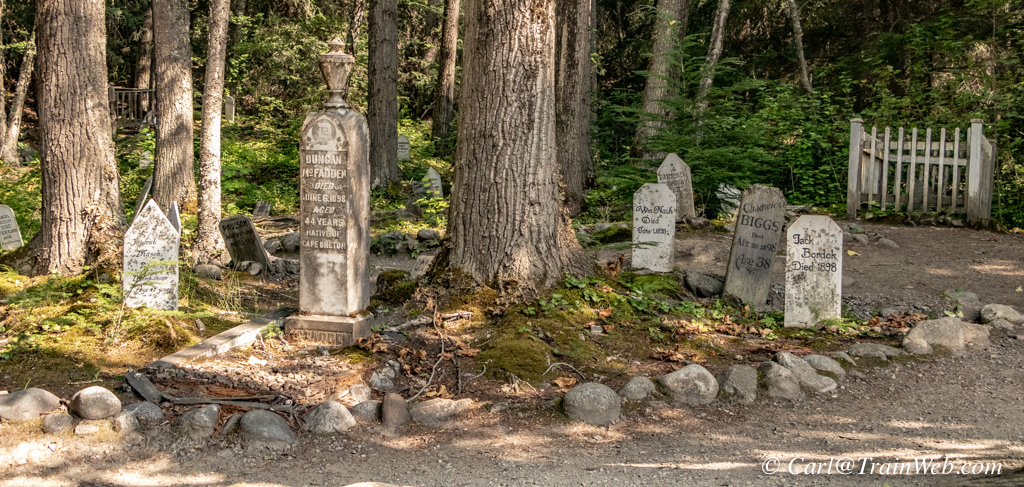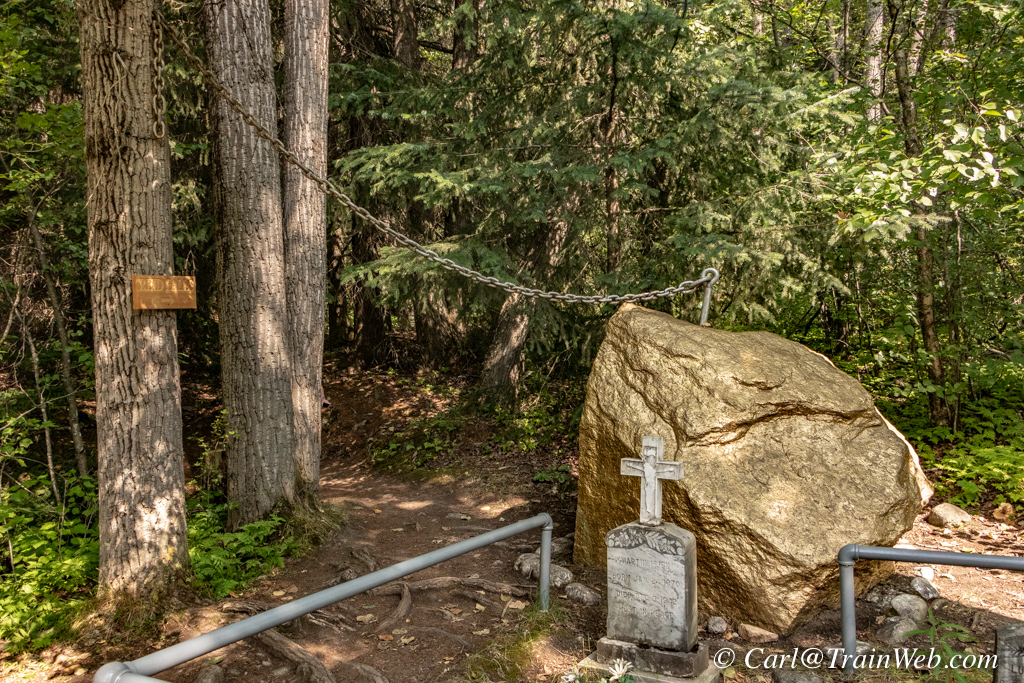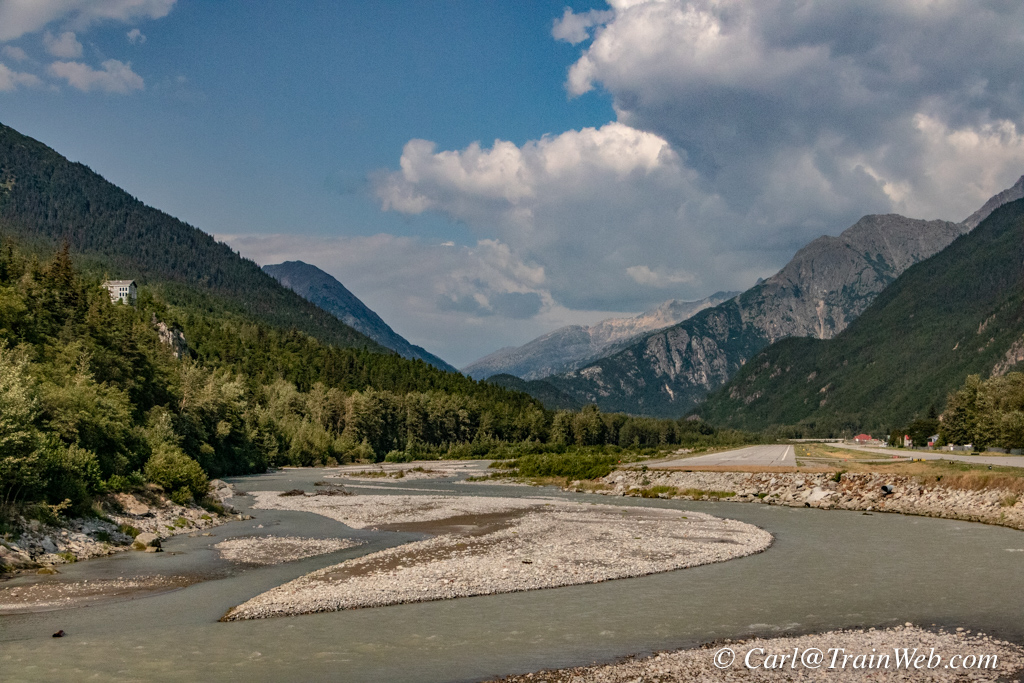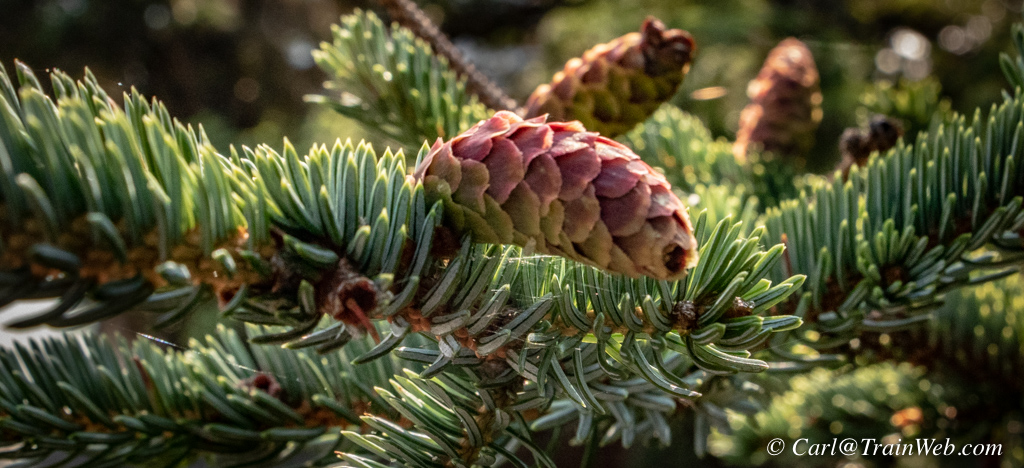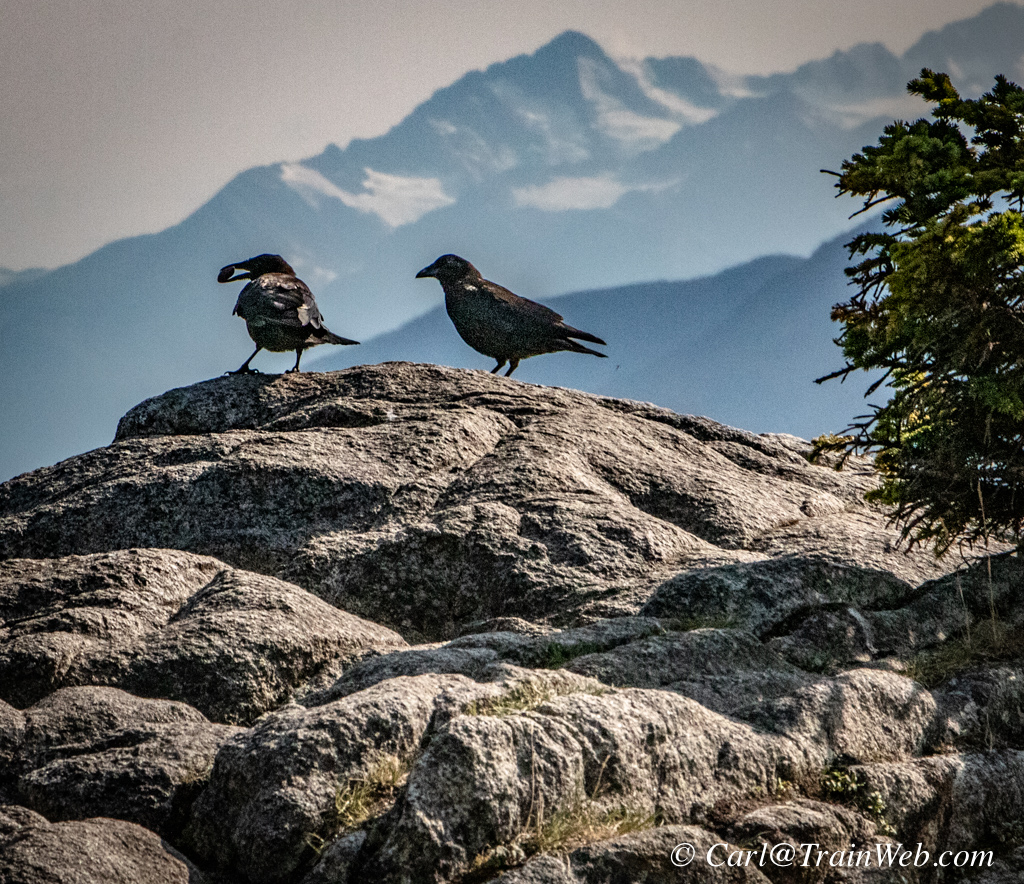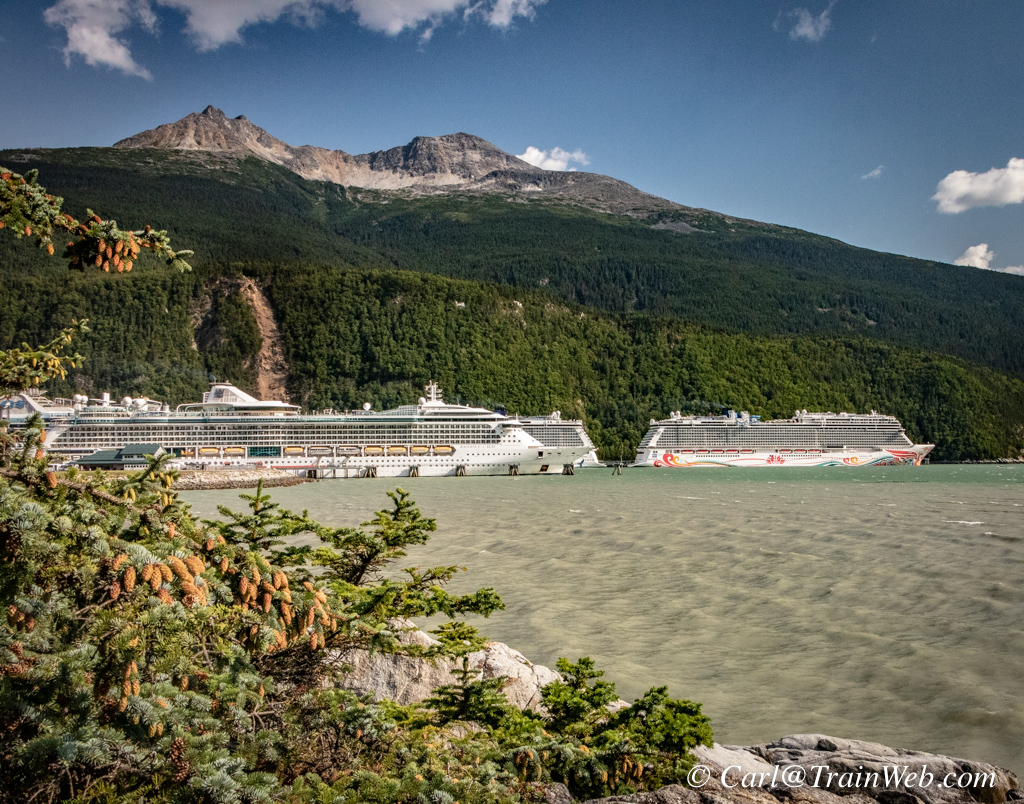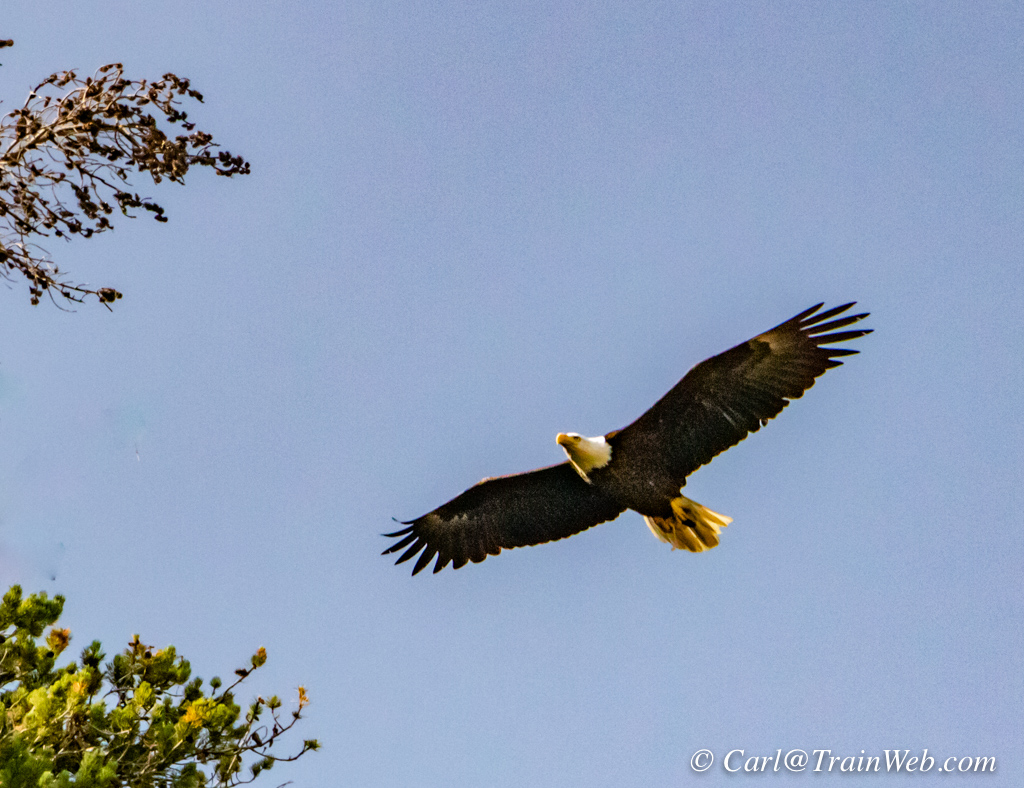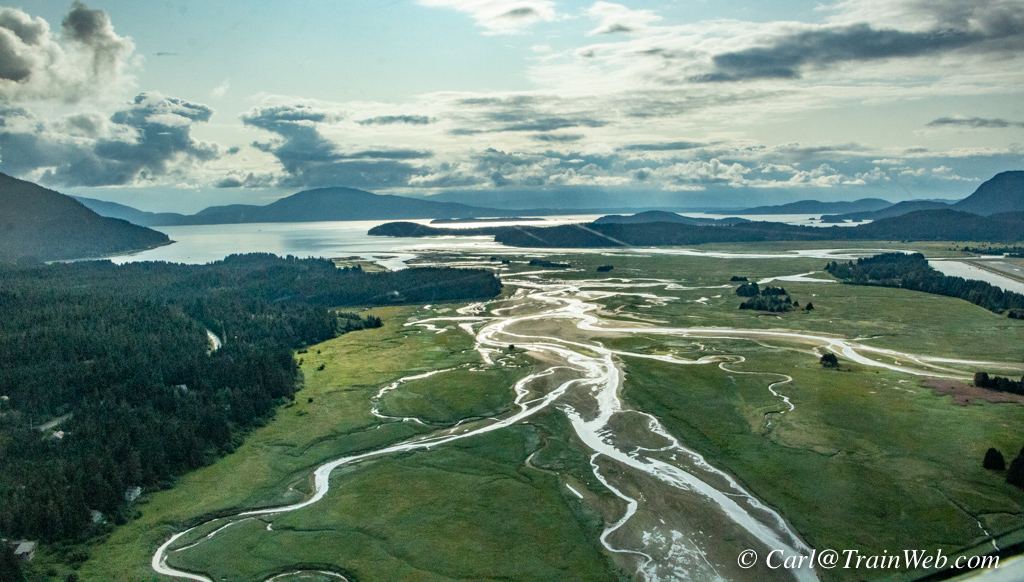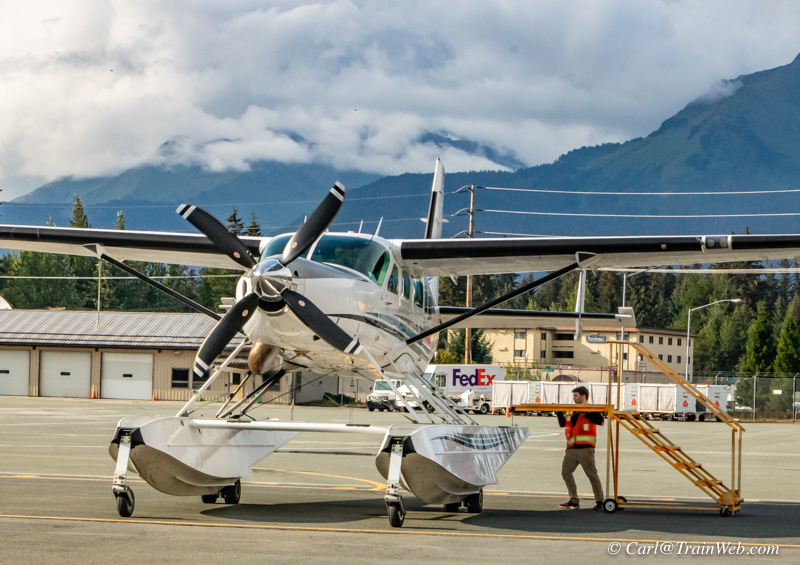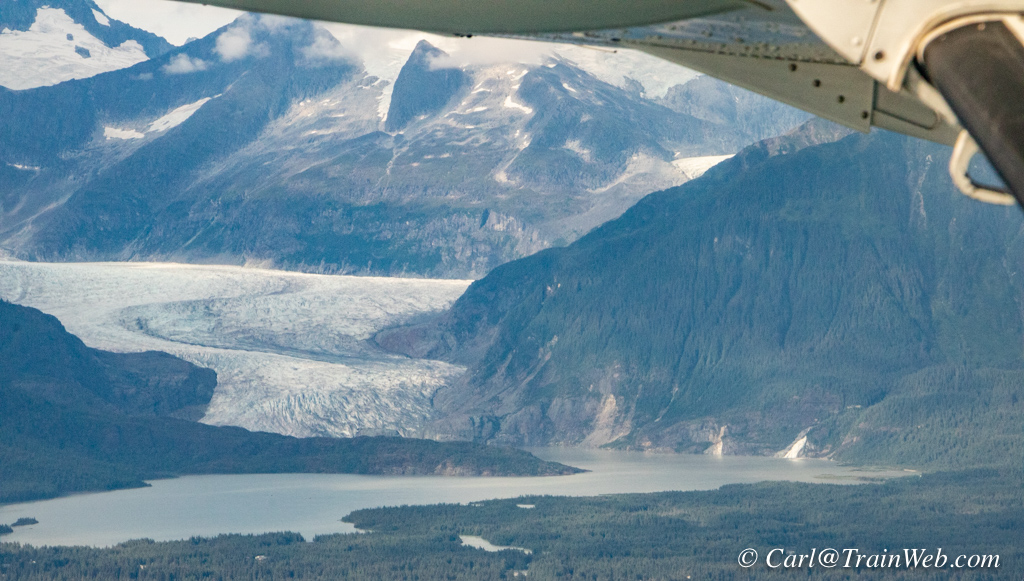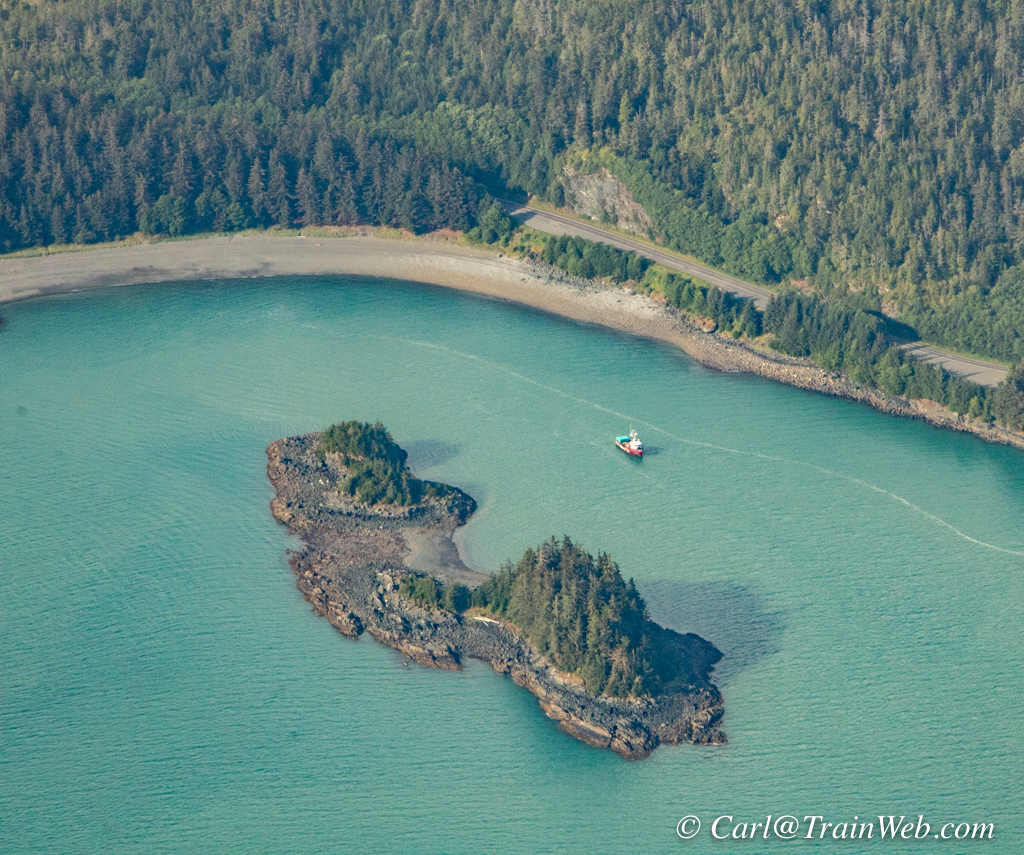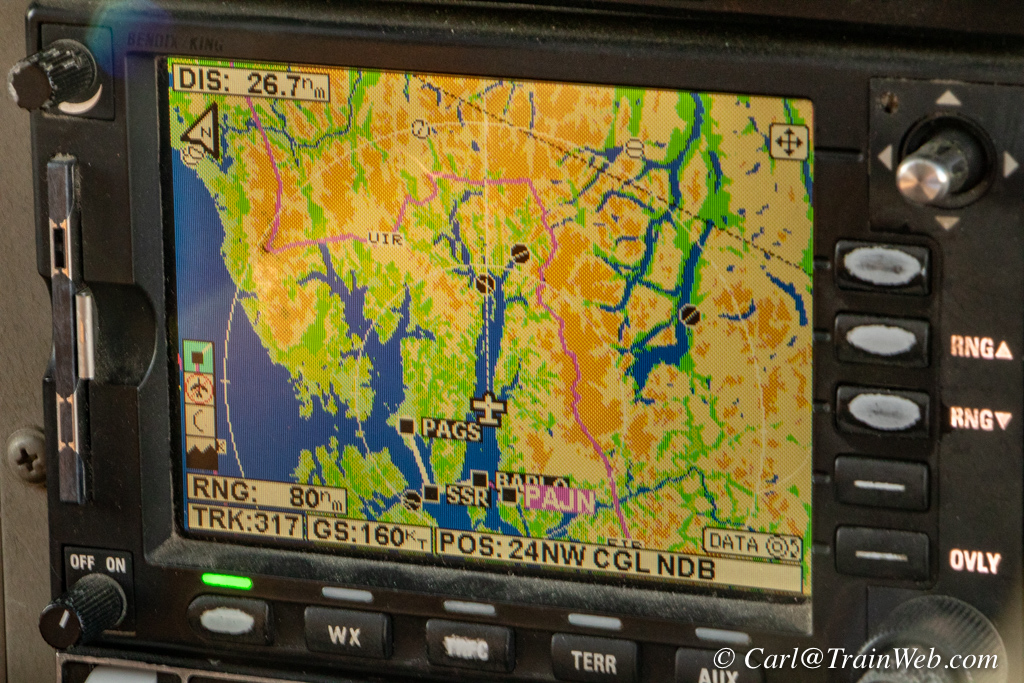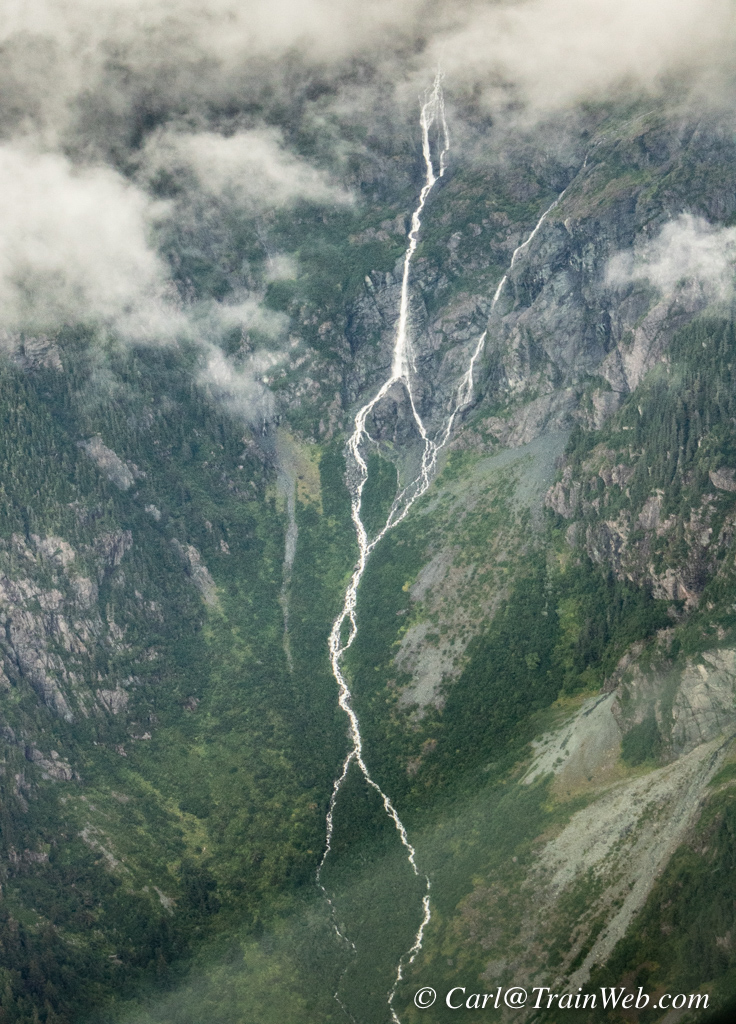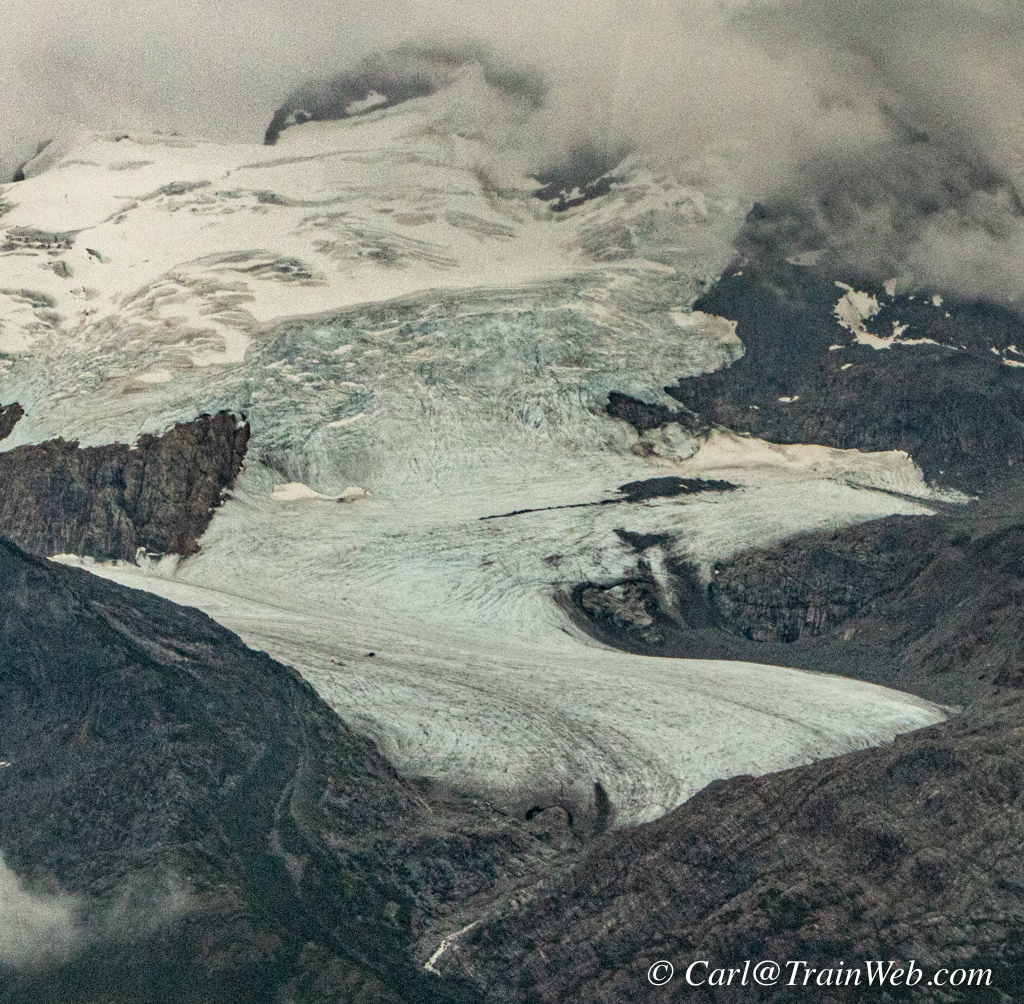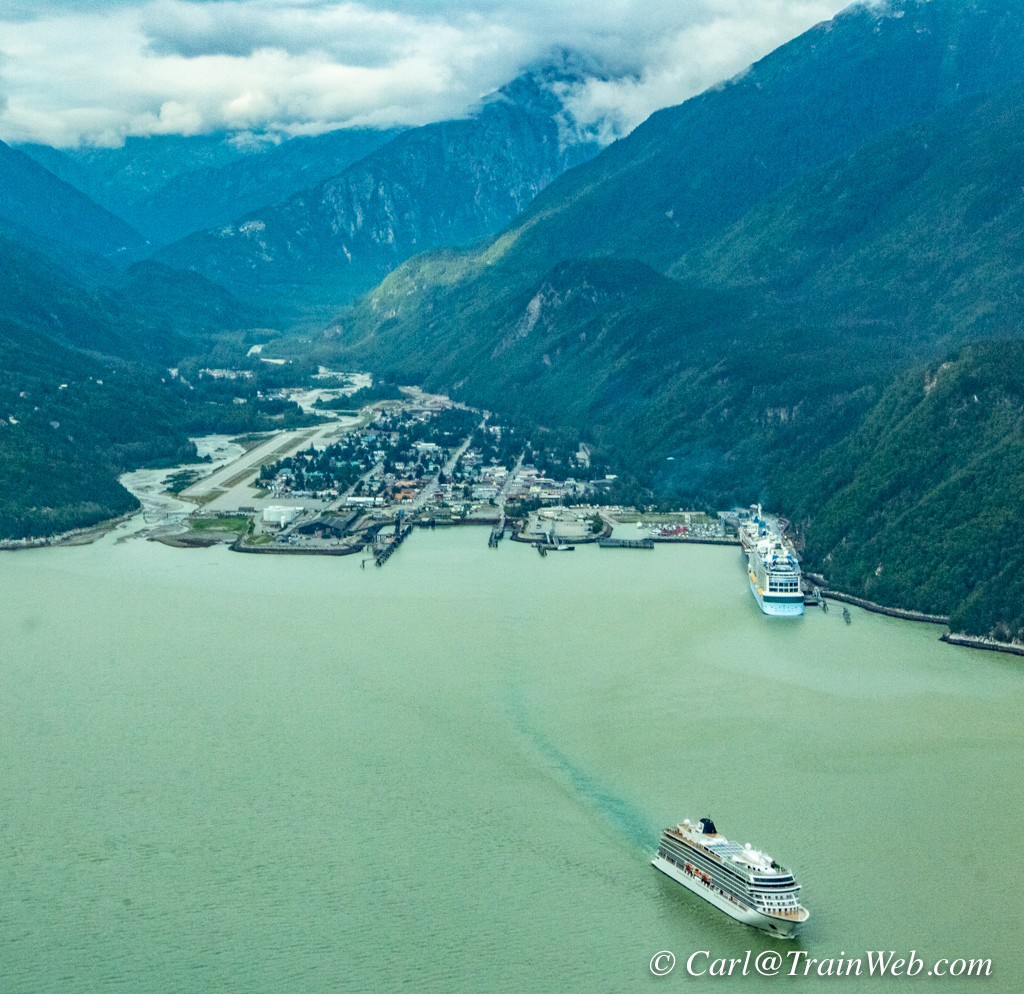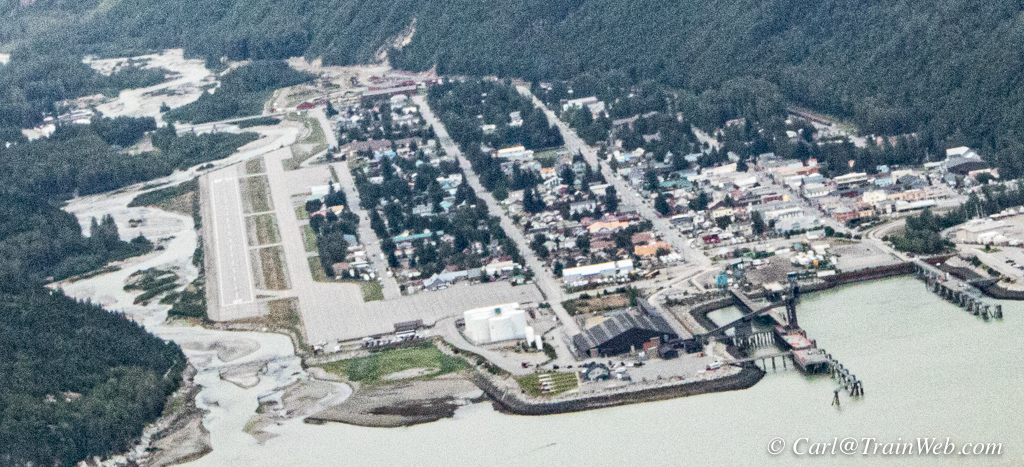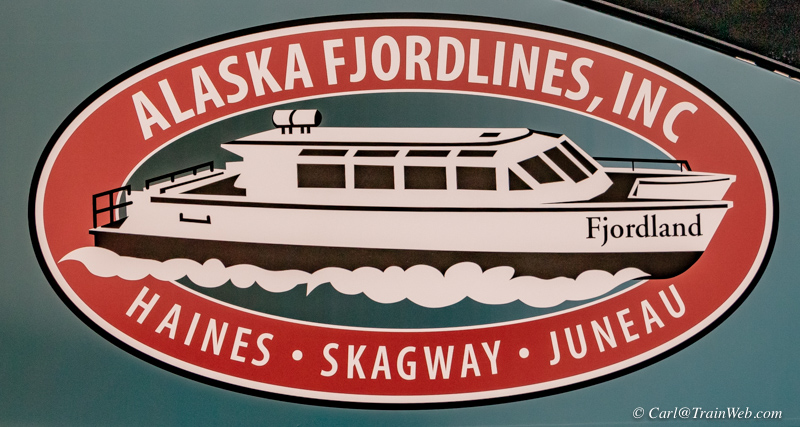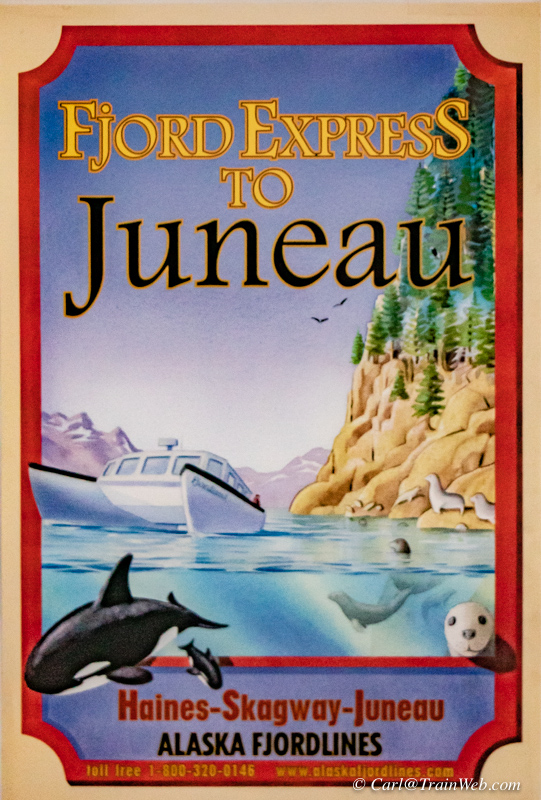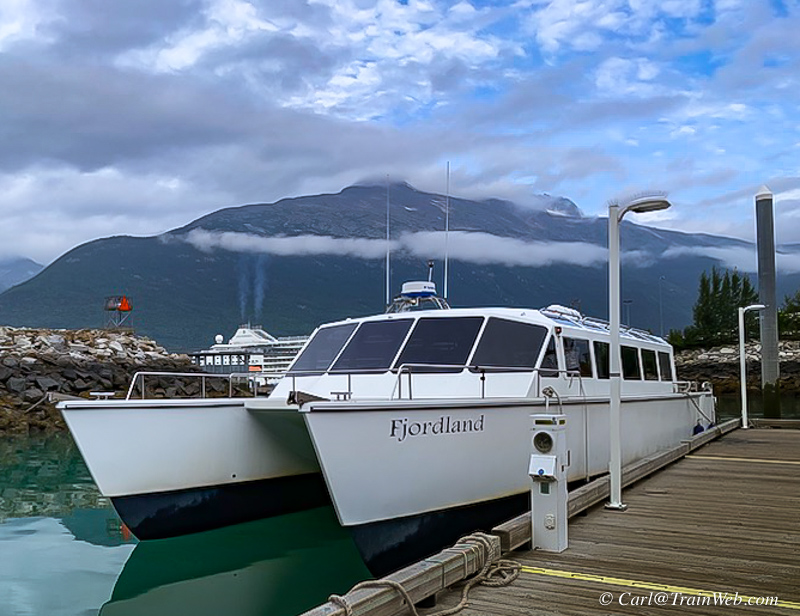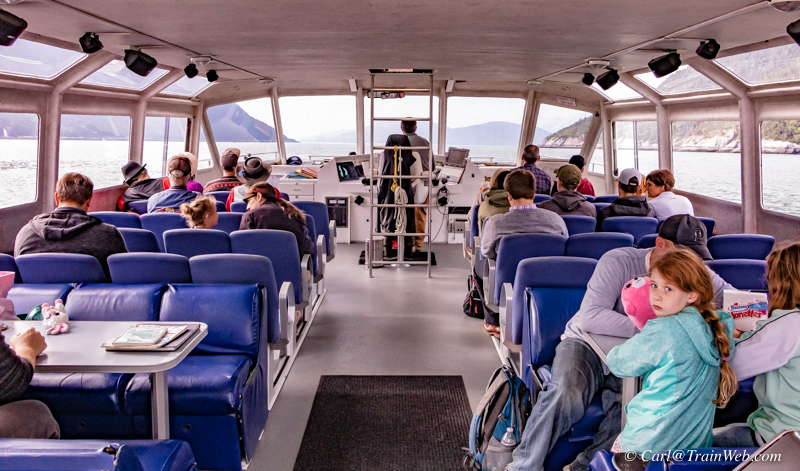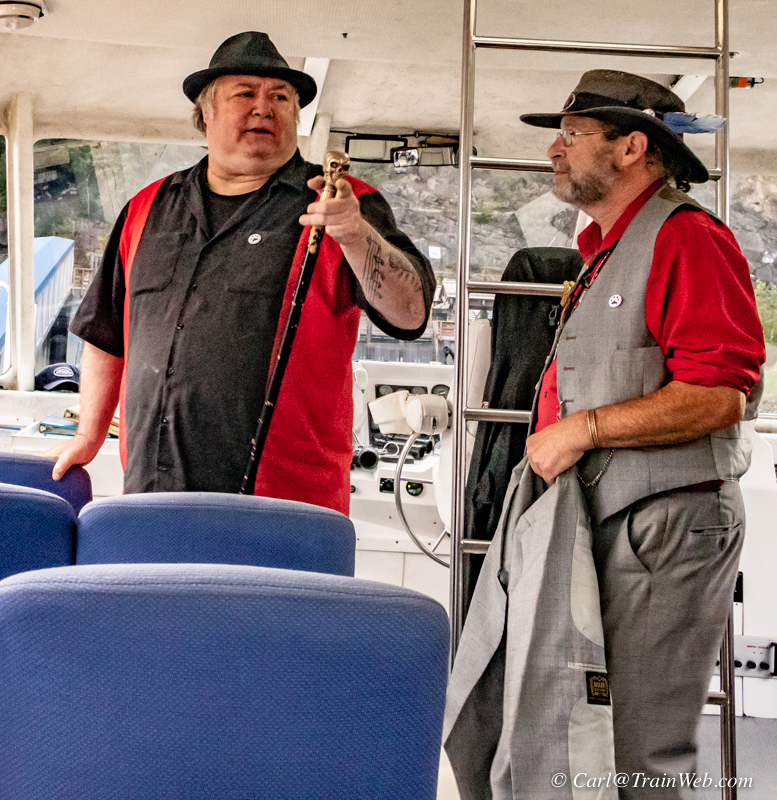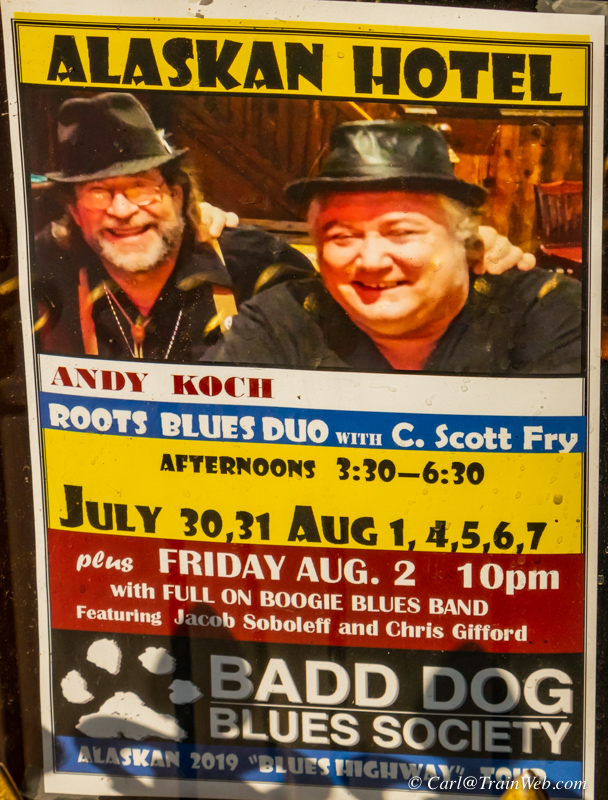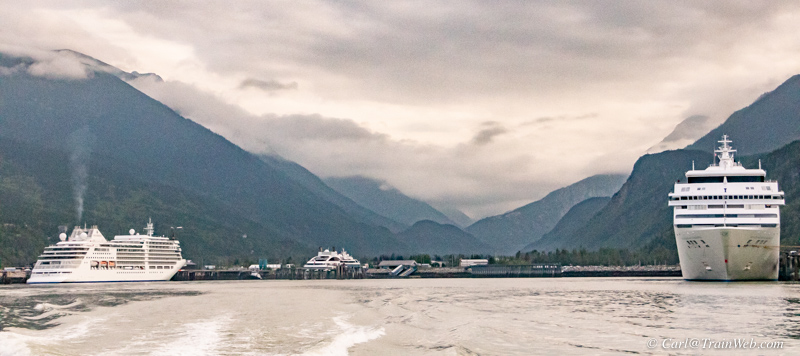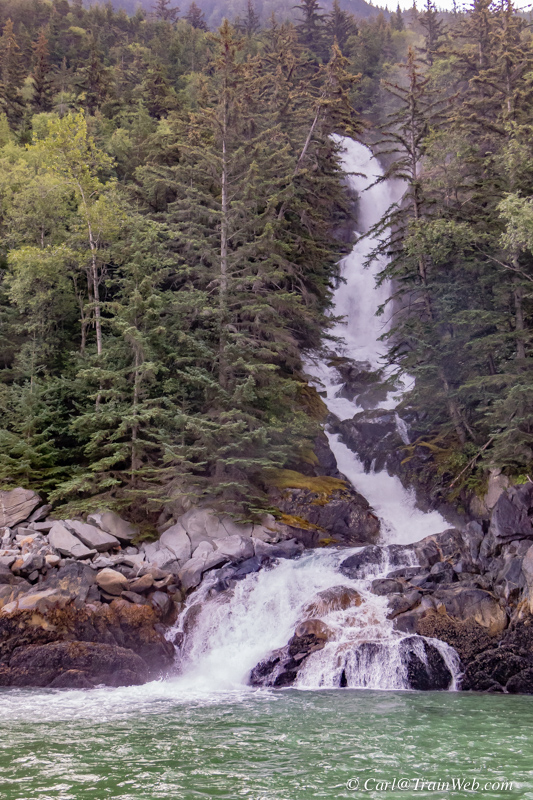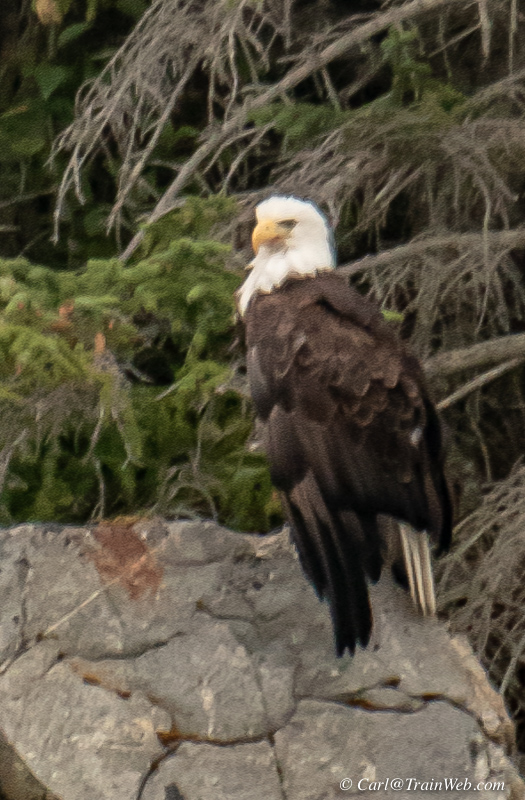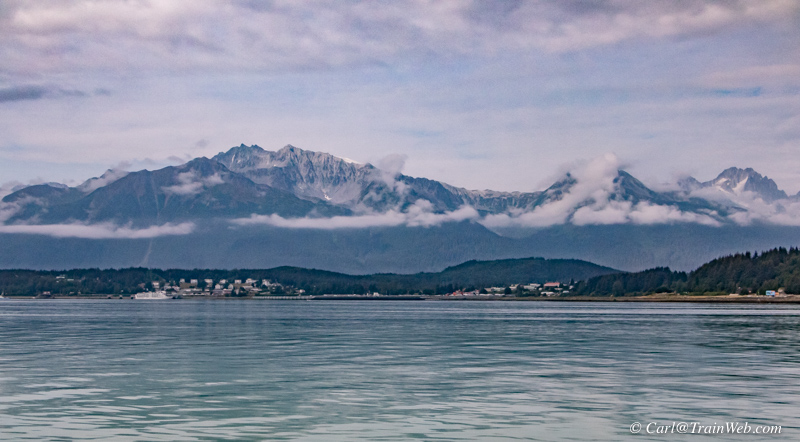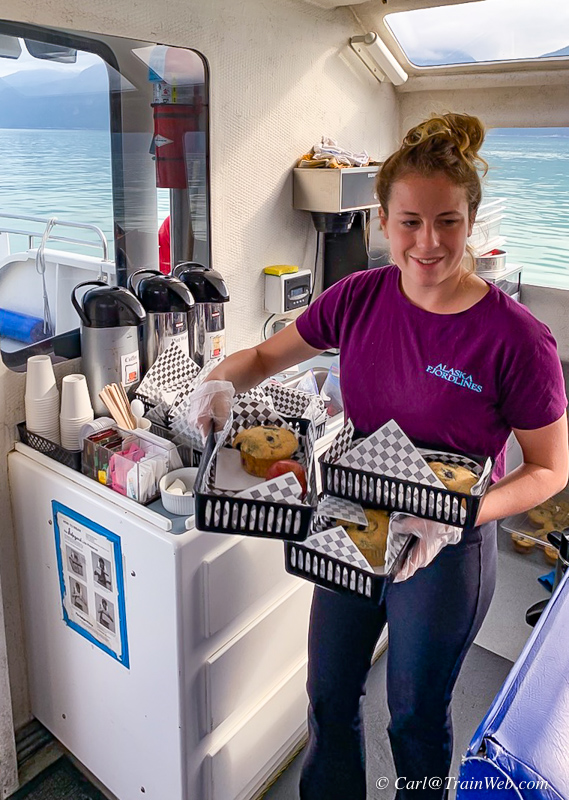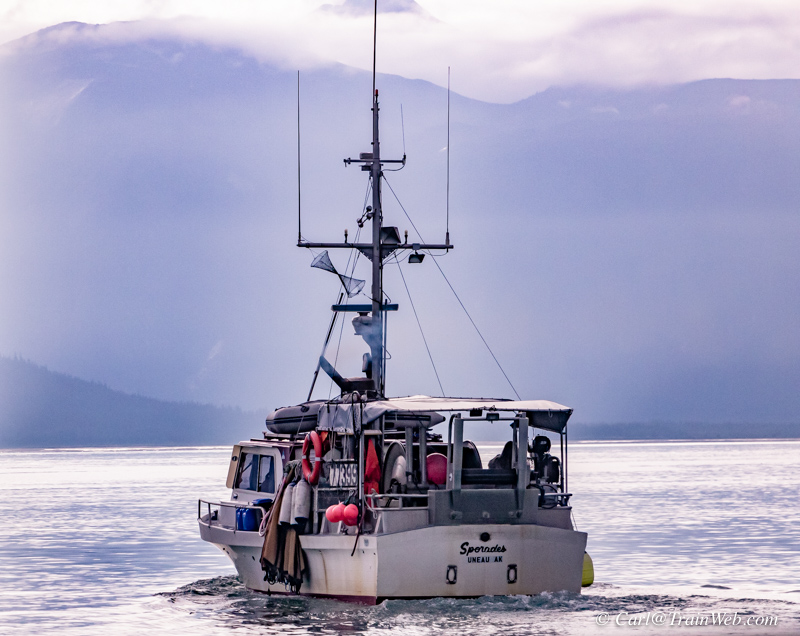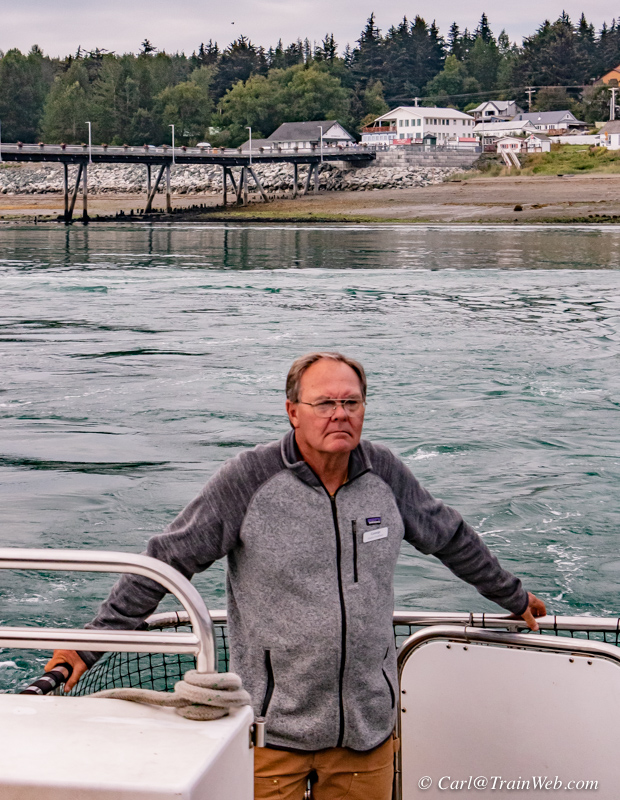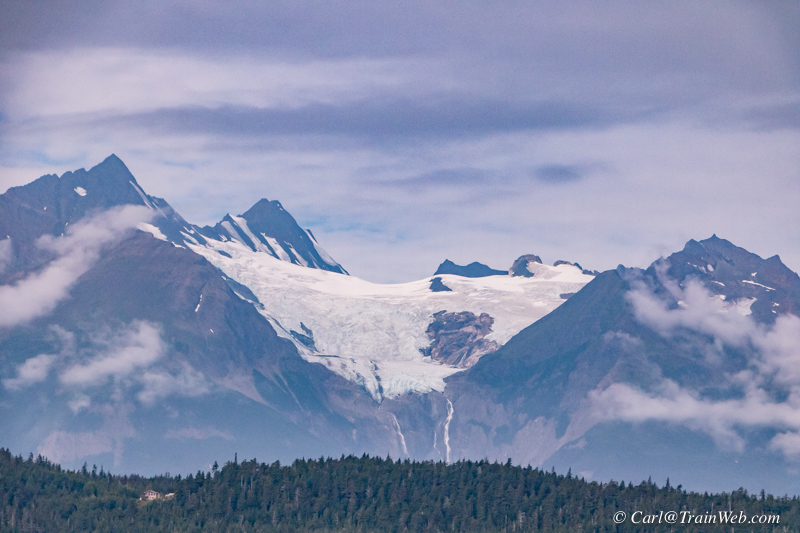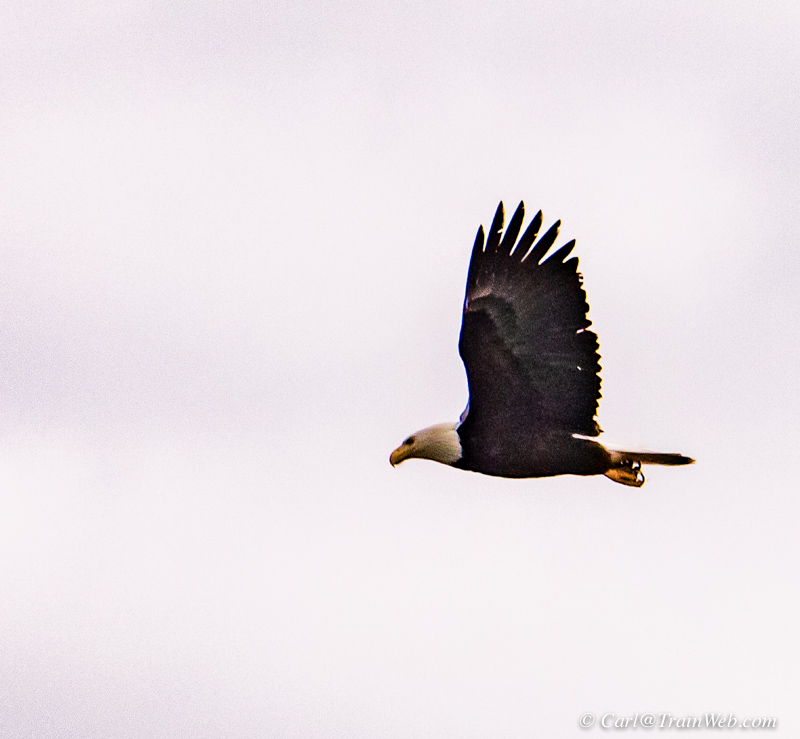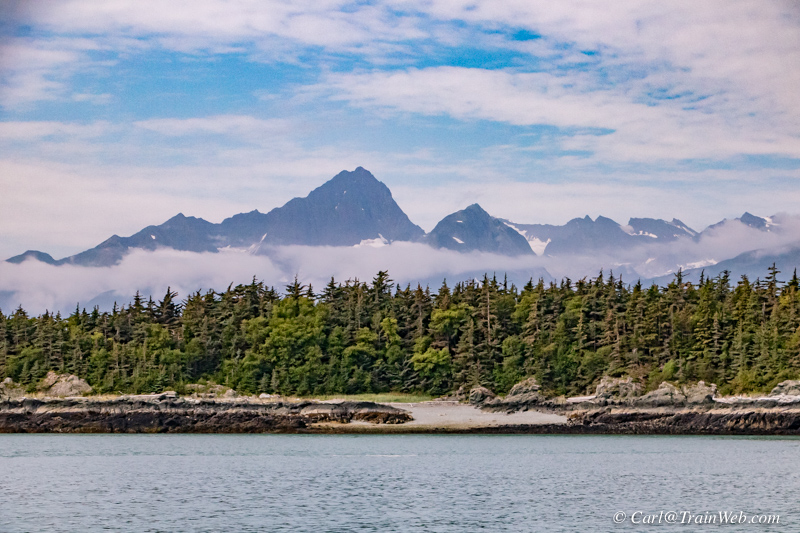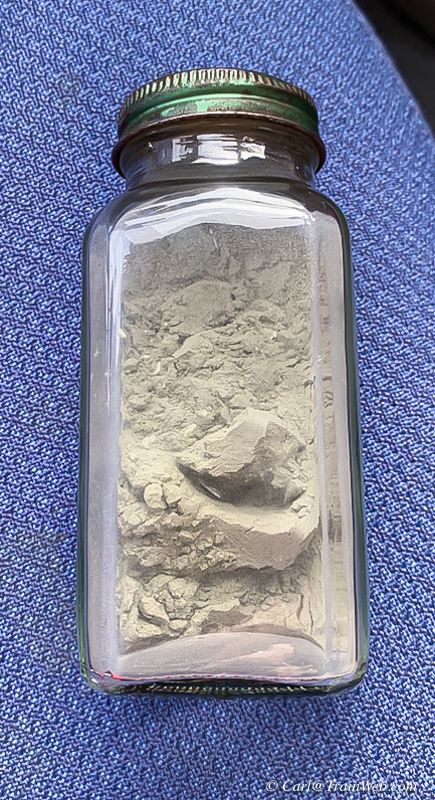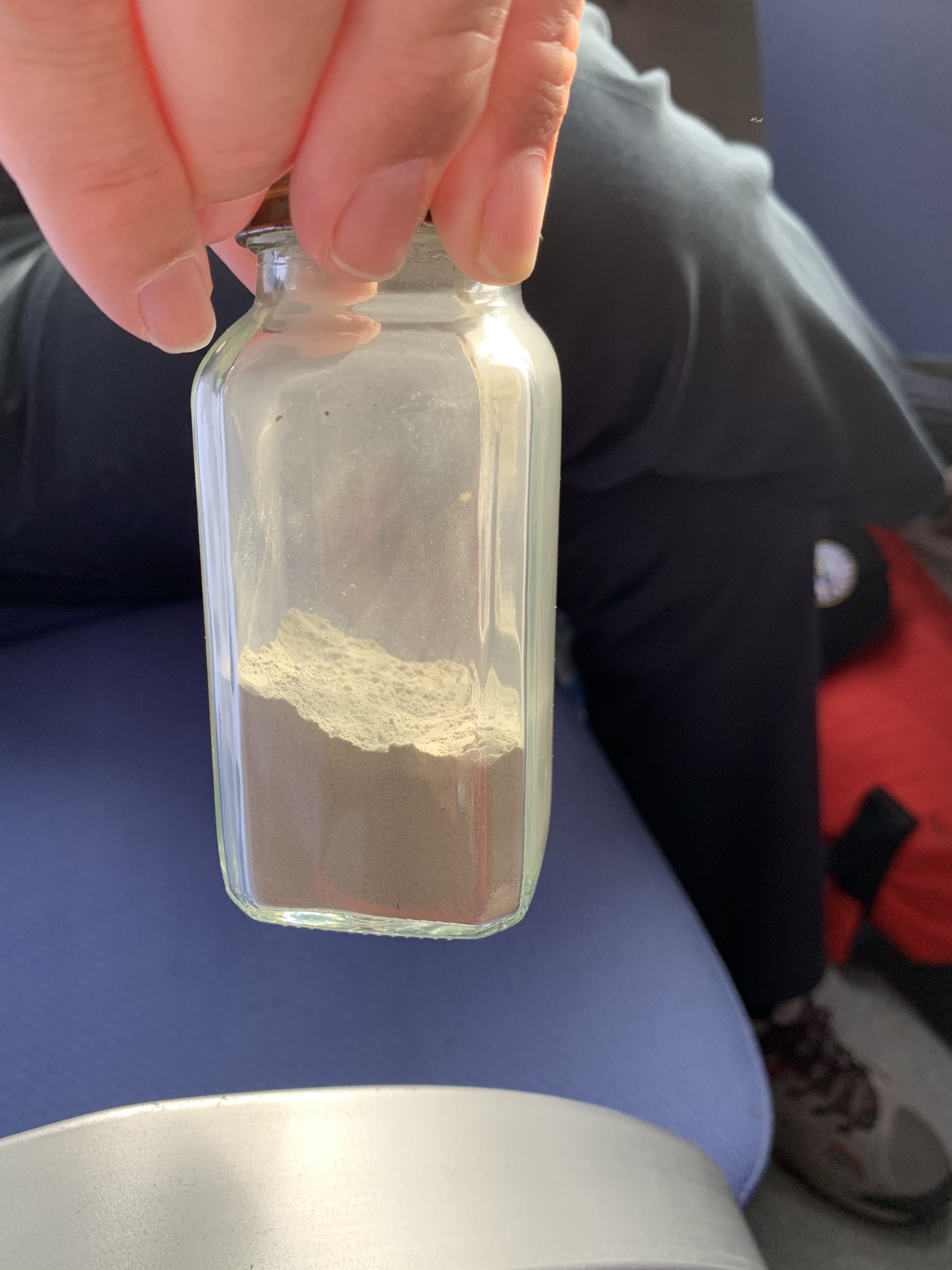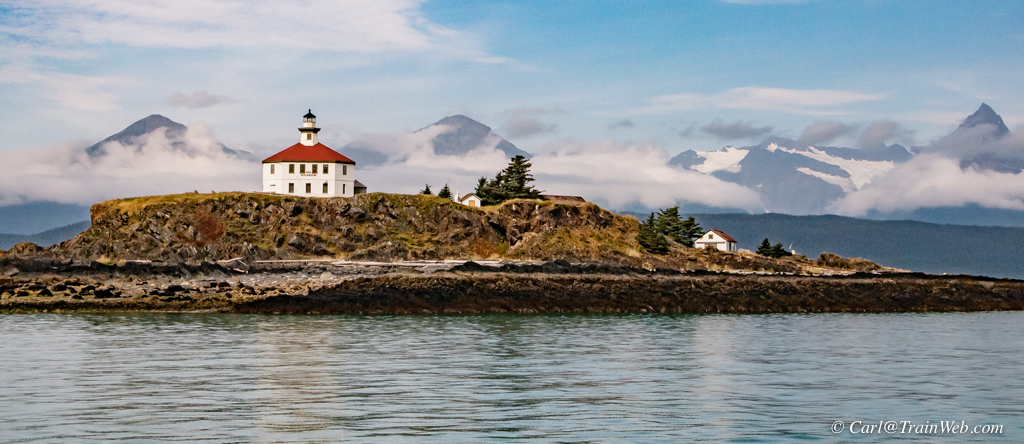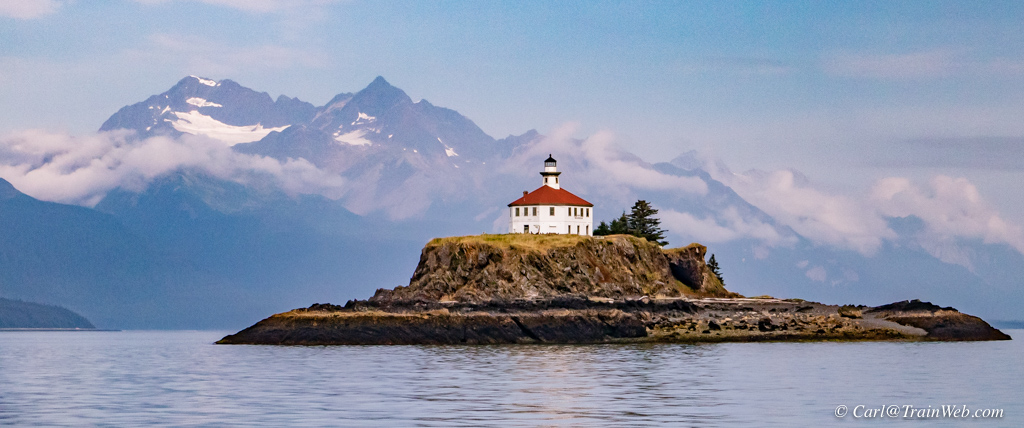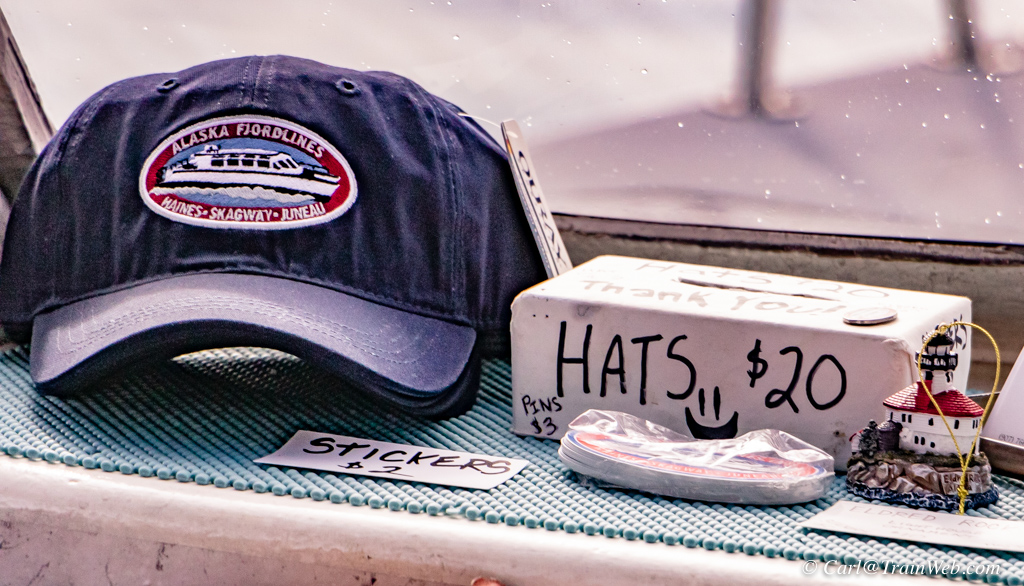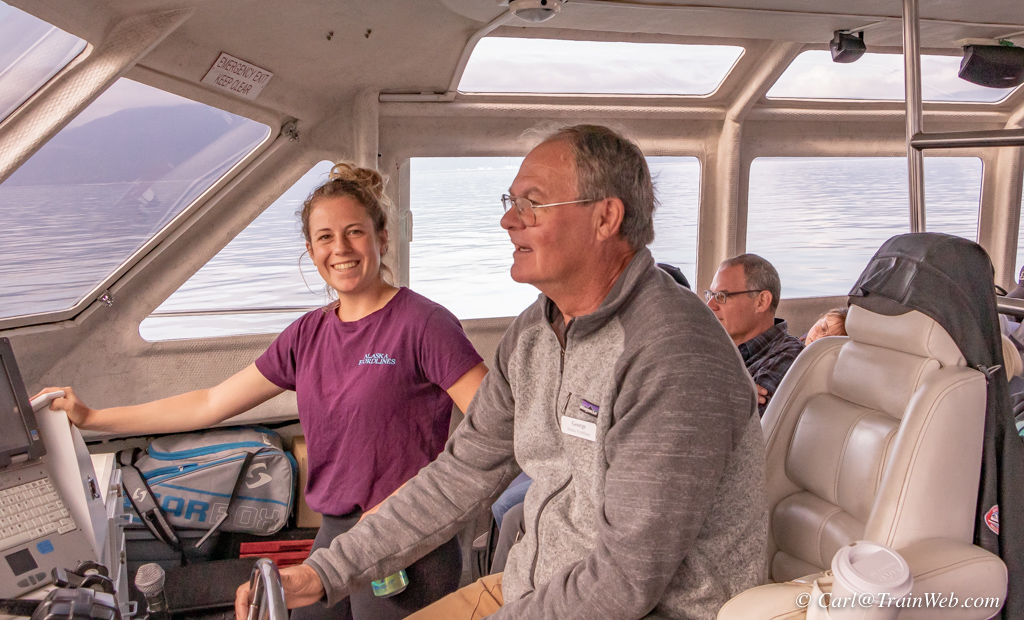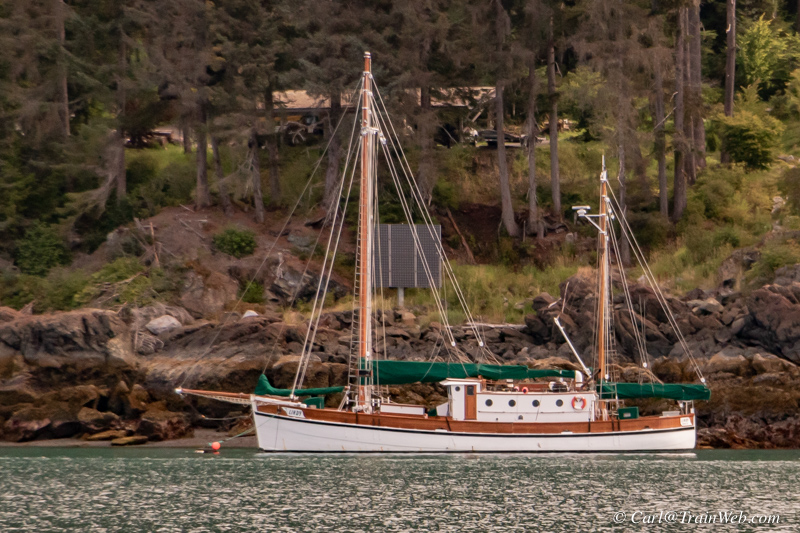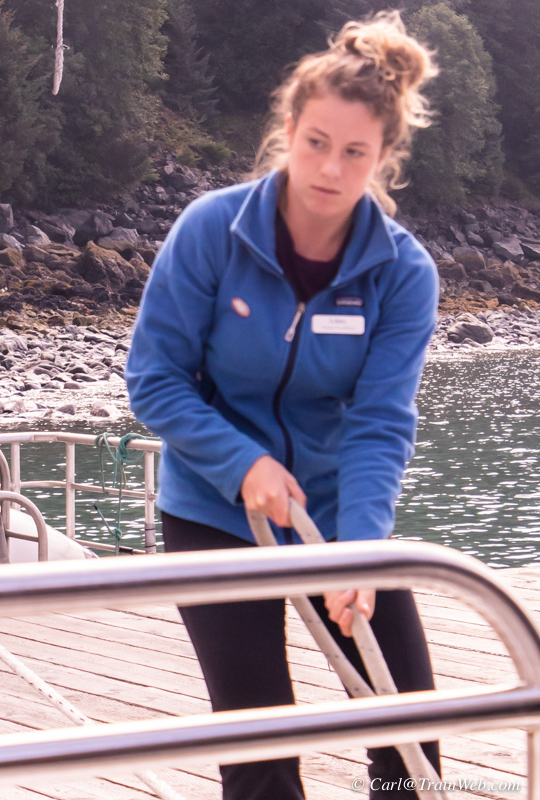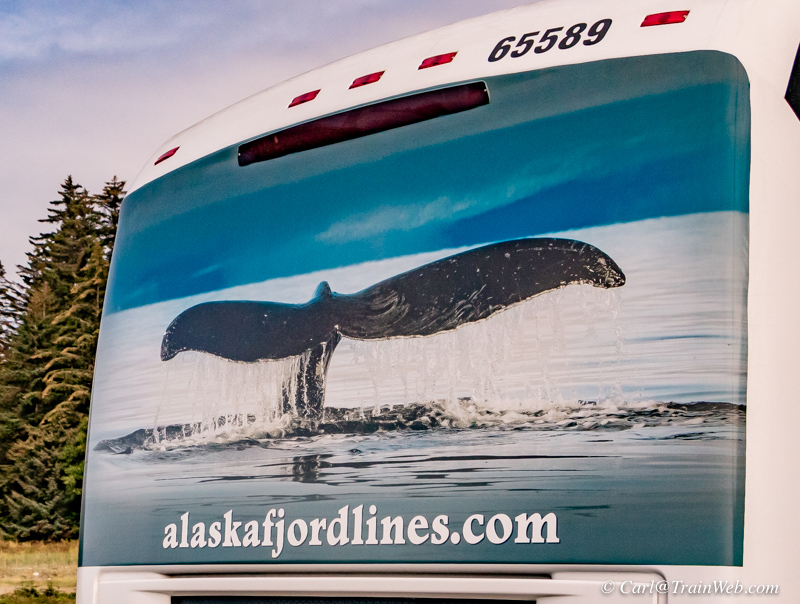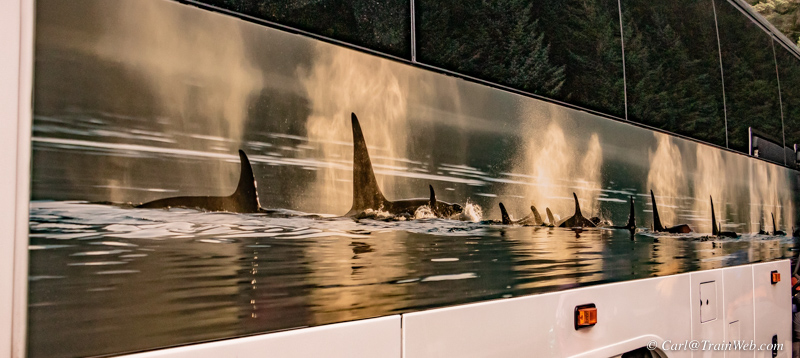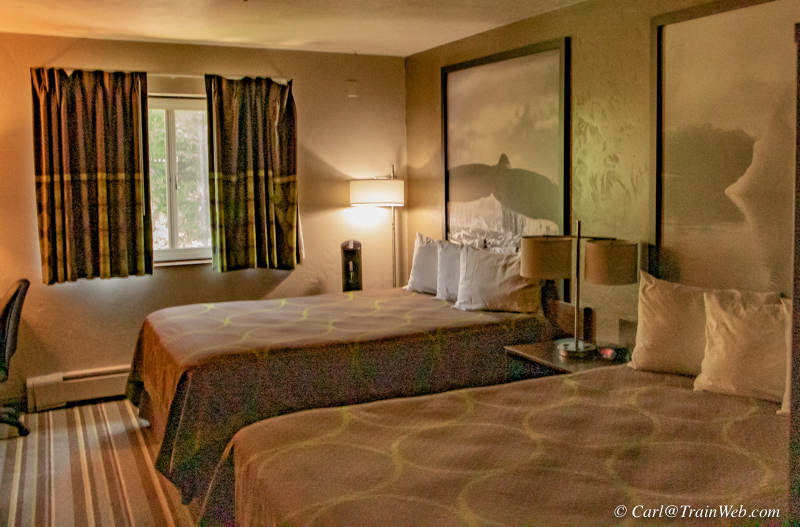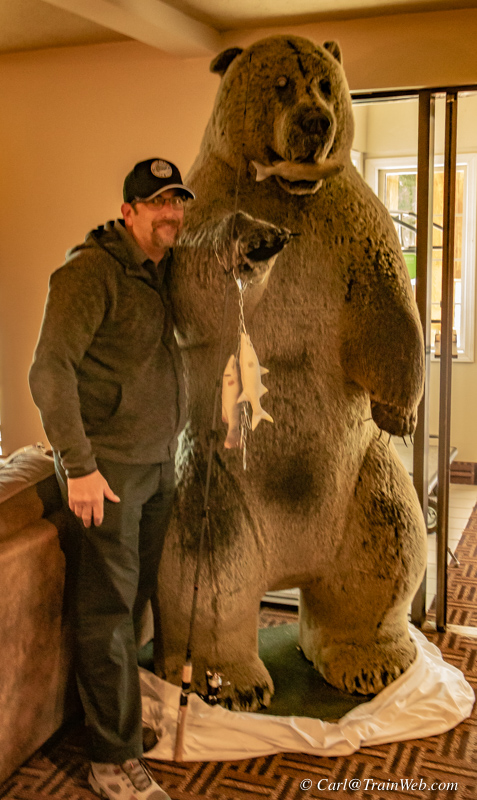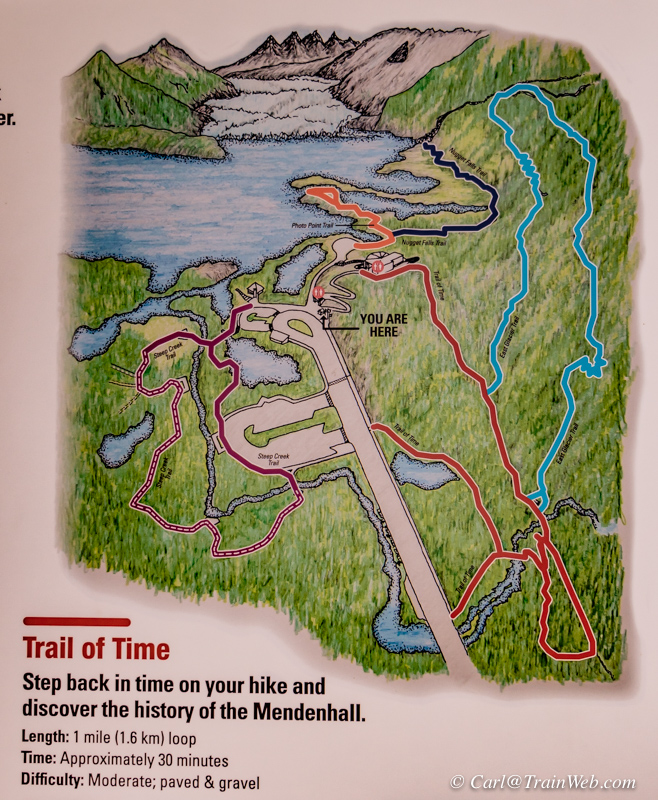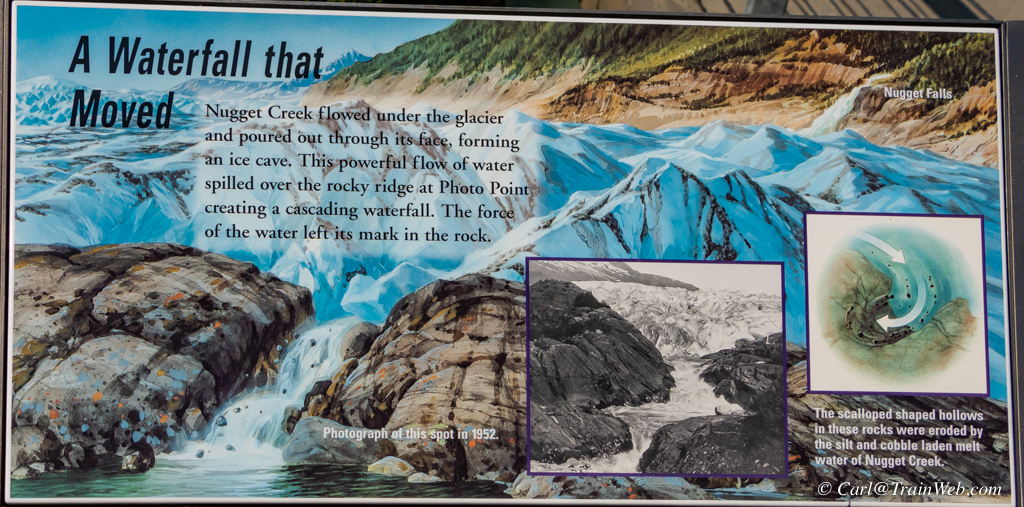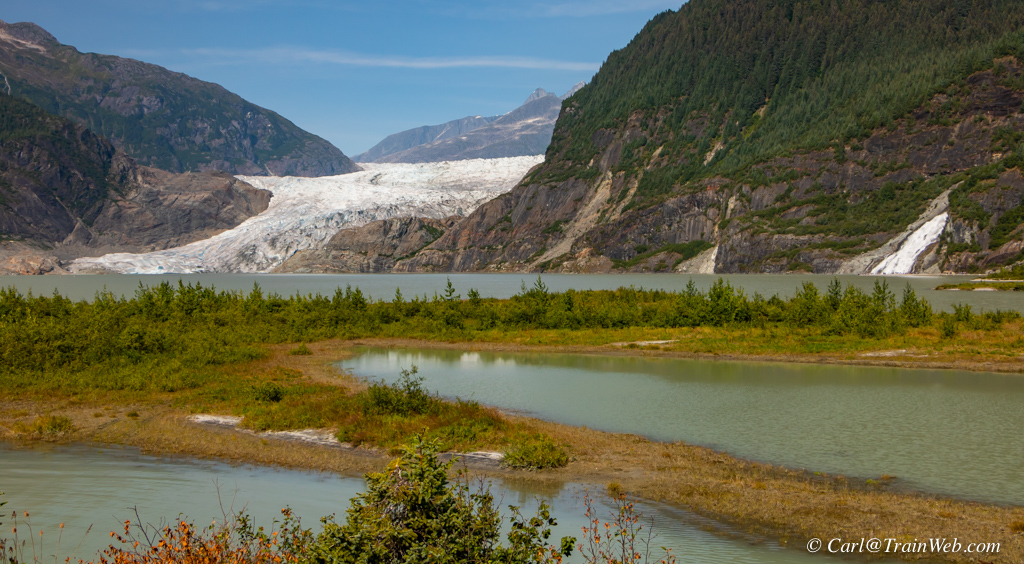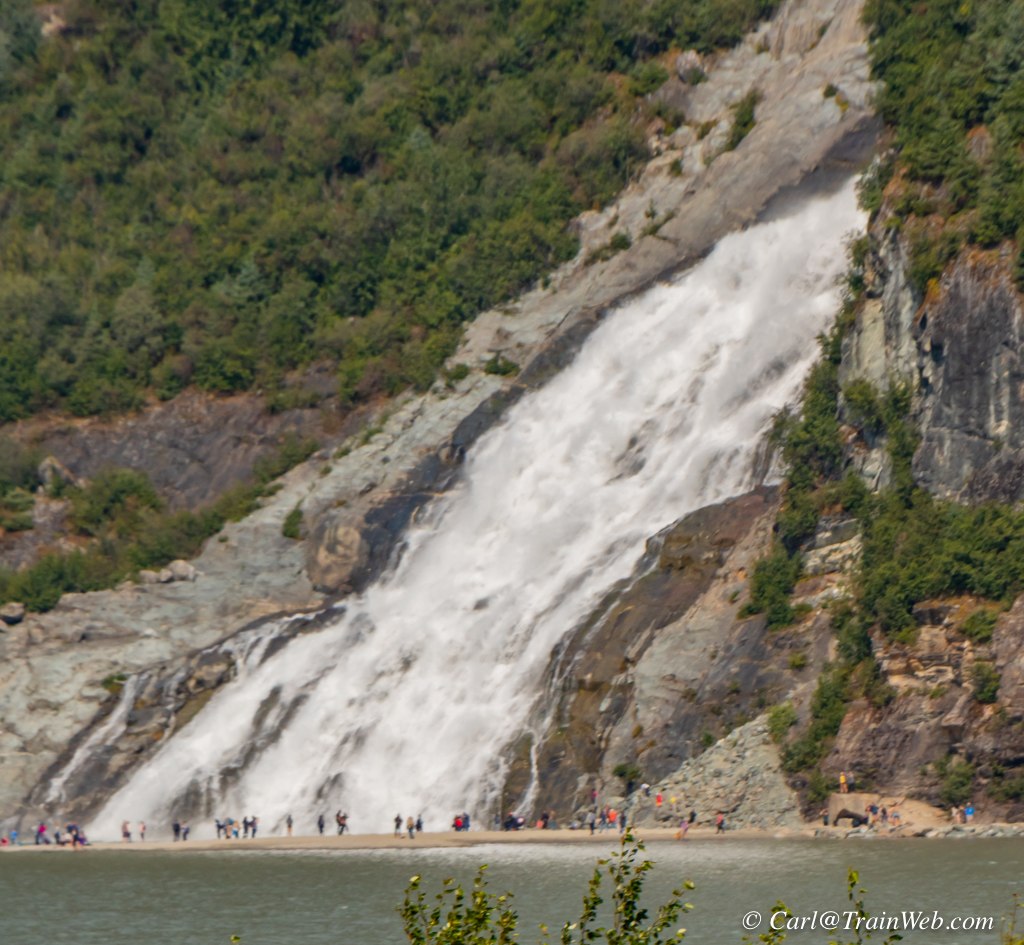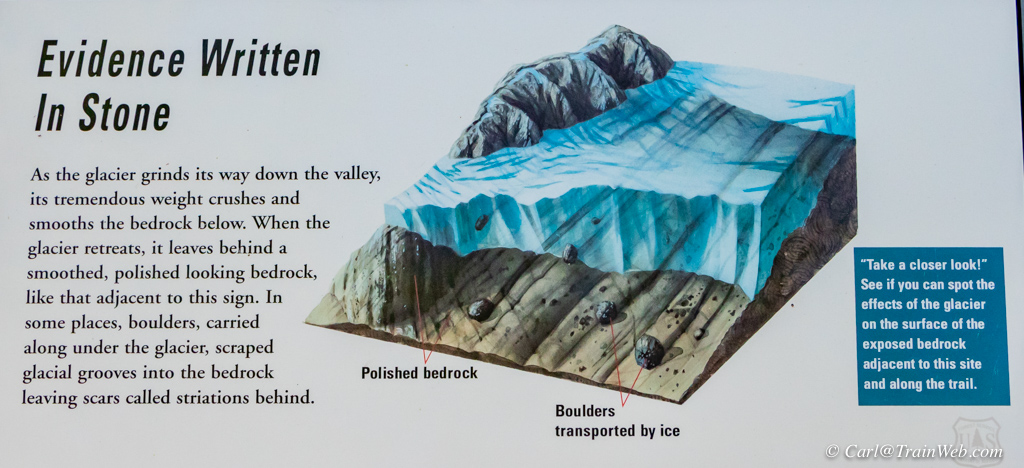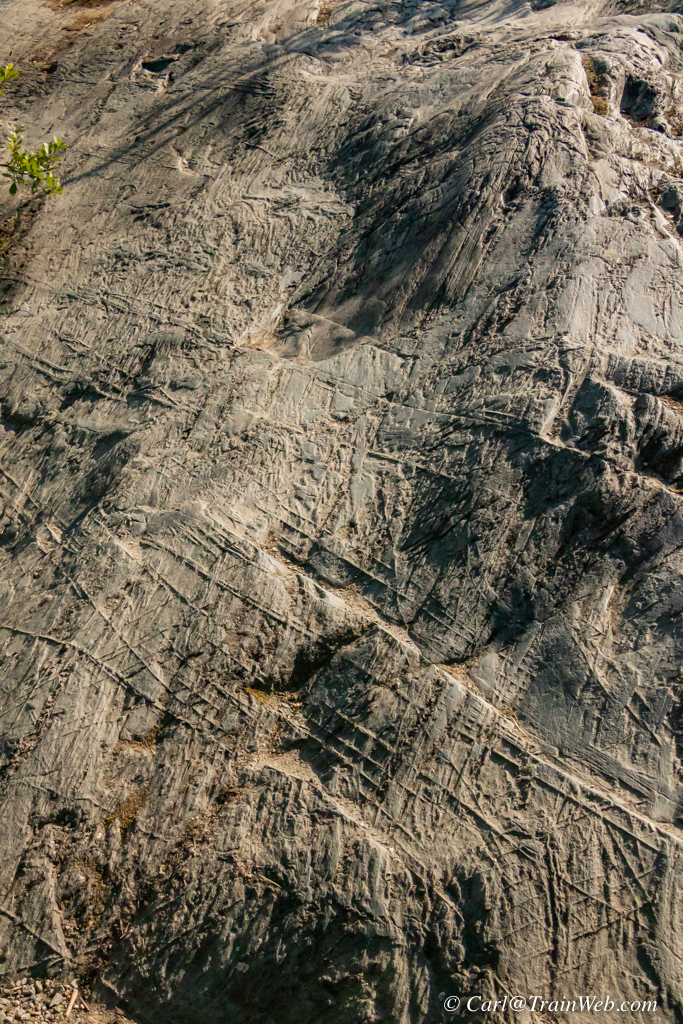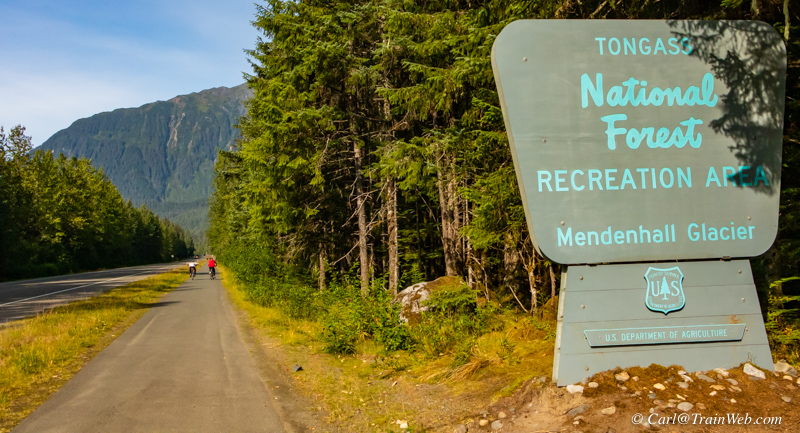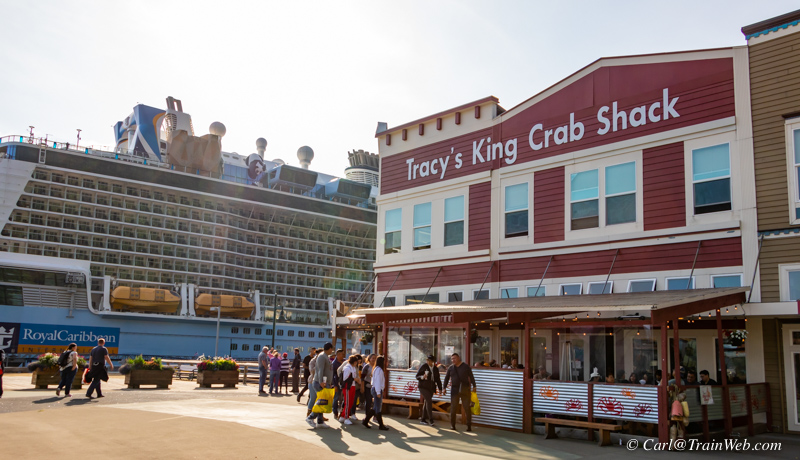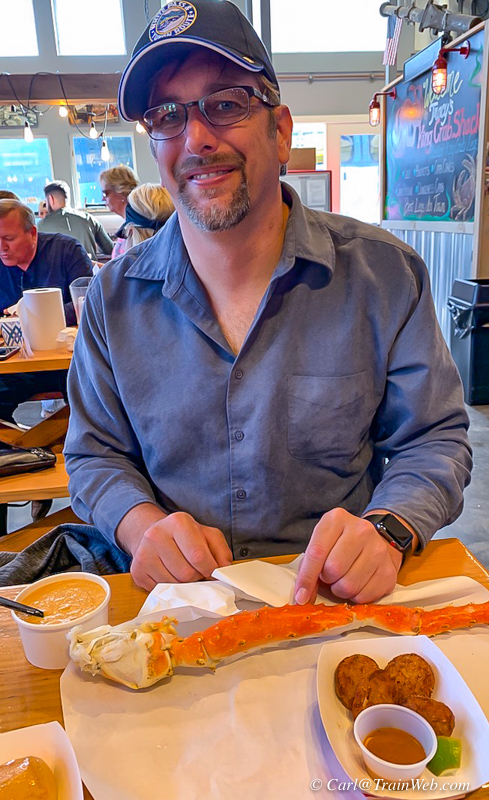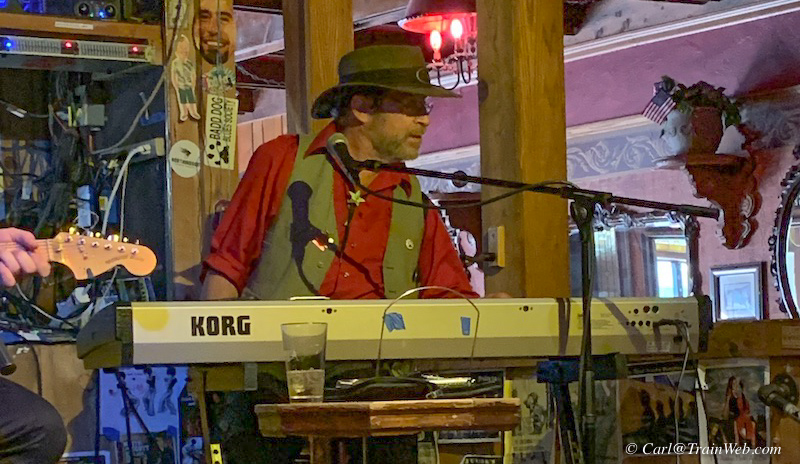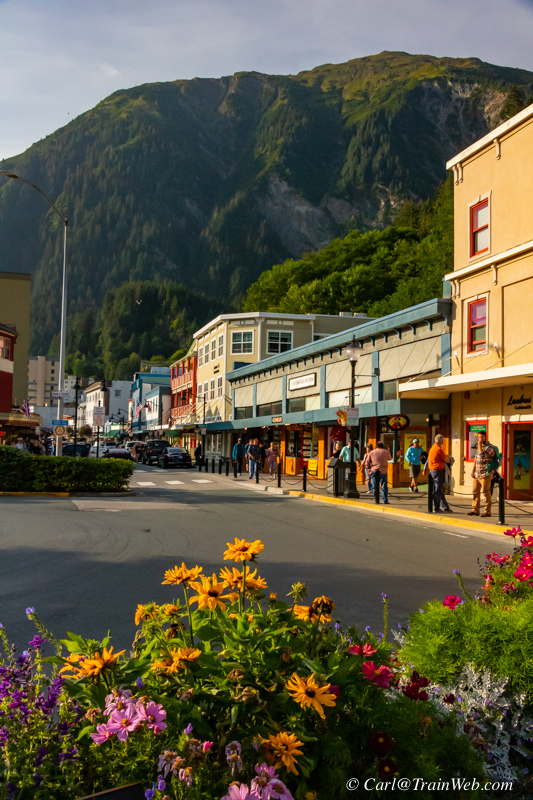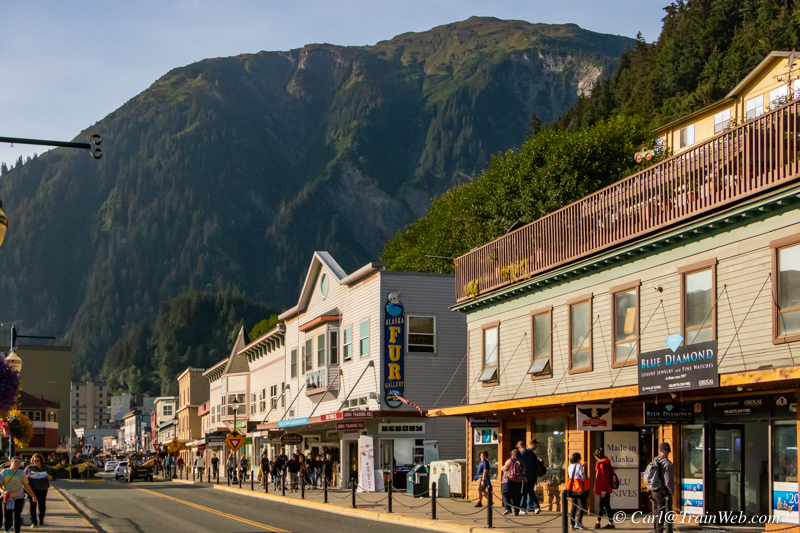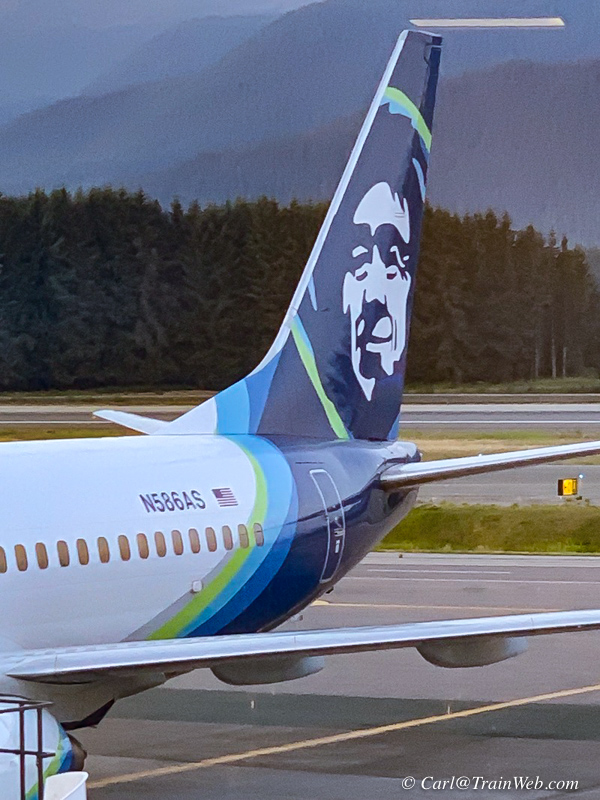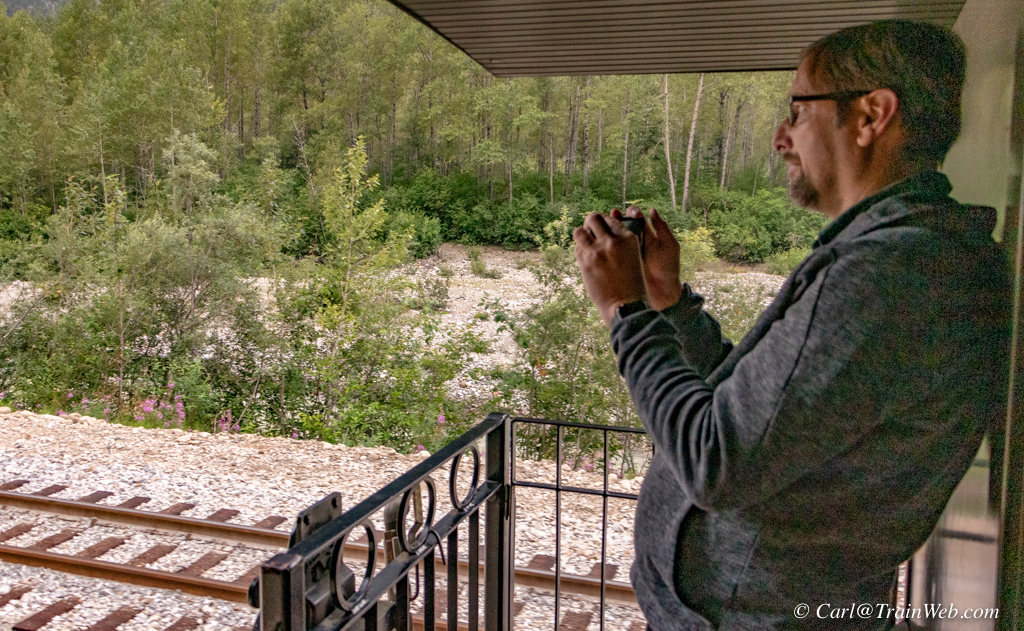
The obvious advantage of being on a platform on the last car.
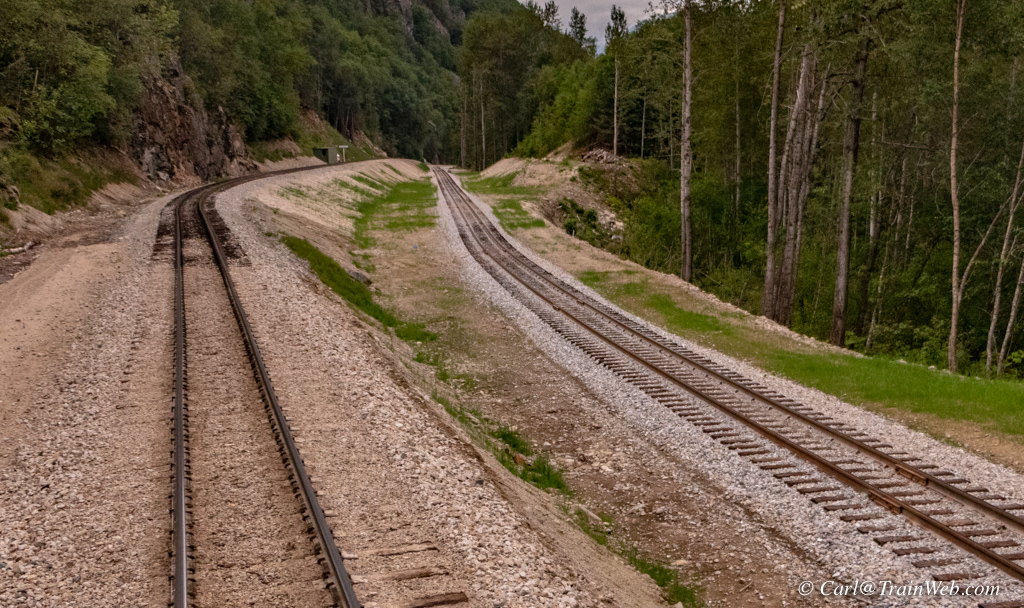
Since the partial purchase of the WP&YR by Carnival, $12 million in
improvements have been made. This is a good example of those
improvements.
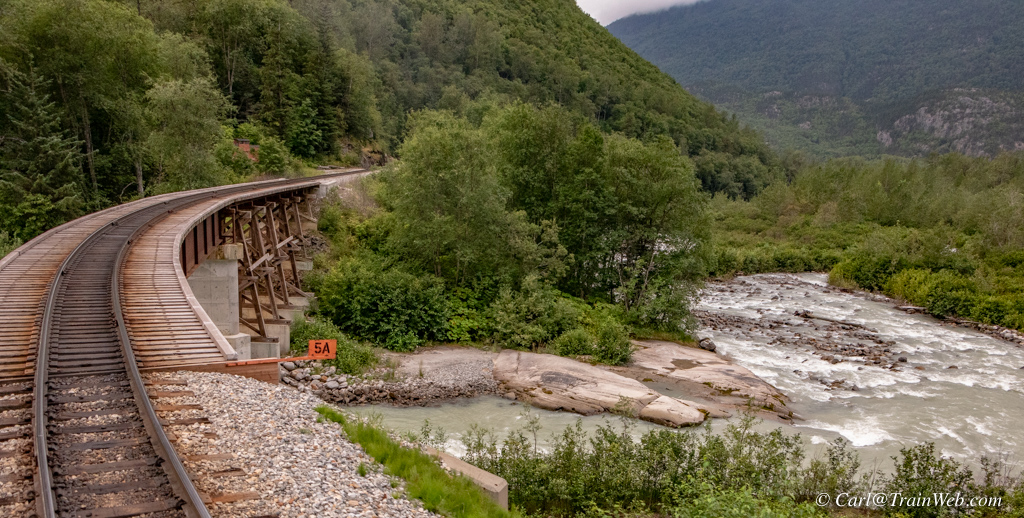
Mile Markers help passengers follow
the map in the center of the "All Aboard" magazine. There is also
an excellent narration throughout the train of the sights along the
way. This is Denver, a crossing of the east fork of the Skagway
River, nearby Denver Glacier Trail, a favorite local hike, leads to the
base of the glacier. Near here is a caboose-cabin that can be rented
through the U.S. Forest Service.
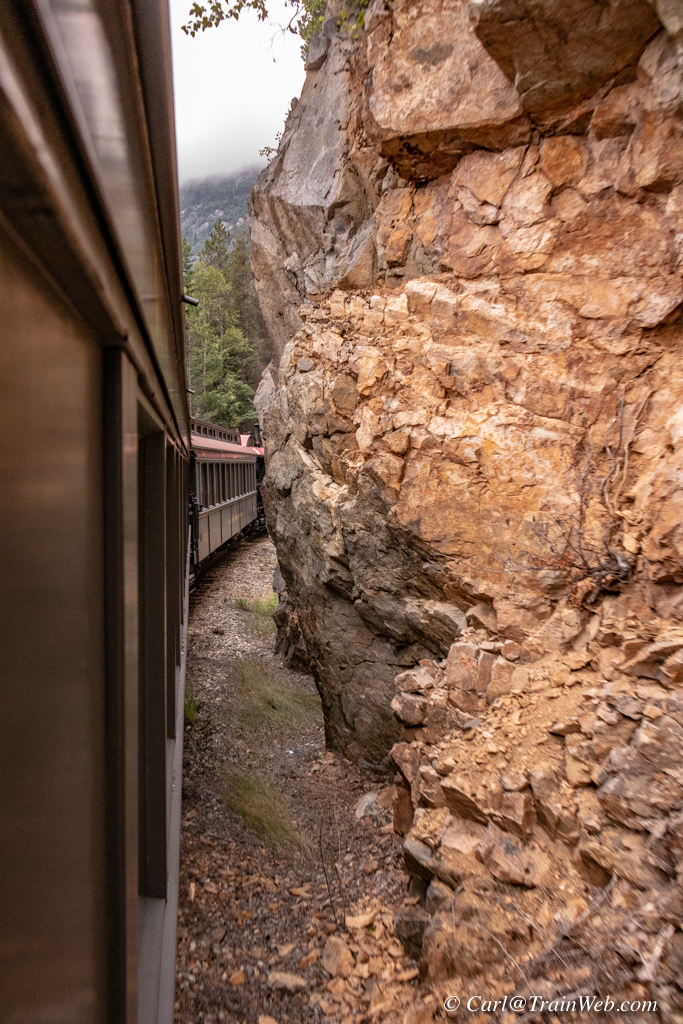
As mentioned elsewhere in this
report, one reason the WP&YR is a 3-foot narrow gauge is the cost
of right-of-way width being less for narrow gauge. This is an
example of why it would have cost much more for a wider right-of-way.
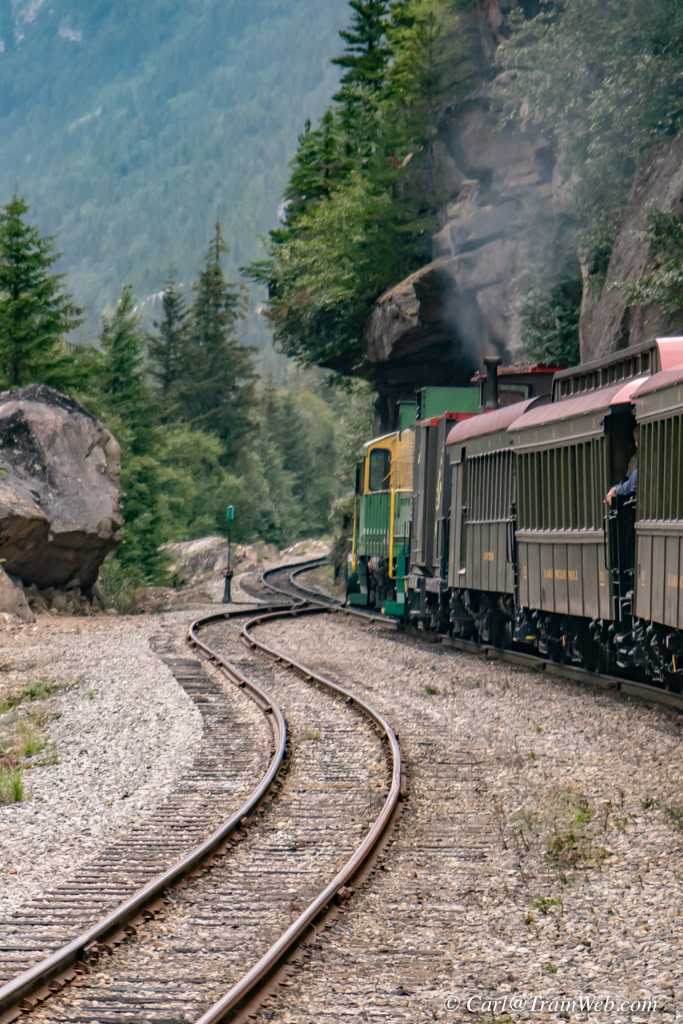
"Between a rock and a hard place."
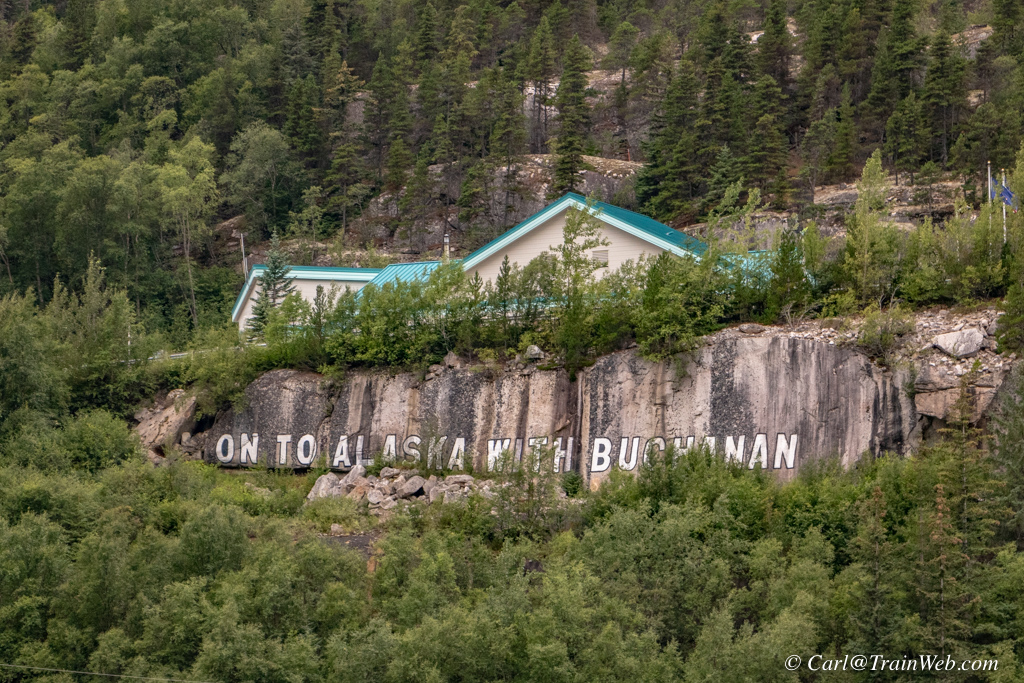
"On to Alaska with Buchanan" has
been a sightseeing attraction for over 70 years. The sign on the
far wall of the canyon was painted by the Buchanan Boys Tour Group,
brought from Detroit each year to visit Skagway, circa 1920-30, so
intercity youth could see what Alaska was like.

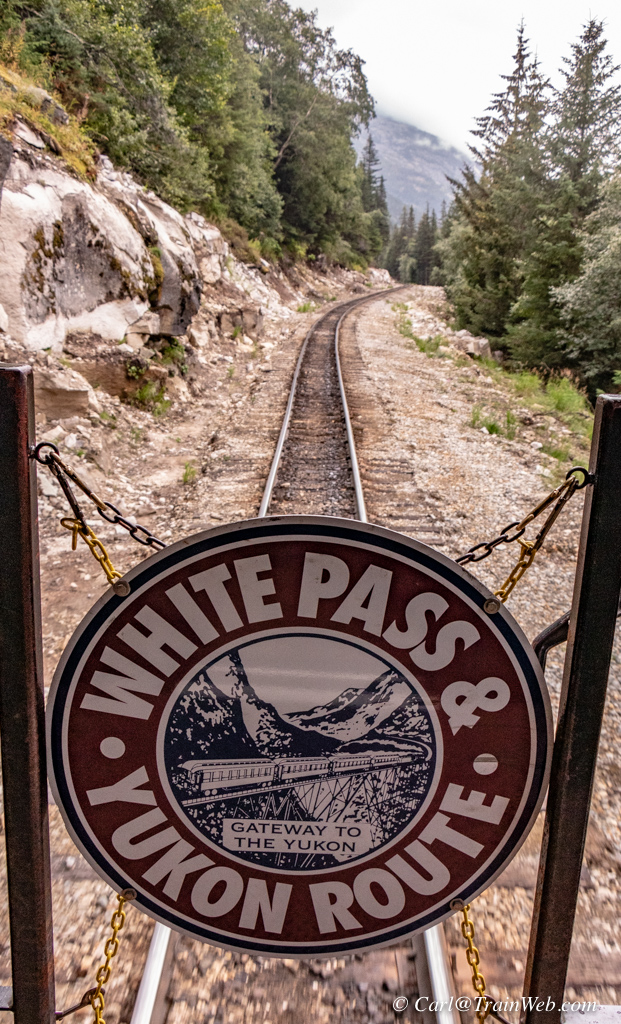
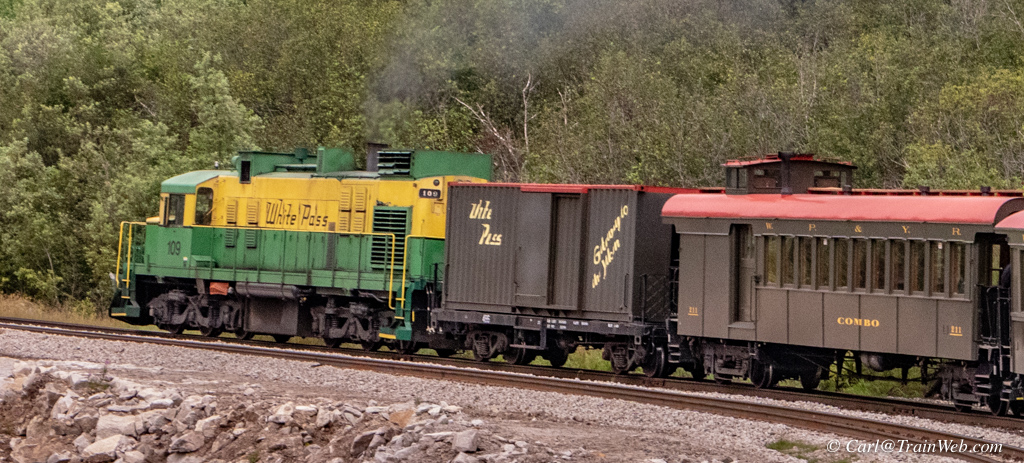
The consist of this train, which
goes to Carcross and back to Skagway, is a bit different from the other
train sets that make a turn around at Fraser. One Locomotive, an
ocean-going container made into a boxcar,
and a multi-use car with a cupola! In Skagway, I saw a caterer putting on bags of what I presume were lunches.
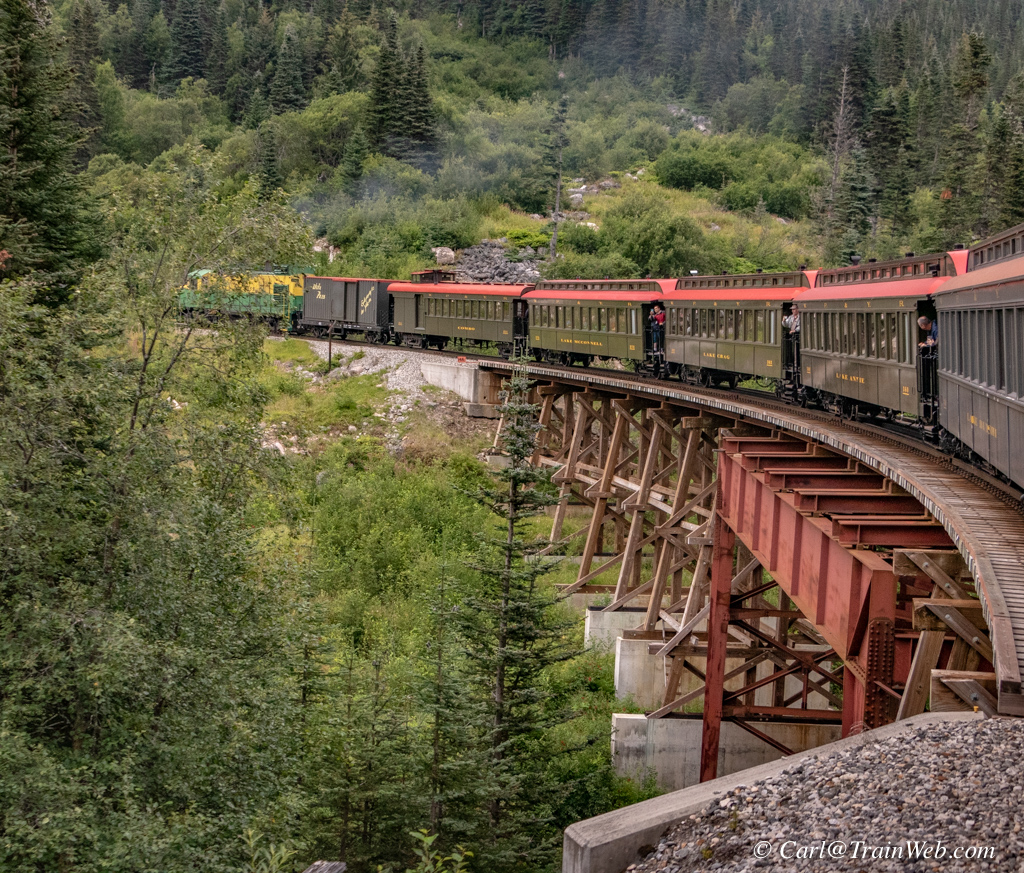 Glacier Station, once a stopping place for thirsty steam engines
on the uphill grade. Railroad section crew lived here and
maintained the railbed.
Glacier Station, once a stopping place for thirsty steam engines
on the uphill grade. Railroad section crew lived here and
maintained the railbed.
 Glacier melt below including tell-tale glacial silt that appeared light green in rivers downstream.
Glacier melt below including tell-tale glacial silt that appeared light green in rivers downstream.
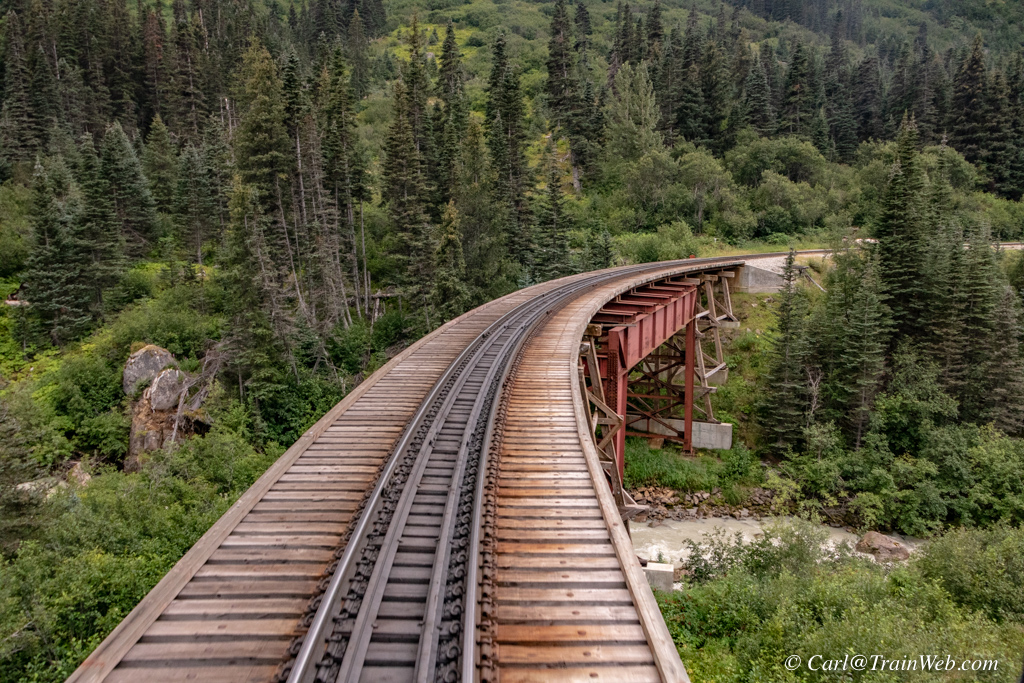 The gauntlet rails between the 3-foot rails are intended to keep a
derailed train from going off the bridge into the drink, and to ride
the ties instead.
The gauntlet rails between the 3-foot rails are intended to keep a
derailed train from going off the bridge into the drink, and to ride
the ties instead.
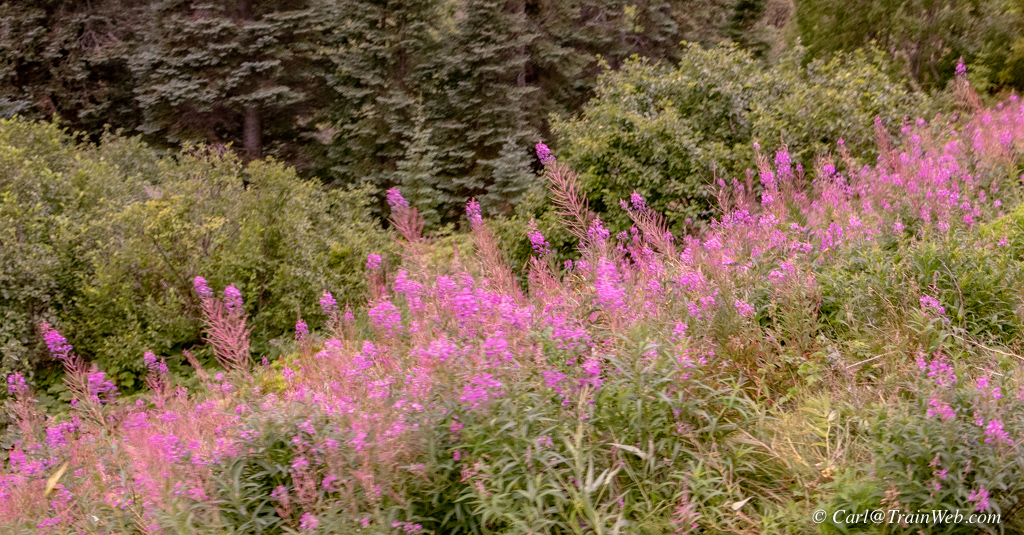
Fireweed seemed to be in bloom at all elevations on this early August trip.


Tunnel Mountain, probably the most photographed spot on the route.
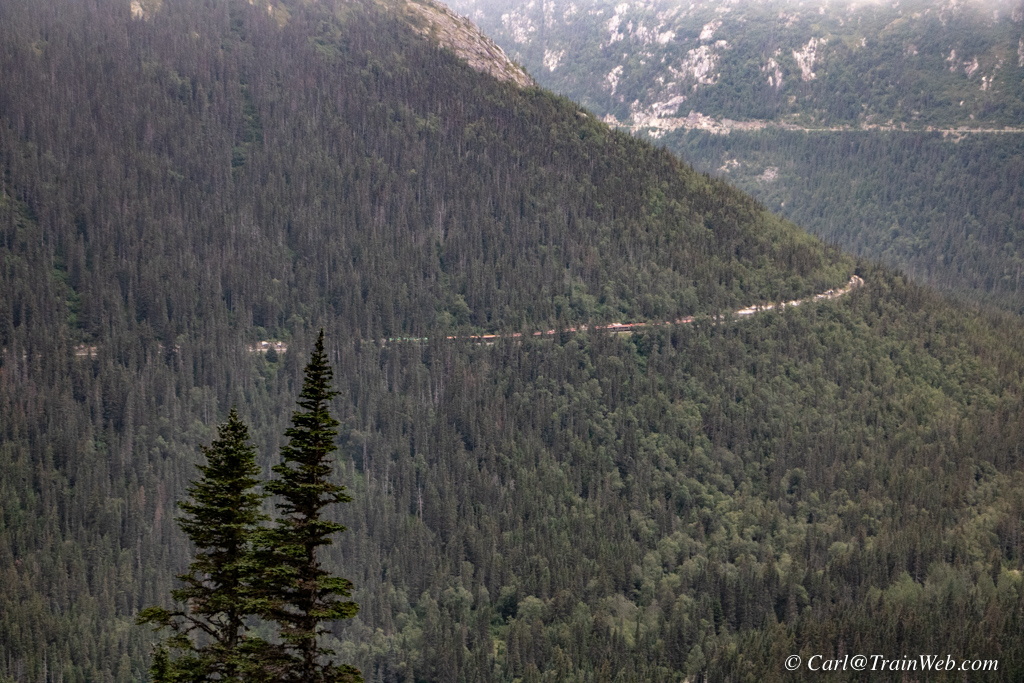
Inspiration Point, seventeen miles
up the line from Skagway, gave a good view of Lynn Canal (perhaps a
misreading of past handwriting for "Channel"), Mt. Harding and the
Chilkat Range with the Yukon Highway on the far side of the
gorge. Another WP&YR train can be seen below us.
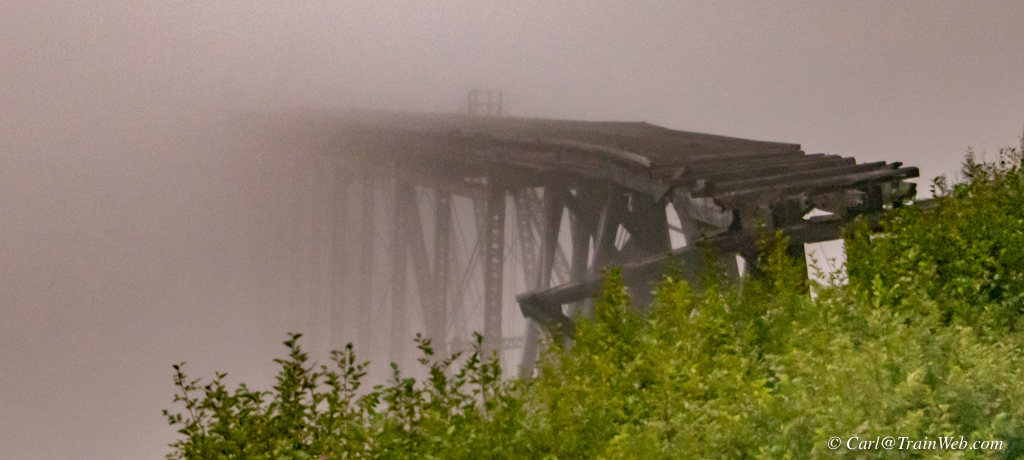
"Ghost Bridge"
Steel Bridge was constructed in
1901 and was the tallest cantilever bridge in the world. Used
until 1969. Since, it has been replaced with a new bridge and tunnel a few
feet farther.
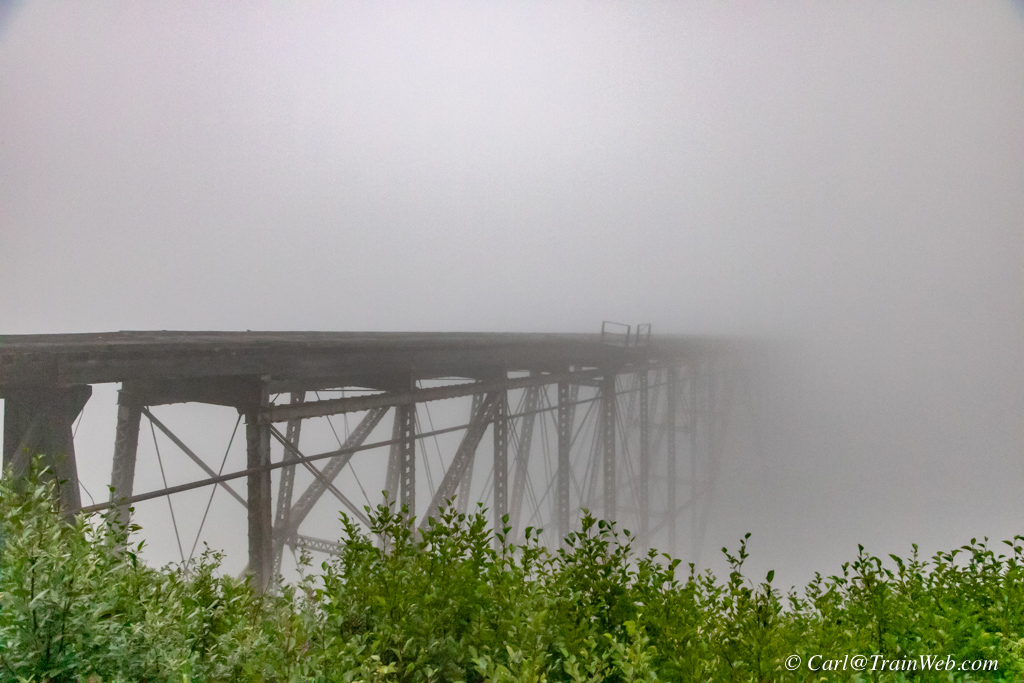
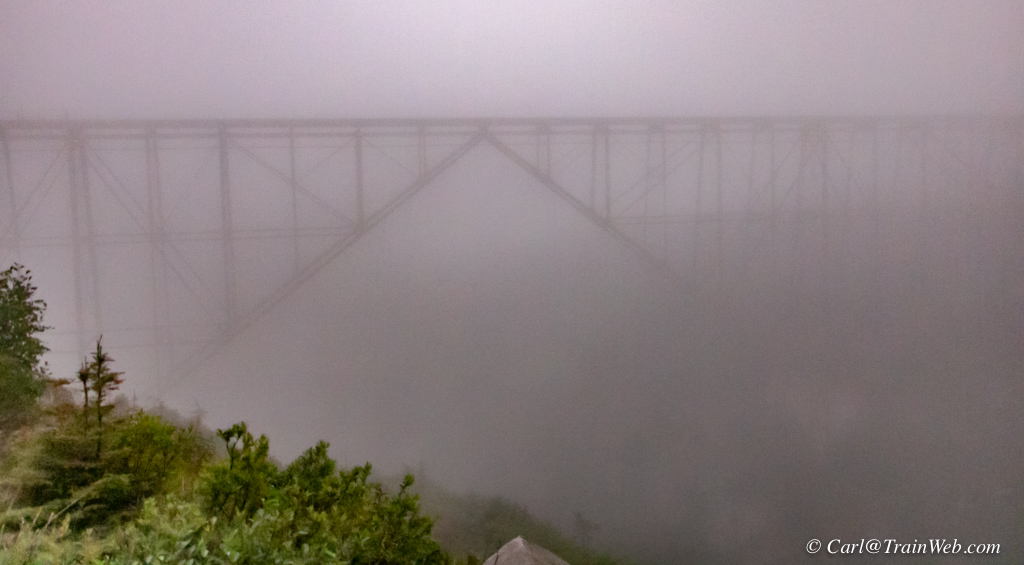
A good thing about having two rides past this bridge in two days is
that the next day there was not a cloud in the sky. Matthew said
he liked this view of the bridge best.

In 1969 this 675-foot tunnel was driven through the mountain and a new bridge was built to replace the steel bridge.
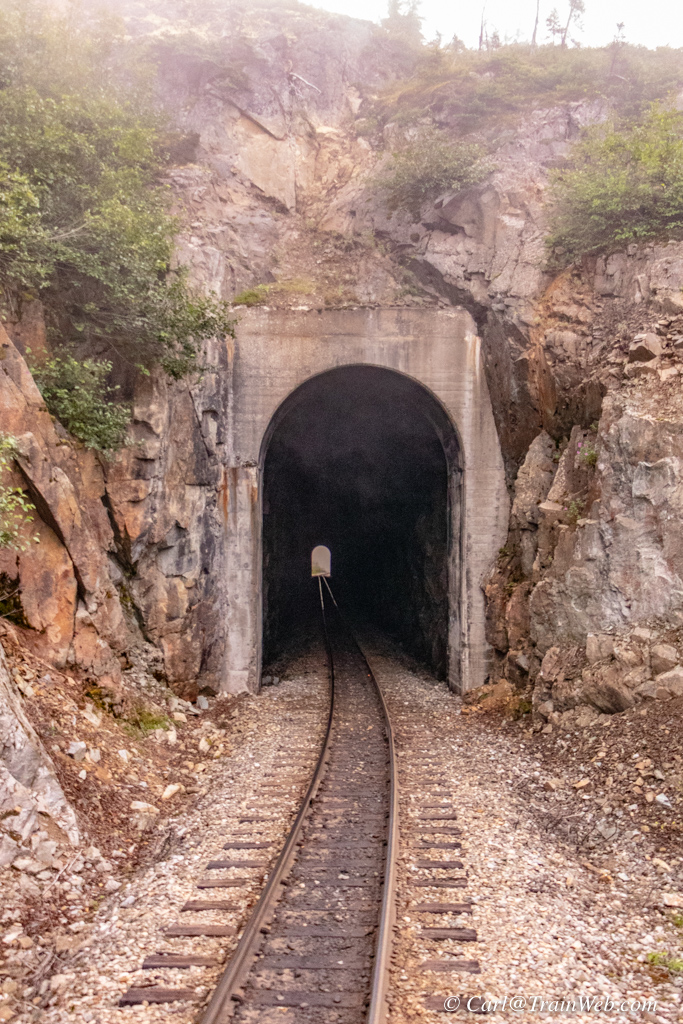
Having been blasted straight through, this 675-ft. tunnel allowed us to see all the way through.
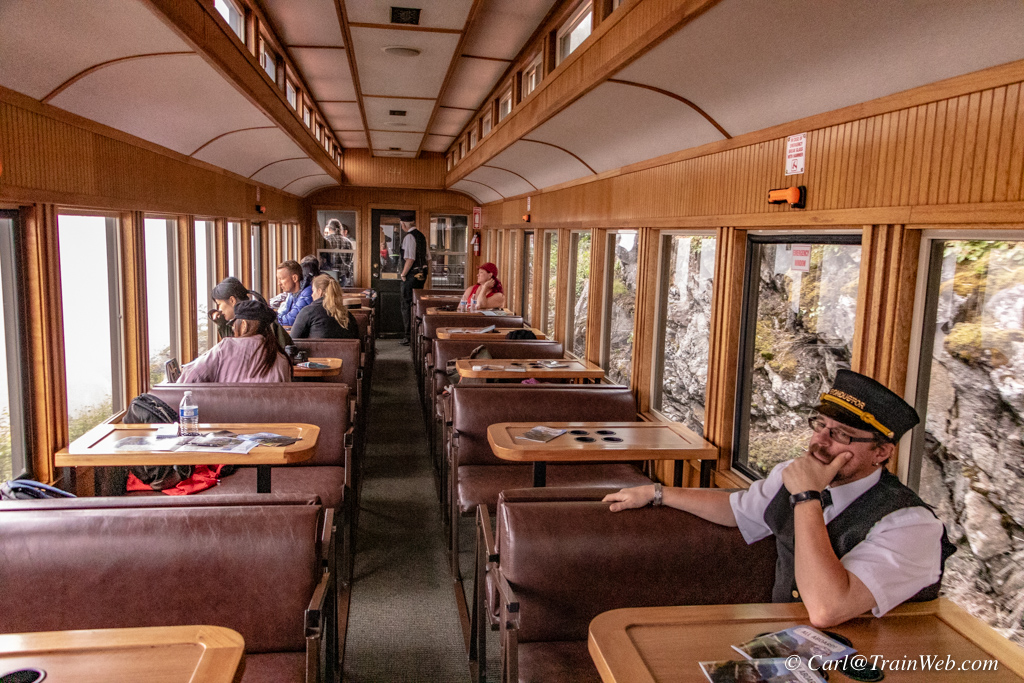
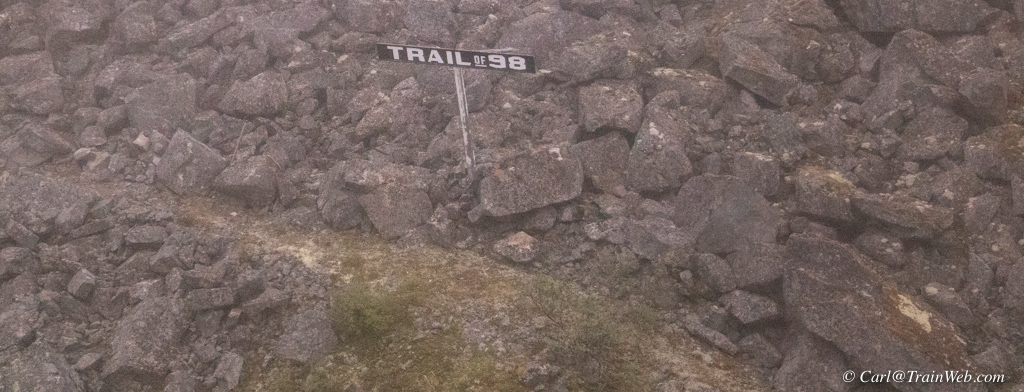
As the train emerges from the
tunnel, we see visible remains of the famous trail, a primary route from
Skagway to the gold fields. They say the trail was 7 feet wide since
gold seekers had to make many trips back down for more supplies to make
a ton
apiece of supplies before being allowed into Canada by the Mounted
Police who did not want unknowing gold seekers to die of starvation.
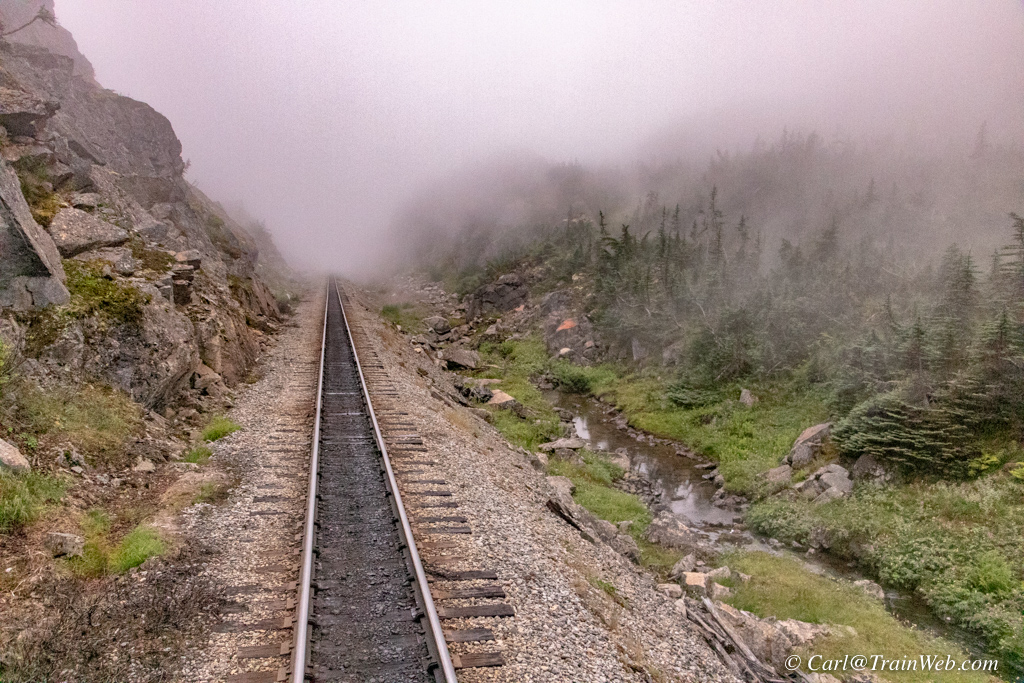
White Pass Summit 2,868 feet. Here at the US/Canadian border,
mounted police waved on stampeders with a ton of supplies needed for
one year in the north.

 Now above the cloud level, a water tank for watering the steam
engines still stands as does a wooden boxcar that might have been
shelter for section hands.
Now above the cloud level, a water tank for watering the steam
engines still stands as does a wooden boxcar that might have been
shelter for section hands.

Glacial water, fireweed, and above-treeline small trees near meadows.
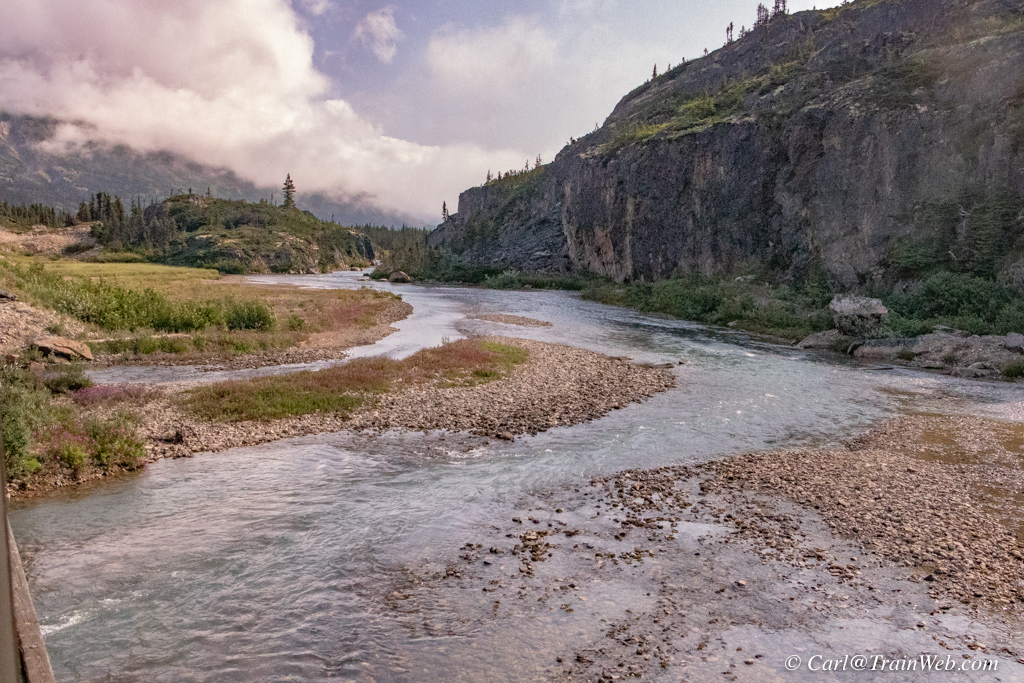
Meandering river between glacial lakes.

Canadian Customs officials leaving our train after checking our passports at Fraser.

Fraser, British Columbia, Canada, a transfer location for motorcoach connections to the Klondike Highway.
Notice the water spout for steam engines. Water was heated in winter to keep it from freezing.

Matt spotted this moose with twin calves coming out of a lake.
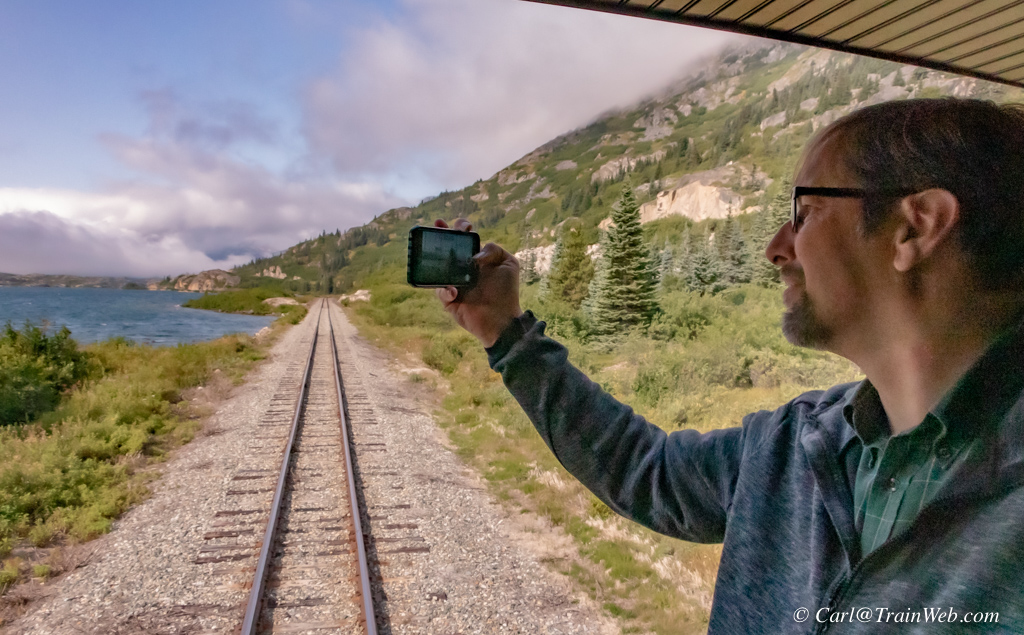
Matt used his iPhone for videos from the platform of the miles and miles of beautiful scenery.
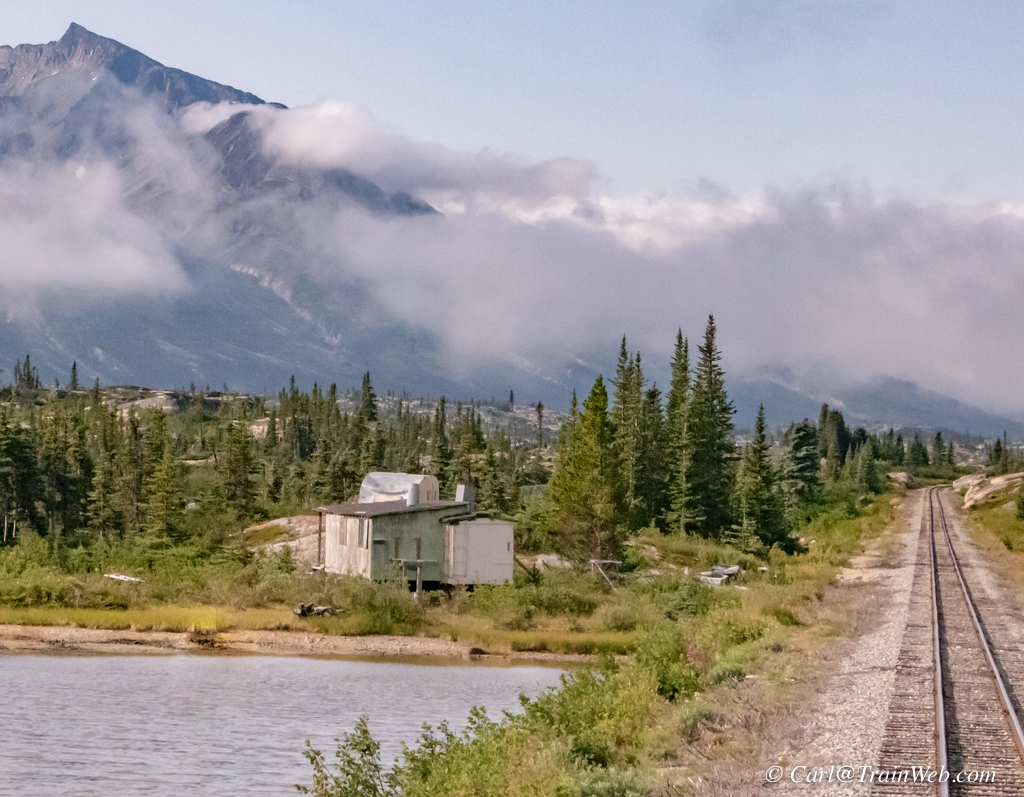
No evidence of
man except the railroad and highway. Here is a railfan's
dream home with lake view out the back and train view out the
front. The addition to the boxcar seems bigger than the boxcar
itself.
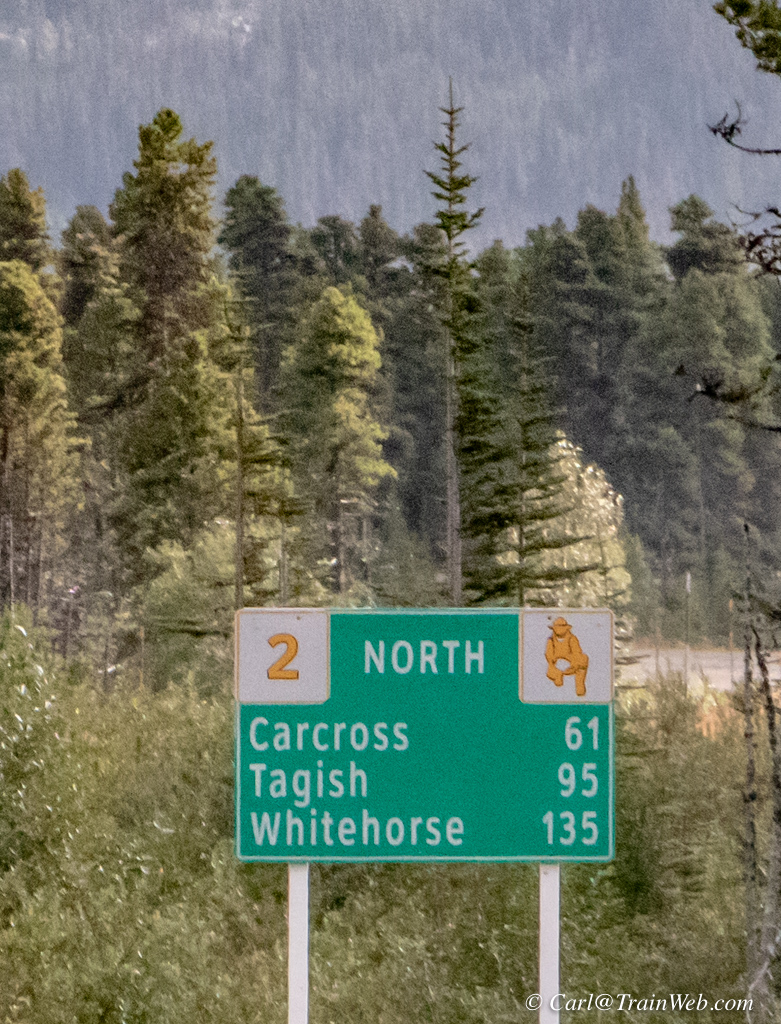
The railroad crosses Klondike Hwy. 2 with its mileage to points north.
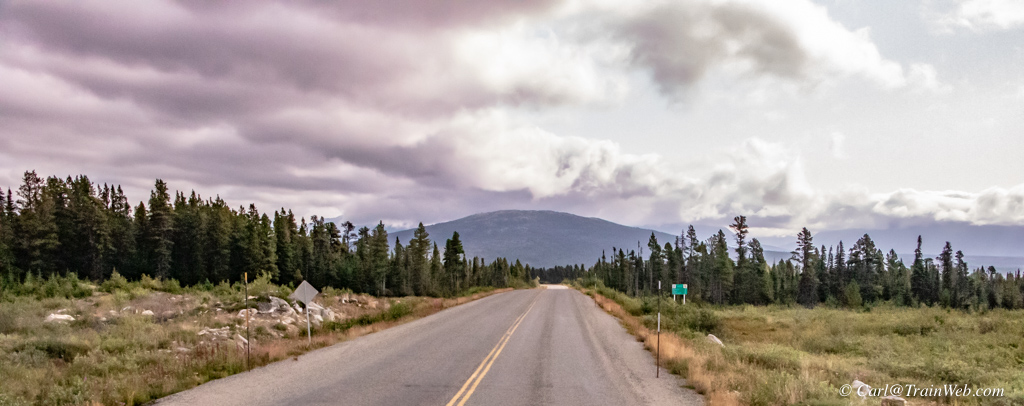
We cross Klondike Hwy. 2 at Log Cabin, Yukon Territory, Canada.
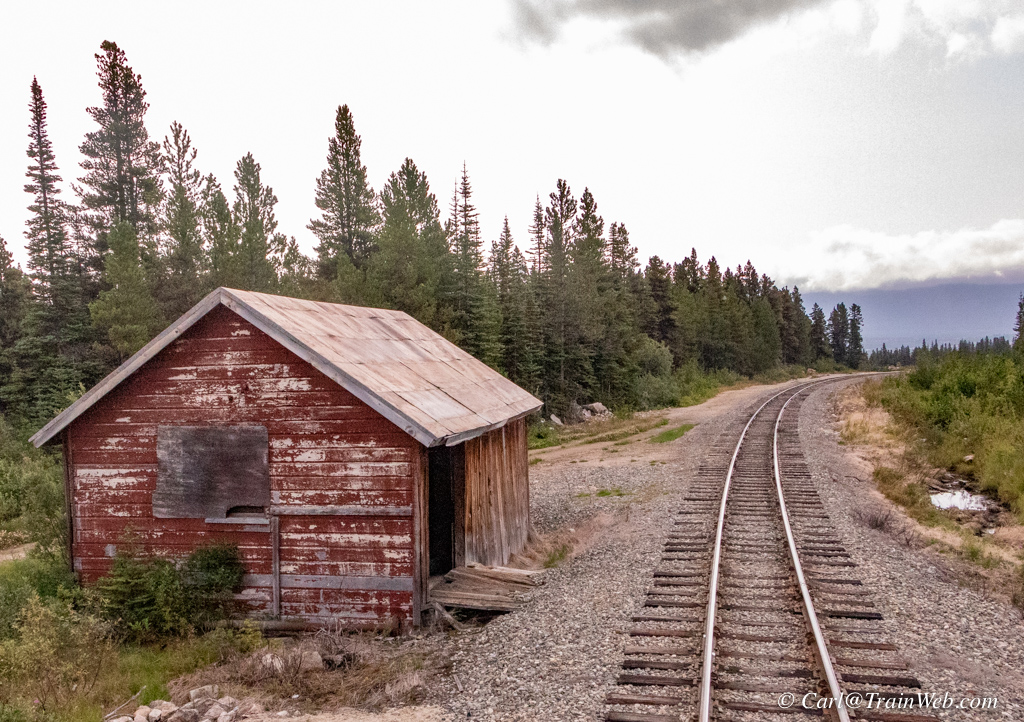
Maintenance-of-Way worker's weathered equipment shed with ramp for rolling in their speeder.
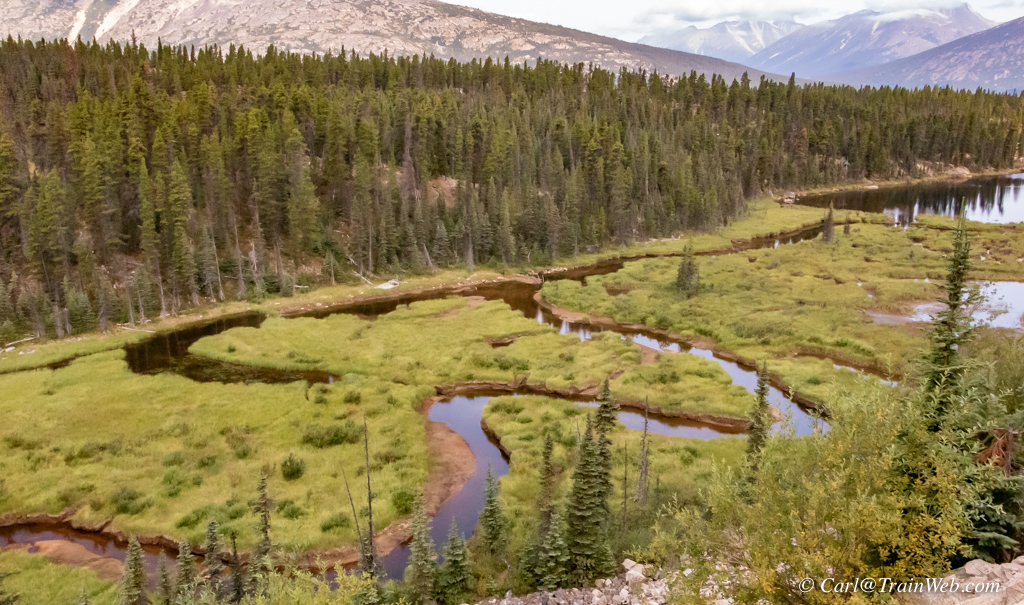
Meandering river, a good place to look for moose.

Rare sand dunes along the route.
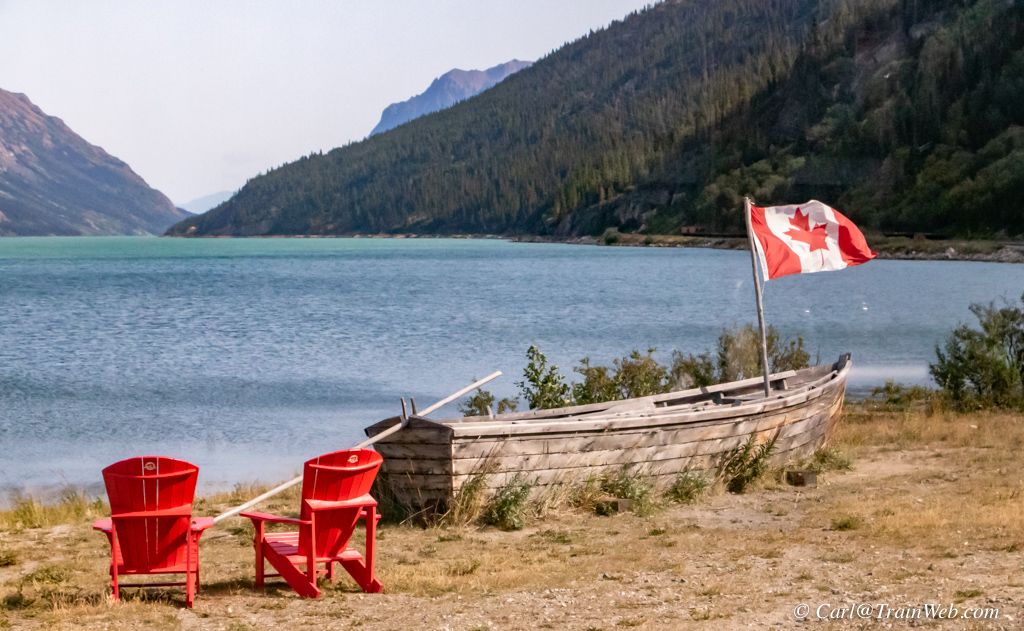
Bennett Lake and replica of the boats built here in the winter of '88
and '89 for crossing in the spring thaw of May 29. Bennett was
the largest tent city in the world with 10,000 residents during that
winter of boat building. 5,000 boats left and the city
became a ghost town except for the church. The train tracks
reached Bennett July 6, 1899.
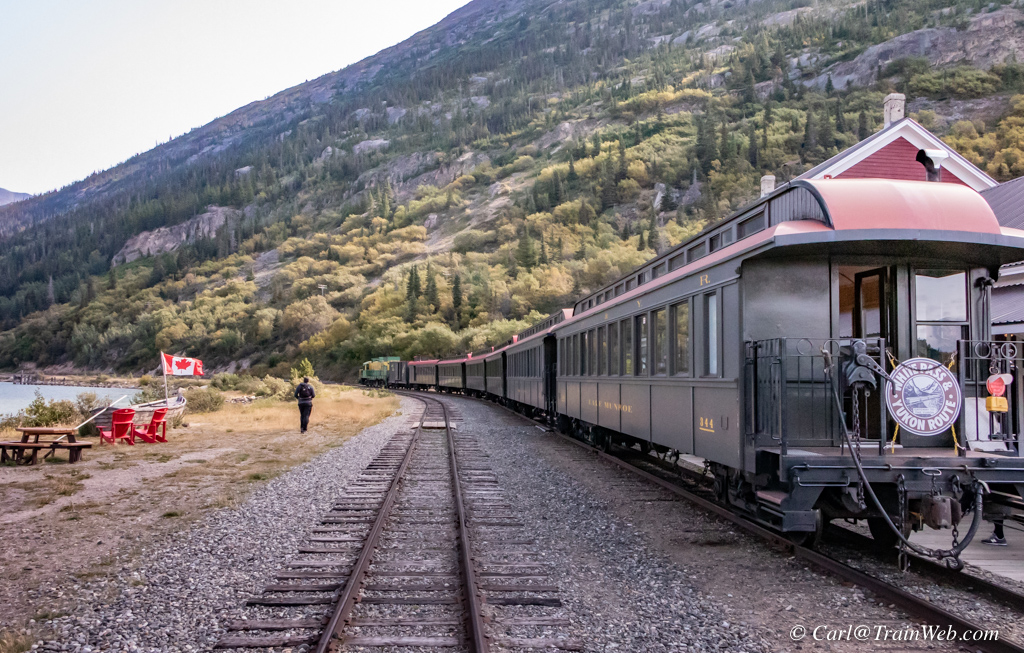
Enough time at the Bennett Station to visit the museum or walk to the church.
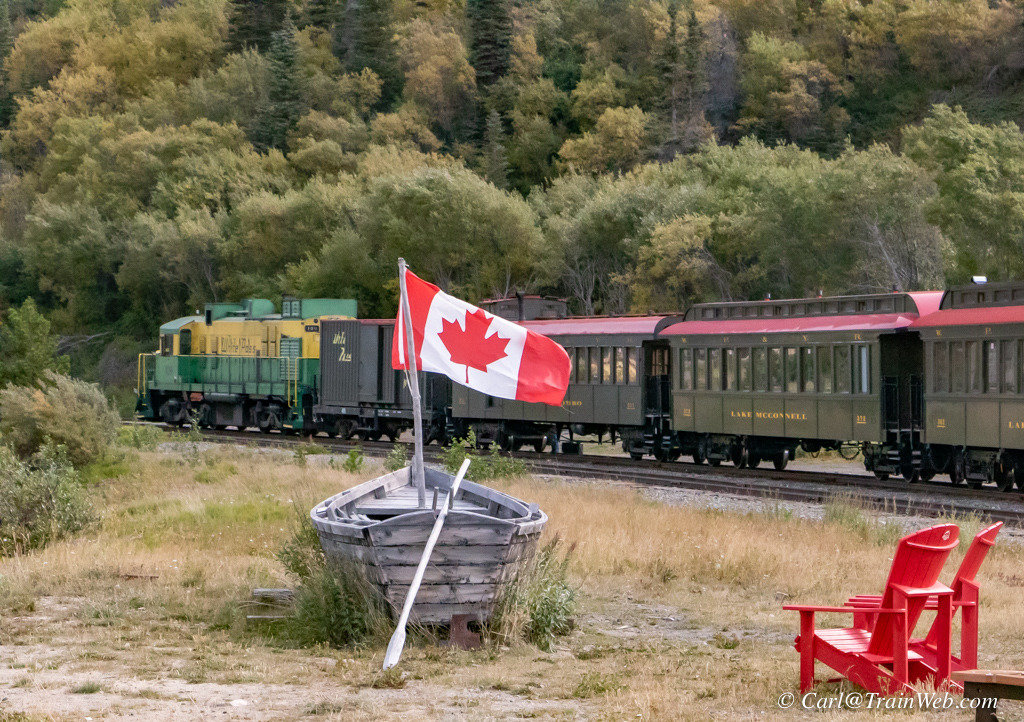

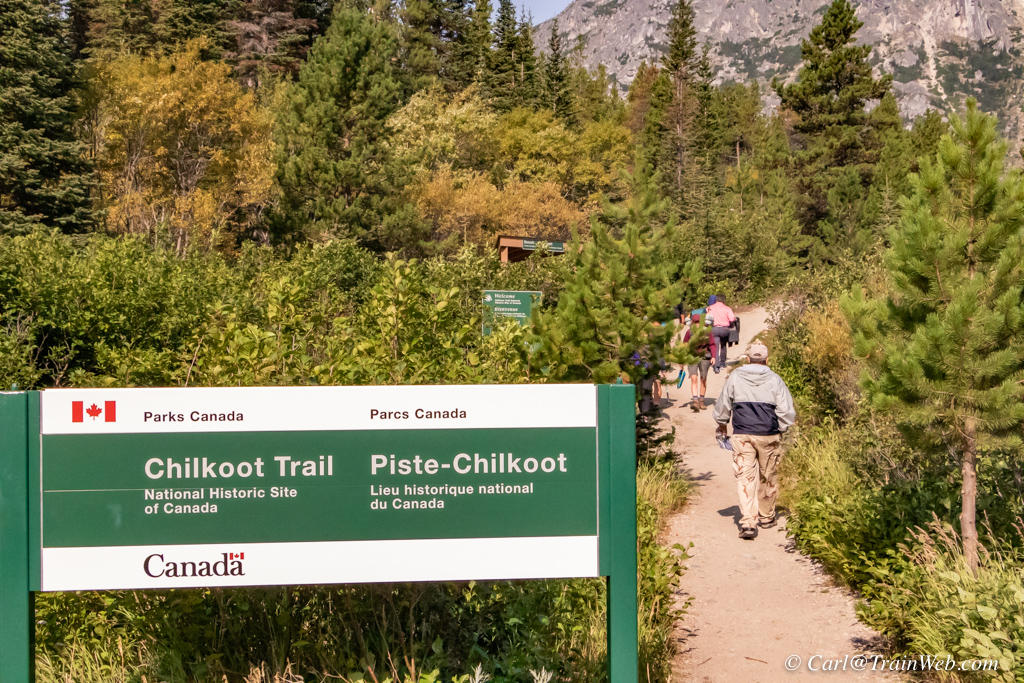
Chilkoot Trail ended here at Bennett as did the Chilkat trail the
RR followed. We walked a few yards on the Chilkoot Trail to the
St. Andrew's Church.

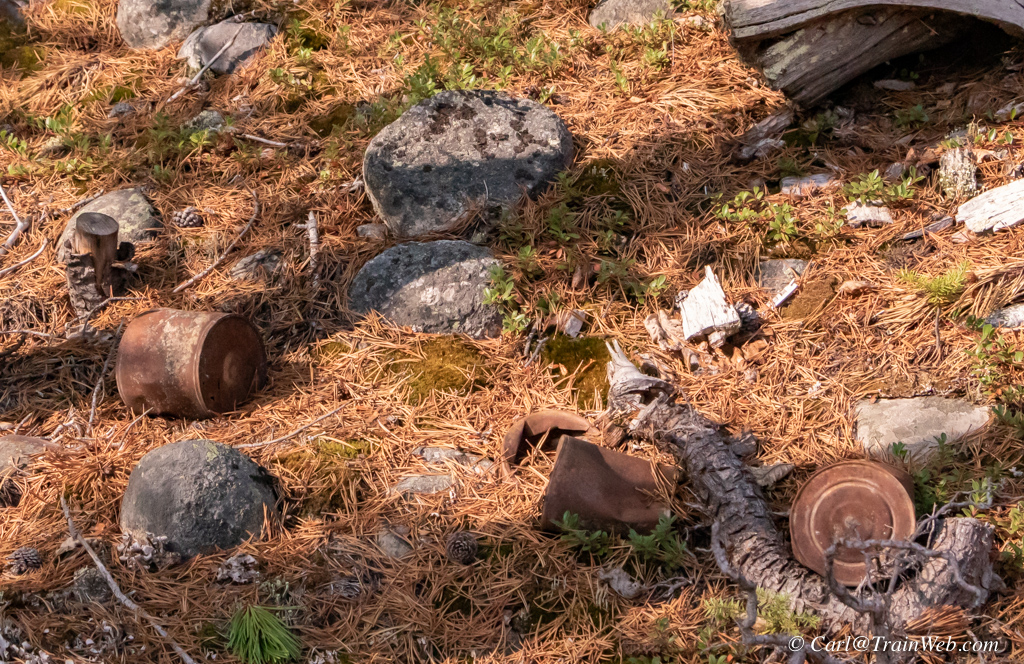
We were told not to pick up even tin cans because they were considered artifacts.
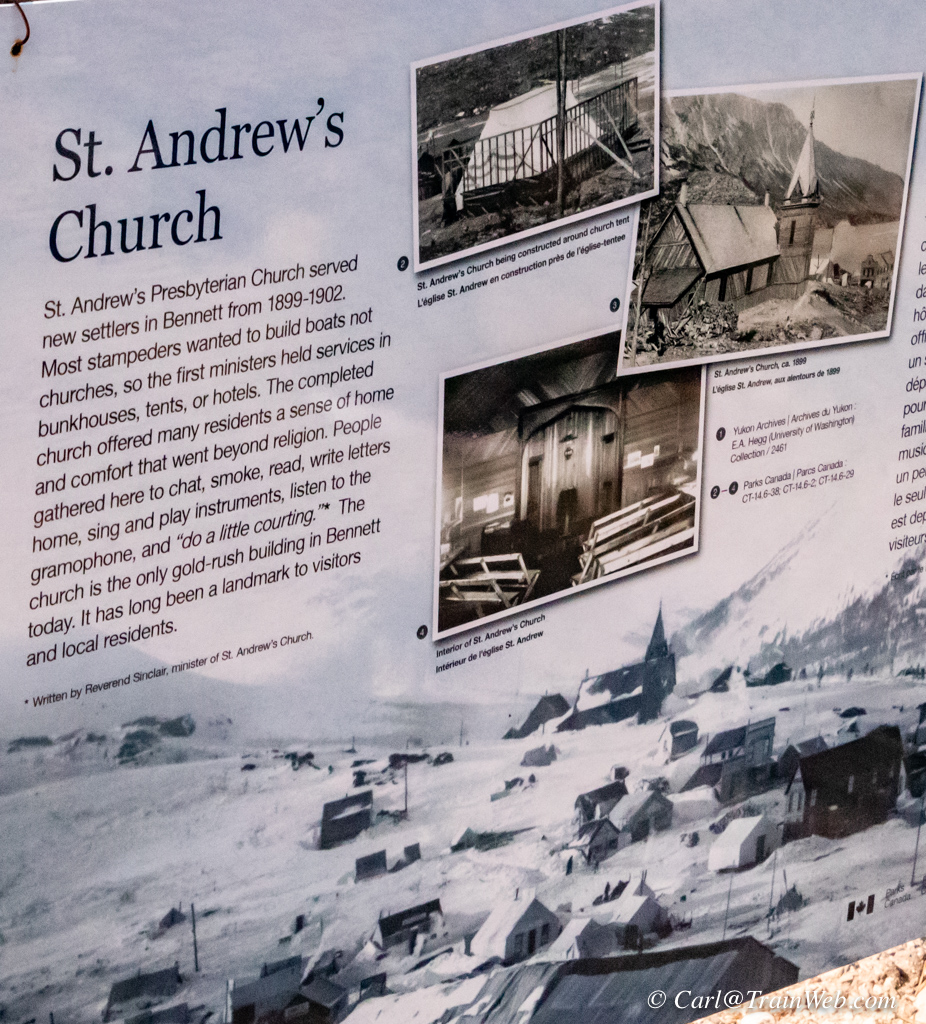
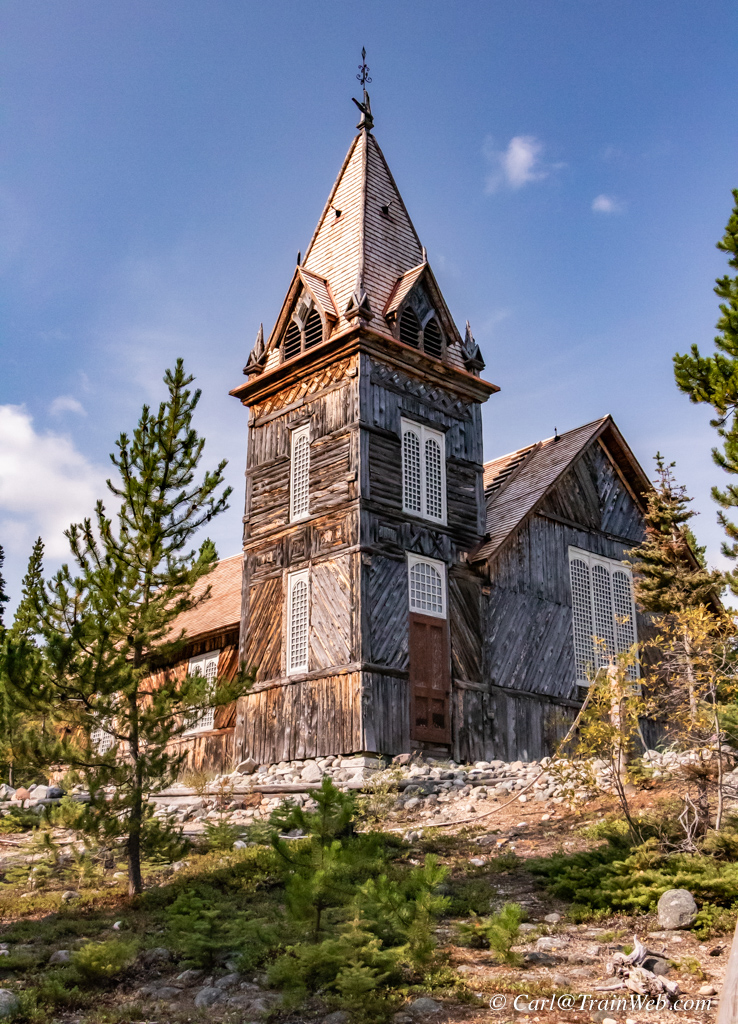
St. Andrew's Church at Bennett, Yukon, Canada
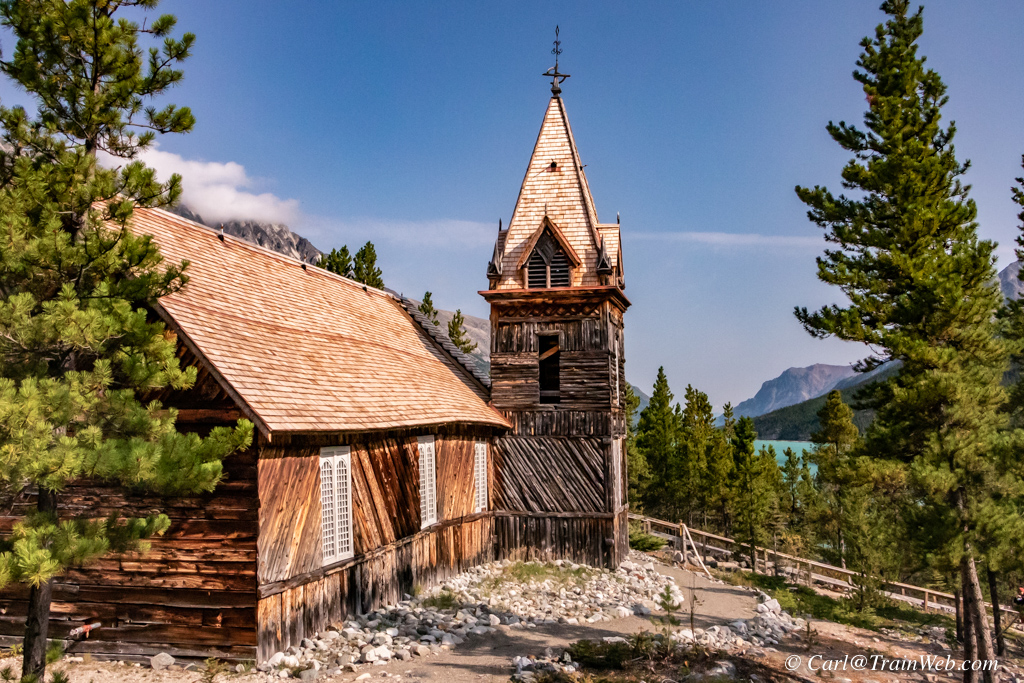
St. Andrew's Church and glacial green Lake Bennett.


Through a knot hole I got a shot inside the church, not what we expected.
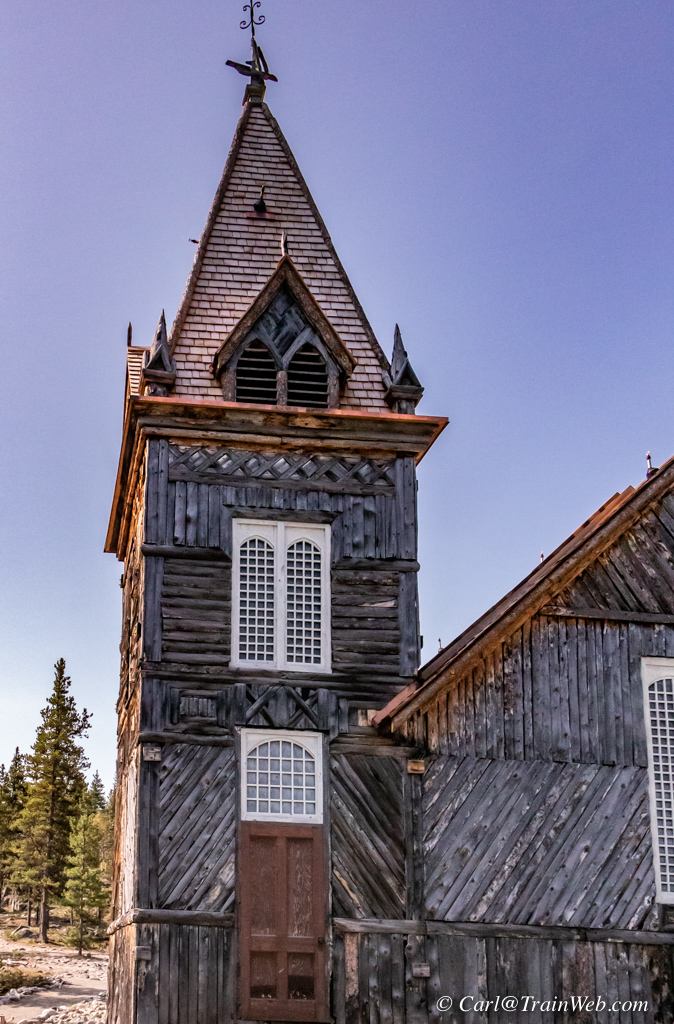
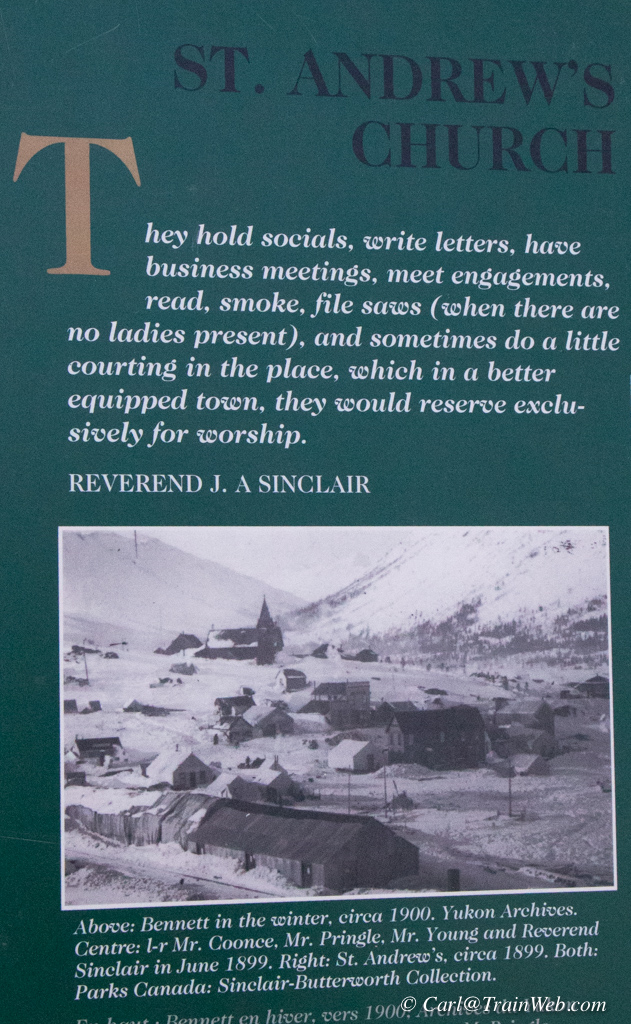

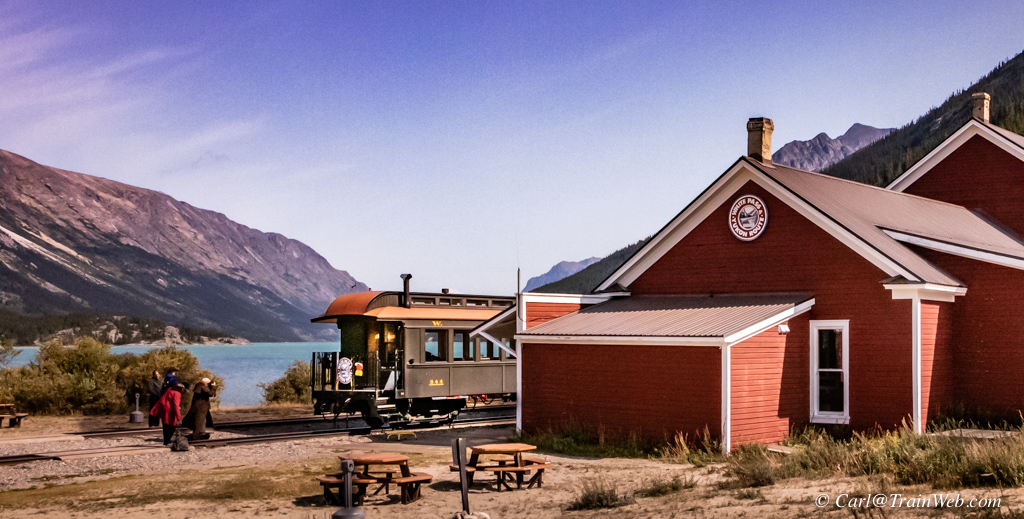

St. Andrew's Church dwarfed by mountains and beautiful clouds.

A quick look inside the museum shows what I presume is an '89er and his ton of goods.

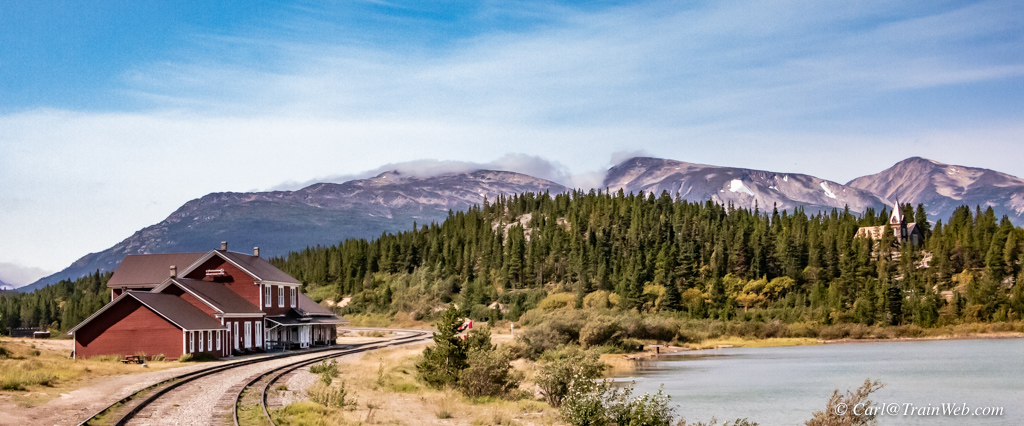
Looking back from the rear platform, or coming from the north, you can
see both the Bennett Station and St. Andrew's Church and the south
shore of Lake Bennett.

My favorite shot of the Bennett Station from the platform of the last car of the train as we headed to Carcross.

Pennington Station was for rail crews. Also the sharpest curve in the railroad called Guardrail.


British Columbia/Yukon Territory Border
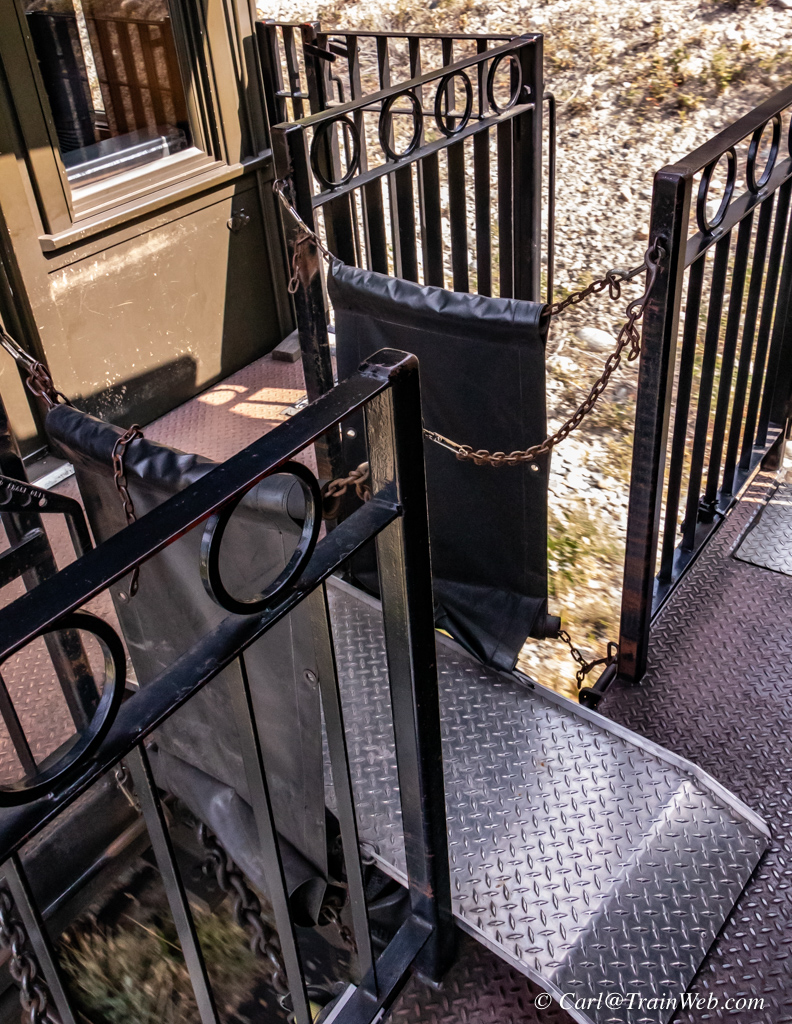
There is a safe walkway between the cars, but you are asked not to change cars.

Each car has a platform in front and back, so I went to the front
platform to take a photo of Matt on the back platform with Yukon
scenery as a background.
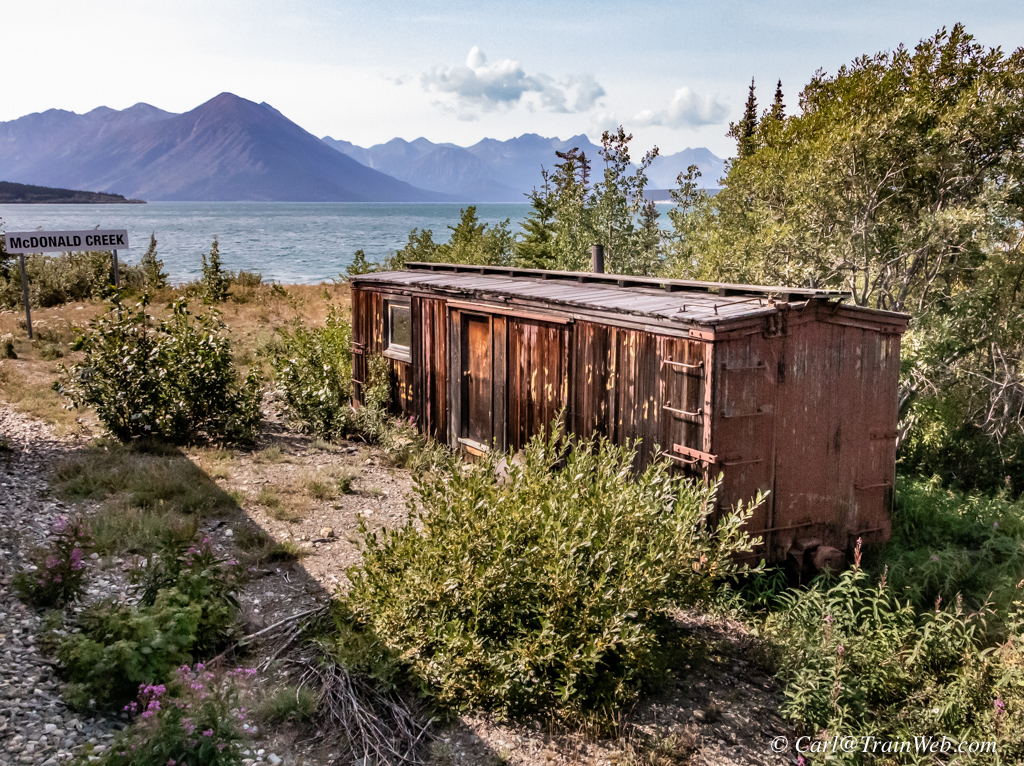
Another boxcar crew shack at McDonald Creek on Lake Bennett
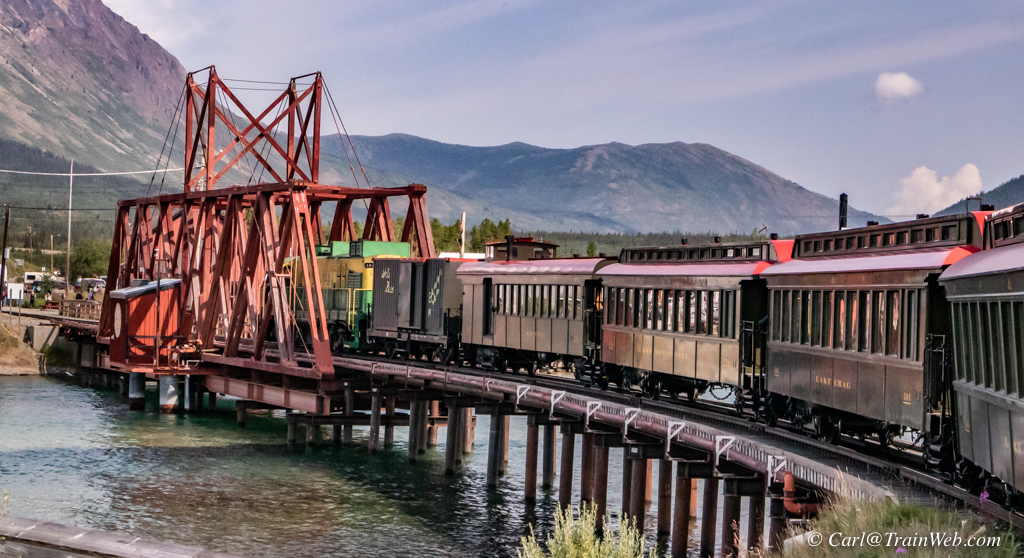
Twenty-seven miles north of Bennett, we enter Carcross, Yukon Territory, Canada, our train journey's end.

Carcross, Y.T., is an historic Yukon town with a gold rush general
store, the steam engine Duchess, and a WP&YR train station
visitors' center.

FROM THE SIGNAGE ON SCENE:
THE DUCHESS
The little engine known as the DUCHESS was once part of a matched set.
She and her partner, the DUKE, were built in September 1878 for the
Dunsmuir and Diggle Company.
For a time the two little locos hauled coal for the Wellington Colliery
Railway. The DUCHESS also burned coal at that time, although she was
converted later to wood and later still to oil.
White Pass bought the little engine in 1899 and put her to work on the Taku Tramway the following year.
Appropriately enough the Taku Tram was a miniature version of a
railway, only two miles long, which connected Tagish Lake with Atlin
Lake.
Tourist excursions operated from Carcross to the town of Atlin, British
Columbia, and the tram was a necessary link between the two rail
systems. Tourists could travel south from Carcross on a sternwheeler as
far as Taku City, where they would disembark and board the small car
pulled by the DUCHESS. They would then be taken across the two-mile
track east to Scotia Bay and board another steamer for the trip to
Atlin, on the far side of Atlin Lake. ‘Taken’ may not be the most
precise word, since passengers often had to get off and push. And since
there was no turntable at the eastern end, the return trip was made
going backwards.
The DUCHESS was taken out of service in 1919 and replaced with another
engine. She was moved to Carcross in the 1950’s and is now a popular
tourist attraction.
From: http://www.waymarking.com/waymarks/WM92E4_The_DUCHESS_White_Pass_Yukon_Route_RR_Carcross_YT

The train is turned and those who took the bus from Skagway to
Carcross, boarded for their trip back to Skagway via this great train
ride.
"Carcross" is derived from an Indian word for "great river".

Jacqueline Taylor-Rose, Manager of Marketing & Product Development,
who set up these excellent excursions for us. I asked if she had come up
on the train, but she had driven and would go on to White Horse for
supplies.


The Carcross Station has an excellent museum and gift shop. This restored speeder is part of the displays.
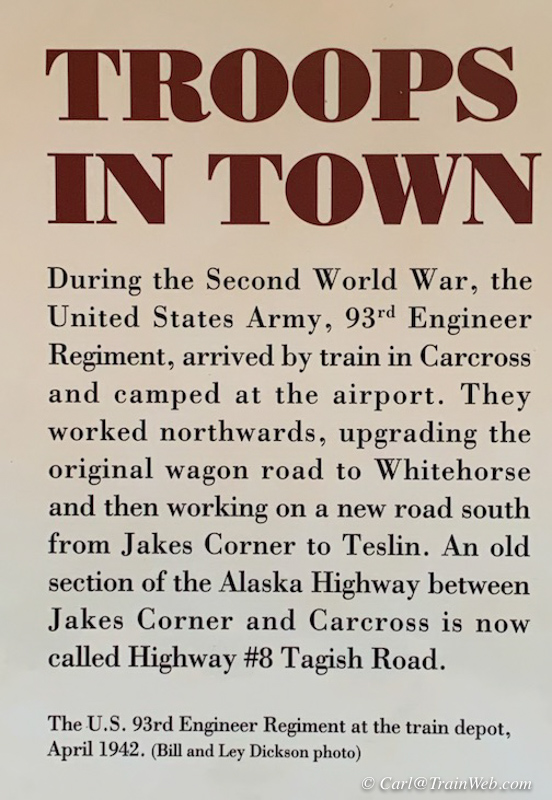



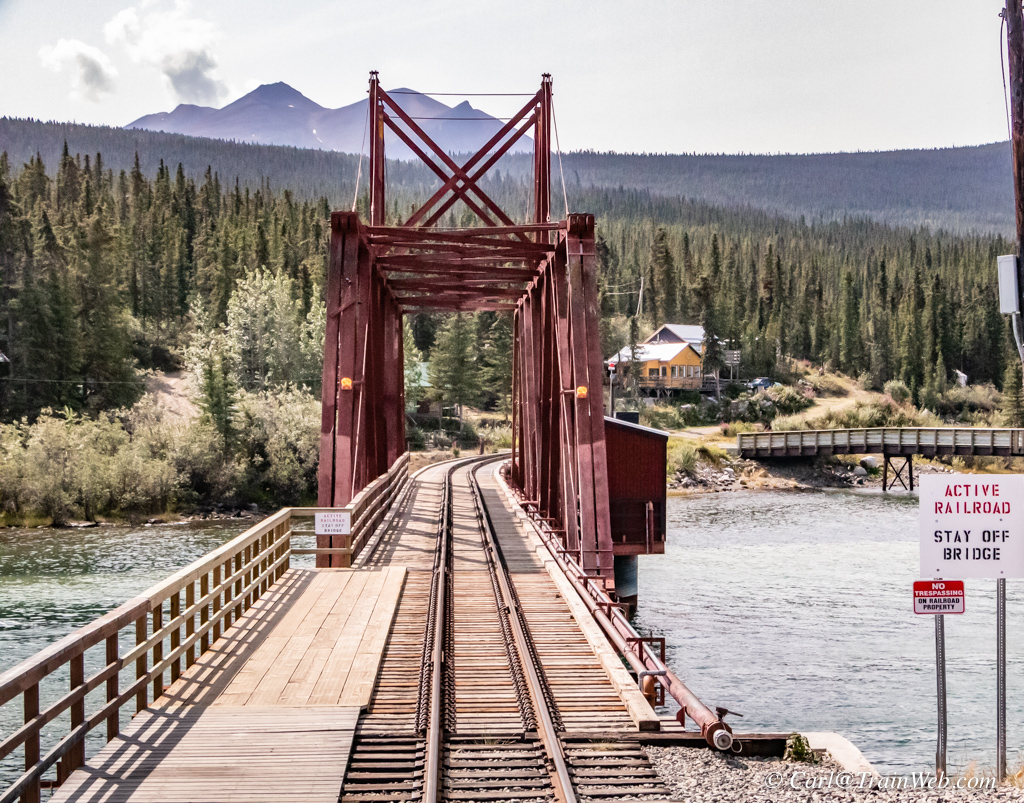
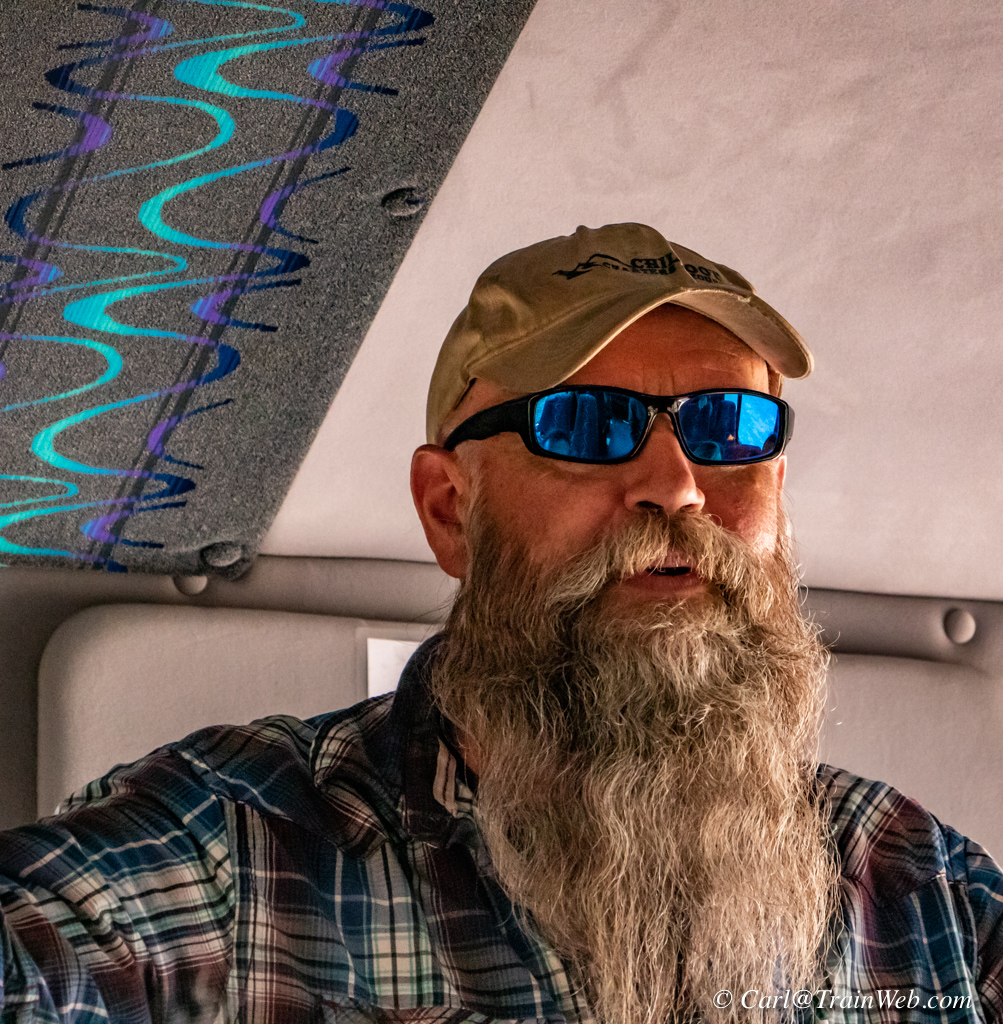
We boarded the bus with this driver we had met in Skagway.

We were taken a few miles north of Carcross before heading back to Skagway. Some local businesses in Carcross.

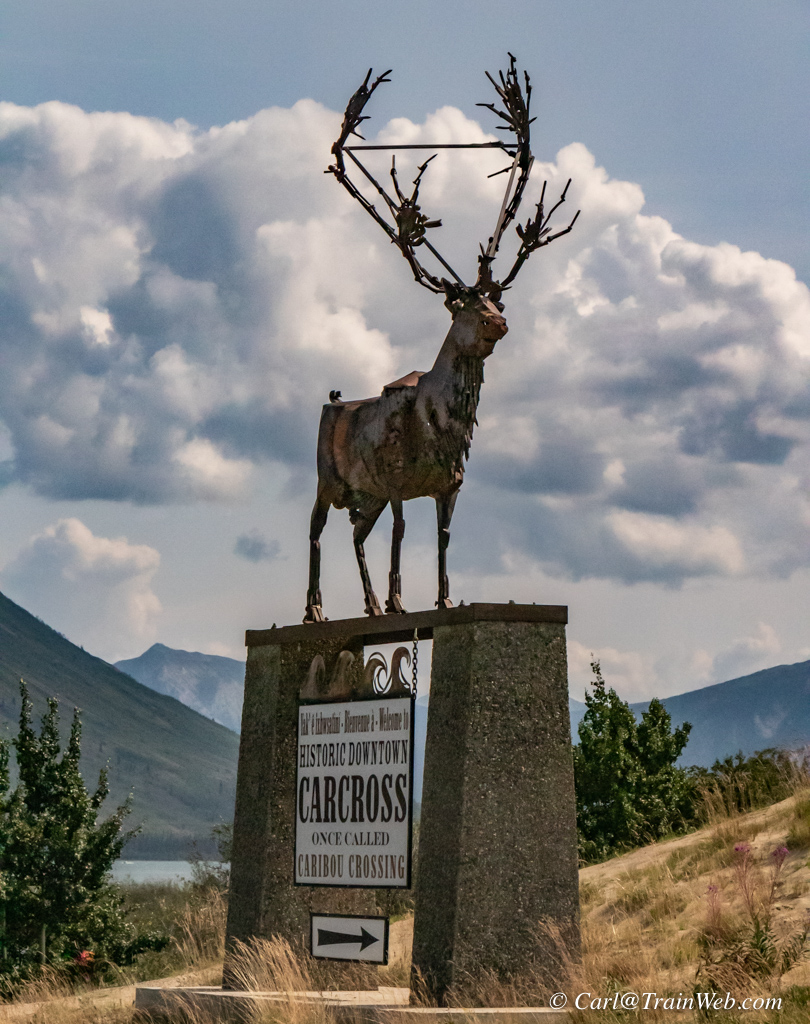
This sign on the north side of Carcross claims the name came from Caribou Crossing.
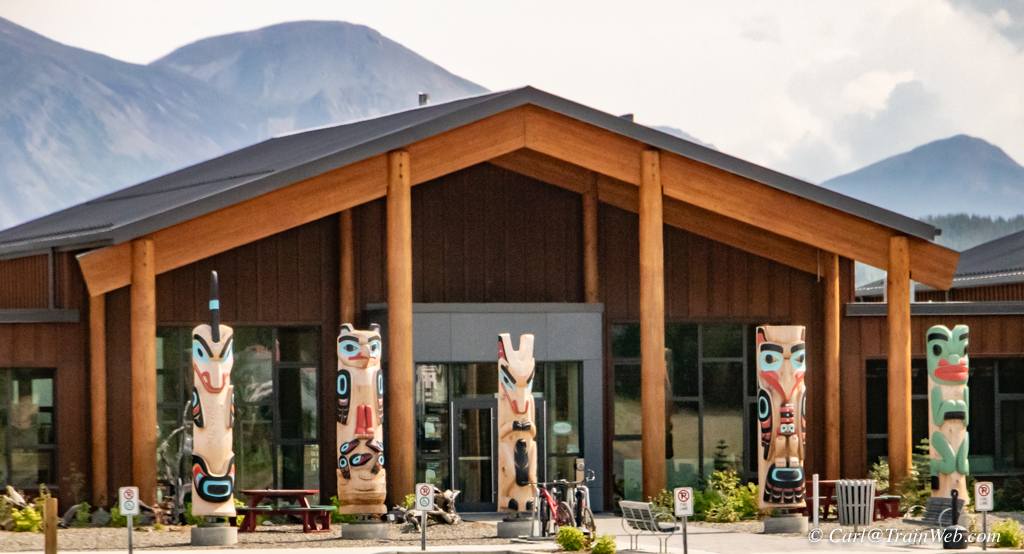
Carcross Tagish First Nation’s Learning Center.

A friend of mine, Katy Ramsey, challenged me to find the Carcross Desert.

Emerald Lake was the highlight of our short ride north of Carcross.
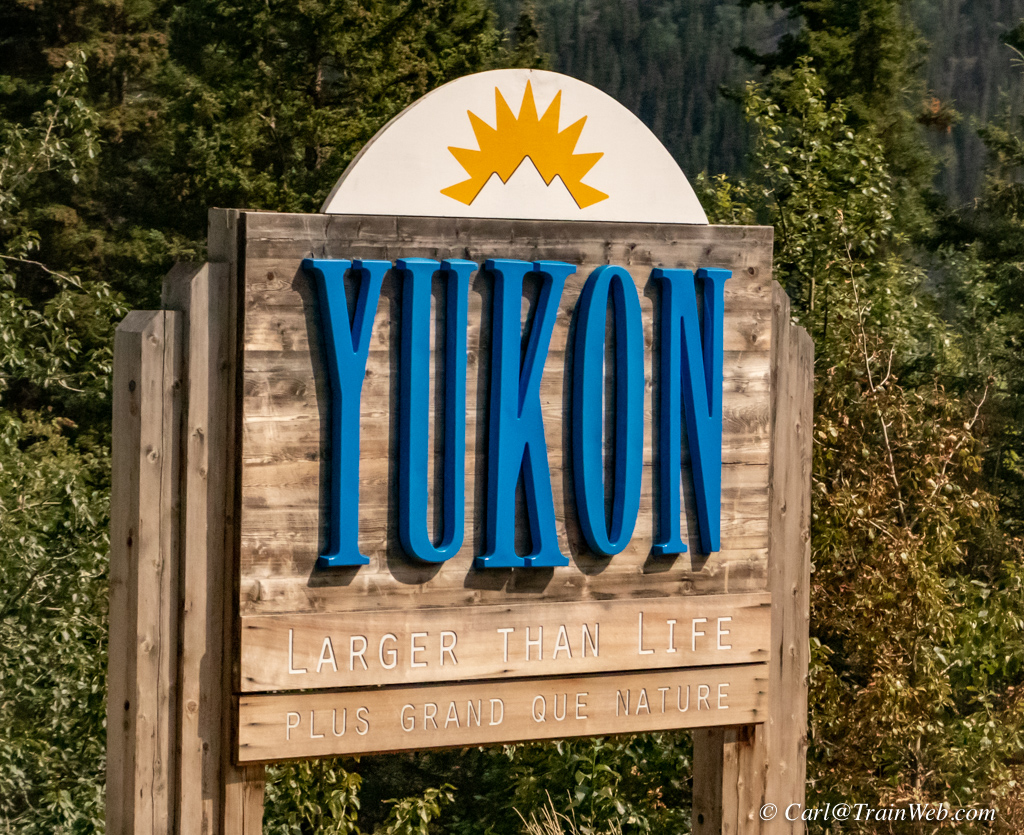
We passed the land-based Yukon sign like the one in Lake Bennett, as we went back into British Columbia.
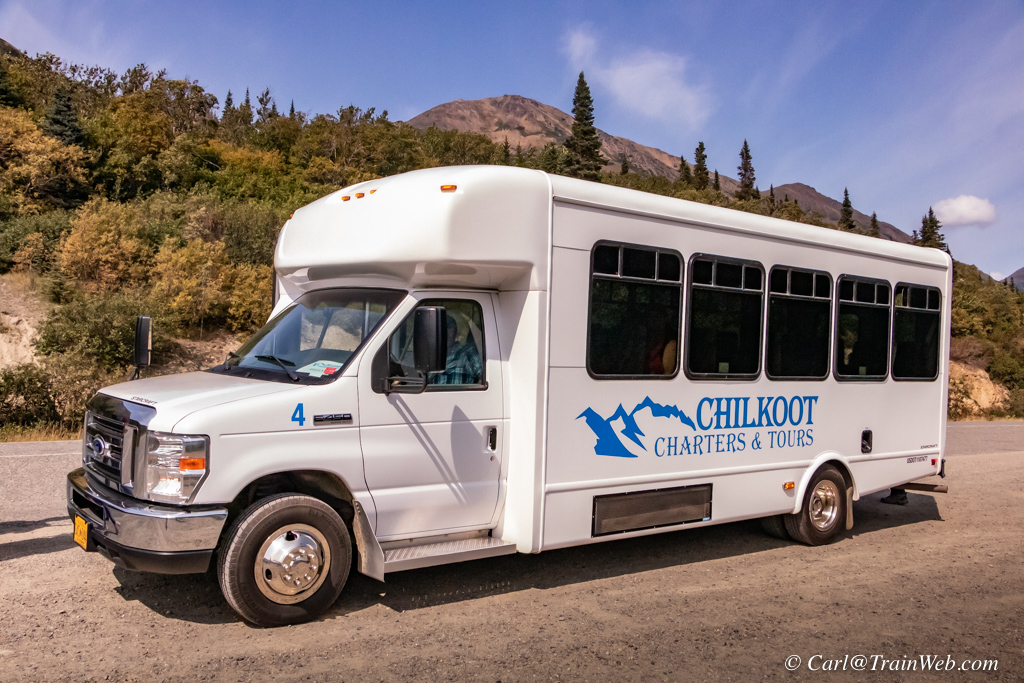
Our bus from Carcross to Skagway after our train excursion to Carcross.

Crossing the WP&YR on Hwy. 2 at Log Cabin.
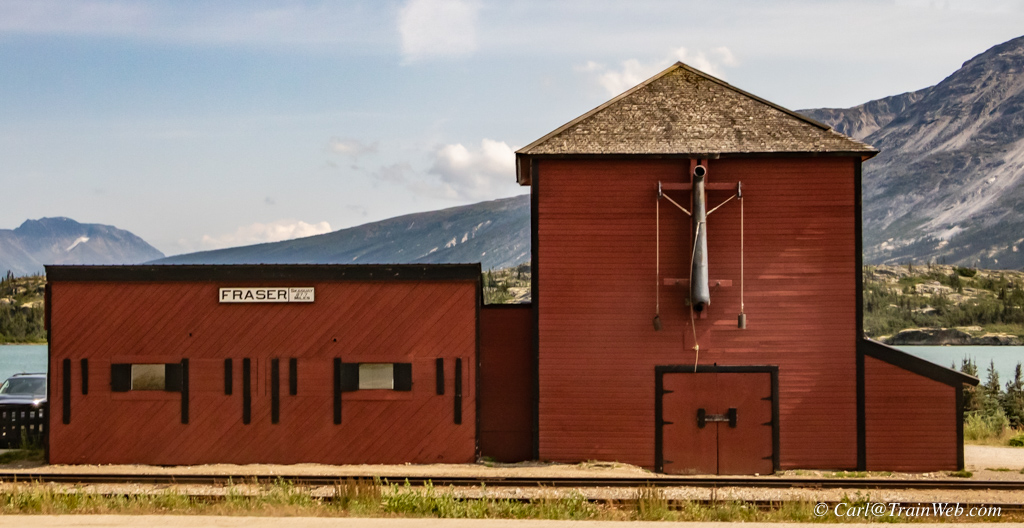
Fraser customs station and the insulated water tower for steam engine watering in the past years.
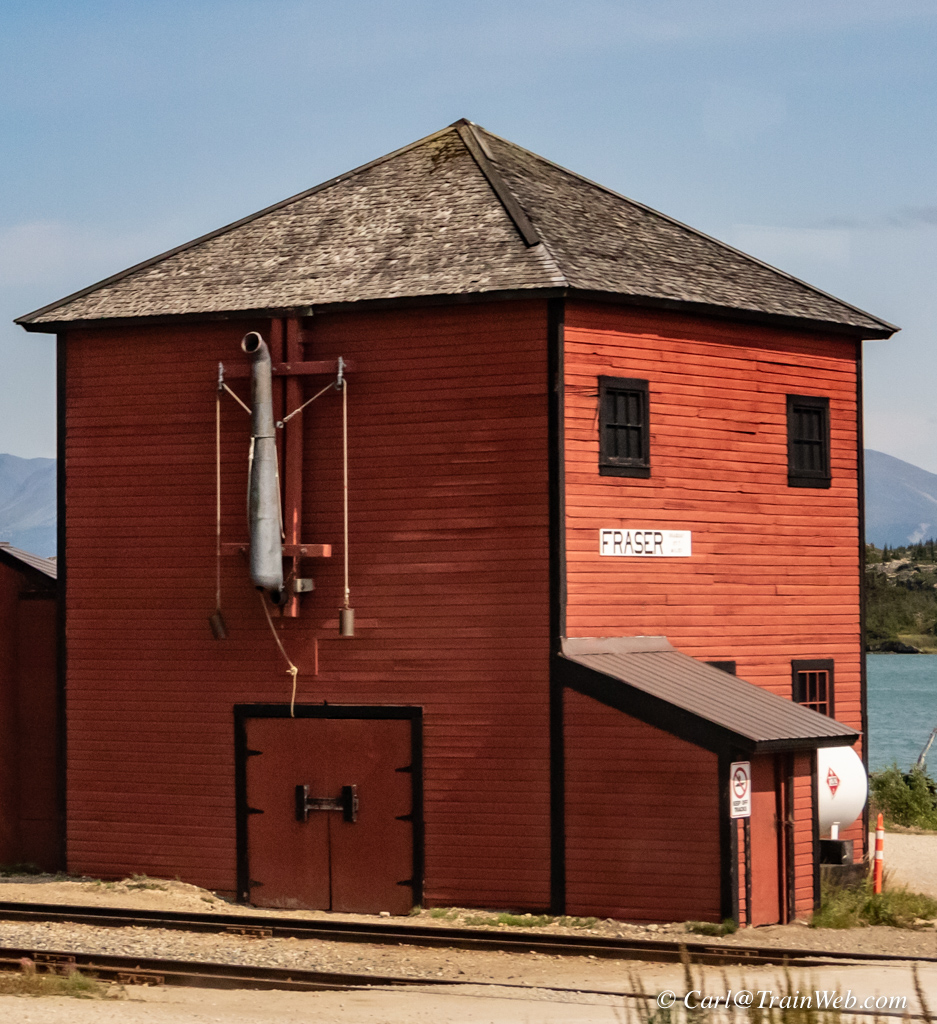
A closer look at the Fraser enclosed water tower.
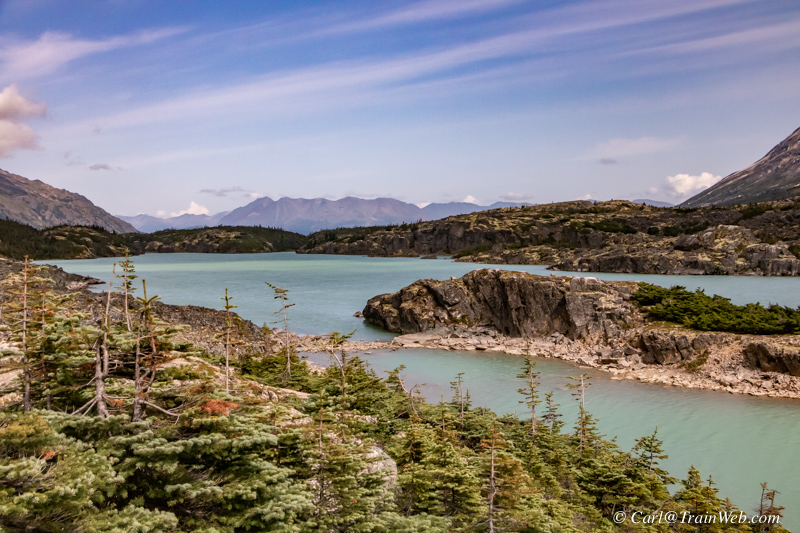
We made a few stops at scenic spots, this one at a glacial lake above the tree line.
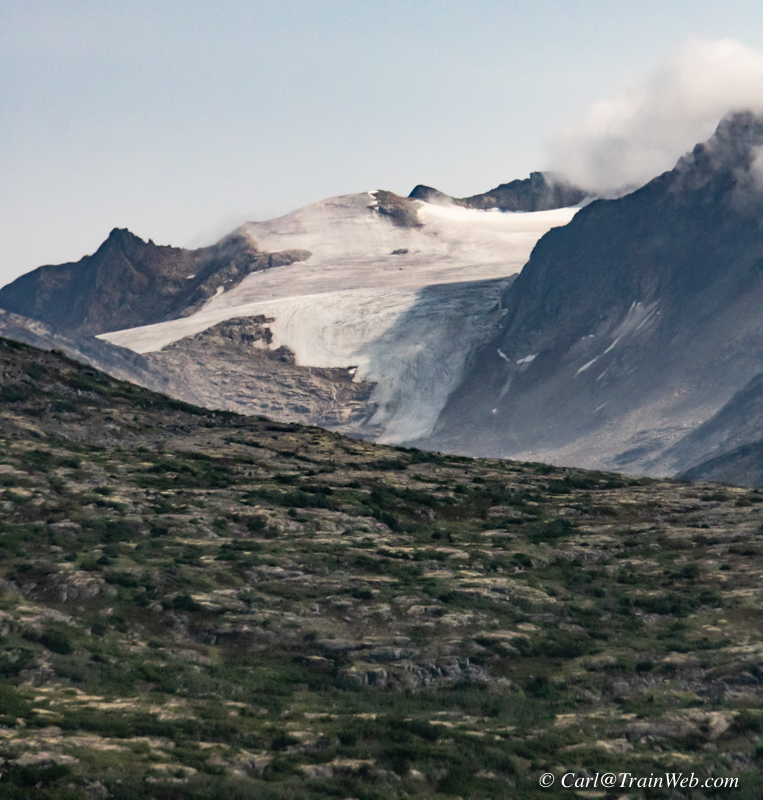
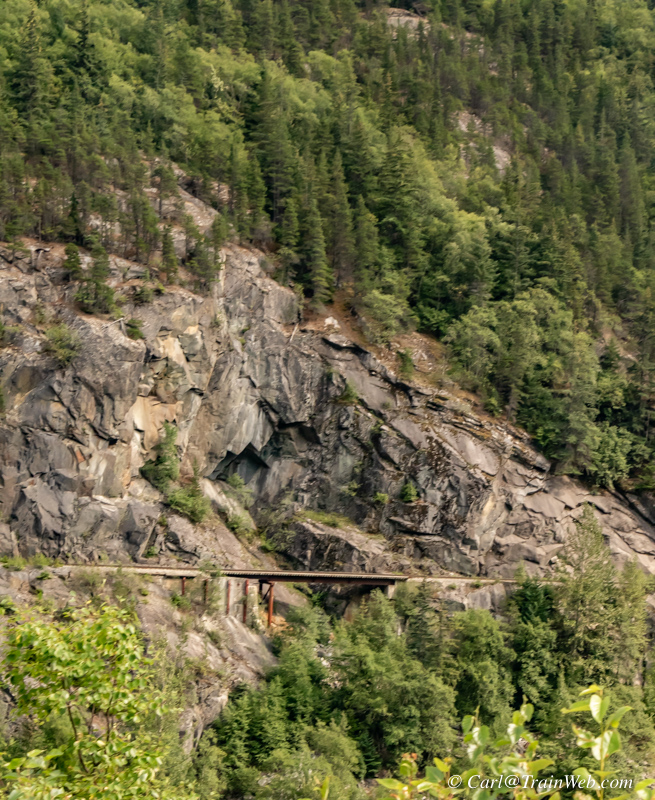
A view of the WP&YR tracks we had been on earlier in the day.
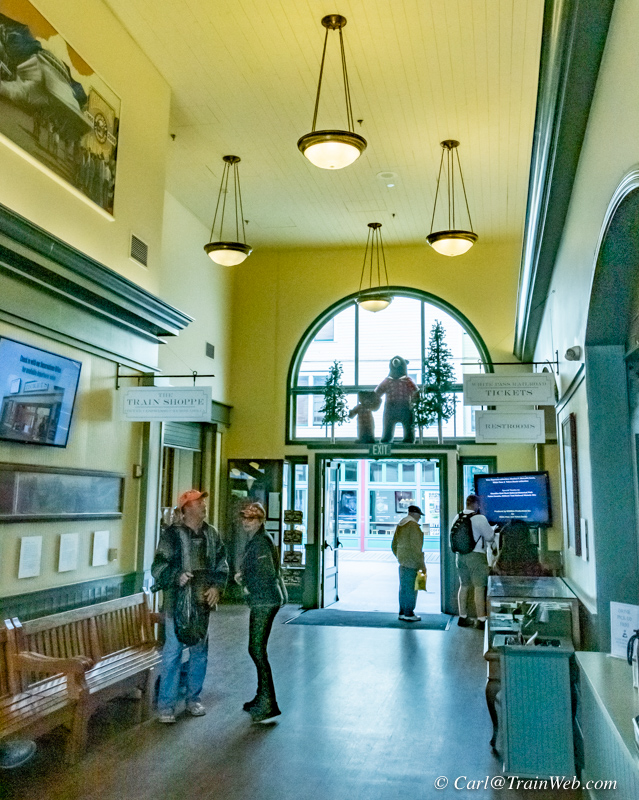
Back at the WP&YR Station, across the hallway was an excellent gift shop.


Between the ticket office and gift shop is this display, but I think it is missing a model train on the bridge.

The station waiting room has an excellent drawing of their 3 kinds of power.

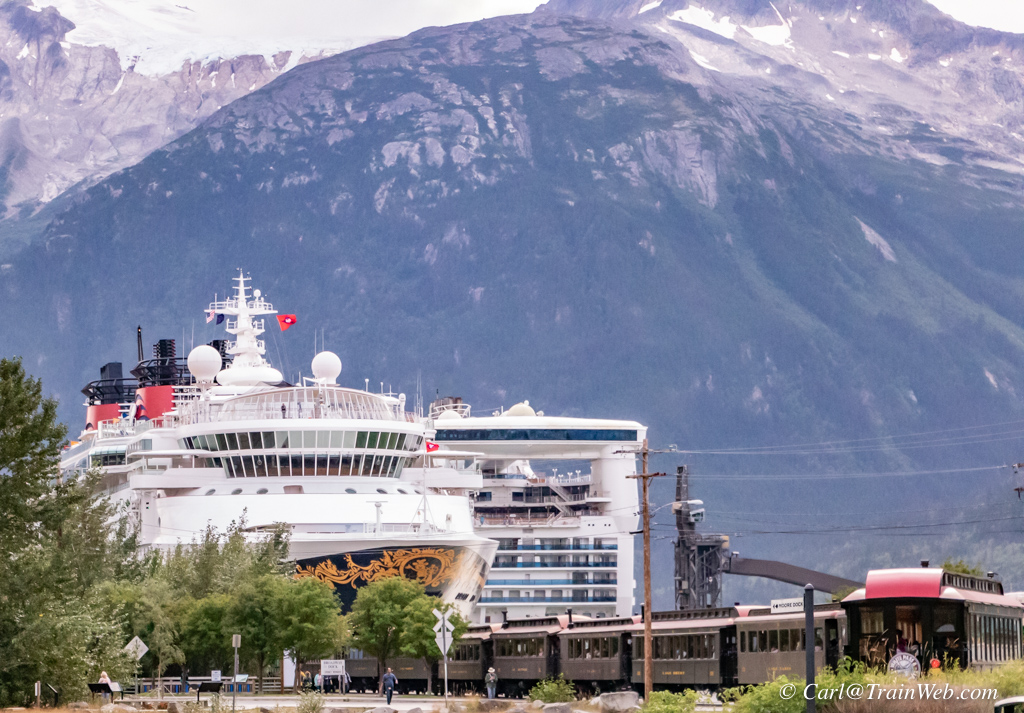
You can see how close the trains get to the cruise ships. This shot is from the Train Station.
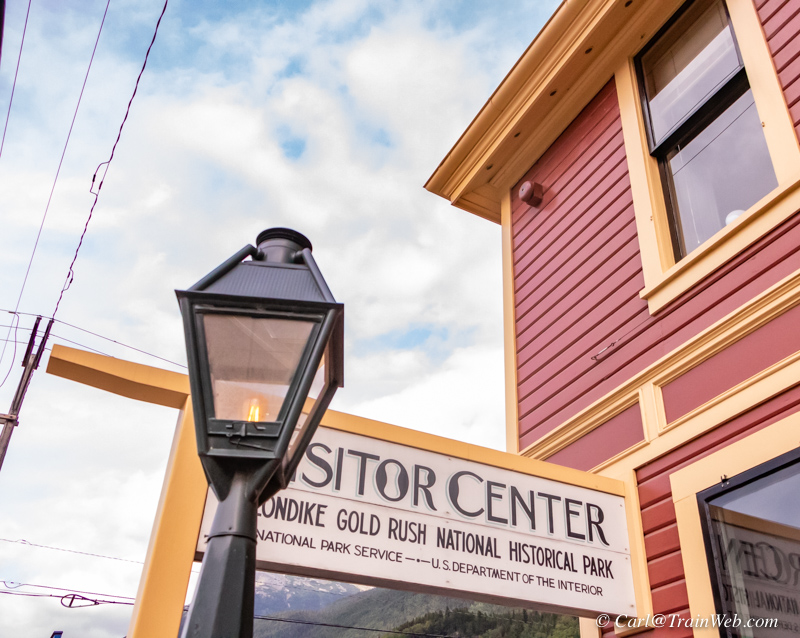
Next door to the gift shop is this excellent Visitor Center of the Klondike Gold Rush National Historical Park.
The Park has restored about 30 buildings in town, making it look good as new.

The Center has excellent displays, photographs, maps, and a video presentation.
Return to the
[ Table of Contents | Top of this Report | Introduction |
.
Our Second WP&YR Excursion:
